Conjugate Comprising Ligand And Ceacam5 Antibody Fab Fragment
Akaiwa; Michinori ; et al.
U.S. patent application number 17/420691 was filed with the patent office on 2022-03-31 for conjugate comprising ligand and ceacam5 antibody fab fragment. The applicant listed for this patent is ASTELLAS PHARMA INC.. Invention is credited to Michinori Akaiwa, Toru Asano, Hitoshi Doihara, Kazunori Hirayama, Junya Ishida, Yorikata Sano, Hiroki Shirai, Nobuyuki Shiraishi, Hiroki Toya, Tomoaki Yoshikawa.
| Application Number | 20220096653 17/420691 |
| Document ID | / |
| Family ID | |
| Filed Date | 2022-03-31 |





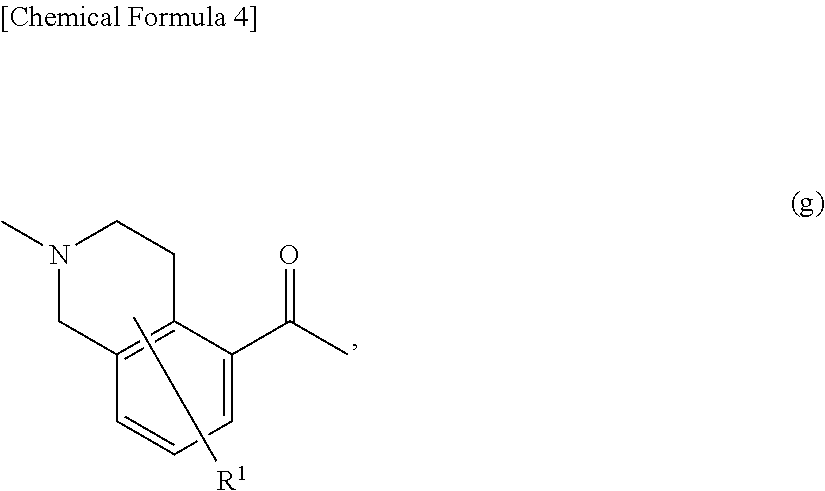





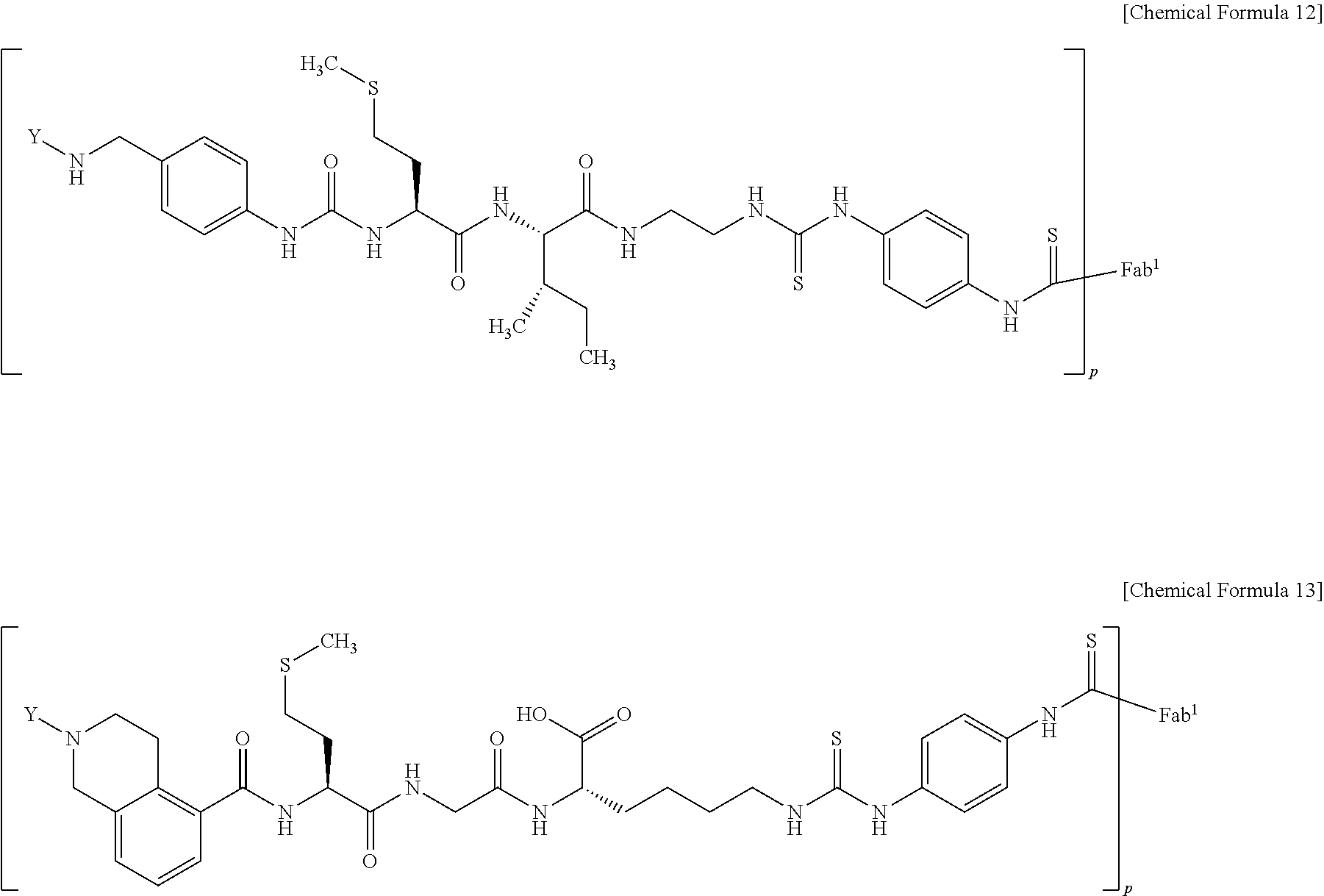
View All Diagrams
| United States Patent Application | 20220096653 |
| Kind Code | A1 |
| Akaiwa; Michinori ; et al. | March 31, 2022 |
CONJUGATE COMPRISING LIGAND AND CEACAM5 ANTIBODY FAB FRAGMENT
Abstract
Provided is a conjugate comprising a ligand, a spacer, and a peptide linker useful for an in-vivo diagnostic drug and internal radiation therapy, using an anti-human CEACAM5 antibody Fab fragment whose binding activity is not attenuated even by labeling with a metal, a fluorescent dye, or the like. A conjugate comprising an anti-human CEACAM5 antibody Fab fragment and a ligand, the fragment comprising a heavy chain fragment including a heavy chain variable region consisting of a specific amino acid sequence and a light chain including a light chain variable region consisting of a specific amino acid sequence, or a conjugate comprising a ligand, a spacer, and a peptide linker, wherein the binding activity thereof is not attenuated even by labeling with a metal, a fluorescent dye, or the like, can be used as a diagnostic composition and/or a pharmaceutical composition.
| Inventors: | Akaiwa; Michinori; (Chuo-Ku, Tokyo, JP) ; Ishida; Junya; (Chuo-Ku, Tokyo, JP) ; Toya; Hiroki; (Chuo-Ku, Tokyo, JP) ; Shiraishi; Nobuyuki; (Chuo-Ku, Tokyo, JP) ; Asano; Toru; (Chuo-Ku, Tokyo, JP) ; Yoshikawa; Tomoaki; (Chuo-Ku, Tokyo, JP) ; Sano; Yorikata; (Chuo-Ku, Tokyo, JP) ; Doihara; Hitoshi; (Chuo-Ku, Tokyo, JP) ; Shirai; Hiroki; (Chuo-Ku, Tokyo, JP) ; Hirayama; Kazunori; (Chuo-Ku, Tokyo, JP) | ||||||||||
| Applicant: |
|
||||||||||
|---|---|---|---|---|---|---|---|---|---|---|---|
| Appl. No.: | 17/420691 | ||||||||||
| Filed: | January 6, 2020 | ||||||||||
| PCT Filed: | January 6, 2020 | ||||||||||
| PCT NO: | PCT/JP2020/000037 | ||||||||||
| 371 Date: | July 5, 2021 |
| International Class: | A61K 47/68 20060101 A61K047/68; C07K 16/30 20060101 C07K016/30; A61K 51/10 20060101 A61K051/10; A61K 49/16 20060101 A61K049/16; A61P 35/00 20060101 A61P035/00 |
Foreign Application Data
| Date | Code | Application Number |
|---|---|---|
| Jan 7, 2019 | JP | 2019-000530 |
| Nov 14, 2019 | JP | 2019-206560 |
Claims
1. A conjugate represented by the following formula (I): (Y--S.sub.1--X).sub.p-Fab.sup.1 (I) wherein Fab.sup.1 is an anti-human CEACAM5 antibody Fab fragment selected from the group consisting of (a) an anti-human CEACAM5 antibody Fab fragment comprising a heavy chain fragment including a heavy chain variable region consisting of the amino acid sequence of amino acids 1 to 121 of SEQ ID NO: 2 and a light chain including a light chain variable region consisting of the amino acid sequence of amino acids 1 to 112 of SEQ ID NO: 4, and (b) an anti-human CEACAM5 antibody Fab fragment comprising a heavy chain fragment including a heavy chain variable region which consists of the amino acid sequence of amino acids 1 to 121 of SEQ ID NO: 2 and in which glutamic acid of amino acid 1 of SEQ ID NO: 2 is modified to pyroglutamic acid, and a light chain including a light chain variable region consisting of the amino acid sequence of amino acids 1 to 112 of SEQ ID NO: 4, the Fab.sup.1 is bound to X via p amino groups or thiol groups in the Fab.sup.1; X is a peptide linker or a bond; S.sub.1 is a spacer or a bond; Y is a ligand; and p is a natural number of 1 to 25 and represents the number of (Y--S.sub.1--X) bound to Fab.sup.1; provided that when X is a bond, S.sub.1 is --CH.sub.2-(1,4-phenylene)-NH--C(.dbd.S)-- or a bond, and Y is 1,4,7,10-tetraazacyclododecane-1,4,7,10-tetraacetic acid.
2. The conjugate according to claim 1, wherein Fab.sup.1 is selected from the group consisting of (a) an anti-human CEACAM5 antibody Fab fragment comprising a heavy chain fragment consisting of the amino acid sequence shown in SEQ ID NO: 2 and a light chain consisting of the amino acid sequence shown in SEQ ID NO: 4, and (b) an anti-human CEACAM5 antibody Fab fragment comprising a heavy chain fragment which consists of the amino acid sequence shown in SEQ ID NO: 2 and in which glutamic acid of amino acid 1 of SEQ ID NO: 2 is modified to pyroglutamic acid, and a light chain consisting of the amino acid sequence shown in SEQ ID NO: 4.
3. The conjugate according to claim 2, wherein Fab.sup.1 includes a heavy chain fragment consisting of the amino acid sequence shown in SEQ ID NO: 2 and a light chain consisting of the amino acid sequence shown in SEQ ID NO: 4.
4. The conjugate according to any one of claims 1 to 3, wherein X is a peptide linker including a peptide consisting of 2 to 4 amino acids having an amino acid sequence cleaved by a renal brush border membrane enzyme or a lysosomal enzyme.
5. The conjugate according to any one of claims 1 to 4, wherein S.sub.1 is --C(.dbd.O)--CH.sub.2O-(1,3-phenylene)-C(.dbd.O)--, --C(.dbd.O)--(CH.sub.2CH.sub.2O).sub.4-(1,3-phenylene)-C(.dbd.O)--, --C(.dbd.O)-(1,3-phenylene)-C(.dbd.O)--, --NH--CH.sub.2-(1,3-phenylene)-C(.dbd.O)--, --NH--(CH.sub.2).sub.2--C(.dbd.O)--, --CH.sub.2-(1,4-phenylene)-NH--C(.dbd.S)--, --NH--(CH.sub.2CH.sub.2O).sub.3--CH.sub.2--C(.dbd.O)--NH--CH.sub.2-(1,3-p- henylene)-C(.dbd.O)--, --NH--CH.sub.2-(1,4-phenylene)-NH--C(.dbd.O)--, --NH--(CH.sub.2).sub.3--C(.dbd.O)--, --NH--(CH.sub.2CH.sub.2O).sub.3--CH.sub.2--C(.dbd.O)--, --NH--CH.sub.2-(1,4-phenylene)-C(.dbd.O)--, --CH.sub.2-(1,4-phenylene)-NH--C(.dbd.S)--NH--CH.sub.2-(1,3-phenylene)-C(- .dbd.O)--, --CH.sub.2-(1,4-phenylene)-NH--C(.dbd.S)--NH--(CH.sub.2CH.sub.2- O).sub.3--CH.sub.2--C(.dbd.O)--NH--CH.sub.2-(1,3-phenylene)-C(.dbd.O)--, a spacer represented by any of the following formulas (a) to (q), or a bond, ##STR00193## ##STR00194## wherein R.sup.1 is a hydrogen atom, a halogen, or C.sub.1-6 alkyl, or halo C.sub.1-6 alkyl; and X is a peptide linker selected from the group consisting of (1) -Met-Ile-NH--(CH.sub.2).sub.2--Z.sub.1--, (2) -Gly-Lys*-Z.sub.2--, (3) -Gly-Phe-Lys*-Z.sub.2--, (4) -Met-Val-Lys*-Z.sub.2--, (5) -Gly-Tyr*-CH.sub.2--C(.dbd.O)--NH--(CH.sub.2).sub.2--Z.sub.1--, (6) -Gly-Lys-Lys*-Z.sub.2--, (7) -Gly-Arg-Lys*-Z.sub.2--, (8) -Gly-Lys*-C(.dbd.S)--NH-(1,4-phenylene)-NH--C(.dbd.S)--, (9) -Met-Ile-NH--(CH.sub.2).sub.2--NH--C(.dbd.S)--NH-(1,4-phenylene)-NH--C(.d- bd.S)--, (10) -Asp-Gly-Lys*-Z.sub.2--, (11) -Met-Gly-Lys*-Z.sub.2--, (12) -Met-Ile-Lys*-Z.sub.2--, (13) -Gly-Tyr*--CH.sub.2--C(.dbd.O)-Lys*-Z.sub.2--, (14) -Val-NH--(CH.sub.2).sub.2--Z.sub.1--, (15) -Ile-NH--(CH.sub.2).sub.2--Z.sub.1--, (16) -Gly-Val-NH--(CH.sub.2).sub.2--Z.sub.1--, (17) -Gly-Ile-NH--(CH.sub.2).sub.2--Z.sub.1--, (18) -Met-Phe-Lys*-Z.sub.2--, (19) -Gly-Tyr-Lys*-Z.sub.2--, (20) -Gly-Tyr*-CH.sub.2--C(.dbd.O)--NH--(CH.sub.2O).sub.3--CH.sub.2--C(.dbd.O)- --NH--(CH.sub.2).sub.2--Z.sub.1--, (21) -Gly-(3-(2-naphthyl)alanine)-Lys*-Z.sub.2--, (22) -Gly-diphenylalanine-Lys*-Z.sub.2--, (23) -Gly-Tyr-NH--(CH.sub.2).sub.5--Z.sub.1, (24) -Met-Ile-NH--(CH.sub.2).sub.2-(A-4)-, (25) -Met-Ile-NH--(CH.sub.2).sub.2-(A-5)-, (26) -Met-Ile-NH--(CH.sub.2).sub.2-(II-II)-, (27) -Met-Ile-NH--(CH.sub.2).sub.2-(A-3)-, (28) -Met-Gly-Lys*-Z.sub.3--, and or (29) a bond, wherein Met represents methionine, lie represents isoleucine, Gly represents glycine, Lys represents lysine, Phe represents phenylalanine, Val represents valine, Tyr represents tyrosine, Arg represents arginine, Asp represents aspartic acid, Z.sub.1 represents a group represented by the following formula (II-I) or (II-II), -Lys*-Z.sub.2-- represents a group represented by the following formula (III-I) or (III-II), -Tyr*-CH.sub.2-- represents a group represented by the following formula (IV), -Lys*-C(.dbd.S)-- represents a group represented by the following formula (V), -Lys*-Z.sub.3-- represents a group represented by the following formula (III-III), and group (A-3), (A-4), or (A-5) is as represented by the following formulas. ##STR00195## ##STR00196##
6. The conjugate according to any one of claims 1 to 5, wherein S.sub.1 is --C(.dbd.O)--CH.sub.2O-(1,3-phenylene)-C(.dbd.O)--, --C(.dbd.O)--(CH.sub.2CH.sub.2O).sub.4-(1,3-phenylene)-C(.dbd.O)--, or --C(.dbd.O)-(1,3-phenylene)-C(.dbd.O)--, and X is a peptide linker selected from the group consisting of (1) -Met-Ile-NH--(CH.sub.2).sub.2--Z.sub.1--, (2) -Gly-Lys*-Z.sub.2--, (3) -Gly-Phe-Lys*-Z.sub.2--, (5) -Gly-Tyr*-CH.sub.2--C(.dbd.O)--NH--(CH.sub.2).sub.2--Z.sub.1--, (6) -Gly-Lys-Lys*-Z.sub.2--, and (8) -Gly-Lys*-C(.dbd.S)--NH-(1,4-phenylene)-NH--C(.dbd.S)--.
7. The conjugate according to any one of claims 1 to 5, wherein S.sub.1 is --C(.dbd.O)--CH.sub.2O-(1,3-phenylene)-C(.dbd.O)--, --C(.dbd.O)--(CH.sub.2CH.sub.2O).sub.4-(1,3-phenylene)-C(.dbd.O)--, --NH--CH.sub.2-(1,3-phenylene)-C(.dbd.O)--, --NH--CH.sub.2-(1,4-phenylene)-NH--C(.dbd.O)--, --NH--CH.sub.2-(1,4-phenylene)-C(.dbd.O)--, --C(.dbd.O)-(1,3-phenylene)-C(.dbd.O)--, or the following formula ##STR00197## and X is a peptide linker selected from the group consisting of (1) -Met-Ile-NH--(CH.sub.2).sub.2--Z.sub.1--, (2) -Gly-Lys*-Z.sub.2--, (3) -Gly-Phe-Lys*-Z.sub.2--, (5) -Gly-Tyr*-CH.sub.2--C(.dbd.O)--NH--(CH.sub.2).sub.2--Z.sub.1--, (6) -Gly-Lys-Lys*-Z.sub.2--, (8) -Gly-Lys*-C(.dbd.S)--NH-(1,4-phenylene)-NH--C(.dbd.S)--, (24) -Met-Ile-NH--(CH.sub.2).sub.2-(A-4)-, (25) -Met-Ile-NH--(CH.sub.2).sub.2-(A-5)-, (26) -Met-Ile-NH--(CH.sub.2).sub.2-(II-II)-, (27) -Met-Ile-NH--(CH.sub.2).sub.2-(A-3)-, and (28) -Met-Gly-Lys*-Z.sub.3--.
8. The conjugate according to any one of claims 1 to 5, wherein S.sub.1 is --NH--CH.sub.2-(1,3-phenylene)-C(.dbd.O)--, --CH.sub.2-(1,4-phenylene)-NH--C(.dbd.S)--, --NH--(CH.sub.2CH.sub.2O).sub.3--CH.sub.2--C(.dbd.O)--NH--CH.sub.2-(1,3-p- henylene)-C(.dbd.O)--, --CH.sub.2-(1,4-phenylene)-NH--C(.dbd.S)--NH--CH.sub.2-(1,3-phenylene)-C(- .dbd.O)--, --NH--CH.sub.2-(1,4-phenylene)-NH--C(.dbd.O)--, a spacer represented by any of the following formulas (e) to (i) or (k), or a bond, ##STR00198## and X is a peptide linker selected from the group consisting of (1) -Met-Ile-NH--(CH.sub.2).sub.2--Z.sub.1--, (2) -Gly-Lys*-Z.sub.2--, (3) -Gly-Phe-Lys*-Z.sub.2--, (9) -Met-Ile-NH--(CH.sub.2).sub.2--NH--C(.dbd.S)--NH-(1,4-phenylene)-NH--C(.d- bd.S)--, (10) -Asp-Gly-Lys*-Z.sub.2--, (11) -Met-Gly-Lys*-Z.sub.2--, (12) -Met-Ile-Lys*-Z.sub.2--, (21) -Gly-(3-(2-naphthyl)alanine)-Lys*-Z.sub.2--, (24) -Met-Ile-NH--(CH.sub.2).sub.2-(A-4)-, (25) -Met-Ile-NH--(CH.sub.2).sub.2-(A-5)-, (26) -Met-Ile-NH--(CH.sub.2).sub.2-(II-II)-, (27) -Met-Ile-NH--(CH.sub.2).sub.2-(A-3)-, and (28) -Met-Gly-Lys*-Z.sub.3--.
9. The conjugate according to any one of claims 1 to 5, wherein X is a peptide linker selected from the group consisting of (1) -Met-Ile-NH--(CH.sub.2).sub.2--Z.sub.1--, (9) -Met-Ile-NH--(CH.sub.2).sub.2--NH--C(.dbd.S)--NH-(1,4-phenylene)-NH--C(.d- bd.S)--, (12) -Met-Ile-Lys*-Z.sub.2--, (24) -Met-Ile-NH--(CH.sub.2).sub.2-(A-4)-, (25) -Met-Ile-NH--(CH.sub.2).sub.2-(A-5)-, (26) -Met-Ile-NH--(CH.sub.2).sub.2-(II-II)-, (27) -Met-Ile-NH--(CH.sub.2).sub.2-(A-3)-.
10. The conjugate according to any one of claims 1 to 5, wherein X is a peptide linker selected from the group consisting of (11) -Met-Gly-Lys*-Z.sub.2--, and (28) -Met-Gly-Lys*-Z.sub.3--.
11. The conjugate according to any one of claims 1 to 10, wherein Y is deferoxamine or 1,4,7,10-tetraazacyclododecane-1,4,7,10-tetraacetic acid.
12. The conjugate according to claim 11, wherein Y is deferoxamine.
13. The conjugate according to claim 11, wherein Y is 1,4,7,10-tetraazacyclododecane-1,4,7,10-tetraacetic acid.
14. The conjugate according to claim 13, wherein Y is 3arm DOTA (1,4,7,10-tetraazacyclododecane-1,4,7,10-tetraacetic acid) or 4arm DOTA.
15. The conjugate according to claim 14, wherein Y is 3arm DOTA (1,4,7,10-tetraazacyclododecane-1,4,7,10-tetraacetic acid).
16. The conjugate according to any one of claim 11 or 13 to 15, wherein the conjugate is a conjugate selected from the group consisting of the compounds represented by the following formulas, and Fab.sup.1 is bound to an adjacent carbon atom via p amino groups or thiol groups in the Fab.sup.1. ##STR00199## ##STR00200## ##STR00201## ##STR00202## ##STR00203##
17. The conjugate according to any one of claim 11 or 13 to 15, wherein the conjugate is a conjugate selected from the group consisting of the compounds represented by the following formulas. ##STR00204##
18. A conjugate represented by the following formula: ##STR00205## wherein Fab.sup.2 is a Fab fragment including a heavy chain fragment consisting of the amino acid sequence shown in SEQ ID NO: 2 and a light chain consisting of the amino acid sequence shown in SEQ ID NO: 4; p is a natural number of 1 to 25; and Fab.sup.2 is bound to an adjacent carbon atom via p amino groups or thiol groups in the Fab.sup.2.
19. A conjugate represented by the following formula: ##STR00206## wherein Fab.sup.2 is a Fab fragment including a heavy chain fragment consisting of the amino acid sequence shown in SEQ ID NO: 2 and a light chain consisting of the amino acid sequence shown in SEQ ID NO: 4; p is a natural number of 1 to 25; and Fab.sup.2 is bound to an adjacent carbon atom via p amino groups or thiol groups in the Fab.sup.2.
20. A conjugate represented by the following formula: ##STR00207## wherein Fab.sup.2 is a Fab fragment including a heavy chain fragment consisting of the amino acid sequence shown in SEQ ID NO: 2 and a light chain consisting of the amino acid sequence shown in SEQ ID NO: 4; p is a natural number of 1 to 25; and Fab.sup.2 is bound to an adjacent carbon atom via p amino groups or thiol groups in the Fab.sup.2.
21. A conjugate represented by the following formula: ##STR00208## wherein Fab.sup.2 is a Fab fragment including a heavy chain fragment consisting of the amino acid sequence shown in SEQ ID NO: 2 and a light chain consisting of the amino acid sequence shown in SEQ ID NO: 4; p is a natural number of 1 to 25; and Fab.sup.2 is bound to an adjacent carbon atom via p amino groups or thiol groups in the Fab.sup.2.
22. A conjugate represented by the following formula: ##STR00209## wherein Fab.sup.2 is a Fab fragment including a heavy chain fragment consisting of the amino acid sequence shown in SEQ ID NO: 2 and a light chain consisting of the amino acid sequence shown in SEQ ID NO: 4; p is a natural number of 1 to 25; and Fab.sup.2 is bound to an adjacent carbon atom via p amino groups or thiol groups in the Fab.sup.2.
23. A conjugate represented by the following formula: ##STR00210## wherein Fab.sup.2 is a Fab fragment including a heavy chain fragment consisting of the amino acid sequence shown in SEQ ID NO: 2 and a light chain consisting of the amino acid sequence shown in SEQ ID NO: 4; p is a natural number of 1 to 25; and Fab.sup.2 is bound to an adjacent carbon atom via p amino groups or thiol groups in the Fab.sup.2.
24. A conjugate represented by the following formula: ##STR00211## wherein Fab.sup.2 is a Fab fragment including a heavy chain fragment consisting of the amino acid sequence shown in SEQ ID NO: 2 and a light chain consisting of the amino acid sequence shown in SEQ ID NO: 4; p is a natural number of 1 to 25; and Fab.sup.2 is bound to an adjacent carbon atom via p amino groups or thiol groups in the Fab.sup.2.
25. The conjugate according to any one of claims 1 to 24, wherein p is a natural number of 1 to 5.
26. The conjugate according to any one of claims 1 to 15, wherein a metal is coordinated to Y.
27. The conjugate according to any one of claims 16 to 24, wherein a metal is coordinated.
28. The conjugate according to claim 26 or 27, wherein the metal is a metal radioisotope.
29. The conjugate according to claim 28, wherein the metal is .sup.89Zr.
30. The conjugate according to claim 26 or 27, wherein the metal is a paramagnetic metal ion.
31. The conjugate according to claim 30, wherein the metal is Gd.sup.3+.
32. The conjugate according to any one of claims 26 to 31, wherein the conjugate is a PET tracer.
33. A diagnostic composition comprising one or more conjugates according to any one of claims 26 to 32 and a pharmaceutically acceptable carrier.
34. The diagnostic composition according to claim 33, wherein the diagnostic composition is used as an early diagnostic drug or a staging drug.
35. The diagnostic composition according to claim 33 or 34, wherein the diagnostic composition is used for diagnosing a cancer expressing human CEACAM5.
36. The diagnostic composition according to claim 35, wherein the cancer is colorectal cancer, breast cancer, lung cancer, thyroid cancer, or a cancer resulting from metastasis thereof.
37. A pharmaceutical composition comprising one or more conjugates according to any one of claims 26 to 31 and a pharmaceutically acceptable carrier.
38. The pharmaceutical composition according to claim 37, wherein the pharmaceutical composition is a pharmaceutical composition for treating a cancer expressing human CEACAM5.
39. The pharmaceutical composition according to claim 38, wherein the cancer is colorectal cancer, breast cancer, lung cancer, thyroid cancer, or a cancer resulting from metastasis thereof.
40. Use of the conjugate according to any one of claims 26 to 31 for production of a diagnostic composition for a cancer and/or a pharmaceutical composition for treating a cancer.
41. The conjugate according to any one of claims 26 to 31, wherein the conjugate is used for diagnosing a cancer and/or treating a cancer.
42. A method for diagnosing a cancer, comprising administering the conjugate according to any one of claims 26 to 31 to a subject.
43. A method for treating a cancer, comprising administering a therapeutically effective amount of the conjugate according to any one of claims 26 to 31 to a subject.
Description
TECHNICAL FIELD
[0001] The present invention relates to a conjugate comprising an anti-human CEACAM5 antibody Fab fragment or a human MUC1 antibody Fab fragment and a ligand. The present invention also relates to a diagnostic composition and/or a pharmaceutical composition comprising the conjugate, a method for diagnosing and/or treating a cancer using the conjugate, and the like. Further, a conjugate comprising a ligand, a spacer, a peptide linker, and a biomolecule, a diagnostic composition and/or a pharmaceutical composition comprising the conjugate, a method for diagnosing and/or treating a disease associated with the biomolecule using the conjugate, and the like. In addition, the present invention relates to a conjugate comprising a complex formed from the ligand and a metal and the anti-human CEACAM5 antibody Fab fragment or the human MUC1 antibody Fab fragment. In addition, the present invention relates to a conjugate comprising the complex, a spacer, a peptide linker, and a biomolecule.
BACKGROUND ART
[0002] A CEA (Carcinoembryonic antigen) or a CEACAM (Carcinoembryonic antigen-related cell adhesion molecule) is a tumor marker discovered in 1965 (J. Exp. Med.; 1965; 121:439-462, PNAS; 1969; 64:161-167), and 23 CEA-related molecules have been identified up to now (BioMed Central Biology; 2010; 8:12-33). Of these, CEACAM5 is rarely expressed in normal tissues, but is expressed in the fetal digestive tract and colorectal cancer (BBA; 1990; 1032:177-189, J. Clin. Mol. Pathol.; 1999; 52:174-178). In addition, CEACAM5 is known to also be expressed in breast cancer, lung cancer, and thyroid cancer (Diagn. Cytopathol.; 1993; 9:377-382, Cancer Res.; 1990; 50:6987-6994, Histopathology; 2000; 37:530-535).
[0003] The concentration of CEACAM5 in the blood is higher in colorectal cancer patients than in healthy subjects (J. Exp. Med.; 1965; 121:439-462), and CEACAM5 is used as a tumor marker. In a histological study of colorectal cancer patients, CEACAM5 is highly expressed in 90% or more of the tissues (British J. Cancer; 2013; 108:662-667).
[0004] Early metastasis of colorectal cancer is localized to the liver, and thus the recurrence rate can be reduced if liver metastasis can be detected and treated at an early stage (Cell Mol. Gastroenterol. Hepatol.; 2017; 3:163-173).
[0005] Mucin 1 (Mucin 1: MUC1) is a membrane-bound glycoprotein expressed on the lumen side of epithelial cells constituting epithelial tissues of mammary glands, tracheas, the digestive tract, and the like (Nat. Rev. Cancer, 2004 January; 4(1):45-60). MUC1 is overexpressed in cancer cells of breast cancer (Mod. Pathol., 2005 October; 18(10):1295-304), lung cancer (Hum. Pathol., 2008 January; 39(1):126-36), colorectal cancer (Int. J. Oncol., 2000 January; 16(1):55-64), bladder cancer (PLoS One, 2014 March; 9(3):e92742), skin cancer (Histopathology, 2000, September; 37(3):218-23), thyroid cancer; (J. Pathol., 2003 July; 200(3):357-69.), gastric cancer (J. Pathol., 2000 March; 190(4):437-43), pancreatic cancer (Int. J. Oncol., 2004 January; 24(1):107-13), kidney cancer (Mod. Pathol., 2004 February; 17(2):180-8), ovarian cancer (Gynecol. Oncol., 2007 June; 105(3):695-702), cervical cancer (Am. J. Clin. Pathol., 2004 July; 122(1):61-9), and the like, and MUC1 is useful as a target molecule for detecting cancer lesions (Nat. Rev. Cancer, 2004 January; 4(1):45-60, Pathol. Res. Pract., 2010 Aug. 15; 206(8):585-9).
[0006] MUC1 is O-glycosylated at threonine 9 of HGVTSAPDTRPAPGSTAPPA (SEQ ID NO: 19 in the sequence listing of the present application), which is a tandem repeat sequence of 20 amino acids present in the extracellular domain. It is known that this O-glycosylation is incomplete in cancer cells, and that O-glycosylations such as T (Galp 1-3GalNAcal-O-Ser/Thr), Tn (GalNAcal-O-Ser/Thr), and 2,3ST (Neu5Aca2-3Galpol-3GalNAca-O-Ser/Thr) occur in a cancer-specific manner (PTL 1 and NPL 1). MUC1 in normal tissues does not undergo these cancer-specific O-glycosylations, and thus human cancer-specific MUC1 is particularly useful as a target molecule for treating various cancers in humans. As such an anti-human cancer-specific MUC1 antibody, for example, 1B2 antibody (PTL 1), PankoMab antibody (NPL 2), and 5E5 antibody (PTL 2) are known. Among these antibodies, the 1B2 antibody has been reported to have higher specificity for human cancer-specific MUC1 than the PankoMab antibody (PTL 1).
[0007] CT (computed tomography), MRI (nuclear magnetic resonance imaging), and FDG-PET (Fluorodeoxyglucose-positron emission tomography) are used for the diagnosis of liver metastasis. The detection sensitivities of CT, MRI, and FDG-PET are 74.4, 80.3, and 81.4%, respectively, and for tumors of 1 cm or less, the detection sensitivity is reduced to 47.3% for CT and 60.2% for MRI. (Radiology; 2010; 257:674-684). A liver-specific contrast-enhanced MRI is also used, and the detection sensitivity thereof is 29 to 38% for tumors of 1 cm or less (Radiology; 2005; 237:89-98).
[0008] Anti-cancer agents and antibodies bound to metal radioisotopes are used to diagnose and treat cancers. Targeting using an antibody is highly specific for tumor cells and has few side effects. To date, several metal radioisotope-labeled monoclonal antibodies have been clinically applied in diagnosis and treatment (Cancer Control; 2012; 19:196-203).
[0009] On the other hand, antibodies generally have a long half-life in the blood, and after they are administered into the body, it takes a long period of 4 days to 5 days to reach a tumor-to-blood ratio that gives a sufficient signal to visualize a cancer (Clin. Pharmacol. Ther.; 2010; 87:586-592). In addition, the Fc region of an antibody causes the pharmacological action of antibody-dependent cellular cytotoxicity (ADCC) or complement-dependent cytotoxicity (CDC) (Glycoconj. J.; 2013; 30:227-236, Curr. Opin. Biotechnol.; 2002; 13:609-614). In addition, antibodies are metabolized in the liver, and thus they are highly accumulated in the liver regardless of the target, but early metastasis of colorectal cancer is localized to the liver, and thus it is difficult to detect lesions of liver metastasis using an antibody (Clin. Pharmacol. Ther.; 2010; 87:586-592).
[0010] Low molecular weight recombinant antibody fragments such as Fab, scFv, and a diabody are highly tissue-penetrating and easily reach lesions, and can be expected to be produced at low cost using an expression system with Escherichia coli or a yeast and thus they are used as antibodies for treatment, whereas they are characterized by having a short half-life in the blood and being excreted by the kidneys, and thus they have been reported to be used as diagnostic drugs (Nat. Biotechnol.; 2005; 23:1126-1136).
[0011] As an anti-human CEACAM5 antibody applied as a diagnostic drug, M5A (PTL 3), which is a humanized antibody of the mouse monoclonal antibody T84.66, is known. For M5A labeled with .sup.64Cu, in a test using mice with cancer cells transplanted subcutaneously, it has been reported that an elapse of 22 hours or more is needed after administration in order to obtain a good PET image (NPL 3), and in addition, in a test using a mouse model of liver metastasis, it has been reported that the uptake into the normal tissues of the liver and the uptake into the lesion sites of the liver were about the same 3 hours after administration and that there was a significant difference after 24 hours (NPL 4).
[0012] For an anti-human CEACAM5 antibody fragment, it has been reported that CEA-Scan, which is a mouse monoclonal antibody NP-4 Fab' labeled with .sup.99mTc, can be used for the diagnosis of colorectal cancer (NPL 5). However, the uptake of CEA-Scan into lesion sites does not exceed the uptake into the normal liver, and the detection sensitivity of liver metastasis is lower than that of FDG-PET (NPL 6). CEA-Scan was approved by FDA as a diagnostic drug for colorectal cancer in 1999, but it is no longer sold (NPL 7).
[0013] DOTA (1,4,7,10-tetraazacyclododecane-1,4,7,10-tetraacetic acid) has clinical results and is widely used as a chelator for a radioactive metal. In recent years, a study has been reported in which metal labeling is carried out using DOTA, followed by binding to a peptide and an antibody and targeting (NPL 8).
[0014] In cancer treatment, it has been reported that Satoreotide tetraxetan (NPL 9) is under development in phase I as a drug having DOTA. It has been reported that .sup.90Y-epratuzumab tetraxetan was administered to a patient having a hematological tumor (NPL 10).
[0015] In general, a conjugate to which a chelating agent such as DOTA and a low molecular weight antibody or peptide is bound is highly taken up, retained, or accumulated in the kidneys (NPLs 11 and 12).
[0016] As described above, the accumulation of the conjugate in the kidneys causes inconvenience in accurate diagnosis and treatment (NPL 13).
[0017] For example, in a test in mice given a conjugate of [.sup.111In]DOTA-Rituxan Fab, it has been reported that it was highly accumulated in the kidneys (NPL 11).
[0018] In order to avoid such high accumulation in the kidneys, the first study of a conjugate modified to an antibody fragment such as Fab, scFV, Fab', or dsFV, and the second study of a conjugate having a linker (also referred to as a peptide linker) specifically cleaved in the kidneys between the chelate and the antibody can be mentioned (NPL 12).
[0019] It has been reported that initially, iodohippuric acid-Gly-Lys-Fab in which the peptide linker is Gly (glycine)-Lys (lysine) is cleaved by a renal brush border membrane enzyme, and iodohippuric acid is contained in urine as a metabolite and excreted (NPL 14). In addition, iodohippuric acid-Gly-Tys-Fab, in which the peptide linker is Gly-Tyr (tyrosine), has been reported (NPL 13).
[0020] On the other hand, [.sup.188Re]CpTR-Gly-Lys-Fab, in which the peptide linker Gly-Lys is bound to the organorhenium complex CpTR--COOH instead of hippuric acid, has been reported (NPL 15).
[0021] In addition, .sup.99mTc-PGGFML-IT-Fab, in which the peptide linker is Gly-Phe (phenylalanine)-Lys, has been reported (PTL 4).
[0022] In addition, focusing on NOTA as a chelate, a conjugate composed of the NOTA and a peptide linker has been reported (PTL 5).
[0023] The conjugate having a peptide linker was created, but depending on the type of a chelating agent, the problem of not being cleaved by the enzyme occurs, and a conjugate intended to solve the problem by introducing a linking portion (--CH.sub.2-Ph-CO--NH--) having a specific structure between the chelating agent and the peptide linker has been reported (PTL 6). The aim is to obtain a conjugate having a ligand that can coordinate an atom having a relatively large atomic radius, such as indium, which is generally used as a radioisotope. As a spacer via a chelate and a peptide linker, a spacer having a thiourea structure disclosed in PTL 5 was introduced, but it is mentioned that decomposition by a renal brush border membrane enzyme does not proceed.
[0024] The conjugate .sup.67Ga-NOTA-Met-Ile-Fab, in which the peptide linker aimed at cleavage by a lysosome is Met (methionine)-Ile (isoleucine), has been reported based on the following findings (NPL 16).
[0025] It has been reported that the metabolite .sup.67Ga-NOTA-Bn-Met produced by lysosomal cleavage of the conjugate NOTA-(p-SCN-Bz)-dsFv having no peptide linker is excreted in urine (NPL 17), and the second from the light chain N terminus of the dsFv of the above conjugate NOTA-(p-SCN-Bz)-dsFv is Ile, and because of these, the conjugate .sup.67Ga-NOTA-Met-Ile-Her2 (Herceptin) Fab was designed (NPL 19).
CITATION LIST
Non Patent Literature
[0026] NPL 1: Glycoconj. J., 2013 April; 30(3):227-36. [0027] NPL 2: Cancer Immunol Immunother, 2006 November; 55(11): 1337-47 [0028] NPL 3: Bioconjug. Chem.; 2008; 19: 89-96 [0029] NPL 4: PLOS ONE; 2014; 9(9): e106921 [0030] NPL 5: Ann. Surg.; 1997; 226: 621-631 [0031] NPL 6: J. Nucl. Med.; 2000; 41: 1657-1663 [0032] NPL 7: Kenneth T. Cheng, "99mTc-Arcitumomab", [online], Update: Mar. 17, 2008., Molecular Imaging and Contrast Agent Database, [searched on May 17, 2017], Internet <URL: https://www.ncbi.nlm.nih.gov/books/NBK23676/> [0033] NPL 8: Bioorg. Med. Chem.; 2019; 27: 3248-3253 [0034] NPL 9: Clinical Trials. gov Identifier: NCT02592707 [0035] NPL 10: Eur J Haematol. 2013 December; 91(6): 552-6 [0036] NPL 11: Bioconjugate Chem. 2001, 12, 264-270 [0037] NPL 12: Bioconjugate Chem. 2002, 13, 985-995 [0038] NPL 13: Bioconjugate Chem. 2013, 24, 291-299 [0039] NPL 14: Cancer Res. 1999, 59, 128-134 [0040] NPL 15: Bioconjugate Chem. 2007, 18, 190-198 [0041] NPL 16: Bioconjugate Chem. 2014, 25, 2038-2045 [0042] NPL 17: Bioconjugate Chem. 1997, 8, 365-369
PATENT LITERATURE
[0042] [0043] PTL 1: International Publication No. WO2010/050528 [0044] PTL 2: International Publication No. WO2008/040362 [0045] PTL 3: International Publication No. WO2005/086875 [0046] PTL 4: International Publication No. WO2013/081091 [0047] PTL 5: International Publication No. WO2017/150549 [0048] PTL 6: International Publication No. WO2019/065774 [0049] PTL 7: International Publication No. WO2018/092885
SUMMARY OF INVENTION
Technical Problem
[0050] A monovalent Fab fragment has a molecular weight of about 50 kDa, is smaller than an antibody having a molecular weight of about 150 kDa, is excreted by the kidneys, and has a short half-life in the blood. Because of this, within 2 to 32 hours after administration, a tumor-to-blood ratio that gives a sufficient signal to visualize a cancer is reached. The Fab fragment has no Fc region and thus does not cause ADCC or CDC. The Fab fragment is mainly excreted by the kidneys and thus does not interfere with the detection of liver metastasis. From these features, the Fab fragment can be expected to be more effective as an in-vivo diagnostic drug than an antibody.
[0051] However, in the Fab fragment, the binding activity of the Fab fragment is often attenuated because of being monovalent, not divalent as an antibody. Further, in order to use an antibody as an in-vivo diagnostic drug or an agent used in photoimmunotherapy, the antibody must be labeled with a metal, a fluorescent dye, or the like, but a problem is that by labeling with such a substance, the binding activity of the antibody is attenuated.
[0052] An object of the present invention is to provide a labeled conjugate useful for an in-vivo diagnostic drug and internal radiation therapy using an anti-human CEACAM5 antibody Fab fragment whose binding activity is not attenuated even by labeling with a metal, a fluorescent dye, or the like. An object of the present invention is to provide a conjugate comprising an anti-human MUC1 antibody Fab fragment (PTL 7), a peptide linker and a ligand, and a conjugate comprising an anti-human MUC1 antibody Fab fragment and a ligand. In addition, another object of the present invention is to provide a diagnostic composition comprising the above conjugate and a method for diagnosis using the same, and to provide a pharmaceutical composition comprising the above conjugate and a method for treatment using the same.
[0053] In addition, an object of the present invention is to provide a conjugate having a chelator and a biomolecule accumulating in the kidneys and excreted more rapidly.
Solution to Problem
[0054] The present inventors previously prepared an anti-human CEACAM5 antibody Fab fragment having a good affinity for human CEACAM5 (International Application PCT/JP2018/025618). As a result of further diligent studies, the present inventors prepared a conjugate wherein a ligand used for labeling is bound to the anti-human CEACAM5 antibody Fab fragment via (or without) a peptide linker, and have found that the conjugate has the same affinity for human CEACAM5 as the anti-human CEACAM5 antibody Fab fragment itself, that is, the binding activity is not attenuated even by the binding between the labeling portion and the Fab fragment, leading to completion of the present invention. That is, the present invention provides a conjugate comprising an anti-human CEACAM5 antibody Fab fragment, a peptide linker, and a ligand, and a conjugate comprising an anti-human CEACAM5 antibody Fab fragment and a specific ligand. It has been confirmed that the conjugate does not attenuate the binding activity to human CEACAM5 even by the binding between the labeling portion and the Fab fragment and retains a good binding activity to human CEACAM5, and based on these results, a mean for diagnosis and a mean for treatment using the conjugate of the present invention are provided.
[0055] In addition, the present inventors prepared an anti-human MUC1 antibody Fab fragment having a good affinity for human cancer-specific MUC1, and as a result of further diligent studies, prepared a conjugate wherein a ligand is bound to the anti-human MUC1 antibody Fab fragment via (or without) a peptide linker. The conjugate has the same affinity for human cancer-specific MUC1 as the anti-human MUC1 antibody Fab fragment itself. That is, the present invention provides a conjugate comprising an anti-human MUC1 antibody Fab fragment, a peptide linker, and a ligand, and a conjugate comprising an anti-human MUC1 antibody Fab fragment and a specific ligand. Further, it has been confirmed that the conjugate does not attenuate the binding activity to human cancer-specific MUC1 even by the binding of the labeling portion and retains a good binding activity to human cancer-specific MUC1, and based on these results, a mean for diagnosis and a mean for treatment using the conjugate of the present invention are provided.
[0056] In addition, the present inventors studied a conjugate that is excreted more rapidly because a conjugate consisting of a biomolecule such as an antibody useful as a medicament such as a contrast agent or an anticancer agent, a complex formed from a ligand and a metal (also referred to as a metal complex), a spacer, and a peptide linker may accumulate in the kidneys. As a result, the present inventors focused on DOTA (1,4,7,10-tetraazacyclododecane-1,4,7,10-tetraacetic acid), which has clinical results and is widely used as a chelator for a radioactive metal, and have found that a conjugate consisting of 3arm DOTA, a specific spacer, a specific peptide linker, and a biomolecule is decomposed in the kidneys and excreted.
[0057] Based on the above, the present invention relates to the following conjugate comprising a CEACAM5 Fab antibody, a diagnostic composition and/or a pharmaceutical composition comprising the conjugate, a method for diagnosing and/or treating a cancer using the conjugate, and the like. In addition, the present invention relates to the following conjugate comprising an MUC1 Fab antibody, a diagnostic composition and/or a pharmaceutical composition comprising the conjugate, a method for diagnosing and/or treating a cancer using the conjugate, and the like. In addition, the present invention relates to a conjugate comprising DOTA, a spacer, a peptide linker, and a biomolecule rapidly excreted by the kidneys, an intermediate of the conjugate, and a method for diagnosing and/or treating a disease associated with a biomolecule using the conjugate, and the like.
[0058] [1] A conjugate represented by the following formula (I):
(Y--S.sub.1--X).sub.p-Fab.sup.1 (I)
wherein Fab.sup.1 is an anti-human CEACAM5 antibody Fab fragment selected from the group consisting of (a) an anti-human CEACAM5 antibody Fab fragment comprising a heavy chain fragment including a heavy chain variable region consisting of the amino acid sequence of amino acids 1 to 121 of SEQ ID NO: 2 and a light chain including a light chain variable region consisting of the amino acid sequence of amino acids 1 to 112 of SEQ ID NO: 4, and (b) an anti-human CEACAM5 antibody Fab fragment comprising a heavy chain fragment including a heavy chain variable region which consists of the amino acid sequence of amino acids 1 to 121 of SEQ ID NO: 2 and in which glutamic acid of amino acid 1 of SEQ ID NO: 2 is modified to pyroglutamic acid, and a light chain including a light chain variable region consisting of the amino acid sequence of amino acids 1 to 112 of SEQ ID NO: 4, the Fab.sup.1 is bound to X via p amino groups or thiol groups in the Fab.sup.1; X is a peptide linker or a bond; S.sub.1 is a spacer or a bond; Y is a ligand; and p is a natural number of 1 to 25 and represents the number of a group (Y--S.sub.1--X) bound to Fab.sup.1; provided that when X is a bond, S.sub.1 is --CH.sub.2-(1,4-phenylene)-NH--C(.dbd.S)- or a bond, and Y is 1,4,7,10-tetraazacyclododecane-1,4,7,10-tetraacetic acid (hereinafter, sometimes abbreviated as DOTA).
[0059] [2] The conjugate according to [1], wherein
Fab.sup.1 is selected from the group consisting of (a) an anti-human CEACAM5 antibody Fab fragment comprising a heavy chain fragment consisting of the amino acid sequence shown in SEQ ID NO: 2 and a light chain consisting of the amino acid sequence shown in SEQ ID NO: 4, and (b) an anti-human CEACAM5 antibody Fab fragment comprising a heavy chain fragment which consists of the amino acid sequence shown in SEQ ID NO: 2 and in which glutamic acid of amino acid 1 of SEQ ID NO: 2 is modified to pyroglutamic acid, and a light chain consisting of the amino acid sequence shown in SEQ ID NO: 4.
[0060] [3] The conjugate according to [2], wherein Fab.sup.1 comprises a Fab fragment comprising a heavy chain fragment consisting of the amino acid sequence shown in SEQ ID NO: 2 and a light chain consisting of the amino acid sequence shown in SEQ ID NO: 4 (hereinafter, referred to as Fab.sup.2).
[0061] [4] The conjugate according to any of [1] to [3], wherein X is a peptide linker including a peptide consisting of 2 to 4 amino acids having an amino acid sequence cleaved by a renal brush border membrane enzyme or a lysosomal enzyme.
[0062] [5] The conjugate according to any of [1] to [4], wherein
S.sub.1 is
[0063] --C(.dbd.O)--CH.sub.2O-(1,3-phenylene)-C(.dbd.O)--, --C(.dbd.O)--(CH.sub.2CH.sub.2O).sub.4-(1,3-phenylene)-C(.dbd.O)--, --C(.dbd.O)-(1,3-phenylene)-C(.dbd.O)--, --NH--CH.sub.2-(1,3-phenylene)-C(.dbd.O)--, --NH--(CH.sub.2).sub.2--C(.dbd.O)--, --CH.sub.2-(1,4-phenylene)-NH--C(.dbd.S)--,--NH--(CH.sub.2CH.sub.2O).sub.- 3--CH.sub.2--C(.dbd.O)--NH--CH.sub.2-(1,3-phenylene)-C(.dbd.O)--, --NH--CH.sub.2-(1,4-phenylene)-NH--C(.dbd.O)--, --NH--(CH.sub.2).sub.3--C(.dbd.O)--, --NH--(CH.sub.2CH.sub.2O).sub.3--CH.sub.2--C(.dbd.O)--, --NH--CH.sub.2-(1,4-phenylene)-C(.dbd.O)--, --CH.sub.2-(1,4-phenylene)-NH--C(.dbd.S)--NH--CH.sub.2-(1,3-phenylene)-C(- .dbd.O)--, --CH.sub.2-(1,4-phenylene)-NH--C(.dbd.S)--NH--(CH.sub.2CH.sub.2- O).sub.3--CH.sub.2--C(.dbd.O)--NH--CH.sub.2-(1,3-phenylene)-C(.dbd.O)--, a spacer represented by any of the following formulas (a) to (q), or a bond,
##STR00001## ##STR00002##
[0064] wherein R.sup.1 means a hydrogen atom, a halogen, or C.sub.1-6 alkyl, and the same applies below; and
X is a peptide linker selected from the group consisting of (1) -Met-Ile-NH--(CH.sub.2).sub.2--Z.sub.1--,
(2) -Gly-Lys*-Z.sub.2--,
(3) -Gly-Phe-Lys*-Z.sub.2--,
(4) -Met-Val-Lys*-Z.sub.2--,
[0065] (5) -Gly-Tyr*-CH.sub.2--C(.dbd.O)--NH--(CH.sub.2).sub.2--Z.sub.1--,
(6) -Gly-Lys-Lys*-Z.sub.2--,
(7) -Gly-Arg-Lys*-Z.sub.2--,
[0066] (8) -Gly-Lys*-C(.dbd.S)--NH-(1,4-phenylene)-NH--C(.dbd.S)--, (9) -Met-Ile-NH--(CH.sub.2).sub.2--NH--C(.dbd.S)--NH-(1,4-phenylene)-NH--C(.d- bd.S)--,
(10) -Asp-Gly-Lys*-Z.sub.2--,
(11) -Met-Gly-Lys*-Z.sub.2--,
(12) -Met-Ile-Lys*-Z.sub.2--,
[0067] (13) -Gly-Tyr*-CH.sub.2--C(.dbd.O)-Lys*-Z.sub.2--, (14) -Val-NH--(CH.sub.2).sub.2--Z.sub.1--, (15) -Ile-NH--(CH.sub.2).sub.2--Z.sub.1--, (16) -Gly-Val-NH--(CH.sub.2).sub.2--Z.sub.1--, (17) -Gly-Ile-NH--(CH.sub.2).sub.2--Z.sub.1--,
(18) -Met-Phe-Lys*-Z.sub.2--,
(19) -Gly-Tyr-Lys*-Z.sub.2--,
[0068] (20) -Gly-Tyr*-CH.sub.2--C(.dbd.O)--NH--(CH.sub.2O).sub.3--CH.sub.2--C(.dbd.O)- --NH--(CH.sub.2).sub.2--Z.sub.1--, (21) -Gly-(3-(2-naphthyl)alanine)-Lys*-Z.sub.2--,
(22) -Gly-diphenylalanine-Lys*-Z.sub.2--,
[0069] (23) -Gly-Tyr-NH--(CH.sub.2).sub.5--Z.sub.1--, (24) -Met-Ile-NH--(CH.sub.2).sub.2-(A-4)-, (25) -Met-Ile-NH--(CH.sub.2).sub.2-(A-5)-, (26) -Met-Ile-NH--(CH.sub.2).sub.2-(II-II)-, (27) -Met-Ile-NH--(CH.sub.2).sub.2-(A-3)-, and
(28) -Met-Gly-Lys*-Z.sub.3--, or
[0070] (29) a bond, wherein Met represents methionine, lie represents isoleucine, Gly represents glycine, Lys represents lysine, Phe represents phenylalanine, Val represents valine, Tyr represents tyrosine, Arg represents arginine, Asp represents aspartic acid, Z.sub.1 represents a group represented by the following formula (II-I) or (II-II), and -Lys*-Z.sub.2-- represents a group represented by the following formula (III-I) or (III-II), Tyr*-CH.sub.2-- represents a group represented by the following formula (IV), -Lys*-C(.dbd.S)-- represents a group represented by the following formula (V), -Lys*-Z.sub.3-- represents a group represented by the following formula (III-III), and group (A-3), (A-4), or (A-5) is as represented by the following formulas.
##STR00003## ##STR00004##
[0071] [6] The conjugate according to any of [1] to [5], wherein S.sub.1 is --C(.dbd.O)--CH.sub.2O-(1,3-phenylene)-C(.dbd.O)--, --C(.dbd.O)--(CH.sub.2CH.sub.2O).sub.4-(1,3-phenylene)-C(.dbd.O)--, or --C(.dbd.O)-(1,3-phenylene)-C(.dbd.O)--, and
X is a peptide linker selected from the group consisting of (1) -Met-Ile-NH--(CH.sub.2).sub.2--Z.sub.1--,
(2) -Gly-Lys*-Z.sub.2--,
(3) -Gly-Phe-Lys*-Z.sub.2--,
[0072] (5) -Gly-Tyr*-CH.sub.2--C(.dbd.O)--NH--(CH.sub.2).sub.2--Z.sub.1--,
(6) -Gly-Lys-Lys*-Z.sub.2--, and
[0073] (8) -Gly-Lys*-C(.dbd.S)--NH-(1,4-phenylene)-NH--C(.dbd.S)--. [7-1] The conjugate according to any of [1] to [5], wherein S.sub.1 is --C(.dbd.O)--CH.sub.2O-(1,3-phenylene)-C(.dbd.O)--, --C(.dbd.O)--(CH.sub.2CH.sub.2O).sub.4-(1,3-phenylene)-C(.dbd.O)--, --NH--CH.sub.2-(1,3-phenylene)-C(.dbd.O)--, --NH--CH.sub.2-(1,4-phenylene)-NH--C(.dbd.O)--, --NH--CH.sub.2-(1,4-phenylene)-C(.dbd.O)--, --C(.dbd.O)-(1,3-phenylene)-C(.dbd.O)--, or the following formula
##STR00005##
and X is a peptide linker selected from the group consisting of (1) -Met-Ile-NH--(CH.sub.2).sub.2--Z.sub.1--,
(2) -Gly-Lys*-Z.sub.2--,
(3) -Gly-Phe-Lys*-Z.sub.2--,
[0074] (5) -Gly-Tyr*-CH.sub.2--C(.dbd.O)--NH--(CH.sub.2).sub.2--Z.sub.1--,
(6) -Gly-Lys-Lys*-Z.sub.2--,
[0075] (8) -Gly-Lys*-C(.dbd.S)--NH-(1,4-phenylene)-NH--C(.dbd.S)--, (24) -Met-Ile-NH--(CH.sub.2).sub.2-(A-4)-, (25) -Met-Ile-NH--(CH.sub.2).sub.2-(A-5)-, (26) -Met-Ile-NH--(CH.sub.2).sub.2-(II-II)-, (27) -Met-Ile-NH--(CH.sub.2).sub.2-(A-3)-, and
(28) -Met-Gly-Lys*-Z.sub.3-.
[0076] [7-2] The conjugate according to [7-1], wherein S.sub.1 is --NH--CH.sub.2-(1,4-phenylene)-NH--C(.dbd.O)--, or the following formula
##STR00006##
and
[0077] X is a peptide linker selected from the group consisting of
(1) -Met-Ile-NH--(CH.sub.2).sub.2--Z.sub.1--, (24) -Met-Ile-NH--(CH.sub.2).sub.2-(A-4)-, (25) -Met-Ile-NH--(CH.sub.2).sub.2-(A-5)-, (26) -Met-Ile-NH--(CH.sub.2).sub.2-(II-II)-, (27) -Met-Ile-NH--(CH.sub.2).sub.2-(A-3)-, and
(28) -Met-Gly-Lys*-Z.sub.3--.
[0078] [8] The conjugate according to any of [1] to [5], wherein S.sub.1 is --NH--CH.sub.2-(1,3-phenylene)-C(.dbd.O)--, --NH--(CH.sub.2).sub.2--C(.dbd.O)--, --CH.sub.2-(1,4-phenylene)-NH--C(.dbd.S)--, --NH--(CH.sub.2CH.sub.2O).sub.3--CH.sub.2--C(.dbd.O)--NH--CH.sub.2-(1,3-p- henylene)-C(.dbd.O)--, --NH--CH.sub.2-(1,4-phenylene)-NH--C(.dbd.O)--, --NH--(CH.sub.2).sub.3--C(.dbd.O)--, --NH--(CH.sub.2CH.sub.2O).sub.3--CH.sub.2--C(.dbd.O)--, --NH--CH.sub.2-(1,4-phenylene)-C(.dbd.O)--, --CH.sub.2-(1,4-phenylene)-NH--C(.dbd.S)--NH--CH.sub.2-(1,3-phenylene)-C(- .dbd.O)--, --CH.sub.2-(1,4-phenylene)-NH--C(.dbd.S)--NH--(CH.sub.2CH.sub.2- O).sub.3--CH.sub.2--C(.dbd.O)--NH--CH.sub.2-(1,3-phenylene)-C(.dbd.O)--, a spacer represented by any of the following formulas (a) to (q), or a bond
##STR00007## ##STR00008##
and
[0079] X is a peptide linker selected from the group consisting of
(1) -Met-Ile-NH--(CH.sub.2).sub.2--Z.sub.1--,
(2) -Gly-Lys*-Z.sub.2--,
(3) -Gly-Phe-Lys*-Z.sub.2--,
(4) -Met-Val-Lys*-Z.sub.2--,
[0080] (5) -Gly-Tyr*-CH.sub.2--C(.dbd.O)--NH--(CH.sub.2).sub.2--Z.sub.1--,
(7) -Gly-Arg-Lys*-Z.sub.2--,
[0081] (8) -Gly-Lys*-C(.dbd.S)--NH-(1,4-phenylene)-NH--C(.dbd.S)--, (9) -Met-Ile-NH--(CH.sub.2).sub.2--NH--C(.dbd.S)--NH-(1,4-phenylene)-NH--C(.d- bd.S)--,
(10) -Asp-Gly-Lys*-Z.sub.2--,
(11) -Met-Gly-Lys*-Z.sub.2--,
(12) -Met-Ile-Lys*-Z.sub.2--,
[0082] (13) -Gly-Tyr*-CH.sub.2--C(.dbd.O)-Lys*-Z.sub.2--, (14) -Val-NH--(CH.sub.2).sub.2--Z.sub.1--, (15) -Ile-NH--(CH.sub.2).sub.2--Z.sub.1--, (16) -Gly-Val-NH--(CH.sub.2).sub.2--Z.sub.1--, (17) -Gly-Ile-NH--(CH.sub.2).sub.2--Z.sub.1--,
(18) -Met-Phe-Lys*-Z.sub.2--,
(19) -Gly-Tyr-Lys*-Z.sub.2--,
[0083] (20) -Gly-Tyr*-CH.sub.2--C(.dbd.O)--NH--(CH.sub.2O).sub.3--CH.sub.2--C(.dbd.O)- --NH--(CH.sub.2).sub.2--Z.sub.1--, (21) -Gly-(3-(2-naphthyl)alanine)-Lys*-Z.sub.2--,
(22) -Gly-diphenylalanine-Lys*-Z.sub.2--,
[0084] (23) -Gly-Tyr-NH--(CH.sub.2).sub.5--Z.sub.1--, (24) -Met-Ile-NH--(CH.sub.2).sub.2-(A-4)-, (25) -Met-Ile-NH--(CH.sub.2).sub.2-(A-5)-, (26) -Met-Ile-NH--(CH.sub.2).sub.2-(II-II)-, (27) -Met-Ile-NH--(CH.sub.2).sub.2-(A-3)-, and
(28) -Met-Gly-Lys*-Z.sub.3--.
[0085] [9] The conjugate according to any of [1] to [5], wherein S.sub.1 is --NH--CH.sub.2-(1,3-phenylene)-C(.dbd.O)--, --CH.sub.2-(1,4-phenylene)-NH--C(.dbd.S)--, --NH--(CH.sub.2CH.sub.2O).sub.3--CH.sub.2--C(.dbd.O)--NH--CH.sub.2-(1,3-p- henylene)-C(.dbd.O)--, --CH.sub.2-(1,4-phenylene)-NH--C(.dbd.S)--NH--CH.sub.2-(1,3-phenylene)-C(- .dbd.O)--, --NH--CH.sub.2-(1,4-phenylene)-NH--C(.dbd.O)--, a spacer represented by any of the following formulas (e) to (i) or (k), or a bond
##STR00009##
and
[0086] X is a peptide linker selected from the group consisting of
(1) -Met-Ile-NH--(CH.sub.2).sub.2--Z.sub.1--,
(2) -Gly-Lys*-Z.sub.2--,
(3) -Gly-Phe-Lys*-Z.sub.2--,
[0087] (9) -Met-Ile-NH--(CH.sub.2).sub.2--NH--C(.dbd.S)--NH-(1,4-phenylene- )-NH--C(.dbd.S)--,
(10) -Asp-Gly-Lys*-Z.sub.2--,
(11) -Met-Gly-Lys*-Z.sub.2--,
(12) -Met-Ile-Lys*-Z.sub.2--,
[0088] (21) -Gly-(3-(2-naphthyl)alanine)-Lys*-Z.sub.2--, (24) -Met-Ile-NH--(CH.sub.2).sub.2-(A-4)-, (25) -Met-Ile-NH--(CH.sub.2).sub.2-(A-5)-, (26) -Met-Ile-NH--(CH.sub.2).sub.2-(II-II)-, (27) -Met-Ile-NH--(CH.sub.2).sub.2-(A-3)-, and
[28]-Met-Gly-Lys*-Z.sub.3--.
[0089] [10] The conjugate according to any of [1] to [5], wherein S.sub.1 is a group selected from the group consisting of --NH--CH.sub.2-(1,3-phenylene)-C(.dbd.O)--, --CH.sub.2-(1,4-phenylene)-NH--C(.dbd.S)--, --NH--(CH.sub.2CH.sub.2O).sub.3--CH.sub.2--C(.dbd.O)--NH--CH.sub.2-(1,3-p- henylene)-C(.dbd.O)--, --CH.sub.2-(1,4-phenylene)-NH--C(.dbd.S)--NH--CH.sub.2-(1,3-phenylene)-C(- .dbd.O)--, --NH--CH.sub.2--(1,4-phenylene)-NH--C(.dbd.O)--, a spacer represented by the following formula (f) or (g), or a bond
##STR00010##
and
[0090] X is a peptide linker selected from the group consisting of
(1) -Met-Ile-NH--(CH.sub.2).sub.2--Z.sub.1--,
(4) -Met-Val-Lys*-Z.sub.2--,
[0091] (9) -Met-Ile-NH--(CH.sub.2).sub.2--NH--C(.dbd.S)--NH-(1,4-phenylene- )-NH--C(.dbd.S)--,
(11) -Met-Gly-Lys*-Z.sub.2--,
(12) -Met-Ile-Lys*-Z.sub.2--,
(18) -Met-Phe-Lys*-Z.sub.2--,
[0092] (24) -Met-Ile-NH--(CH.sub.2).sub.2-(A-4)-, (25) -Met-Ile-NH--(CH.sub.2).sub.2-(A-5)-, (26) -Met-Ile-NH--(CH.sub.2).sub.2-(II-II)-, (27) -Met-Ile-NH--(CH.sub.2).sub.2-(A-3)-, and
(28) -Met-Gly-Lys*-Z.sub.3--.
[0093] [II] The conjugate according to any of [1] to [5], wherein X is a peptide linker selected from the group consisting of (1) -Met-Ile-NH--(CH.sub.2).sub.2--Z.sub.1--, (9) -Met-Ile-NH--(CH.sub.2).sub.2--NH--C(.dbd.S)--NH-(1,4-phenylene)-NH--C(.d- bd.S)--,
(12) -Met-Ile-Lys*-Z.sub.2--,
[0094] (24) -Met-Ile-NH--(CH.sub.2).sub.2-(A-4)-, (25) -Met-Ile-NH--(CH.sub.2).sub.2-(A-5)-, (26) -Met-Ile-NH--(CH.sub.2).sub.2-(II-II)-, and (27) -Met-Ile-NH--(CH.sub.2).sub.2-(A-3)-. [12] The conjugate according to any of [1] to [5], wherein X is a peptide linker selected from the group consisting of
(4) -Met-Val-Lys*-Z.sub.2--,
(11) -Met-Gly-Lys*-Z.sub.2--,
(18) -Met-Phe-Lys*-Z.sub.2--, and
(28) -Met-Gly-Lys*-Z.sub.3--.
[0095] [13] The conjugate according to any of [1] to [5], wherein X is a peptide linker selected from the group consisting of
(11) -Met-Gly-Lys*-Z.sub.2--, and
(28) -Met-Gly-Lys*-Z.sub.3--.
[0096] [14] The conjugate according to any of [1] to [5], wherein the conjugate is a conjugate selected from the group consisting of the compounds represented by the following formulas, and Fab.sup.1 is bound to an adjacent carbon atom via p amino groups or thiol groups in the Fab.sup.1.
##STR00011## ##STR00012##
[15] The conjugate according to any of [1] to [14], wherein Y is deferoxamine (hereinafter, sometimes abbreviated as DFO) or 1,4,7,10-tetraazacyclododecane-1,4,7,10-tetraacetic acid (hereinafter, sometimes abbreviated as DOTA). [16] The conjugate according to [15], wherein Y is DFO. [17] The conjugate according to [15], wherein Y is DOTA. [18] The conjugate according to [17], wherein Y is 3arm DOTA or 4arm DOTA. [19] The conjugate according to [18], wherein Y is 3arm DOTA. [20] The conjugate according to [18], wherein Y is 4arm DOTA. [21] The conjugate according to any of [15] or [17] to [20], wherein the conjugate is a conjugate selected from the group consisting of the compounds represented by the following formulas, and Fab.sup.1 is bound to an adjacent carbon atom via p amino groups or thiol groups in the Fab.sup.1.
##STR00013## ##STR00014## ##STR00015## ##STR00016## ##STR00017##
In addition, the conjugate of the present invention may be a mixture of the following two conjugates.
##STR00018##
[22] The conjugate according to any of [15] or [17] to [20], wherein the conjugate is a conjugate selected from the group consisting of the compounds represented by the following formulas, and Fab.sup.1 is bound to an adjacent carbon atom via p amino groups or thiol groups in the Fab.sup.1.
##STR00019##
[23] The conjugate according to any of [1] to [22], wherein p is a natural number of 1 to 5. [24] The conjugate according to any of [1] to [20], wherein a metal is coordinated to Y. [25] The conjugate according to any one of [21] to [22], wherein a metal is coordinated. [26] The conjugate according to [24] or [25], wherein the metal is a metal radioisotope. [27] The conjugate according to [26], wherein the metal is .sup.89Zr. [28] The conjugate according to [24] or [25], wherein the metal is a paramagnetic metal ion. [29] The conjugate according to [28], wherein the metal is Gd.sup.3+. [30] The conjugate according to any of [24] to [29], wherein the conjugate is a PET tracer. [31] A diagnostic composition comprising one or more conjugates according to any of [24] to [30] and a pharmaceutically acceptable carrier. [32] The diagnostic composition according to [31], wherein the diagnostic composition is used as an early diagnostic drug or a staging drug. [33] The diagnostic composition according to any of [31] or [32], wherein the diagnostic composition is used for diagnosing a cancer expressing human CEACAM5. [34] The diagnostic composition according to [33], wherein the cancer is colorectal cancer, breast cancer, lung cancer, thyroid cancer, or a cancer resulting from metastasis thereof. [35] A pharmaceutical composition comprising one or more conjugates according to any of [24] to [29] and a pharmaceutically acceptable carrier. [36] The pharmaceutical composition according to [35], wherein the pharmaceutical composition is a pharmaceutical composition for treating a cancer expressing human CEACAM5. [37] The pharmaceutical composition according to [36], wherein the cancer is colorectal cancer, breast cancer, lung cancer, thyroid cancer, or a cancer resulting from metastasis thereof. [38] Use of one or more according to any of [24] to [29] for producing a diagnostic composition for a cancer and/or a pharmaceutical composition for treating a cancer. [39] The conjugate according to any of [24] to [30], wherein the conjugate is used for diagnosing a cancer and/or treating a cancer. [40] A method for diagnosing a cancer, comprising administering one or more conjugates according to any of [24] to [30] to a subject. [41] A method for treating a cancer, comprising administering a therapeutically effective amount of the conjugate according to any of [24] to [30] to a subject. [42] A conjugate represented by the following formula (Ia)
##STR00020##
[0097] wherein
DOTA.sup.1: 3arm DOTA,
[0098] U: a bond or --NH(CH.sub.2).sub.2O(CH.sub.2).sub.2O(CH.sub.2).sub.2OCH.sub.2C(.dbd.O)-- -
Q: --C(.dbd.O)--, --NH--C(.dbd.O)--, or --NH--C(.dbd.S)--
X: C or N
[0099] R.sup.1a, R.sup.1b: identical or different, a hydrogen atom, or C.sub.1-6 alkyl, provided that R.sup.1a and R.sup.1b together can form C.sub.1-6 alkylene; p is a natural number of 1 to 25 and is bound to an adjacent carbon atom via p amino groups or thiol groups in Biomolecule.sup.1; R.sup.1: H, a halogen, C.sub.1-6 alkyl, or halo C.sub.1-6 alkyl, R.sup.2: C.sub.1-6 alkyl or halo C.sub.1-6 alkyl, L.sup.2: Ile, Gly, Ala, Val, Phe, --NHCH(CHCH.sub.3NR.sup.3R.sup.4)C(.dbd.O)--, --NHCH(CHCH.sub.3N.sub.3)C(.dbd.O)--, or --NHCH(CHCH.sub.3CH.sub.2CH.sub.2CH.sub.3)C(.dbd.O)--, R.sup.3: H, C.sub.1-6 alkyl, R.sup.4: H, C.sub.1-6 alkyl, L.sup.3: a bond, Arg, or His, L.sup.4: --NH--(CH.sub.2).sub.2--, --NHCH(C(.dbd.O)OH)(CH.sub.2).sub.4--, or a bond, V.sup.1: a group represented by any of the following formulas (A-1) to (A-5),
##STR00021##
[0100] or, groups -L.sup.3-L.sup.4-V.sup.1-- together form the following formula
##STR00022##
Biomolecule.sup.1: a biomolecule
[0101] [Chemical Formula 36]
dotted line :Q is bound to any one of the two carbon atoms on the ring; dotted line : a single bond or a double bond. [43] The conjugate according to [42], wherein L.sup.3, L.sup.4, and V.sup.1 are the following groups. L.sup.3: a bond, Arg, or His, L.sup.4: --NH--(CH.sub.2).sub.2--, --NHCH(C(.dbd.O)OH)(CH.sub.2).sub.4--, or a bond, V.sup.1: a group represented by any of the following formulas (A-1) to (A-5),
##STR00023##
[44] The conjugate according to [43], wherein the groups -L.sup.3-L.sup.4-V.sup.1-- together form the following formula.
##STR00024##
[45] A conjugate represented by the following formula (Ib)
##STR00025##
[0102] wherein
DOTA.sup.1: 3arm DOTA,
[0103] U: a bond or --NH(CH.sub.2).sub.2O(CH.sub.2).sub.2O(CH.sub.2).sub.2OCH.sub.2C(.dbd.O)-- -
Q: --C(.dbd.O)--, --NH--C(.dbd.O)--, or --NH--C(.dbd.S)--
X: C or N
[0104] R.sup.1a, R.sup.1b: identical or different, a hydrogen atom, or C.sub.1-6 alkyl, provided that R.sup.1a and R.sup.1b together can form C.sub.1-6 alkylene; p is a natural number of 1 to 25 and is bound to an adjacent carbon atom via p amino groups or thiol groups in Biomolecule.sup.2; R.sup.1: H, a halogen, C.sub.1-6 alkyl, or halo C.sub.1-6 alkyl, R.sup.2: C.sub.1-6 alkyl or halo C.sub.1-6 alkyl, L.sup.2: Ile, Gly, Ala, Val, Phe, --NHCH(CHCH.sub.3NR.sup.3R.sup.4)C(.dbd.O)--, --NHCH(CHCH.sub.3N.sub.3)C(.dbd.O)--, or --NHCH(CHCH.sub.3CH.sub.2CH.sub.2CH.sub.3)C(.dbd.O)--, R.sup.3: H, C.sub.1-6 alkyl, R.sup.4: H, C.sub.1-6 alkyl, L.sup.3: a bond, Arg, or His, L.sup.4: --NH--(CH.sub.2).sub.2--, --NHCH(C(.dbd.O)OH)(CH.sub.2).sub.4--, or a bond, V.sup.1: a group represented by any of the following formulas (A-1) to (A-5),
##STR00026##
[0105] or, groups -L.sup.3-L.sup.4-V.sup.1-- together form the following formula
##STR00027##
Biomolecule.sup.2: an antibody Fab fragment
[0106] [Chemical Formula 42]
[0107] dotted line : Q is bound to any one of the two carbon atoms on the ring;
[0108] dotted line ; a single bond or a double bond.
[0109] [46-1] The conjugate according to any of [42] to [45], wherein the conjugate has the following formula (Ic):
##STR00028##
[0110] wherein
L.sup.3: a bond, L.sup.4: --NH--(CH.sub.2).sub.2-- or --NHCH(C(.dbd.O)OH)(CH.sub.2).sub.4--, Biomolecule: Biomolecule.sup.1 or Biomolecule.sup.2. [46-2] The conjugate according to [46-1], wherein in formula (Ic), L.sup.3 is a bond, and L.sup.4 is --NH--(CH.sub.2).sub.2--. [47-1] The conjugate according to any of [42] to [46-2], wherein the conjugate is represented by the following formula (Id):
##STR00029##
[0111] wherein
L.sup.3: a bond, L.sup.4: --NH--(CH.sub.2).sub.2-- or --NHCH(C(.dbd.O)OH)(CH.sub.2).sub.4--, Biomolecule: Biomolecule.sup.1 or Biomolecule.sup.2 the conjugate according to any of [42] to [45]. [47-2] The conjugate according to [47-1], wherein in formula (Id), L.sup.3 is a bond, and L.sup.4 is --NH--(CH.sub.2).sub.2--. [48]
[0112] The conjugate according to any of [42] to [47-2], wherein V.sup.1 is any of the following formulas (A-3) to (A-5).
##STR00030##
The conjugate according to any of [42] to [48], wherein group (B) in formula (Ia) or (Ib)
##STR00031##
[0113] is a group selected from the group consisting of the following formulas (B-1) to (B-7).
##STR00032## ##STR00033##
[50] The conjugate according to any of [42] to [49], wherein the conjugate is selected from the group consisting of the compounds represented by the following formulas.
##STR00034## ##STR00035##
[51-1] The conjugate according to any of [42] to [50], wherein Biomolecule.sup.1 and Biomolecule.sup.2 are each a biomolecule or an antibody Fab fragment other than the following antibody Fab fragments: (a) an anti-human CEACAM5 antibody Fab fragment comprising a heavy chain fragment including a heavy chain variable region consisting of the amino acid sequence of amino acids 1 to 121 of SEQ ID NO: 2 and a light chain including a light chain variable region consisting of the amino acid sequence of amino acids 1 to 112 of SEQ ID NO: 4, and (b) an anti-human CEACAM5 antibody Fab fragment selected from the group consisting of an anti-human CEACAM5 antibody Fab fragment comprising a heavy chain fragment including a heavy chain variable region which consists of the amino acid sequence of amino acids 1 to 121 of SEQ ID NO: 2 and in which glutamic acid of amino acid 1 of SEQ ID NO: 2 is modified to pyroglutamic acid, and a light chain including a light chain variable region consisting of the amino acid sequence of amino acids 1 to 112 of SEQ ID NO: 4. [51-2] The conjugate according to [51-1], wherein Biomolecule.sup.1 and Biomolecule.sup.2 are each a biomolecule or an antibody Fab fragment other than the following antibody Fab fragments: (a) an anti-human CEACAM5 antibody Fab fragment comprising a heavy chain fragment including a heavy chain variable region consisting of the amino acid sequence of amino acids 1 to 121 of SEQ ID NO: 2 and a light chain including a light chain variable region consisting of the amino acid sequence of amino acids 1 to 112 of SEQ ID NO: 4, and (b) an anti-human CEACAM5 antibody Fab fragment comprising a heavy chain fragment including a heavy chain variable region which consists of the amino acid sequence of amino acids 1 to 121 of SEQ ID NO: 2 and in which glutamic acid of amino acid 1 of SEQ ID NO: 2 is modified to pyroglutamic acid, and a light chain including a light chain variable region consisting of the amino acid sequence of amino acids 1 to 112 of SEQ ID NO: 4, (c) an anti-human CEACAM5 antibody Fab fragment comprising a heavy chain fragment consisting of the amino acid sequence shown in SEQ ID NO: 2 and a light chain consisting of the amino acid sequence shown in SEQ ID NO: 4, or (b) an anti-human CEACAM5 antibody Fab fragment comprising a heavy chain fragment which consists of the amino acid sequence shown in SEQ ID NO: 2 and in which glutamic acid of amino acid 1 of SEQ ID NO: 2 is modified to pyroglutamic acid, and a light chain including the light chain shown in SEQ ID NO: 4. [52] The conjugate according to any of [42] to [51-2], wherein Biomolecule.sup.1 or Biomolecule.sup.2 is an anti-human MUC1 antibody Fab fragment selected from the group consisting of the following (a) and (b): (a) an anti-human MUC1 antibody Fab fragment comprising a heavy chain fragment including a heavy chain variable region consisting of the amino acid sequence shown in SEQ ID NO: 12 or SEQ ID NO: 14 and a light chain including a light chain variable region consisting of the amino acid sequence shown in SEQ ID NO: 16, and (b) an anti-human MUC1 antibody Fab fragment selected from the group consisting of an anti-human MUC1 antibody Fab fragment comprising a heavy chain fragment including a heavy chain variable region which consists of the amino acid sequence shown in SEQ ID NO: 12 or SEQ ID NO: 14 and in which glutamine of amino acid 1 of SEQ ID NO: 12 or SEQ ID NO: 14 is modified to pyroglutamic acid, and a light chain including a light chain variable region consisting of the amino acid sequence shown in SEQ ID NO: 16. [53] The conjugate according to [52], wherein Biomolecule.sup.1 or Biomolecule.sup.2 is an anti-human MUC1 antibody Fab fragment selected from the group consisting of the following (a) and (b): (a) an anti-human MUC1 antibody Fab fragment comprising a heavy chain fragment consisting of the amino acid sequence shown in SEQ ID NO: 8 and a light chain consisting of the amino acid sequence shown in SEQ ID NO: 10; and (b) an anti-human MUC1 antibody Fab fragment comprising a heavy chain fragment which consists of the amino acid sequence shown in SEQ ID NO: 8 and in which glutamine of amino acid 1 of SEQ ID NO: 8 is modified to pyroglutamic acid, and a light chain consisting of the amino acid sequence shown in SEQ ID NO: 10. [54] The conjugate according to [53], wherein Biomolecule.sup.1 or Biomolecule.sup.2 is the following anti-human MUC1 antibody Fab fragment: an anti-human MUC1 antibody Fab fragment comprising a heavy chain fragment which consists of the amino acid sequence shown in SEQ ID NO: 8 and in which glutamine of amino acid 1 of SEQ ID NO: 8 is modified to pyroglutamic acid, and a light chain consisting of the amino acid sequence shown in SEQ ID NO: 10. [55] The conjugate according to any of [42] to [54], wherein p is a natural number of 1 to 4. [56] The conjugate according to any of [42] to [55], wherein a metal is coordinated to DOTA.sup.1. [57] The conjugate according to [56], wherein the metal is a metal radioisotope. [58] The conjugate according to [57], wherein the metal is .sup.89Zr. [59] The conjugate according to [56], wherein the metal is a paramagnetic metal ion. [60] The conjugate according to [59], wherein the metal is Gd.sup.3+. [61] The conjugate according to any of [56] to [60], wherein the conjugate is a PET tracer. [62] A diagnostic composition comprising one or more conjugates according to any of [56] to [61] and a pharmaceutically acceptable carrier. [63] The diagnostic composition according to [62], wherein the diagnostic composition is used as an early diagnostic drug or a staging drug. [64] The diagnostic composition according to any of [62] or [63], wherein the diagnostic composition is used for diagnosing a disease associated with Biomolecule.sup.1 or Biomolecule.sup.2. [65] The diagnostic composition according to [64], wherein the disease associated with Biomolecule.sup.1 or Biomolecule.sup.2 is a disease associated with MUC1. [66] The diagnostic composition according to [65], wherein the diagnostic composition is used for diagnosing a cancer expressing MUC1. [67] The diagnostic composition according to [66], wherein the cancer is breast cancer, lung cancer, colorectal cancer, bladder cancer, skin cancer, thyroid cancer, gastric cancer, pancreatic cancer, kidney cancer, ovarian cancer, or cervical cancer. [68] A pharmaceutical composition comprising one or more conjugates according to any of [56] to [60] and a pharmaceutically acceptable carrier. [69] The pharmaceutical composition according to [68], wherein the pharmaceutical composition is used for diagnosing a disease associated with Biomolecule.sup.1 or Biomolecule.sup.2. [70] The pharmaceutical composition according to [69], wherein the disease associated with Biomolecule.sup.1 or Biomolecule.sup.2 is a disease associated with MUC1. [71] The pharmaceutical composition according to [70], wherein the pharmaceutical composition is a pharmaceutical composition for treating a cancer expressing MUC1. [72] The pharmaceutical composition according to [71], wherein the cancer is breast cancer, lung cancer, colorectal cancer, bladder cancer, skin cancer, thyroid cancer, gastric cancer, pancreatic cancer, kidney cancer, ovarian cancer, or cervical cancer. [73] Use of one or more according to any of [56] to [60] for producing a diagnostic composition for a cancer and/or a pharmaceutical composition for treating a cancer. [74] The conjugate according to any of [56] to [60], wherein the conjugate is used for diagnosing a cancer and/or treating a cancer. [75] A method for diagnosing a cancer, comprising administering one or more conjugates according to any of [56] to [60] to a subject. [76] A method for treating a cancer, comprising administering a therapeutically effective amount of the conjugate according to any of [56] to [60] to a subject.
Advantageous Effects of Invention
[0114] The conjugate including an anti-human CEACAM5 antibody Fab fragment, a peptide linker, and a ligand, and the conjugate including an anti-human CEACAM5 antibody Fab fragment and a specific ligand described in the present invention have excellent binding activity to human CEACAM5. Because of this, the conjugate of the present invention further including a metal is expected to be useful for diagnosis and/or treatment of a cancer. In addition, the conjugate including a human MUC1 antibody Fab fragment, a peptide linker, and a ligand described in the present invention has excellent binding activity to human MUC1. The conjugate consisting of 3arm DOTA, a spacer, a peptide linker, and a biomolecule described in the present invention is excreted by the kidneys more rapidly. Because of this, the conjugate of the present invention further including a metal is expected to be useful for the diagnosis and/or treatment of a cancer.
BRIEF DESCRIPTION OF DRAWINGS
[0115] FIG. 1 shows a PET/CT image obtained about 3 hours after the administration of a PBS solution containing .sup.64Cu-protein conjugate solution (A).
[0116] FIG. 2 shows a PET/CT image obtained about 3 hours after the administration of a PBS solution containing .sup.64Cu-protein conjugate solution (B).
[0117] FIG. 3 shows SUV.
DESCRIPTION OF EMBODIMENTS
[0118] The present invention will be described in detail below, but the present invention is not limited thereto. Unless otherwise defined herein, scientific and technical terms used in the context of the present invention shall have meanings commonly understood by those skilled in the art.
[0119] "Alkyl" means a linear or branched saturated hydrocarbon chain and means a monovalent group.
[0120] "C.sub.1-6 alkyl" refers to alkyl having 1 to 6 carbon atoms, such as methyl, ethyl, n-propyl, isopropyl, n-butyl, isobutyl, sec-butyl, tert-butyl, n-pentyl, or n-hexyl. In an embodiment C.sub.1-6 alkyl is C.sub.1-4 alkyl, in an embodiment C.sub.1-6 alkyl is methyl or ethyl, and in an embodiment C.sub.1-6 alkyl is methyl.
[0121] "C.sub.1-6 alkylene" is a divalent group obtained by removing hydrogen from the above C.sub.1-6alkyl. In an embodiment, C.sub.1-6 alkylene is methylene, ethylene, propylene, methylmethylene, or the like.
[0122] "Halogen" means F, Cl, Br, or I.
[0123] "Halo C.sub.1-6 alkyl" is C.sub.1-6 alkyl substituted with one or more halogens. In an embodiment halo C.sub.1-6 alkyl is C.sub.1-6 alkyl substituted with 1 to 5 halogens, and in an embodiment halo C.sub.1-6 alkyl is CF.sub.3.
[0124] 1-1. Conjugate of the Present Invention
[0125] The conjugate of the present invention is a conjugate represented by the following formula (I):
(Y--S.sub.1--X).sub.p-Fab.sup.1 (I)
wherein Fab.sup.1 is an anti-human CEACAM5 antibody Fab fragment, and the Fab.sup.1 is bound to X via p amino groups or thiol groups in the Fab.sup.1, X is a peptide linker or a bond, S.sub.1 is a spacer or a bond, Y is a ligand, and p is a natural number of 1 to 25 and represents the number of (Y--S.sub.1--X) bound to Fab.sup.1, provided that when X is a bond, S.sub.1 is --CH.sub.2-(1,4-phenylene)-NH--C(.dbd.S)-- or a bond, and Y is
[0126] a group represented by the following formula
##STR00036##
Anti-Human CEACAM5 Antibody Fab Fragment (Fab.sup.1)
[0127] The anti-human CEACAM5 antibody Fab fragment represented by "Fab.sup.1" in formula (I) will be described.
[0128] The basic structure of an antibody molecule is common to each class and is composed of a heavy chain having a molecular weight of 50,000 to 70,000 and a light chain having a molecular weight of 20,000 to 30,000. The heavy chain usually consists of a polypeptide chain including about 440 amino acids, has a characteristic structure for each class, and is called a .gamma., .mu., .alpha., .delta., or .epsilon. chain, corresponding to IgG, IgM, IgA, IgD, or IgE, respectively. Further, IgG includes IgG1, IgG2, IgG3, and IgG4, which are called .gamma.1, .gamma.2, .gamma.3, and .gamma.4, respectively. The light chain usually consists of a polypeptide chain including about 220 amino acids, and two types, L-type and K-type, are known and are called .lamda. and .kappa. chains, respectively. The peptide configuration of the basic structure of an antibody molecule is such that two homologous heavy chains and two homologous light chains are bound by disulfide bonds (S--S bonds) and non-covalent bonds, and the molecular weight is 150,000 to 190,000. The two light chains can be paired with any heavy chain. Each antibody molecule is always composed of two identical light chains and two identical heavy chains.
[0129] There are four intrachain S--S bonds in a heavy chain (five for .mu. and .epsilon. chains) and two intrachain S--S bonds in a light chain; one loop is formed for every 100 to 110 amino acid residues, and this steric structure is alike among the loops and is called a structural unit or a domain. The domains located at the N termini of both a heavy chain and a light chain are called variable regions because the amino acid sequences thereof are not constant, even in an authentic sample from the same class (subclass) of the same animal species, and their respective domains are called a heavy chain variable region (V.sub.H) and a light chain variable region (V.sub.L). The amino acid sequence located closer to the C-terminal side than the N terminus is nearly constant for each class or subclass and is called a constant region, and each of the domains is represented by C.sub.H1, C.sub.H2, C.sub.H3, or C.sub.L.
[0130] The specificity of antibody-antigen binding depends on the amino acid sequence of the portion composed of V.sub.H and V.sub.L. On the other hand, biological activities such as binding to complements and various cells reflect the differences in the structure of the constant region among classes of Ig. The variability in the variable regions of a heavy chain and a light chain has been found to be mostly limited to the three small hypervariable regions present in both chains, and these regions are called complementarity determining regions (CDRs; CDR1, CDR2, and CDR3 starting from the N terminus side). The remaining part of the variable region is called a framework region (FR) and is relatively constant.
[0131] A region between the C.sub.H1 domain and the C.sub.H2 domain of the heavy chain constant region of an antibody is called a hinge region, and this region includes many proline residues and includes a plurality of interchain S--S bonds connecting two heavy chains. For example, the hinge regions of human IgG1, IgG2, IgG3, and IgG4 include 2, 4,11, and 2 cysteine residues, respectively, which constitute the inter-heavy chain S--S bonds. The hinge region is a region highly sensitive to a proteolytic enzyme such as papain or pepsin. When an antibody is digested with papain, its heavy chain is cleaved at a position closer to the N terminus side than to the inter-heavy chain S--S bond of the hinge region, and the antibody is broken down into two Fab fragments and one Fc fragment. The Fab fragment is composed of a light chain and a heavy chain fragment including a heavy chain variable region (V.sub.H), the C.sub.H1 domain, and a portion of the hinge region. The Fab fragment includes the variable region and has antigen-binding activity.
[0132] In one embodiment, the anti-human CEACAM5 antibody Fab fragment included in the conjugate of the present invention is a Fab fragment having the following characteristic: an anti-human CEACAM5 antibody Fab fragment comprising a heavy chain fragment including a heavy chain variable region consisting of the amino acid sequence of amino acids 1 to 121 of SEQ ID NO: 2 and a light chain including a light chain variable region consisting of the amino acid sequence of amino acids 1 to 112 of SEQ ID NO: 4.
[0133] As the heavy chain constant region of the anti-human CEACAM5 antibody Fab fragment included in the conjugate of the present invention, any constant region such as Ig.gamma.1, Ig.gamma.2, Ig.gamma.3, or Ig.gamma.4 can be selected. In one embodiment, the heavy chain constant region of the anti-human CEACAM5 antibody Fab fragment included in the conjugate of the present invention is the human Ig.gamma.1 constant region.
[0134] As the light chain constant region of the anti-human CEACAM5 antibody Fab fragment included in the conjugate of the present invention, either constant region of Ig.lamda. or Ig.kappa. can be selected. In one embodiment, the light chain constant region of the anti-human CEACAM5 antibody Fab fragment included in the conjugate of the present invention is the human Ig.kappa.1 constant region.
[0135] In one embodiment, the anti-human CEACAM5 antibody Fab fragment included in the conjugate of the present invention is the following Fab.sup.2 fragment: an anti-human CEACAM5 antibody Fab fragment including a heavy chain fragment consisting of the amino acid sequence shown in SEQ ID NO: 2 and a light chain consisting of the amino acid sequence shown in SEQ ID NO: 4 (referred to as Fab.sup.2).
[0136] It is known that when an antibody, including a Fab fragment, is expressed in a cell, the antibody undergoes a post-translational modification. Examples of the post-translational modification include cleavage of lysine at the heavy chain C terminus by a carboxypeptidase, modification of glutamine or glutamic acid at the heavy chain and light chain N termini to pyroglutamic acid by pyroglutamylation, glycosylation, oxidation, deamidation, and glycosylation, and it is known that such a post-translational modification occurs in various antibodies (J. Pharm. Sci.; 2008; 97:2426-2447).
[0137] The anti-CEACAM5 antibody Fab fragment included in the conjugate of the present invention can also include a Fab fragment produced by a post-translational modification. Examples of the anti-human CEACAM5 antibody Fab fragment of the present invention that can be produced by a post-translational modification include a pyroglutamylated anti-human CEACAM5 antibody Fab fragment at the heavy chain N terminus. It is known in the art that such a post-translational modification by N-terminal polyglutamylation does not affect the activity of the antibody (Anal. Biochem.; 2006; 348:24-39).
[0138] In one embodiment, the anti-human CEACAM5 antibody Fab fragment included in the conjugate of the present invention is an anti-human CEACAM5 antibody Fab fragment having the following characteristic:
an anti-human CEACAM5 antibody Fab fragment comprising a heavy chain fragment including a heavy chain variable region which consists of the amino acid sequence of amino acids 1 to 121 of SEQ ID NO: 2 and in which glutamic acid of amino acid 1 of SEQ ID NO: 2 is modified to pyroglutamic acid, and a light chain including a light chain variable region consisting of the amino acid sequence of amino acids 1 to 112 of SEQ ID NO: 4.
[0139] In an embodiment, the anti-human CEACAM5 antibody Fab fragment included in the conjugate of the present invention is an anti-human CEACAM5 antibody Fab fragment having the following characteristic:
an anti-human CEACAM5 antibody Fab fragment comprising a heavy chain fragment which consists of the amino acid sequence shown in SEQ ID NO: 2 and in which glutamic acid of amino acid 1 of SEQ ID NO: 2 is modified to pyroglutamic acid, and a light chain consisting of the amino acid sequence shown in SEQ ID NO: 4.
[0140] In another embodiment, the anti-CEACAM5 antibody Fab fragment included in the conjugate of the present invention is an anti-human CEACAM5 antibody Fab fragment having the following characteristic:
an anti-human CEACAM5 antibody Fab fragment comprising a heavy chain fragment including a heavy chain variable region including CDR1 consisting of the amino acid sequence of amino acids 31 to 35 of SEQ ID NO: 2, CDR2 consisting of the amino acid sequence of amino acids 50 to 66 of SEQ ID NO: 2, and CDR3 consisting of the amino acid sequence of amino acids 99 to 110 of SEQ ID NO: 2, and a light chain including a light chain variable region including CDR1 consisting of the amino acid sequence of amino acids 24 to 38 of SEQ ID NO: 4, CDR2 consisting of the amino acid sequence of amino acids 54 to 60 of SEQ ID NO: 4, and CDR3 consisting of the amino acid sequence of amino acids 93 to 101 of SEQ ID NO: 4.
[0141] The anti-human CEACAM5 antibody Fab fragment included in the conjugate of the present invention binds to human CEACAM5. Examples of a method for measuring the binding activity of the obtained anti-human CEACAM5 antibody Fab fragment to human CEACAM5 include methods such as analysis by a surface plasmon resonance (SPR) method and ELISA. For example, when analysis by the SPR method is used, the binding rate constant (ka), the dissociation rate constant (kd), and the dissociation constant (K.sub.D) can be measured by immobilizing Biotin CAPture Kit (GE Healthcare Japan Corporation) and biotinylated human CEACAM5 on a sensor chip using Biacore T200 (GE Healthcare Japan Corporation) and adding a serially diluted Fab fragment.
[0142] The anti-human CEACAM5 antibody Fab fragment included in the conjugate of the present invention can be easily prepared by those skilled in the art using a known method in the art based on the sequence information of the heavy chain fragment and the light chain of the anti-human CEACAM5 antibody Fab fragment of the present invention disclosed herein. The anti-human CEACAM5 antibody Fab fragment of the present invention is not particularly limited, and can be produced, for example, according to the method described in <Method for producing the anti-human CEACAM5 antibody Fab fragment included in the conjugate of the present invention> described later.
[0143] 1-2. Ligand
[0144] The "ligand" is a moiety of a conjugate that can form a chelate complex with a metal and means a group composed of a chelating agent. The group composed refers to a group that has a bond due to removal of a proton from the chelating agent. The group composed of a chelating agent binds to the anti-human CEACAM5 antibody Fab fragment directly or via a spacer and/or a peptide linker.
[0145] The "chelating agent" refers to a compound that can coordinate with a metal. Examples of the "chelating agent" as used herein include a siderophore and a non-siderophore. Examples of the siderophore include a hydroxamic acid type, a catechol type, and a mixed ligand type. Examples of the hydroxamic acid type siderophore include ferrichrome,
[0146] deferoxamine (DFO) represented by the following formula:
##STR00037##
fusarinin C, omibactin, and rhodotorulic acid. Examples of the catechol type siderophore include enterobactin, bacillibactin, and vibriobactin. Examples of the mixed ligand type siderophore include azotobactin, pyoverdine, and yersiniabactin. In the case of the siderophores described above, DFO can be reacted with a spacer or a peptide linker via --NH.sub.2, which is a reactive functional group thereof, and in the case of the siderophores other than DFO, they can also be reacted with a spacer or a peptide linker via a reactive functional group such as a carboxyl group, a hydroxyl group, or an amino group by a method usually used by those skilled in the art.
[0147] Examples of the Non-Siderophore Include
[0148] DOTA (1,4,7,10-tetraazacyclododecane-1,4,7,10-tetraacetic acid, CAS number: 60239-18-1) represented by the following formula:
##STR00038##
DTPA (diethylenetriamine pentaacetic acid, CAS number: 67-43-6), DTPA-BMA (1,7-bis(methylcarbamoylmethyl)-1,4,7-triazaheptane-1,4,7-triacetic acid, CAS number: 119895-95-3), EOB-DTPA (N-[(2S)-2-[bis(carboxymethyl)amino]-3-(4-ethoxyphenyl)propyl]-N-[2-[bis(- carboxymethyl)amino]ethyl]glycine, CAS number: 158599-72-5), TTHA (triethylenetetramine hexaacetic acid, CAS number: 869-52-3), DO3A (1,4,7,10-tetraazacyclododecane-1,4,7-triacetic acid, CAS number: 217973-03-0), HP-DO3A (10-(2-hydroxypropyl)-1,4,7,10-tetraazacyclododecane-1,4,7-triacetic acid, CAS number: 120041-08-9), and known reactive derivatives thereof.
[0149] DOTA can be reacted with a spacer or a peptide linker via one of carboxylic acids which are reactive functional groups thereof (hereinafter, DOTA having three carboxylic acids thus bound is sometimes written as 3arm DOTA (PLoS One. 2019 Mar. 22; 14(3):e0213397)).
Among DOTA, examples of 3 arm DOTA include the following.
##STR00039## ##STR00040##
[0150] Alternatively, DOTA in which four carboxylic acids are maintained (hereinafter, sometimes written as 4arm-DOTA) using the reagent p-SCN-Bn-DOTA of the following formula can also be reacted with a spacer or a peptide linker.
##STR00041##
[0151] Examples of an embodiment of the "chelating agent" that forms the ligand included in the conjugate of the present invention include DFO, DOTA, DTP A, DTPA-BMA, EOB-DTPA, DO3A, and HP-DO3A. In an embodiment, the chelating agent is DFO or DOTA.
[0152] The compounds and conjugates herein also include free forms and salts thereof, unless otherwise stated. Here, the "salts thereof" are salts that, when an acid addition salt or a salt with a base may be formed depending on the type of a substituent of a compound and a conjugate thereof, can be formed by the compound and the conjugate. Specific examples thereof include acid addition salts with inorganic acids such as hydrochloric acid, hydrobromic acid, hydroiodic acid, sulfuric acid, nitric acid, and phosphoric acid, and with organic acids such as formic acid, acetic acid, propionic acid, oxalic acid, malonic acid, succinic acid, fumaric acid, maleic acid, lactic acid, malic acid, mandelic acid, tartaric acid, dibenzoyltartaric acid, ditoluoyltartaric acid, citric acid, methanesulfonic acid, ethanesulfonic acid, benzenesulfonic acid, p-toluenesulfonic acid, aspartic acid, and glutamic acid, salts with inorganic bases such as sodium, potassium, magnesium, calcium, and aluminum, and with organic bases such as methylamine, ethylamine, ethanolamine, lysine, and ornithine, salts with various amino acids and amino acid derivatives such as acetylleucine, and ammonium salts. For example, DFO also exists as deferoxamine methanesulfonate and as another salt. DTPA exists as a DTPA sodium salt as well as a free form.
[0153] The conjugate of the present invention including a metal can be used for various contrast agents and/or therapeutic agents for cancers, and is used, for example, for an MRI contrast agent and an agent used for a PET tracer.
[0154] Examples of an embodiment of the "chelating agent" when used for an MRI contrast agent include the siderophore and non-siderophore chelating agents described above.
[0155] Examples of an embodiment of the "chelating agent" when used for a PET tracer include the siderophore and non-siderophore chelating agents described above, and in an embodiment, the chelating agent is DFO or DOTA.
[0156] In the conjugate of the present invention, the chelating agent may include a metal. As used herein, the "metal" means a paramagnetic metal ion or a metal radioisotope. The metal is not particularly limited as long as it is a metal that is coordinated to each chelating agent. An appropriate combination of a chelating agent and a metal is selected according to the intended use of the conjugate.
[0157] A paramagnetic metal ion is preferably used for an MRI contrast agent Examples of an embodiment of the paramagnetic metal ion include, but are not limited to, Fe.sup.2+, Fe.sup.3+, Cu.sup.2+, Ni.sup.2+, Rh.sup.2+, Co.sup.2+, Gd.sup.3+, Eu.sup.3+, Dy.sup.3+, Tb.sup.3+, Pm.sup.3+, Nd.sup.3+, Tm.sup.3+, Ce.sup.3+, Y.sup.3+, Ho.sup.3+, Er.sup.3+, La.sup.3+, Yb.sup.3+, Mn.sup.3+, or Mn.sup.2+. In an embodiment, the paramagnetic metal ion is Gd.sup.3+, Mn.sup.3+, Mn.sup.2+, Fe.sup.2+, or Fe.sup.3+. In an embodiment, the paramagnetic metal ion is Gd.sup.3+. In an embodiment, the paramagnetic metal ion is Mn.sup.3+ or Mn.sup.2+. In this case, a halogen or the like can be used as a counter anion in the conjugate. In addition, the counter anion may be the ligand C(.dbd.O)O.sup.-, and further, the conjugate may have a counter cation such as Na.sup.+.
[0158] A metal radioisotope is used for a PET tracer and the like. Examples of an embodiment of the metal radioisotope include, but are not limited to, .sup.89Zr, .sup.52Mn, .sup.52Fe, .sup.64Cu, .sup.67Ga, .sup.68Ga, .sup.72As, .sup.90Y, .sup.99mTc, .sup.111In, or .sup.177Lu. Examples of an embodiment of the metal radioisotope used for a PET tracer, a SPECT tracer, and the like include .sup.89Zr, .sup.64Cu, .sup.67Ga, .sup.68Ga, .sup.99mTc, or .sup.111In. In an embodiment, the metal radioisotope is a radioisotope of zirconium (Zr). In an embodiment, the metal radioisotope is .sup.89Zr. Examples of an embodiment of the metal radioisotope used for treatment of a cancer include .sup.90Y or .sup.177Lu.
[0159] An embodiment of the conjugate of the present invention is a conjugate in which Y is DFO to which .sup.89Zr is coordinated. Another embodiment is a conjugate in which Y is DOTA to which a metal radioisotope consisting of .sup.90Y, .sup.67Ga, .sup.68Ga, and .sup.177Lu is coordinated. Yet another embodiment is a conjugate in which Y is DOTA to which a paramagnetic metal ion consisting of Gd.sup.3+ and Y.sup.3+ is coordinated. Yet another embodiment is a conjugate in which Y is DOTA to which Gd.sup.3+ is coordinated.
[0160] 1-3. Peptide Linker or Bond
[0161] In the conjugate of the present invention, a ligand (Y) or a spacer (S.sub.1) and Fab.sup.1 may be directly bound (that is, X is a bond), or may be bound via a peptide linker (that is, X is a peptide linker).
[0162] As used herein, the "peptide linker" is a linker including a peptide consisting of 2 to 4 amino acids, and, if desired, has attachments Z.sub.1 to Z.sub.3 or the like suitable for binding to an anti-human CEACAM5 antibody Fab fragment. Here, the peptide included in the peptide linker is not particularly limited, and is preferably a peptide consisting of 2 to 4 amino acids, each selected from the group consisting of glycine (Gly), lysine (Lys), methionine (Met), isoleucine (Ile), phenylalanine (Phe), valine (Val), tyrosine (Tyr), arginine (Arg), alanine (Ala), glutamine (Gin), glutamic acid (Glu), asparagine (Asn), aspartic acid (Asp), histidine (His) and leucine (Leu), 3-(2-naphthyl)alanine, and diphenylalanine, and more preferably a peptide consisting of 2 to 4 amino acids, each selected from the group consisting of glycine, lysine, methionine, isoleucine, phenylalanine, valine, tyrosine, aspartic acid, arginine, 3-(2-naphthyl)alanine, and diphenylalanine. Unless otherwise specified, the configuration of the amino acid residues other than glycine are the L-form.
[0163] An embodiment of the peptide linker is a peptide linker that includes a peptide consisting of 2 to 4 amino acids having an amino acid sequence cleaved by a renal brush border membrane enzyme or a lysosomal enzyme and further may have an attachment intervening between the peptide linker and a biomolecule or an antibody Fab fragment. It has been reported that the peptide linker having an amino acid sequence cleaved by a renal brush border membrane enzyme or a lysosomal enzyme is specifically cleaved by these enzymes present in the kidneys, thus reducing the accumulation of a labeling portion in the kidneys and that reduction in risk of exposure of the kidneys and renal disorder can be expected. For example, Adv Drug Deliv Rev. 2008 September; 60(12):1319-28., Bioconjug Chem. 2005 November-December; 16(6): 1610-6., and Cancer Res. 1999 Jan. 1; 59(1):128-34. disclose that a glycine-lysine linker is specifically cleaved by a renal brush border membrane enzyme present in the kidneys. Japanese Patent No. 6164556 discloses that a glycine-phenylalanine-lysine linker is specifically cleaved in the kidneys by a renal brush border membrane enzyme; in addition, Bioconjug Chem. 2002 September-October; 13(5):985-95. discloses that a linker including a glycine-leucine-glycine-lysine sequence is specifically cleaved in the kidneys by a renal brush border membrane enzyme; and in addition, Bioconjug Chem. 2013 Feb. 20; 24(2):291-9. discloses that a glycine-tyrosine linker is specifically cleaved by a renal brush border membrane enzyme. Further, Bioconjug Chem. 2014 Nov. 19; 25(11):2038-45. discloses that a linker including a methionine-isoleucine sequence is specifically cleaved by a lysosomal enzyme present in the kidneys. An embodiment of the peptide linker is a peptide linker including an amino acid sequence selected from the group consisting of methionine-isoleucine, glycine-lysine, glycine-phenylalanine-lysine, methionine-valine-lysine, glycine-tyrosine, glycine-lysine-lysine, and glycine-arginine-lysine, aspartic acid-glycine-lysine, methionine-glycine-lysine, methionine-isoleucine-lysine, glycine-tyrosine-lysine, glycine-valine, glycine-isoleucine, methionine-phenylalanine-lysine, glycine-(3-(2-naphthyl)alanine)-lysine, and glycine-diphenylalanine-lysine. An embodiment is a peptide linker including an amino acid sequence selected from the group consisting of methionine-isoleucine aspartic acid-glycine-lysine, glycine-phenylalanine-lysine, methionine-glycine-lysine, glycine-lysine, and glycine-(3-(2-naphthyl)alanine)-lysine.
[0164] The "peptide linker" may optionally have an attachment suitable for binding to an anti-human CEACAM5 antibody Fab fragment, wherein the attachment suitable for binding to an anti-human CEACAM5 antibody Fab fragment is a group that organic chemically forms a bond between the peptide linker portion and an amino group or a thiol group of the anti-human CEACAM5 antibody Fab fragment, and an embodiment thereof is a group including a maleimide-derived group (for example, a group represented by the following formula (II-I) or (II-II)) or an isothiocyanate-derived group (--NH--C(.dbd.S)--) at an end. An embodiment is --NH--(CH.sub.2).sub.2--Z.sub.1--, --CH.sub.2--C(.dbd.O)--NH--(CH.sub.2).sub.2--Z.sub.1--, --C(.dbd.S)--NH-(1,4-phenylene)-NH--C(.dbd.S)--, or --NH--(CH.sub.2).sub.2--NH--C(.dbd.S)--NH-(1,4-phenylene)-NH--C(.dbd.S)--- , wherein Z.sub.1 is represented by the following formula (II-I) or (II-II). Further, the following formula (II-I) may be written as --Z.sub.1(#N)--, and the following formula (II-II) may be written as --Z.sub.1(#S)--.
[0165] The attachment forms a peptide linker by binding to an amino group or a carboxyl group of the amino acid at an end of the peptide, or to an amino group (for example, lysine) or a hydroxyl group (for example, tyrosine) in a side chain of the amino acid. Examples of the attachment which forms a peptide linker by binding to a functional group in a side chain of the amino acid at an end of the peptide include a group represented by the following formula (III-I) or (III-II) as an attachment integrated with Lys, and herein, these two are collectively written as -Lys*-Z.sub.2--. The following formula (III-I) may be written as -Lys*-Z.sub.2(#N)--, and the following formula (III-II) may be written as -Lys*-Z.sub.2(#S)--. The following formula (III-III) maybe written as -Lys*-Z.sub.3--.
##STR00042##
[0166] Further, herein, similarly, the group represented by the following formula (IV) and the group represented by the following formula (V) which have a structure in which a functional group in a side chain of the terminal amino acid and an attachment are bound are written as -Tyr*-CH.sub.2-- and -Lys*-C(.dbd.S)--, respectively.
##STR00043##
[0167] An embodiment of the "X" peptide linker is a peptide linker that includes an attachment. An embodiment is a peptide linker selected from the group consisting of
(1) -Met-Ile-NH--(CH.sub.2).sub.2--Z.sub.1--,
(2) -Gly-Lys*-Z.sub.2--,
(3) -Gly-Phe-Lys*-Z.sub.2--,
(4) -Met-Val-Lys*-Z.sub.2--,
[0168] (5) -Gly-Tyr*-CH.sub.2--C(.dbd.O)--NH--(CH.sub.2).sub.2--Z.sub.1
(6) -Gly-Lys-Lys*-Z.sub.2--,
(7) -Gly-Arg-Lys*-Z.sub.2--,
[0169] (8) -Gly-Lys*-C(.dbd.S)--NH-(1,4-phenylene)-NH--C(.dbd.S)--, (9) -Met-Ile-NH--(CH.sub.2).sub.2--NH--C(.dbd.S)--NH-(1,4-phenylene)-NH--C(.d- bd.S)--,
(10) -Asp-Gly-Lys*-Z.sub.2--,
(11) -Met-Gly-Lys*-Z.sub.2--,
(12) -Met-Ile-Lys*-Z.sub.2--,
[0170] (13) -Gly-Tyr*-CH.sub.2--C(.dbd.O)-Lys*-Z.sub.2--, (14) -Val-NH--(CH.sub.2).sub.2--Z.sub.1--, (15) -Ile-NH--(CH.sub.2).sub.2--Z.sub.1--, (16) -Gly-Val-NH--(CH.sub.2).sub.2--Z.sub.1--, (17) -Gly-Ile-NH--(CH.sub.2).sub.2--Z.sub.1--,
(18) -Met-Phe-Lys*-Z.sub.2--,
(19) -Gly-Tyr-Lys*-Z.sub.2--,
[0171] (20) -Gly-Tyr*-CH.sub.2--C(.dbd.O)--NH--(CH.sub.2O).sub.3--CH.sub.2--C(.dbd.O)- --NH--(CH.sub.2).sub.2--Z.sub.1--, (21) -Gly-(3-(2-naphthyl)alanine)-Lys*-Z.sub.2--,
(22) -Gly-diphenylalanine-Lys*-Z.sub.2--,
[0172] (23) -Gly-Tyr-NH--(CH.sub.2).sub.5--Z.sub.1 (24) -Met-Ile-NH--(CH.sub.2).sub.2-(A-4)-, (25) -Met-Ile-NH--(CH.sub.2).sub.2-(A-5)-, (26) -Met-Ile-NH--(CH.sub.2).sub.2-(II-II)-, (27) -Met-Ile-NH--(CH.sub.2).sub.2-(A-3)-, and
(28) -Met-Gly-Lys*-Z.sub.3--.
[0173] Further, an embodiment of the "X" peptide linker is a peptide linker selected from the group consisting of
(1) -Met-Ile-NH--(CH.sub.2).sub.2--Z.sub.1--,
(2) -Gly-Lys*-Z.sub.2--,
(3) -Gly-Phe-Lys*-Z.sub.2--,
(4) -Met-Val-Lys*-Z.sub.2--,
[0174] (5) -Gly-Tyr*-CH.sub.2--C(.dbd.O)--NH--(CH.sub.2).sub.2--Z.sub.1
(6) -Gly-Lys-Lys*-Z.sub.2--,
(7) -Gly-Arg-Lys*-Z.sub.2--,
[0175] (8) -Gly-Lys*-C(.dbd.S)--NH-(1,4-phenylene)-NH--C(.dbd.S)--, and (9) -Met-Ile-NH--(CH.sub.2).sub.2--NH--C(.dbd.S)--NH-(1,4-phenylene)-NH--- C(.dbd.S)--. An embodiment is a peptide linker selected from the group consisting of (1) -Met-Ile-NH--(CH.sub.2).sub.2--Z.sub.1--,
(2) -Gly-Lys*-Z.sub.2--,
(3) -Gly-Phe-Lys*-Z.sub.2--,
(10) -Asp-Gly-Lys*-Z.sub.2--,
(11) -Met-Gly-Lys*-Z.sub.2--,
[0176] (21) -Gly-(3-(2-naphthyl)alanine)-Lys*-Z.sub.2--, (24) -Met-Ile-NH--(CH.sub.2).sub.2-(A-4)-, (25) -Met-Ile-NH--(CH.sub.2).sub.2-(A-5)-, (26) -Met-Ile-NH--(CH.sub.2).sub.2-(II-II)-, (27) -Met-Ile-NH--(CH.sub.2).sub.2-(A-3)-, and
(28) -Met-Gly-Lys*-Z.sub.3--.
[0177] An embodiment of the "X" peptide linker is a peptide linker selected from the group consisting of
(1) -Met-Ile-NH--(CH.sub.2).sub.2--Z.sub.1--,
(2) -Gly-Lys*-Z.sub.2--,
(3) -Gly-Phe-Lys*-Z.sub.2--,
(4) -Met-Val-Lys*-Z.sub.2--,
[0178] (5) -Gly-Tyr*-CH.sub.2--C(.dbd.O)--NH--(CH.sub.2).sub.2--Z.sub.1
(7) -Gly-Arg-Lys*-Z.sub.2--,
[0179] (8) -Gly-Lys*-C(.dbd.S)--NH-(1,4-phenylene)-NH--C(.dbd.S)--, (9) -Met-Ile-NH--(CH.sub.2).sub.2--NH--C(.dbd.S)--NH-(1,4-phenylene)-NH--C(.d- bd.S)--,
(10) -Asp-Gly-Lys*-Z.sub.2--,
(11) -Met-Gly-Lys*-Z.sub.2--,
(12) -Met-Ile-Lys*-Z.sub.2--,
[0180] (13) -Gly-Tyr*-CH.sub.2--C(.dbd.O)-Lys*-Z.sub.2--, (14) -Val-NH--(CH.sub.2).sub.2--Z.sub.1--, (15) -Ile-NH--(CH.sub.2).sub.2--Z.sub.1--, (16) -Gly-Val-NH--(CH.sub.2).sub.2--Z.sub.1--, (17) -Gly-Ile-NH--(CH.sub.2).sub.2--Z.sub.1--,
(18) -Met-Phe-Lys*-Z.sub.2--,
(19) -Gly-Tyr-Lys*-Z.sub.2--,
[0181] (20) -Gly-Tyr*-CH.sub.2--C(.dbd.O)--NH--(CH.sub.2O).sub.3--CH.sub.2--C(.dbd.O)- --NH--(CH.sub.2).sub.2--Z.sub.1--, (21) -Gly-(3-(2-naphthyl)alanine)-Lys*-Z.sub.2--,
(22) -Gly-diphenylalanine-Lys*-Z.sub.2--,
[0182] (23) -Gly-Tyr-NH--(CH.sub.2).sub.5--Z.sub.1 (24) -Met-Ile-NH--(CH.sub.2).sub.2-(A-4)-, (25) -Met-Ile-NH--(CH.sub.2).sub.2-(A-5)-, (26) -Met-Ile-NH--(CH.sub.2).sub.2-(II-II)-, (27) -Met-Ile-NH--(CH.sub.2).sub.2-(A-3)-, and
(28) -Met-Gly-Lys*-Z.sub.3--.
[0183] An embodiment of the "X" peptide linker is a peptide linker selected from the group consisting of
(1) -Met-Ile-NH--(CH.sub.2).sub.2--Z.sub.1--,
(2) -Gly-Lys*-Z.sub.2--,
(3) -Gly-Phe-Lys*-Z.sub.2--,
[0184] (5) -Gly-Tyr*-CH.sub.2--C(.dbd.O)--NH--(CH.sub.2).sub.2--Z.sub.1
(6) -Gly-Lys-Lys*-Z.sub.2--,
(7) -Gly-Arg-Lys*-Z.sub.2--, and
[0185] (8) -Gly-Lys*-C(.dbd.S)--NH-(1,4-phenylene)-NH--C(.dbd.S)--.
[0186] An embodiment of the "X" peptide linker is a peptide linker selected from the group consisting of
(2) -Gly-Lys*-Z.sub.2--,
(3) -Gly-Phe-Lys*-Z.sub.2--,
(10) -Asp-Gly-Lys*-Z.sub.2--,
(11) -Met-Gly-Lys*-Z.sub.2--, and
[0187] (21) -Gly-(3-(2-naphthyl)alanine)-Lys*-Z.sub.2--.
[0188] An embodiment of the "X" peptide linker is a peptide linker selected from the group consisting of
(1) -Met-Ile-NH--(CH.sub.2).sub.2--Z.sub.1--,
(2) -Gly-Lys*-Z.sub.2--,
(3) -Gly-Phe-Lys*-Z.sub.2--,
[0189] (5) -Gly-Tyr*-CH.sub.2--C(.dbd.O)--NH--(CH.sub.2).sub.2--Z.sub.1
(6) -Gly-Lys-Lys*-Z.sub.2--, and
[0190] (8) -Gly-Lys*-C(.dbd.S)--NH-(1,4-phenylene)-NH--C(.dbd.S)--.
[0191] An embodiment of the "X" peptide linker is a peptide linker selected from the group consisting of
(1) -Met-Ile-NH--(CH.sub.2).sub.2--Z.sub.1--,
(2) -Gly-Lys*-Z.sub.2--,
(3) -Gly-Phe-Lys*-Z.sub.2--,
[0192] (5) -Gly-Tyr*-CH.sub.2--C(.dbd.O)--NH--(CH.sub.2).sub.2--Z.sub.1
(6) -Gly-Lys-Lys*-Z.sub.2--,
[0193] (8) -Gly-Lys*-C(.dbd.S)--NH-(1,4-phenylene)-NH--C(.dbd.S)--, (24) -Met-Ile-NH--(CH.sub.2).sub.2-(A-4)-, (25) -Met-Ile-NH--(CH.sub.2).sub.2-(A-5)-, (26) -Met-Ile-NH--(CH.sub.2).sub.2-(II-II)-, (27) -Met-Ile-NH--(CH.sub.2).sub.2-(A-3)-, and
(28) -Met-Gly-Lys*-Z.sub.3--.
[0194] An embodiment of the "X" peptide linker is a peptide linker selected from the group consisting of
(1) -Met-Ile-NH--(CH.sub.2).sub.2--Z.sub.1--,
(2) -Gly-Lys*-Z.sub.2--,
(3) -Gly-Phe-Lys*-Z.sub.2--,
[0195] (9) -Met-Ile-NH--(CH.sub.2).sub.2--NH--C(.dbd.S)--NH-(1,4-phenylene- )-NH--C(.dbd.S)--,
(10) -Asp-Gly-Lys*-Z.sub.2--,
(11) -Met-Gly-Lys*-Z.sub.2--,
(12) -Met-Ile-Lys*-Z.sub.2--,
[0196] (21) -Gly-(3-(2-naphthyl)alanine)-Lys*-Z.sub.2--, (24) -Met-Ile-NH--(CH.sub.2).sub.2-(A-4)-, (25) -Met-Ile-NH--(CH.sub.2).sub.2-(A-5)-, (26) -Met-Ile-NH--(CH.sub.2).sub.2-(II-II)-, (27) -Met-Ile-NH--(CH.sub.2).sub.2-(A-3)-, and
(28) -Met-Gly-Lys*-Z.sub.3--.
[0197] An embodiment of the "X" peptide linker is a peptide linker selected from the group consisting of
(1) -Met-Ile-NH--(CH.sub.2).sub.2--Z.sub.1--,
(4) -Met-Val-Lys*-Z.sub.2--,
[0198] (9) -Met-Ile-NH--(CH.sub.2).sub.2--NH--C(.dbd.S)--NH-(1,4-phenylene- )-NH--C(.dbd.S)--,
(11) -Met-Gly-Lys*-Z.sub.2--,
(12) -Met-Ile-Lys*-Z.sub.2--,
(18) -Met-Phe-Lys*-Z.sub.2--,
[0199] (24) -Met-Ile-NH--(CH.sub.2).sub.2-(A-4)-, (25) -Met-Ile-NH--(CH.sub.2).sub.2-(A-5)-, (26) -Met-Ile-NH--(CH.sub.2).sub.2-(II-II)-, (27) -Met-Ile-NH--(CH.sub.2).sub.2-(A-3)-, and
(28) -Met-Gly-Lys*-Z.sub.3--.
[0200] An embodiment of the "X" peptide linker is a peptide linker selected from the group consisting of
(1) -Met-Ile-NH--(CH.sub.2).sub.2--Z.sub.1--, (9) -Met-Ile-NH--(CH.sub.2).sub.2--NH--C(.dbd.S)--NH-(1,4-phenylene)-NH--C(.d- bd.S)--,
(12) -Met-Ile-Lys*-Z.sub.2--,
[0201] (24) -Met-Ile-NH--(CH.sub.2).sub.2-(A-4)-, (25) -Met-Ile-NH--(CH.sub.2).sub.2-(A-5)-, (26) -Met-Ile-NH--(CH.sub.2).sub.2-(II-II)-, and (27) -Met-Ile-NH--(CH.sub.2).sub.2-(A-3)-.
[0202] An embodiment of the "X" peptide linker is a peptide linker selected from the group consisting of
(4) -Met-Val-Lys*-Z.sub.2--,
(11) -Met-Gly-Lys*-Z.sub.2--,
(18) -Met-Phe-Lys*-Z.sub.2--, and
(28) -Met-Gly-Lys*-Z.sub.3--.
[0203] An embodiment of the "X" peptide linker is a peptide linker selected from the group consisting of
(11) -Met-Gly-Lys*-Z.sub.2--, and
(28) -Met-Gly-Lys*-Z.sub.3--.
[0204] 1-4. Spacer or bond (S.sub.1)
[0205] In the conjugate of the present invention, a ligand (Y) and a peptide linker (X) are directly bound (that is, S.sub.1 is a bond) or are bound via a spacer (that is, S.sub.1 is a spacer).
[0206] As used herein, the S.sub.1 "spacer" is a group introduced to create a certain distance between the ligand and the peptide linker or Fab.sup.1 or for binding between the ligand and the peptide linker, and examples of an embodiment thereof include --C(.dbd.O)--CH.sub.2O-(1,3-phenylene)-C(.dbd.O)--, --C(.dbd.O)--(CH.sub.2CH.sub.2O).sub.4-(1,3-phenylene)-C(.dbd.O)--, --C(.dbd.O)-(1,3-phenylene)-C(.dbd.O)--, --NH--CH.sub.2-(1,3-phenylene)-C(.dbd.O)--, --NH--(CH.sub.2).sub.2--C(.dbd.O)--, --CH.sub.2-(1,4-phenylene)-NH--C(.dbd.S)--, --NH--(CH.sub.2CH.sub.2O).sub.3--CH.sub.2--C(.dbd.O)--NH--CH.sub.2-(1,3-p- henylene)-C(.dbd.O)--, --NH--CH.sub.2-(1,4-phenylene)-NH--C(.dbd.O)--, --NH--(CH.sub.2).sub.3--C(.dbd.O)--, --NH--(CH.sub.2CH.sub.2O).sub.3--CH.sub.2--C(.dbd.O)--, --NH--CH.sub.2-(1,4-phenylene)-C(.dbd.O)--, --CH.sub.2-(1,4-phenylene)-NH--C(.dbd.S)--NH--CH.sub.2-(1,3-phenylene)-C(- .dbd.O)--, --CH.sub.2-(1,4-phenylene)-NH--C(.dbd.S)--NH--(CH.sub.2CH.sub.2- O).sub.3--CH.sub.2--C(.dbd.O)--NH--CH.sub.2-(1,3-phenylene)-C(.dbd.O)--, and spacers represented by the following formulas (a) to (q).
##STR00044## ##STR00045##
[0207] In an embodiment, S.sub.1 is --C(.dbd.O)--CH.sub.2O-(1,3-phenylene)-C(.dbd.O)--, --C(.dbd.O)--(CH.sub.2CH.sub.2O).sub.4-(1,3-phenylene)-C(.dbd.O)--, or --C(.dbd.O)-(1,3-phenylene)-C(.dbd.O)--. In an embodiment, S.sub.1 is --NH--CH.sub.2-(1,3-phenylene)-C(.dbd.O)--, --NH--(CH.sub.2).sub.2--C(.dbd.O)--, --CH.sub.2-(1,4-phenylene)-NH--C(.dbd.S)--, --NH--(CH.sub.2CH.sub.2O).sub.3--CH.sub.2--C(.dbd.O)--NH--CH.sub.2-(1,3-p- henylene)-C(.dbd.O)--, --NH--CH.sub.2-(1,4-phenylene)-NH--C(.dbd.O)--, --NH--(CH.sub.2).sub.3--C(.dbd.O)--, --NH--(CH.sub.2CH.sub.2O).sub.3--CH.sub.2--C(.dbd.O)--, --NH--CH.sub.2-(1,4-phenylene)-C(.dbd.O)--, --CH.sub.2-(1,4-phenylene)-NH--C(.dbd.S)--NH--CH.sub.2-(1,3-phenylene)-C(- .dbd.O)--, --CH.sub.2-(1,4-phenylene)-NH--C(.dbd.S)--NH--(CH.sub.2CH.sub.2- O).sub.3--CH.sub.2--C(.dbd.O)--NH--CH.sub.2-(1,3-phenylene)-C(.dbd.O)--, or a spacer represented by any of the above formulas (a) to (q). In an embodiment, S.sub.1 is --NH--CH.sub.2-(1,4-phenylene)-NH--C(.dbd.O)-- or a spacer represented by the above formula (g), (i), or (k).
[0208] In an embodiment, S.sub.1 is --C(.dbd.O)--CH.sub.2O-(1,3-phenylene)-C(.dbd.O)--, --C(.dbd.O)--(CH.sub.2CH.sub.2O).sub.4-(1,3-phenylene)-C(.dbd.O)--, --NH--CH.sub.2-(1,3-phenylene)-C(.dbd.O)--, --NH--CH.sub.2-(1,4-phenylene)-NH--C(.dbd.O)--, --NH--CH.sub.2-(1,4-phenylene)-C(.dbd.O)--, or --C(.dbd.O)-(1,3-phenylene)-C(.dbd.O)--, or
[0209] is
##STR00046##
[0210] In an embodiment, S.sub.1 is a bond.
[0211] In addition, in the conjugate in which Y is DOTA according to the present invention, DOTA and the anti-human CEACAM5 antibody Fab fragment (Fab.sup.1) may be directly bound or bound via a spacer (--CH.sub.2-(1,4-phenylene)-NH--C(.dbd.S)--). However, the conjugate in which DOTA and the anti-human CEACAM5 antibody Fab fragment (Fab.sup.1) are bound via --CH.sub.2-(1,4-phenylene)-NH--C(.dbd.S)--, which is a spacer, is a conjugate represented by the following formula (VI).
##STR00047##
(VI)
[0212] In addition, the S.sub.1 spacer described herein includes a novel spacer and spacers represented by formulas (g) and (l), which are particularly useful as a spacer when DOTA is bound to a peptide linker including a peptide consisting of 2 to 4 amino acids having an amino acid sequence cleaved by a renal brush border membrane enzyme or a lysosomal enzyme. As shown in the kidney accumulation evaluation test of Example 4 described later, in a conjugate in which a peptide linker cleaved by an enzyme is combined with DOTA and a spacer represented by formula (g), it has been confirmed that the accumulation of the labeling portion in the kidneys is reduced. In an embodiment, S.sub.1 is a spacer represented by formula (g) or (l).
[0213] An embodiment of the conjugate of the present invention is a conjugate in which Y is DOTA, S.sub.1 is a spacer represented by formula (g) or (l), and X is a peptide linker including a peptide consisting of 2 to 4 amino acids having an amino acid sequence cleaved by a renal brush border enzyme or a lysosomal enzyme.
[0214] An embodiment thereof is a conjugate in which Y is DOTA, S.sub.1 is a spacer represented by formula (g) or (l), and X is a peptide linker selected from the group consisting of
(2) -Gly-Lys*-Z.sub.2--,
(3) -Gly-Phe-Lys*-Z.sub.2--,
(10) -Asp-Gly-Lys*-Z.sub.2--,
(11) -Met-Gly-Lys*-Z.sub.2--, and
[0215] (21) -Gly-(3-(2-naphthyl)alanine)-Lys*-Z.sub.2--.
[0216] An embodiment is a conjugate in which Y is DOTA, S.sub.1 is --NH--CH.sub.2-(1,4-phenylene)-NH--C(.dbd.O)-- or a spacer represented by any of formula (g), (i), or (k), and X is a peptide linker selected from the group consisting of
(1)-Met-Ile-NH--(CH.sub.2).sub.2--Z.sub.1--,
(11) -Met-Gly-Lys*-Z.sub.2--,
(12) -Met-Ile-Lys*-Z.sub.2--,
[0217] (24) -Met-Ile-NH--(CH.sub.2).sub.2-(A-4)-, (25) -Met-Ile-NH--(CH.sub.2).sub.2-(A-5)-, (26) -Met-Ile-NH--(CH.sub.2).sub.2-(II-II)-, (27) -Met-Ile-NH--(CH.sub.2).sub.2-(A-3)-, and
(28) -Met-Gly-Lys*-Z.sub.3--.
[0218] An embodiment is a conjugate in which Y is DOTA, S.sub.1 is a spacer represented by formula (g), and X is a peptide linker selected from the group consisting of
(11) -Met-Gly-Lys*-Z.sub.2--, and
(28) -Met-Gly-Lys*-Z.sub.3--.
[0219] The conjugate of the present invention consists of a combination of the above embodiments.
Specific embodiments of the conjugate of the present invention are as follows. In the formulas, Fab.sup.2 is a Fab fragment comprising a heavy chain fragment consisting of the amino acid sequence shown in SEQ ID NO: 2 and a light chain consisting of the amino acid sequence shown in SEQ ID NO: 4. p is a natural number of 1 to 25. Fab.sup.2 is bound to an adjacent carbon atom via p amino groups or thiol groups in the Fab.sup.2.
##STR00048## ##STR00049##
[0220] The labeling portion of a combination in which Y is DOTA, S.sub.1 is a spacer represented by formula (g) or (l), and X is a peptide linker including a peptide consisting of 2 to 4 amino acids having an amino acid sequence cleaved by a renal brush border membrane enzyme or a lysosomal enzyme is useful as a labeling portion which is expected to reduce nephrotoxicity and the like in similar conjugates using various Fab antibodies without being limited to the combination with Fab.sup.1 of the present invention, and the present invention also includes the invention of the labeling portion itself.
[0221] In the production of the conjugate of the present invention, the binding of the anti-CEACAM5 antibody Fab fragment to the ligand, spacer and/or peptide linker, and the binding of the ligand to the spacer and/or peptide linker can be appropriately carried out by those skilled in the art by a known method.
[0222] As used herein, the "labeling portion" means, for example, a portion other than Fab.sup.1 in formula (I) and a portion other than Biomolecule.sup.1 or Biomolecule.sup.2 in formula (Ia) or (Ib). The labeling portion is (i) a ligand and a peptide linker (Y--S.sub.1--X: wherein S.sub.1 is a bond and X is a peptide linker), (ii) a ligand (Y--S.sub.1--X: wherein S.sub.1 and X are each a bond), or (iii) a ligand, a spacer, and a peptide linker (Y--S.sub.1--X: wherein S.sub.1 is a spacer and X is a peptide linker). In an embodiment, the labeling portion is (ii) a ligand. In an embodiment, the labeling portion is (i) a ligand and a peptide linker or (iii) a ligand, a spacer, and a peptide linker. Here, the ligand of the "labeling portion" may further include a metal, and some embodiments are (i) a ligand including a metal and a peptide linker, (ii) a ligand, or (iii) a ligand, a spacer, and a peptide linker, and also are (i) a ligand forming a chelate complex with a metal and a peptide linker, (ii) a ligand forming a chelate complex with a metal, or (iii) a ligand forming a chelate complex with a metal, a spacer, and a peptide linker. Further, there is the case of (iv) a peptide linker in which a spacer is further included in the peptide linker. In addition, in formula (Ia) or (Ib), the labeling portion means a portion other than Biomolecule.sup.1 or Biomolecule.sup.2'
[0223] 1-5. The number (p) of the labeling portion (Y--S.sub.1--X) bound to the anti-human CEACAM5 antibody Fab fragment (Fab.sup.1) and the number (p) of the labeling portion bound to Biomolecule.sup.1 and Biomolecule.sup.2 of formula (Ia) or (Ib) The conjugate of the present invention is a conjugate in which one or more labeling portions (Y--S.sub.1--X) are bound via one or more amino groups or thiol groups in the anti-human CEACAM5 antibody Fab fragment (Fab.sup.1). In addition, the conjugate of the present invention is a conjugate in which one or more labeling portions are bound via one or more amino groups or thiol groups in Biomolecule.sup.1 and biomolecule.sup.2 of formula (Ia) or (Ib). The conjugate of the present invention may be a mixture of conjugates in which the number of labeling portions bound is different from each other, and this shows that the conjugate is any of conjugates in which 1 to 25 labeling portions (Y--S.sub.1--X) are bound to Fab.sup.1 in formula (I) or a mixture thereof. For one Fab.sup.1, the conjugate of the present invention includes 1 to 25 labeling portions (Y--S.sub.1--X) in an embodiment, includes 1 to 23 labeling portions (Y--S.sub.1--X) in an embodiment, includes 1 to 15 labeling portions (Y--S.sub.1--X) in an embodiment, includes 1 to 11 labeling portions (Y--S.sub.1--X) in an embodiment, includes 1 to 9 labeling portions (Y--S.sub.1--X) in an embodiment, includes 1 to 7 labeling portions (Y--S.sub.1--X) in an embodiment, includes 1 to 5 labeling portions (Y--S.sub.1--X) in an embodiment, and further, includes 1 to 4 labeling portions (Y--S.sub.1--X) in an embodiment.
It is shown that in formula (Ia) or (Ib), Biomolecule.sup.1 and Biomolecule.sup.2 are any of conjugates in which the 1 to 25 labeling portions are bound or a mixture thereof. For one Biomolecule.sup.1 and Biomolecule.sup.2, the conjugate of the present invention includes the 1 to 25 labeling portions in an embodiment, includes the 1 to 23 labeling portions in an embodiment, includes the 1 to 15 labeling portions in an embodiment, includes the 1 to 11 labeling portions in an embodiment, includes the 1 to 9 labeling portions in an embodiment, includes the 1 to 7 labeling portions in an embodiment, includes the 1 to 5 labeling portions in an embodiment, and further, includes the 1 to 4 labeling portions in an embodiment. That is, "p" that represents the number of a labeling portion (Y--S.sub.1--X) bound to one Fab.sup.1 and "p" that represents the number of the labeling portion bound to one Biomolecule.sup.1 and Biomolecule.sup.2 are identical or different and each are a natural number of 1 to 25 in an embodiment, are a natural number of 1 to 23 in an embodiment, are a natural number of 1 to 15 in an embodiment, are a natural number of 1 to 11 in an embodiment, are a natural number of 1 to 9 in an embodiment, are a natural number of 1 to 7 in an embodiment, are a natural number of 1 to 6 in an embodiment, are a natural number of 1 to 5 in an embodiment, are a natural number of 1 to 4 in an embodiment, and further, are a natural number of 1 to 3 in an embodiment.
[0224] 2. Polynucleotide Encoding the Anti-Human CEACAM5 Antibody Fab Fragment Included in the Conjugate of the Present Invention
[0225] In an embodiment, the anti-human CEACAM5 antibody Fab fragment included in the conjugate of the present invention is encoded by a polynucleotide including a nucleotide sequence encoding the heavy chain fragment of the anti-human CEACAM5 antibody Fab fragment, and a polynucleotide including a nucleotide sequence encoding the light chain of the anti-human CEACAM5 antibody Fab fragment.
[0226] In an embodiment, the polynucleotide encoding the anti-human CEACAM5 antibody Fab fragment included in the conjugate of the present invention is a polynucleotide including a nucleotide sequence encoding a heavy chain fragment including a heavy chain variable region consisting of the amino acid sequence shown by amino acids 1 to 121 of SEQ ID NO: 2, or a polynucleotide including a nucleotide sequence encoding a light chain including a light chain variable region consisting of the amino acid sequence shown by amino acids 1 to 112 of SEQ ID NO: 4.
[0227] Examples of the polynucleotide including a nucleotide sequence encoding a heavy chain fragment including a heavy chain variable region consisting of the amino acid sequence shown by amino acids 1 to 121 of SEQ ID NO: 2 include a polynucleotide including the nucleotide sequence of nucleotides 1 to 363 of SEQ ID NO: 1. Examples of the polynucleotide including a nucleotide sequence encoding a light chain including a light chain variable region consisting of the amino acid sequence of amino acids 1 to 112 of SEQ ID NO: 4 include a polynucleotide including the nucleotide sequence of nucleotides 1 to 336 of SEQ ID NO: 3.
[0228] In one embodiment, the polynucleotide encoding the anti-human CEACAM5 antibody Fab fragment included in the conjugate of the present invention is a polynucleotide including a nucleotide sequence encoding a heavy chain fragment consisting of the amino acid sequence shown in SEQ ID NO: 2, or a polynucleotide including a nucleotide sequence encoding a light chain consisting of the amino acid sequence shown in SEQ ID NO: 4.
[0229] Examples of the polynucleotide including a nucleotide sequence encoding a heavy chain fragment consisting of the amino acid sequence shown in SEQ ID NO: 2 include a polynucleotide including the nucleotide sequence shown in SEQ ID NO: 1. Examples of the polynucleotide including a nucleotide sequence encoding a light chain consisting of the amino acid sequence shown in SEQ ID NO: 4 include a polynucleotide including the nucleotide sequence shown in SEQ ID NO: 3.
[0230] The polynucleotide encoding the anti-human CEACAM5 antibody Fab fragment included in the conjugate of the present invention can be synthesized by using a gene synthesis method known in the art based on the nucleotide sequence designed based on the amino acid sequences of the heavy chain fragment and the light chain of the anti-human CEACAM5 antibody Fab fragment. As such a gene synthesis method, various methods known to those skilled in the art such as the method for synthesizing an antibody gene disclosed in International Publication No. 90/07861 can be used.
[0231] 3. Expression Vector of a Polynucleotide Encoding the Anti-Human CEACAM5 Antibody Fab Fragment Included in the Conjugate of the Present Invention
[0232] The expression vector of a polynucleotide encoding the anti-human CEACAM5 antibody Fab fragment included in the conjugate of the present invention includes an expression vector including a polynucleotide including a nucleotide sequence encoding the heavy chain fragment of the anti-human CEACAM5 antibody Fab fragment, an expression vector including a polynucleotide including a nucleotide sequence encoding the light chain of the anti-human CEACAM5 antibody Fab fragment, and an expression vector including a polynucleotide including a nucleotide sequence encoding the heavy chain fragment of the anti-human CEACAM5 antibody Fab fragment and a polynucleotide including a nucleotide sequence encoding the light chain of the anti-human CEACAM5 antibody Fab fragment.
[0233] Examples of preferable expression vectors include an expression vector including a polynucleotide including a nucleotide sequence encoding a heavy chain fragment including a heavy chain variable region consisting of the amino acid sequence shown by amino acids 1 to 121 of SEQ ID NO: 2, an expression vector including a polynucleotide including a nucleotide sequence encoding a light chain including a light chain variable region consisting of the amino acid sequence shown by amino acids 1 to 112 of SEQ ID NO: 4, and an expression vector including a polynucleotide including a nucleotide sequence encoding a heavy chain fragment including a heavy chain variable region consisting of the amino acid sequence shown by amino acids 1 to 121 of SEQ ID NO: 2 and a polynucleotide including a nucleotide sequence encoding a light chain including a light chain variable region consisting of the amino acid sequence shown by amino acids 1 to 112 of SEQ ID NO: 4.
[0234] Preferable expression vectors include an expression vector including a polynucleotide including a nucleotide sequence encoding a heavy chain fragment consisting of the amino acid sequence shown in SEQ ID NO: 2, an expression vector including a polynucleotide including a nucleotide sequence encoding a light chain consisting of the amino acid sequence shown in SEQ ID NO: 4, and an expression vector including a polynucleotide including a nucleotide sequence encoding a heavy chain fragment consisting of the amino acid sequence shown in SEQ ID NO: 2 and a polynucleotide including a nucleotide sequence encoding a light chain consisting of the amino acid sequence shown in SEQ ID NO: 4.
[0235] These expression vectors are not particularly limited as long as they can produce a polypeptide encoded by the polynucleotide of the present invention in various host cells of prokaryotic cells and/or eukaryotic cells. Examples of such expression vectors include a plasmid vector and a viral vector (for example, an adenovirus or a retrovirus), and preferably pEE6.4 or pEE12.4 (Lonza) can be used.
[0236] In addition, these expression vectors can include a promoter operably linked to a gene encoding a heavy chain fragment and/or a light chain of a polynucleotide encoding the anti-human CEACAM5 antibody Fab fragment included in the conjugate of the present invention. Examples of the promoter for expressing a Fab fragment in a host cell include, when the host cell is a bacterium of the genus Escherichia, a Trp promoter, a lac promoter, a recA promoter, a APL promoter, a lpp promoter, and a tac promoter. Examples of a promoter for expression in a yeast include a PH05 promoter, a PGK promoter, a GAP promoter, and an ADH promoter, and examples of a promoter for expression in a bacterium of the genus Bacillus include an SL01 promoter, an SP02 promoter, and a penP promoter. In addition, examples thereof include, when the host is a eukaryotic cell such as a mammalian cell, a promoter derived from a virus such as CMV, RSV, or SV40, a retrovirus promoter, an actin promoter, an EF (elongation factor) la promoter, and a heat shock promoter.
[0237] These expression vectors can further include, when a bacterium, particularly E. coli, is used as a host cell, a start codon, a stop codon, a terminator region, and a replicable unit. On the other hand, when a yeast, an animal cell, or an insect cell is used as the host, the expression vectors can include a start codon and a stop codon. In addition, in this case, the expression vectors may include an enhancer sequence, 5' and 3' untranslated regions of a gene encoding the heavy chain fragment and/or the light chain of the invention, a secretory signal sequence, a splicing junction, a polyadenylation site, a replicable unit, or the like. In addition, the expression vectors may include a selection marker commonly used depending on the intended purpose (for example, a tetracycline resistance gene, an ampicillin resistance gene, a kanamycin resistance gene, a neomycin resistance gene, or a dihydrofolate reductase gene).
[0238] 4. Host Cell Transformed with an Expression Vector
[0239] Host cells transformed with an expression vector include a host cell selected from the group consisting of the following (a) to (d):
(a) a host cell transformed with an expression vector including a polynucleotide including a nucleotide sequence encoding the heavy chain fragment of the anti-human CEACAM5 antibody Fab fragment; (b) a host cell transformed with an expression vector including a polynucleotide including a nucleotide sequence encoding the light chain of the anti-human CEACAM5 antibody Fab fragment; (c) a host cell transformed with an expression vector including a polynucleotide including a nucleotide sequence encoding the heavy chain fragment of the anti-human CEACAM5 antibody Fab fragment and a polynucleotide including a nucleotide sequence encoding the light chain of the anti-human CEACAM5 antibody Fab fragment; and (d) a host cell transformed with an expression vector including a polynucleotide including a nucleotide sequence encoding the heavy chain fragment of the anti-human CEACAM5 antibody Fab fragment and an expression vector including a polynucleotide including a nucleotide sequence encoding the light chain of the anti-human CEACAM5 antibody Fab fragment.
[0240] In one embodiment, the host cell transformed with an expression vector is a host cell transformed with an expression vector selected from the group consisting of the following (a) to (d):
(a) a host cell transformed with an expression vector including a polynucleotide including a nucleotide sequence encoding a heavy chain fragment including a heavy chain variable region consisting of the amino acid sequence shown by amino acids 1 to 121 of SEQ ID NO: 2; (b) a host cell transformed with an expression vector including a polynucleotide including a nucleotide sequence encoding a light chain including a light chain variable region consisting of the amino acid sequence shown in amino acids 1 to 112 of SEQ ID NO: 4; (c) a host cell transformed with an expression vector including a polynucleotide including a nucleotide sequence encoding a heavy chain fragment including a heavy chain variable region consisting of the amino acid sequence shown by amino acids 1 to 121 of SEQ ID NO: 2 and a polynucleotide including a nucleotide sequence encoding a light chain including a light chain variable region consisting of the amino acid sequence shown by amino acids 1 to 112 of SEQ ID NO: 4; and (d) a host cell transformed with an expression vector including a polynucleotide including a nucleotide sequence encoding a heavy chain fragment including a heavy chain variable region consisting of the amino acid sequence shown by amino acids 1 to 121 of SEQ ID NO: 2 and an expression vector including a polynucleotide including a nucleotide sequence encoding a light chain including a light chain variable region consisting of the amino acid sequence shown by amino acids 1 to 112 of SEQ ID NO: 4.
[0241] In one embodiment, the host cell transformed with an expression vector is a host cell transformed with an expression vector selected from the group consisting of the following (a) to (d):
(a) a host cell transformed with an expression vector including a polynucleotide including a nucleotide sequence encoding a heavy chain fragment consisting of the amino acid sequence shown in SEQ ID NO: 2; (b) a host cell transformed with an expression vector including a polynucleotide including a nucleotide sequence encoding a light chain consisting of the amino acid sequence shown in SEQ ID NO: 4; (c) a host cell transformed with an expression vector including a polynucleotide including a nucleotide sequence encoding a heavy chain fragment consisting of the amino acid sequence shown in SEQ ID NO: 2 and a polynucleotide including a nucleotide sequence encoding a light chain consisting of the amino acid sequence shown in SEQ ID NO: 4; and (d) a host cell transformed with an expression vector including a polynucleotide including a nucleotide sequence encoding a heavy chain fragment consisting of the amino acid sequence shown in SEQ ID NO: 2 and an expression vector including a polynucleotide including a nucleotide sequence encoding a light chain consisting of the amino acid sequence shown in SEQ ID NO: 4.
[0242] Examples of a host cell transformed with a preferable expression vector include a host cell transformed with an expression vector including a polynucleotide including a nucleotide sequence encoding the heavy chain fragment of the anti-human CEACAM5 antibody Fab fragment included in the conjugate of the present invention and a polynucleotide including a nucleotide sequence encoding the light chain of the anti-human CEACAM5 antibody Fab fragment included in the conjugate of the present invention, and a host cell transformed with an expression vector including a polynucleotide including a nucleotide sequence encoding the heavy chain fragment of the anti-human CEACAM5 antibody Fab fragment included in the conjugate of the present invention and an expression vector including a polynucleotide including a nucleotide sequence encoding the light chain of the anti-human CEACAM5 antibody Fab fragment included in the conjugate of the present invention.
[0243] The host cell transformed with an expression vector is not particularly limited as long as it is compatible with the expression vector used and can be transformed with the expression vector to express the Fab fragment, and examples thereof include various cells such as a natural cell or an artificially established cell (for example, a bacterium (a bacterium of the genus Escherichia or a bacterium of the genus Bacillus), a yeast (of the genus Saccharomyces, the genus Pichia, or the like), and an animal cell or an insect cell (for example, Sf9)), a mammalian cell line (for example, a cultured cell such as a CHO-K1SV cell, a CHO-DG44 cell, or a 293 cell) commonly used in the technical field of the present invention. The transformation itself can be carried out by a known method such as a calcium phosphate method or an electroporation method.
[0244] 5. Method for Producing the Anti-Human CEACAM5 Antibody Fab Fragment Included in the Conjugate of the Present Invention
[0245] Production of the anti-human CEACAM5 antibody Fab fragment included in the conjugate of the present invention includes the step of culturing the transformed host cell described above to express the anti-human CEACAM5 antibody Fab fragment.
[0246] In one embodiment, the transformed host cell cultured in the production of the anti-human CEACAM5 antibody Fab fragment included in the conjugate of the present invention is selected from the group consisting of the following (a) to (c):
(a) a host cell transformed with an expression vector including a polynucleotide including a nucleotide sequence encoding the heavy chain fragment of the anti-human CEACAM5 antibody Fab fragment included in the conjugate of the present invention and a polynucleotide including a nucleotide sequence encoding the light chain of the anti-human CEACAM5 antibody Fab fragment included in the conjugate of the present invention; (b) a host cell transformed with an expression vector including a polynucleotide including a nucleotide sequence encoding the heavy chain fragment of the anti-human CEACAM5 antibody Fab fragment included in the conjugate of the present invention and an expression vector including a polynucleotide including a nucleotide sequence encoding the light chain of the anti-human CEACAM5 antibody Fab fragment included in the conjugate of the present invention; and (c) a host cell transformed with an expression vector including a polynucleotide containing a nucleotide sequence encoding a heavy chain fragment of the anti-human CEACAM5 antibody Fab fragment included in the conjugate of the present invention, and a host cell transformed with an expression vector including a polynucleotide including a nucleotide sequence encoding the light chain of the anti-human CEACAM5 antibody Fab flagmen included in the conjugate of the present invention.
[0247] In an embodiment, the transformed host cell cultured in the production of the anti-human CEACAM5 antibody Fab fragment included in the conjugate of the present invention is selected from the group consisting of the following (a) to (c):
(a) a host cell transformed with an expression vector including a polynucleotide including a nucleotide sequence encoding a heavy chain fragment including a heavy chain variable region consisting of the amino acid sequences shown by amino acids 1 to 121 of SEQ ID NO: 2 and a polynucleotide including a nucleotide sequence encoding a light chain including a light chain variable region consisting of the amino acid sequence shown by amino acids 1 to 112 of SEQ ID NO: 4; (b) a host cell transformed with an expression vector including a polynucleotide including a nucleotide sequence encoding a heavy chain fragment including a heavy chain variable region consisting of the amino acid sequence shown by amino acids 1 to 121 of SEQ ID NO: 2, and an expression vector including a polynucleotide including a nucleotide sequence encoding a light chain including a light chain variable region consisting of the amino acid sequence shown by amino acids 1 to 112 of SEQ ID NO: 4; and (c) a host cell transformed with an expression vector including a polynucleotide including a nucleotide sequence encoding a heavy chain fragment including a heavy chain variable region consisting of the amino acid sequence shown by amino acids 1 to 121 of SEQ ID NO: 2, and a host cell transformed with an expression vector including a polynucleotide including a nucleotide sequence encoding a light chain including a light chain variable region consisting of the amino acid sequence shown by amino acids 1 to 112 of SEQ ID NO: 4.
[0248] In an embodiment, the transformed host cell cultured in the production of the anti-human CEACAM5 antibody Fab fragment included in the conjugate of the present invention is selected from the group consisting of the following (a) to (c):
(a) a host cell transformed with an expression vector including a polynucleotide including a nucleotide sequence encoding a heavy chain fragment consisting of the amino acid sequence shown in SEQ ID NO: 2 and a polynucleotide including a nucleotide sequence encoding a light chain consisting of the amino acid sequence shown in SEQ ID NO: 4; (b) a host cell transformed with an expression vector including a polynucleotide including a nucleotide sequence encoding a heavy chain fragment consisting of the amino acid sequence shown in SEQ ID NO: 2 and an expression vector including a polynucleotide including a nucleotide sequence encoding a light chain consisting of the amino acid sequence shown in SEQ ID NO: 4; and (c) a host cell transformed with an expression vector including a polynucleotide including a nucleotide sequence encoding a heavy chain fragment consisting of the amino acid sequence shown in SEQ ID NO: 2, and a host cell transformed with an expression vector including a polynucleotide including a nucleotide sequence encoding a light chain consisting of the amino acid sequence shown in SEQ ID NO: 4.
[0249] The transformed host cell used is preferably a host cell transformed with an expression vector including a polynucleotide including a nucleotide sequence encoding the heavy chain fragment of the anti-human CEACAM5 antibody Fab fragment included in the conjugate of the present invention and a polynucleotide including a nucleotide sequence encoding the light chain of the anti-human CEACAM5 antibody Fab fragment included in the conjugate of the present invention, or a host cell transformed with an expression vector including a polynucleotide including a nucleotide sequence encoding the heavy chain fragment of the anti-human CEACAM5 antibody Fab fragment included in the conjugate of the present invention and an expression vector including a polynucleotide including a nucleotide sequence encoding the light chain of the anti-human CEACAM5 antibody Fab fragment included in the conjugate of the present invention.
[0250] In the production of the anti-human CEACAM5 antibody Fab fragment included in the conjugate of the present invention, a transformed host cell can be cultured in a nutrient medium. The nutrient medium preferably includes a carbon source, an inorganic nitrogen source, or an organic nitrogen source necessary for the growth of the transformed host cell. Examples of the carbon source include glucose, dextran, soluble starch, and sucrose, and examples of the inorganic nitrogen source or the organic nitrogen source include an ammonium salt, a nitrate, an amino acid, corn steep liquor, peptone, casein, meat extract, soybean starch, and potato extract. In addition, the nutrient medium may, if desired, include another nutrient (for example, an inorganic salt (for example, calcium chloride, sodium dihydrogen phosphate, or magnesium chloride), a vitamin, and an antibiotic (for example, tetracycline, neomycin, ampicillin, or kanamycin).
[0251] The culture itself of a transformed host cell is carried out by a known method. Culture conditions, such as temperature, pH of the medium, and culture time, are appropriately selected. For example, when the host is an animal cell, as the medium, MEM medium (Science; 1955; 122:501.) containing about 5 to 20% of fetal bovine serum, DMEM medium (Virology; 1959; 8:396-97.), RPMI 1640 medium (J. Am. Med. Assoc.; 1967; 199:519-24.), 199 medium (Proc. Soc. Exp. Biol. Med.; 1950; 73: 1-8.), or the like can be used. The pH of the medium is preferably about 6 to 8, and the culture is usually carried out at about 30 to 40.degree. C. for about 15 to 336 hours, and if necessary, aeration and stirring can also be carried out. When the host is an insect cell, examples of the medium include Grace's medium (PNAS; 1985; 82:8404-8.) containing fetal bovine serum, and the pH thereof is preferably about 5 to 8. Culture is usually carried out at about 20 to 40.degree. C. for 15 to 100 hours, and if necessary, aeration and stirring can also be carried out. When the host is a bacterium, an actinomycete, a yeast, or a filamentous fungus, for example, a liquid medium containing the above nutrient source is suitable. A medium having a pH of 5 to 8 is preferable. When the host is E. coli, examples of a preferable medium include LB medium and M9 medium (Miller et al., Exp. Mol. Genet, Cold Spring Harbor Laboratory; 1972:431.). In such a case, the culture can be usually carried out at 14 to 43.degree. C. for about 3 to 24 hours, if necessary under aeration and stirring. When the host is a bacterium of the genus Bacillus, the culture can be carried out at 30 to 40.degree. C. for about 16 to 96 hours, if necessary under aeration and stirring. When the host is a yeast, examples of the medium include Burkholder minimal medium (PNAS; 1980; 77:4505-4508.), and the pH thereof is desirably 5 to 8. The culture is usually carried out at about 20 to 35.degree. C. for 14 to 144 hours, and if necessary, aeration and stirring can also be carried out.
[0252] The production of the anti-human CEACAM5 antibody Fab fragment included in the conjugate of the present invention may include, in addition to the step of culturing the transformed host cell described above to express the anti-human CEACAM5 antibody Fab fragment, the step of recovering, and preferably isolating and purifying the anti-human CEACAM5 antibody Fab fragment expressed. Examples of the isolation and purification methods include a method using solubility such as salting out or a solvent precipitation method, a method using difference in molecular weight such as dialysis, ultrafiltration, gel filtration, or sodium dodecyl sulfate-polyacrylamide gel electrophoresis, a method using charge such as ion exchange chromatography or hydroxylapatite chromatography, a method using specific affinity such as affinity chromatography, a method using difference in hydrophobicity such as reverse phase high performance liquid chromatography, and a method using difference in isoelectric point such as isoelectric focusing.
[0253] 6. Method for Producing the Conjugate of the Present Invention
[0254] The method for producing the conjugate of the present invention can include the step of covalently binding the anti-human CEACAM5 antibody Fab fragment to a labeling portion (Y--S.sub.1--X). Those skilled in the art can appropriately carry out the binding between the components in the labeling portion (Y--S.sub.1--X) by a known method. As a reaction example, after a ligand (Y) is bound to a peptide linker (X) directly or via a spacer (S.sub.1), the peptide linker can be bound to the anti-human CEACAM5 antibody Fab fragment. In addition, after the anti-human CEACAM5 antibody Fab fragment is bound to a peptide linker (X), the peptide linker can also be bound to a ligand (Y) directly or via a spacer (S.sub.1). As a starting material, a compound in which a ligand and a spacer (S.sub.1) are bound in advance can also be used.
[0255] The method for producing the conjugate of the present invention may also include the step of culturing the transformed host cell described above to express the anti-human CEACAM5 antibody Fab fragment, and the step of covalently binding the Fab fragment and a labeling portion (Y--S.sub.1--X). The method for producing the conjugate of the present invention may also include the step of culturing the transformed host cell described above to express the anti-human CEACAM5 antibody Fab fragment, the step of recovering the Fab fragment expressed, and the step of covalently binding the Fab fragment and a labeling portion (Y--S.sub.1--X). The method for producing the conjugate of the present invention may further include the step of adding a metal. As the chelating agent, the peptide linker, the spacer, the number of labeling portions, the metal, and the like used, those described herein can be used.
[0256] The method for producing the conjugate of the present invention can be carried out as a method including two or more steps specified above as a series of steps, or can be carried out as a method including at least one step specified above. For example, a method including the step of binding the anti-human CEACAM5 antibody Fab fragment to a labeling portion (Y--S.sub.1--X) and a method including the step of coordinating a metal to the anti-human CEACAM5 antibody Fab fragment to which a labeling portion (Y--S.sub.1--X) is bound are also included in the method of producing the conjugate of the present invention. In addition, the method for producing the conjugate of the present invention also includes a method in which the order of steps is different. For example, a method for covalently binding the anti-human CEACAM5 antibody Fab fragment to a labeling portion (Y--S.sub.1--X) in which a metal is coordinated to a ligand is also included in the method for producing the conjugate of the present invention.
[0257] In addition, the conjugate of the present invention can be produced in the same manner, also with the biomolecule described in the present invention instead of the anti-human CEACAM5 antibody Fab fragment described above.
[0258] 7. Conjugate Consisting of a Ligand, a Spacer, a Peptide Linker, and a Biomolecule
[0259] The conjugate consisting of a ligand, a spacer, a peptide linker, and a biomolecule according to the present invention represented by the following formula will be described.
##STR00050##
[0260] An embodiment of
[0261] the following formula (S2) corresponding to a spacer
##STR00051##
Another embodiment
[0262] is a group wherein
formula (S2) is
##STR00052##
[0263] Another embodiment
[0264] is a group wherein
formula (S2) is
##STR00053##
Another embodiment
[0265] is a group wherein
formula (S2) is
##STR00054##
An embodiment of group Q in formula (S2) is --C(.dbd.O)--, --NH--C(.dbd.O)--, or --NH--C(.dbd.S)--. An embodiment of group Q in formula (S2) is --C(.dbd.O)-- or --NH--C(.dbd.O)--. An embodiment of group Q in formula (S2) is --NH--C(.dbd.O)--. An embodiment of group L.sup.2 in formula (Ia) or (Ib) is lie, Phe, or Gly. An embodiment of group L.sup.2 in formula (Ia) or (Ib) is He. An embodiment of group L.sup.2 in formula (Ia) or (Ib) is Phe. An embodiment of group L.sup.2 in formula (Ia) or (Ib) is Gly. An embodiment of group L.sup.3 in formula (Ia) or (Ib) is a bond, Arg, or His. An embodiment of group L.sup.3 in formula (Ia) or (Ib) is a bond. An embodiment of group L.sup.3 in formula (Ia) or (Ib) is Arg. An embodiment of group L.sup.3 in formula (Ia) or (Ib) is His. An embodiment of group L.sup.4 in formula (Ia) or (Ib) is --NH--(CH.sub.2).sub.2--, --NHCH(C(.dbd.O)OH)(CH.sub.2).sub.4--, or a bond. An embodiment of group L.sup.4 in formula (Ia) or (Ib) is --NH--(CH.sub.2).sub.2--. An embodiment of group L.sup.4 in formula (Ia) or (Ib) is --NHCH(C(.dbd.O)OH)(CH.sub.2).sub.4--. An embodiment of group L.sup.4 in formula (Ia) or (Ib) is a bond. An embodiment of group V.sup.1 in formula (Ia) or (Ib) is a group represented by any of the following formulas (A-1) to (A-5)
##STR00055##
An embodiment of group V.sup.1 in formula (Ia) or (Ib) is a group represented by the following formula (A-1)
##STR00056##
[0266] An embodiment of group V.sup.1 in formula (Ia) or (Ib)
is a group represented by the following formula (A-2)
##STR00057##
[0267] An embodiment of group V.sup.1 in formula (Ia) or (Ib)
is a group represented by the following formula (A-3)
##STR00058##
[0268] An embodiment of group V.sup.1 in formula (Ia) or (Ib)
is a group represented by the following formula (A-4)
##STR00059##
[0269] An embodiment of group V.sup.1 in formula (Ia) or (Ib)
is a group represented by the following formula (A-5)
##STR00060##
[0270] The following formula (B) in formula (Ia) or (Ib) is a group consisting of a spacer and a peptide linker.
##STR00061##
[0271] Examples thereof include a group selected from the group consisting of the following formulas (B-1) to (B-7).
##STR00062## ##STR00063##
[0272] An embodiment is the conjugate represented by formula (Ia) wherein the conjugate is a conjugate selected from the group consisting of the compounds of the following formulas, p is a natural number of 1 to 25, and Biomolecule.sup.1 is bound to an adjacent carbon atom via p amino groups or thiol groups in Biomolecule.sup.1.
##STR00064## ##STR00065##
[0273] An embodiment of the present invention is a conjugate represented by the following formula.
##STR00066##
[0274] wherein Fab.sup.5 is the following antibody Fab fragment:
an anti-human MUC1 antibody Fab fragment comprising a heavy chain fragment which consists of the amino acid sequence shown in SEQ ID NO: 8 and in which glutamine of amino acid 1 of SEQ ID NO: 8 is modified to pyroglutamic acid, and a light chain consisting of the amino acid sequence shown in SEQ ID NO: 10.
[0275] An embodiment of the present invention is a conjugate represented by the following formula.
##STR00067##
[0276] wherein Fab.sup.5 is the following antibody Fab fragment:
an anti-human MUC1 antibody Fab fragment comprising a heavy chain fragment which consists of the amino acid sequence shown in SEQ ID NO: 8 and in which glutamine of amino acid 1 of SEQ ID NO: 8 is modified to pyroglutamic acid, and a light chain consisting of the amino acid sequence shown in SEQ ID NO: 10.
[0277] An embodiment of the present invention is a conjugate represented by the following formula.
##STR00068##
[0278] wherein Fab.sup.5 is the following antibody Fab fragment:
an anti-human MUC1 antibody Fab fragment comprising a heavy chain fragment which consists of the amino acid sequence shown in SEQ ID NO: 8 and in which glutamine of amino acid 1 of SEQ ID NO: 8 is modified to pyroglutamic acid, and a light chain consisting of the amino acid sequence shown in SEQ ID NO: 10.
[0279] An embodiment of the present invention is a conjugate represented by the following formula.
##STR00069##
[0280] wherein Fab.sup.5 is the following antibody Fab fragment:
an anti-human MUC1 antibody Fab fragment comprising a heavy chain fragment which consists of the amino acid sequence shown in SEQ ID NO: 8 and in which glutamine of amino acid 1 of SEQ ID NO: 8 is modified to pyroglutamic acid, and a light chain consisting of the amino acid sequence shown in SEQ ID NO: 10.
[0281] An embodiment of the present invention is a conjugate represented by the following formula.
##STR00070##
[0282] wherein Fab.sup.5 is the following antibody Fab fragment:
an anti-human MUC1 antibody Fab fragment comprising a heavy chain fragment which consists of the amino acid sequence shown in SEQ ID NO: 8 and in which glutamine of amino acid 1 of SEQ ID NO: 8 is modified to pyroglutamic acid, and a light chain consisting of the amino acid sequence shown in SEQ ID NO: 10.
[0283] An embodiment of the present invention is a conjugate represented by the following formula.
##STR00071##
[0284] wherein Fab.sup.5 is the following antibody Fab fragment:
an anti-human MUC1 antibody Fab fragment comprising a heavy chain fragment which consists of the amino acid sequence shown in SEQ ID NO: 8 and in which glutamine of amino acid 1 of SEQ ID NO: 8 is modified to pyroglutamic acid, and a light chain consisting of the amino acid sequence shown in SEQ ID NO: 10.
[0285] An embodiment of the present invention is a conjugate represented by the following formula.
##STR00072##
[0286] wherein Fab.sup.5 is the following antibody Fab fragment:
an anti-human MUC1 antibody Fab fragment comprising a heavy chain fragment which consists of the amino acid sequence shown in SEQ ID NO: 8 and in which glutamine of amino acid 1 of SEQ ID NO: 8 is modified to pyroglutamic acid, and a light chain consisting of the amino acid sequence shown in SEQ ID NO: 10. In addition, examples of an embodiment of the present invention include the following formulas (Ie) and (If).
##STR00073##
##STR00074##
[0287] The conjugate of the present invention may have a geometric isomer and a tautomer. In addition, the compound of the present invention may have an asymmetric carbon. Separated versions of these isomers or mixtures thereof are included in the present invention. In addition, a labeled form, that is, a compound in which one or more atoms of the compound of the present invention are replaced with a radioisotope or a non-radioactive isotope is also included in the present invention.
[0288] The embodiment of the biomolecule may be any biomolecule as long as it has physiological activity, and examples thereof include a peptide, a protein, a hormone, a drug, a nucleotide, an oligonucleotide, a nucleic acid, and a polysaccharide. In the case of a protein, an antibody, an enzyme, a receptor, and a fragment thereof are included.
Another embodiment of the biomolecule is a peptide and a protein. Another embodiment of the biomolecule is a protein. Another embodiment of the biomolecule is a Fab fragment, an enzyme, a receptor, or a fragment thereof of proteins. For example, somatostatin, a PSMA ligand, an RGD (Arg-Gly-Asp) Peptide, ATSM (Diacetyl-bis(N4-methylthiosemicarbazone)), or .sup.211At-AITM (4-.sup.211At-astato-N-[4-(6-(isopropylamino)pyridine-4-yl)-1,3-thiazol-2- -yl]-N-methylbenzamide) corresponds to the above.
[0289] Another embodiment of the biomolecule is a marketed antibody or Fab fragment thereof.
[0290] Examples thereof include nivolumab, pembrolizumab, bevacizumab, rituximab, pertuzumab, daratumumab, denosumab, cetuximab, ipilimumab, panitumumab, brentuximab, ramucirumab, atezolizumab, obinutuzumab, elotuzumab, avelumab, ibritumomab, alemtuzumab, gemtuzumab, and necitumumab.
In addition, another embodiment of the biomolecule is one that can be expected for alpha particle therapy or beta particle therapy.
[0291] Examples thereof include Octreoscan, .sup.131I-MIBG (I-131 metaiodobenzylguanidine), .sup.211At-MABG (.sup.211At-astato-benzylguanidine), Trastuzumab, Humanized antibody A33 (Cancer Biotherapy & Radiopharmaceuticals 2005 October; 20(5): 514-23.), Omburtamab, Tenatumomab, CD45 antibody (ClinicalTrials. gov Identifier: NCT03128034; 9595; NCI-2017-00452), Ibritumomab, and Actimab.
In addition, another embodiment of the biomolecule is HuM195, MX35-F(ab').sub.2 monoclonal antibodies, Murine 9.2.27, Proteoglycan (MCSP) antigen, CD20 antigen, CD30 antigen, or the like disclosed in Cancer studies and molecular medicine (Cancer studies and molecular medicine (2004), 1,1, 1-7). In addition, another embodiment of the biomolecule is CD19, GD2, VE cadherin, or the like.
[0292] An embodiment of the biomolecule is an MUC1 antibody Fab fragment (referred to as Fab.sup.3, Fab.sup.4, or Fab.sup.5), and examples include what is disclosed in International Publication WO2018/092885.
[1M] Specifically, the Fab.sup.3 or Fab.sup.4 is an anti-human MUC1 antibody Fab fragment selected from the group consisting of the following (a) and (b), and a Fab fragment having a heavy chain fragment including a heavy chain variable region consisting of the amino acid sequence shown in SEQ ID NO: 12 is referred to as Fab.sup.3, and a Fab fragment having a heavy chain fragment including a heavy chain variable region consisting of the amino acid sequence shown in SEQ ID NO: 14 is referred to as Fab.sup.4: (a) an anti-human MUC1 antibody Fab fragment comprising a heavy chain fragment including a heavy chain variable region consisting of the amino acid sequence shown in SEQ ID NO: 12 or SEQ ID NO: 14 and a light chain including a light chain variable region consisting of the amino acid sequence shown in SEQ ID NO: 16; and (b) an anti-human MUC1 antibody Fab fragment comprising a heavy chain fragment including a heavy chain variable region which consists of the amino acid sequence shown in SEQ ID NO: 12 or SEQ ID NO: 14 and in which glutamine of amino acid 1 of SEQ ID NO: 12 or SEQ ID NO: 14 is modified to pyroglutamic acid, and a light chain including a light chain variable region consisting of the amino acid sequence shown in SEQ ID NO: 16. [2M] An embodiment is the anti-human MUC1 antibody Fab fragment according to [1M], which is selected from the group consisting of the following (a) and (b): (a) an anti-human MUC1 antibody Fab fragment comprising a heavy chain fragment consisting of the amino acid sequence shown in SEQ ID NO: 6 or SEQ ID NO: 8 and a light chain consisting of the amino acid sequence shown in SEQ ID NO: 10; and (b) an anti-human MUC1 antibody Fab fragment comprising a heavy chain fragment which consists of the amino acid sequence shown in SEQ ID NO: 6 or SEQ ID NO: 8 and in which glutamine of amino acid 1 of SEQ ID NO: 6 or SEQ ID NO: 8 is modified to pyroglutamic acid, and a light chain consisting of the amino acid sequence shown in SEQ ID NO: 10. [3M] An embodiment is the anti-human MUC1 antibody Fab fragment according to [1M], which is selected from the group consisting of the following (a) and (b): (a) an anti-human MUC1 antibody Fab fragment comprising a heavy chain fragment including a heavy chain variable region consisting of the amino acid sequence shown in SEQ ID NO: 14 and a light chain including a light chain variable region consisting of the amino acid sequence shown in SEQ ID NO: 16; and (b) an anti-human MUC1 antibody Fab fragment comprising a heavy chain fragment including a heavy chain variable region which consists of the amino acid sequence shown in SEQ ID NO: 14 and in which glutamine of amino acid 1 of SEQ ID NO: 10 is modified to pyroglutamic acid, and a light chain including a light chain variable region consisting of the amino acid sequence shown in SEQ ID NO: 16.
[0293] [4M] An embodiment is the anti-human MUC1 antibody Fab fragment according to [3M], which is selected from the group consisting of the following (a) and (b):
(a) an anti-human MUC1 antibody Fab fragment comprising a heavy chain fragment consisting of the amino acid sequence shown in SEQ ID NO: 8 and a light chain consisting of the amino acid sequence shown in SEQ ID NO: 10; and (b) an anti-human MUC1 antibody Fab fragment comprising a heavy chain fragment which consists of the amino acid sequence shown in SEQ ID NO: 8 and in which glutamine of amino acid 1 of SEQ ID NO: 8 is modified to pyroglutamic acid, and a light chain consisting of the amino acid sequence shown in SEQ ID NO: 10. [5M] An embodiment is the anti-human MUC1 antibody Fab fragment according to [4M], which is an anti-human MUC1 antibody Fab fragment comprising a heavy chain fragment consisting of the amino acid sequence shown in SEQ ID NO: 6 and a light chain consisting of the amino acid sequence shown in SEQ ID NO: 10. [6M] An embodiment is the anti-human MUC1 antibody Fab fragment according to [4M], which is an anti-human MUC1 antibody Fab fragment comprising a heavy chain fragment which consists of the amino acid sequence shown in SEQ ID NO: 8 and in which glutamine of amino acid 1 of SEQ ID NO: 8 is modified to pyroglutamic acid, and a light chain consisting of the amino acid sequence shown in SEQ ID NO: 10. [7M] P10-1 or P10-2 (referred to as Fab.sup.5), which is the anti-MUC1 antibody Fab fragment disclosed in International Publication WO2018/092885. In addition, the conjugate of the present invention can be composed of a combination of the individual embodiments described above.
[0294] 7. Diagnostic Composition and Method for Diagnosis
[0295] The present invention relates to a diagnostic composition comprising a conjugate of the present invention including a metal (hereinafter, referred to as a detectable conjugate of the present invention). The diagnostic composition of the present invention may include one or more conjugates of the present invention. That is, the diagnostic composition of the present invention may include one conjugate of the present invention, or may include a combination of two or more conjugates of the present invention. The detectable conjugate of the present invention can be formulated according to a conventional method and used as an early diagnostic drug or a staging drug (particularly a diagnostic drug for a cancer).
[0296] The early diagnostic drug means a diagnostic drug whose purpose is to make a diagnosis at a stage where no disease condition is observed or at an early disease stage. For example, in the case of a cancer, the early diagnostic drug means a diagnostic drug used at a stage where no disease condition is observed or at stage 0 or stage 1.
[0297] The staging drug means a diagnostic drug which can examine how far the disease condition has progressed. For example, in the case of a cancer, the staging drug means a diagnostic drug which can examine the stage thereof.
[0298] The cancer expected to be able to be diagnosed by the diagnostic composition of the present invention is a cancer expressing human CEACAM5. In an embodiment, examples thereof include colorectal cancer, breast cancer, lung cancer, thyroid cancer, and a cancer resulting from metastasis thereof. In an embodiment, the cancer is colorectal cancer or a cancer resulting from metastasis of colorectal cancer. More preferably, the cancer is a cancer resulting from metastasis of colorectal cancer, and such a cancer includes metastatic liver cancer. In addition, the cancer is a cancer expressing human MUC1. In an embodiment, examples of the cancer include breast cancer, lung cancer, colorectal cancer, bladder cancer, skin cancer, thyroid cancer, gastric cancer, pancreatic cancer, kidney cancer, ovarian cancer, or cervical cancer. In an embodiment, the cancer is breast cancer or bladder cancer.
[0299] The amount of the conjugate of the present invention added in the formulation of the diagnostic composition of the present invention varies depending on the degree of a symptom and the age of the patient, the dosage form of the formulation used, the binding potency of the Fab fragment or the biomolecule, and the like, and, for example, about 0.001 mg/kg to 100 mg/kg may be used based on the mass of the Fab fragment or biomolecule per unit body weight of the patient.
[0300] Examples of the dosage form of the diagnostic composition of the present invention include a parenteral preparation such as an injection or an infusion, and can be administered by intravenous injection, intramuscular injection to a local target tissue, subcutaneous injection, intravesical administration, or the like. In addition, in the formulation, a carrier and an additive according to these dosage forms can be used within a pharmaceutically acceptable range. The types of a pharmaceutically acceptable carrier and additive are not particularly limited, and a carrier and an additive well known to those skilled in the art can be used.
[0301] The present invention also relates to use of a detectable conjugate of the present invention for the production of a composition for early diagnosis or a composition for staging of a cancer. The present invention also relates to a detectable conjugate of the present invention for use in early diagnosis and staging of a cancer.
[0302] Further, the present invention also relates to a method for diagnosing a cancer, comprising administering a detectable conjugate of the present invention to a subject. Here, the "subject" refers to a human or another mammal animal that needs to be diagnosed. In an embodiment, the subject is a human who needs to be diagnosed. The effective amount of the detectable conjugate of the present invention in the method for diagnosis of the present invention may be the same amount as the effective amount of the conjugate of the present invention in the above formulation. In the method for diagnosis of the present invention, the detectable conjugate of the present invention can be administered by intramuscular injection to a local target tissue, subcutaneous injection, or the like.
[0303] In another embodiment, the present invention also relates to use of an anti-human CEACAM5 antibody Fab fragment for the production of a conjugate including the anti-human CEACAM5 antibody Fab fragment of the present invention, a peptide linker, and/or a ligand. In an embodiment, the present invention also relates to use of an anti-human CEACAM5 antibody Fab fragment for the production of a diagnostic composition including the conjugate of the present invention.
[0304] In addition, in an embodiment when the diagnostic composition of the present invention including a metal radioisotope is provided, it may be labeled with the metal radioisotope immediately before the use of the composition, and may be provided as a diagnostic composition including the metal radioisotope.
[0305] 8. Pharmaceutical Composition and Method for Treatment
[0306] In the present invention, about 0.001 mg/kg to 100 mg/kg can be used based on the mass of one or more conjugate Fab fragments of the present invention including a metal radioisotope such as .sup.90Y or .sup.177Lu.
[0307] A pharmaceutical composition including the conjugate of the present invention can be used for the treatment of a cancer. A cancer that is expected to be able to be treated with a pharmaceutical composition including the conjugate of the present invention is a cancer expressing human CEACAM5, and examples thereof include colorectal cancer, breast cancer, lung cancer, thyroid cancer, and a cancer resulting from metastasis thereof. Alternatively, a cancer that is expected to be able to be treated with a pharmaceutical composition including the conjugate of the present invention is a cancer expressing human MUC1, and examples thereof include breast cancer, lung cancer, colorectal cancer, bladder cancer, skin cancer, thyroid cancer, gastric cancer, pancreatic cancer, kidney cancer, ovarian cancer, or cervical cancer. In an embodiment, the cancer is breast cancer or bladder cancer.
[0308] The present invention includes a pharmaceutical composition including the conjugate of the present invention for treating colorectal cancer or a cancer resulting from metastasis of colorectal cancer. In addition, the present invention includes a method for treating colorectal cancer or a cancer resulting from metastasis of colorectal cancer, comprising a step of administering a therapeutically effective amount of the conjugate of the present invention. In addition, the present invention includes a method for inducing cell death of a cancer cell of colorectal cancer or a cancer resulting from metastasis of colorectal cancer, comprising a step of administering a therapeutically effective amount of the conjugate of the present invention.
[0309] The pharmaceutical composition for treating a cancer can also be used in the diagnosis of a cancer. For example, the pharmaceutical composition for treating colorectal cancer or a cancer resulting from metastasis of colorectal cancer can also be used for the diagnosis of the cancer.
[0310] In addition, the present invention includes a conjugate of the present invention for use in the treatment of colorectal cancer or a cancer resulting from metastasis of colorectal cancer. Further, the present invention includes use of a conjugate of the present invention for the production of a pharmaceutical composition for treating colorectal cancer or a cancer resulting from metastasis of colorectal cancer.
[0311] In another embodiment, the present invention also relates to use of an anti-human CEACAM5 antibody Fab fragment for the production of a pharmaceutical composition including the conjugate of the present invention.
In the above embodiments, a biomolecule can be used instead of an anti-human CEACAM5 antibody Fab fragment. The conjugate of the present invention can be provided as a diagnostic composition or a pharmaceutical composition for a disease associated with a biomolecule.
[0312] The present invention has been described in general, and specific Examples referred to for obtaining further understanding will be provided here. However, these are for purposes of illustration and are not intended to limit the present invention.
EXAMPLES
[0313] The following abbreviations may be used in the following Examples and in the tables given later.
Gd/DOTA: 3arm DOTA labeled with Gd, Gd/4arm DOTA: 4arm DOTA labeled with Gd, MS: mass spectrometry, ESI+: m/z value (ionization method ESI, unless otherwise specified [M+H]+), ESI-: m/z value (ionization method ESI, unless otherwise specified [M-H]-), APCI/ESI+: m/z value (ionization method APCI/ESI, APCI/ESI means simultaneous measurement of APCI and ESI. Unless otherwise specified [M+H]+), APCI/ESI-: m/z value (ionization method APCI/ESI, unless otherwise specified [M+H]-), Ex-No: conjugate number, SNo: Production Example number, Str: chemical structural formula, Me: methyl, Et: ethyl, tBu: tert-butyl, 1,3-Ph: 1,3-phenylene, 1,4-Ph: 1,4-phenylene, diph-Ala: diphenylalanine, and naph-Ala: 3-(2-naphthyl)alanine.
Example 1: Preparation of Anti-Human CEACAM5 Antibody Fab Fragment
[0314] T84.66, which is an anti-human CEACAM5 antibody derived from a mouse, was humanized with reference to the method disclosed in the literature (Protein Eng. Des. Sel.; 2004; 17:481-489), and then a molecular model of the humanized antibody constructed according to the literature (Proteins: Structure, Function, and Bioinformatics; 2014; 82:1624-1635) was used to design an antibody having a variable region where the affinity was expected not to be attenuated even by binding of a labeling portion.
[0315] A heavy chain fragment gene was formed by connecting a gene encoding a signal sequence (Protein Engineering; 1987; 1:499-505) to the 5' side of the heavy chain variable region gene of the antibody, and a human Ig.gamma.1 Fab region gene (consisting of the nucleotide sequence of nucleotides 364 to 678 of SEQ ID NO: 1) to the 3' side, and this heavy chain fragment gene was inserted into the GS vector pEE6.4 (Lonza). In addition, a light chain gene was formed by connecting a gene encoding a signal sequence to the 5' side of the light chain variable region gene of the antibody, and a human IgK constant region gene (consisting of the nucleotide sequence of nucleotides 337 to 657 of SEQ ID NO: 3) to the 3' side, and this light chain gene was inserted into the GS vector pEE12.4 (Lonza). The above-described pEE vectors into which the heavy chain fragment gene and the light chain gene of the antibody, respectively, were inserted were subjected to restriction enzyme cleavage with NotI and PvuI, and ligation was carried out using the ligation kit TAKARA Ligation Kit Ver2.1 (Takara Bio Inc.) to construct a GS vector into which both the heavy chain fragment gene and the light chain gene were inserted.
[0316] Using the above-described GS vector into which both the heavy chain fragment gene and the light chain gene were inserted, antibody expression was carried out by two methods, transient expression and constitutive expression. For transient expression, Expi293F cells (Thermo Fisher Scientific Inc.) cultured to about 3 million cells/mL in Expi293 Expression Medium (Thermo Fisher Scientific Inc.) were transfected with the above-described GS vector into which both the heavy chain fragment gene and the light chain gene were inserted, using ExpiFectamine 293 Transfection Kit (Thermo Fisher Scientific Inc.), and cultured for 5 to 7 days. The culture supernatant was purified using KappaSelect (GE Healthcare Japan Corporation) to obtain a Fab fragment. For constitutive expression, CHOK1SV cells (Lonza) were transfected with the above-described GS vector into which both the heavy chain fragment gene and the light chain gene were inserted linearized with PvuI, by an electroporation method using Gene Pulser (Bio-Rad Laboratories, Inc.). The day after transfection, methionine sulfoximine was added and the cells were cultured for 5 to 7 days. The cells were seeded in a semi-solid medium containing methyl cellulose, and after colonization, cells having a high Fab fragment expression level were obtained using ClonePix FL (Molecular Devices, LLC). The culture supernatant of the cells was purified using Capto L (GE Healthcare Japan Corporation), Q Sepharose Fast Flow (GE Healthcare Japan Corporation), and BioPro S75 (YMC Co., Ltd.) to obtain a Fab fragment.
[0317] The nucleotide sequence encoding the heavy chain fragment of the prepared anti-human CEACAM5 antibody Fab fragment (referred to as PB009-01 or Fab.sup.2) is shown in SEQ ID NO: 1, and the amino acid sequence encoded thereby is shown in SEQ ID NO: 2, the nucleotide sequence encoding the light chain of PB009-01 is shown in SEQ ID NO: 3, and the amino acid sequence encoded thereby is shown in SEQ ID NO: 4. The heavy chain variable region of PB009-01 consists of the amino acid sequence of amino acids 1 to 121 of SEQ ID NO: 2, and CDR1, CDR2, and CDR3 of the heavy chain consist of the amino acid sequences of amino acids 31 to 35, 50 to 66, and 99 to 110, respectively, of SEQ ID NO: 2. The light chain variable region of PB009-01 consists of the amino acid sequence of amino acids 1 to 112 of SEQ ID NO: 4, and CDR1, CDR2, and CDR3 of the light chain consist of the amino acid sequences of amino acids 24 to 38, 54 to 60, and 93 to 101, respectively, of SEQ ID NO: 4.
[0318] The variable regions and CDR sequences were determined according to Kabat numbering (Kabat et al., 1991, Sequences of Proteins of Immunological Interest, 5th Ed., United States Public Health Service, National Institute of Health, Bethesda).
Example 2: Preparation of Anti-Human CEACAM5 Antibody Fab Fragment Conjugate
[0319] The present Example discloses Production Examples of the conjugate. In presentation of each Production Example in the present Example, "Example 2" is followed by one hyphen followed by a "conjugate number." For example, "Example 2-11" shows that it is the Production Example of conjugate 11 in the present Example. In addition, Fab.sup.2 in the present Example is the anti-human CEACAM5 antibody Fab fragment (PB009-01/Fab.sup.2) obtained in Example 1, and "p-Fab" shows that Fab.sup.2 is bound to p labeling portions enclosed by [ ] or ( ) via p amino groups thereof to form a conjugate, hi some of the following Examples, the number of labeling portions (Y--S.sub.1--X) bound to Fab.sup.2 of each conjugate which has been confirmed by MS analysis is described, but the result does not show that a conjugate having a number of labeling portions bound other than the above number is not included. It will be easy to understand that there may still be a conjugate having a number of labeling portions bound whose presence has not been able to be confirmed because of the accuracy of the MS analysis equipment. In addition, in the structural formulas in the present Example, the structural formula of DOTA to which Gd is bound schematically shows DOTA labeled with Gd.
Example 2-11. Synthesis of ([Gd/DOTA-NH--CH.sub.2-(1,3-Ph)-C(.dbd.O)-Asp-Gly-Lys*-Z.sub.2(#N)]p-Fab.- sup.2)
##STR00075## ##STR00076##
[0320] (i) Synthesis of tert-butyl O.sup.4-tert-butyl-N-[(9H-fluoren-9-ylmethoxy)carbonyl]-L-.alpha.-asparty- lglycyl-N.sup.6-[(benzyloxy)carbonyl]-L-lysinate
[0321] Trifluoroacetic acid (hereinafter, abbreviated as TFA) (3 mL) was added to a solution of tert-butyl N-(tert-butoxycarbonyl)glycyl-N.sup.6-[(benzyloxy)carbonyl]-L-lysinate (1.00 g) in dichloromethane (6 mL) under ice cooling, and the resulting mixture was stirred at the same temperature for 2 hours. The mixture was concentrated under reduced pressure, then a saturated sodium hydrogen carbonate aqueous solution was added, and the resulting mixture was extracted twice with dichloromethane. The combined organic layers were washed with a saturated sodium chloride aqueous solution, and then dried over anhydrous sodium sulfate, filtered, and then concentrated. To this residue, O.sup.4-tert-butyl hydrogen N-[(9H-fluoren-9-ylmethoxy)carbonyl]-L-aspartate (920 mg), dichloromethane (10 mL), diisopropylethylamine (hereinafter, abbreviated as DIPEA) (2 mL), 1-(Dimethylamino)-N,N-dimethyl-1-[(3H-[1,2,3]triazolo[4,5-b]pyridin-3-yl)- oxy]methaniminium hexafluoridophosphate(1-) (hereinafter, abbreviated as HATU) (1.2 g) was added, and the resulting mixture was stirred at room temperature for 16 hours. A saturated sodium hydrogen carbonate aqueous solution was added, and the resulting mixture was extracted twice with dichloromethane. The combined organic layers were washed with a saturated sodium chloride aqueous solution, and then dried over anhydrous sodium sulfate, filtered, and then concentrated to obtain the title compound (2.86 g). MS (ESI+); 809.5 [M+Na]+
(ii) Synthesis of tert-butyl O.sup.4-tert-butyl-L-.alpha.-aspartylglyeyl-N.sup.6-[(benzyloxy)carbonyl]- -L-lysinate
[0322] Morpholine (6 mL) was added to a solution of tert-butyl O.sup.4-tert-butyl-N-[(9H-fluoren-9-ylmethoxy)carbonyl]-L-.alpha.-asparty- lglycyl-N.sup.6-[(benzyloxy)carbonyl]-L-lysinate (2.86 g) in tetrahydrofuran (hereinafter, abbreviated as THF) (10 mL), and the resulting mixture was stirred at room temperature for 1 hour. The mixture was cooled in an ice bath, then the resulting solid was filtered, and the residue was washed with methanol. The filtrate was concentrated under reduced pressure, and then the residue was purified by silica gel column chromatography (solvent gradient; 0.fwdarw.4% methanol/chloroform) to obtain the title compound (1.04 g). MS (ESI+); 565.5
(iii) Synthesis of tert-butyl N-(3-{[(tert-butoxycarbonyl)amino]methyl}benzoyl)-O.sup.4-tert-butyl-L-.a- lpha.-aspartylglycyl-N.sup.6-[(benzyloxy)carbonyl]-L-lysinate
[0323] A mixture of tert-butyl O.sup.4-tert-butyl-L-.alpha.-aspartylglyeyl-N.sup.6-[(benzyloxy)carhonyl]- -L-lysinate (570 mg), dichloromethane (6 mL), 3-{[(tert-butoxycarbonyl)amino]methyl}benzoic acid (305 mg), DIPEA (520 .mu.L), and HATU (575 mg) was stirred at room temperature for 43 hours. The reaction mixture was concentrated under reduced pressure, and then the residue was purified by silica gel column chromatography (solvent gradient; 0.fwdarw.80% ethyl acetate/hexane) to obtain the title compound (712 mg). MS (ESI+); 798.6
(iv) Synthesis of tert-butyl N-[3-(aminomethyl)benzoyl]-O.sup.4-tert-butyl-L-.alpha.-aspartylglycyl-N.- sup.6-[(benzyloxy)carbonyl]-L-lysinate
[0324] TFA (2 mL) was added to a solution of tert-butyl N-(3-{[(tert-butoxycarbonyl)amino]methyl}benzoyl)-O.sup.4-tert-hutyl-L-.a- lpha.-aspartylglycyl-N.sup.6-[(benzyloxy)carbonyl]-L-lysinate (712 mg) in dichloromethane (2 mL) under ice cooling, and the resulting mixture was stirred at the same temperature for 7 hours. Triethylamine and amino silica gel were added, the resulting mixture was concentrated under reduced pressure, and then the residue was purified by silica gel column chromatography (amino silica gel, solvent gradient; 0.fwdarw.2% methanol/chloroform) to obtain the title compound (495 mg). MS (ESI+); 698.4
(v) Synthesis of tert-butyl O.sup.4-tert-butyl-N-[3-({2-[4,7,10-tris(2-tert-butoxy-2-oxoethyl)-1,4,7,- 10-tetraazacyclododecan-1-yl] acetamido}methyl)benzoyl]-L-.alpha.-aspartylglycyl-N.sup.6-[(benzyloxy)ca- rbonyl]-L-lysinate
[0325] A mixture of tert-butyl N-[3-(aminomethyl)benzoyl]-O.sup.4-tert-butyl-L-.alpha.-aspartylglycyl-N.- sup.6-[(benzyloxy)carbonyl]-L-lysinate (495 mg), N,N-dimethylformamide (hereinafter, abbreviated as DMF) (5 mL), [4,7,10-tris(2-tert-butoxy-2-oxoethyl)-1,4,7,10-tetraazacyclododecan-1-yl- ] acetic acid (hereinafter, abbreviated as DOTA-tris(t-Bu) ester) (446 mg), DIPEA (400 .mu.L), and HATU (404 mg) was stirred at room temperature for 66 hours. The reaction mixture was concentrated under reduced pressure, and then the residue was purified by silica gel column chromatography (solvent gradient; 0.fwdarw.20% methanol/chloroform) to obtain the title compound (387 mg). MS (ESI+); 1275.5 [M+Na]+
(vi) Synthesis of tert-butyl O.sup.4-tert-butyl-N-[3-({2-[4,7,10-tris(2-tert-butoxy-2-oxoethyl)-1,4,7,- 10-tetraazacyclododecan-1-yl] acetamido}methyl)benzoyl]-L-.alpha.-aspartylglycyl-L-lysinate
[0326] A mixture of tert-butyl O.sup.4-tert-butyl-N-[3-({2-[4,7,10-tris(2-tert-butoxy-2-oxoethyl)-1,4,7,- 10-tetraazacyclododecan-1-yl] acetamido}methyl)benzoyl]-L-.alpha.-aspartylglycyl-N.sup.6-[(benzyloxy)ca- rbonyl]-L-lysinate (387 mg), 10% palladium on carbon (water content of 50%, 65 mg), and ethanol (4 mL) was stirred under a hydrogen atmosphere (1 atm) at room temperature for 5 hours. The mixture was filtered using Celite and concentrated. 10% palladium on carbon (50% wet with water, 650 mg) and ethanol (8 mL) were added to the residue, and the resulting mixture was stirred under a hydrogen atmosphere (1 atm) at room temperature for 20 hours. The mixture was filtered using Celite and then concentrated to obtain the title compound (336 mg). MS (ESI+); 1140.5 [M+Na]+
(vii) Synthesis of tert-butyl O.sup.4-tert-butyl-N-[3-({2-[4,7,10-tris(2-tert-butoxy-2-oxoethyl)-1,4,7,- 10-tetraazacyclododecan-1-yl]acetamido}methyl)benzoyl]-L-.alpha.-aspartylg- lycyl-6-(2,5-dioxo-2,5-dihydro-1H-pyrrol-1-yl)-L-norleucinate
[0327] A solution of methyl 2,5-dioxo-2,5-dihydro-1H-pyrrole-1-carboxylate (56 mg) and THF (5 mL) was added to a mixture of tert-butyl O.sup.4-tert-butyl-N-[3-({2-[4,7,10-tris(2-tert-butoxy-2-oxoethyl)-1,4,7,- 10-tetraazacyclododecan-1-yl] acetamido}methyl)benzoyl]-L-.alpha.-aspartylglycyl-L-lysinate (336 mg) and a saturated sodium hydrogen carbonate aqueous solution (2.5 mL) under ice cooling, and the resulting mixture was stirred at the same temperature for 2 hours. AIM sodium hydroxide aqueous solution (60 .mu.L) was added under ice cooling, and then the resulting mixture was stirred at room temperature for 1 hour. Ethyl acetate and a 10% citric acid aqueous solution were added, and then the organic layer was separated. The aqueous layer was extracted with 10% methanol/chloroform, and the collected organic layer was dried over anhydrous sodium sulfate and filtered. The filtrate was concentrated under reduced pressure, and then the residue was purified by silica gel column chromatography (solvent gradient; 0.fwdarw.20% methanol/chloroform) to obtain the title compound (341 mg). MS (ESI+); 1198.5
(viii) Synthesis of N-[3-({2-[4,7,10-tris(carboxymethyl)-1,4,7,10-tetraazacyclododecan-1-yl]a- cetamido}methyl)benzoyl]-L-.alpha.-aspartylglycyl-6-(2,5-dioxo-2,5-dihydro- -1H-pyrrol-1-yl)-L-norleucine
[0328] TFA (2 mL) was added to a solution of tert-butyl O.sup.4-tert-butyl-N-[3-({2-[4,7,10-tris(2-tert-butoxy-2-oxoethyl)-1,4,7,- 10-tetraazacyclododecan-1-yl]acetamido}methyl)benzoyl]-L-.alpha.-aspartylg- lycyl-6-(2,5-dioxo-2,5-dihydro-1H-pyrrol-1-yl)-L-norleucinate (341 mg) in dichloromethane (2 mL), and the resulting mixture was stirred at room temperature for 5 hours. The mixture was concentrated under reduced pressure, and then the residue was purified by reverse phase column chromatography (solvent gradient; 0.fwdarw.20% acetonitrile/0.1% TFA aqueous solution) to obtain the title compound (99.6 mg). MS (ESI+); 918.3
(ix) Synthesis of [N-{3-[(2-{4,7,10-tris[(carboxy-.kappa.O)methyl]-1,4,7,10-tetraazacyclodo- decan-1-yl-.kappa..sup.4N.sup.1,N.sup.4,N.sup.7,N.sup.10}acetamido-.kappa.- O)methyl]benzoyl}-L-.alpha.-aspartylglycyl-6-(2,5-dioxo-2,5-dihydro-1H-pyr- rol-1-yl)-L-norleucinato(3-)] gadolinium
[0329] A sodium hydrogen carbonate aqueous solution (0.1 M, 800 .mu.L) was added to a mixture of N-[3-({2-[4,7,10-tris(carboxymethyl)-1,4,7,10-tetraazacyclododecan-1-yl]a- cetamido}methyl)benzoyl]-L-.alpha.-aspartylglycyl-6-(2,5-dioxo-2,5-dihydro- -1H-pyrrol-1-yl)-L-norleucine (20.0 mg), water (2 mL), and gadolinium chloride (6 mg), and the resulting mixture was stirred at room temperature for 10 minutes. A sodium hydrogen carbonate aqueous solution (0.1 M, 60 .mu.L) was added, and the resulting mixture was stirred at room temperature for 1 hour. An ethylenediaminetetraacetic acid (hereinafter, abbreviated as EDTA) aqueous solution (0.5 M, 300 .mu.L) was added, and the resulting mixture was stirred at room temperature for 10 minutes. The reaction mixture was purified by reverse phase column chromatography (solvent gradient; 0.fwdarw.25% acetonitrile/0.1% TFA aqueous solution) to obtain the title compound (12.0 mg). MS (ESI-); 1071.4
(x) Synthesis of Conjugate No. 11
[0330] [N-{3-[(2-{4,7,10-tris[(carboxy-.kappa.O)methyl]-1,4,7,10-tetraazac- yclododecan-1-yl-.kappa..sup.4N.sup.1,N.sup.4,N.sup.7,N.sup.10}acetamido-.- kappa.O)methyl]benzoyl}-L-.alpha.-aspartylglycyl-6-(2,5-dioxo-2,5-dihydro-- 1H-pyrrol-1-yl)-L-norleucinato(3-)]gadolinium (1 mg) was dissolved in DMSO (40 .mu.L). 40 .mu.L of the resulting solution was dispensed, a 0.1 M borate buffer (40 .mu.L) was added, and a 0.1 M sodium carbonate aqueous solution was added so as to provide a pH of 6.6.
[0331] The solution previously prepared was added to a 4.45 mg/mL Fab.sup.2 borate buffer (160 .mu.L), and the resulting mixture was incubated at 30.degree. C. for 2 hours. A 0.05 M EDTA aqueous solution (40 .mu.L) was added, and then the resulting mixture was incubated at 30.degree. C. for 10 minutes. The mixture was purified through a PD-10 column, and the resulting solution was recovered using an Amicon Ultra-0.5 mL centrifugal filter (Merck Millipore). The recovered solution was washed with phosphate buffered saline 7 times repeatedly, finally concentrated, and then filtered through a membrane filter to obtain a conjugate. It was confirmed by MS analysis that the conjugate was a mixture of a conjugate in which one [Gd/DOTA-NH--CH.sub.2-(1,3-Ph)-C(.dbd.O)-Asp-Gly-Lys*-Z.sub.2(#N)] having a molecular weight of 1073 was bound to one Fab.sup.2 having a molecular weight of 47.9 kDa, a conjugate in which two such molecules were bound thereto, and a conjugate in which three such molecules were bound thereto.
Example 2-12. Synthesis of ([Gd/4arm-DOTA-CH.sub.2-(1,4-Ph)-NH--C(.dbd.S)-Gly-Phe-Lys*-Z.sub.2(#N)]p- -Fab.sup.2)
##STR00077## ##STR00078##
[0332] (i) Synthesis of tert-butyl N-(tert-butoxycarbonyl)-L-phenylalanyl-N.sup.6-[(benzyloxy)carbonyl]-L-ly- sinate
[0333] tert-butyl N.sup.6-[(benzyloxy)carbonyl]-L-lysinate monohydrochloride (2.1 g), Et.sub.3N (2.4 mL), and HATU (2.5 g) were sequentially added to a liquid mixture of N-(tert-butoxycarbonyl)-L-phenylalanine (1.5 g) in dichloromethane (30 ml), and the resulting mixture was reacted overnight at room temperature.
The reaction mixture was concentrated and then purified through a silica gel column (solvent gradient; 10.fwdarw.50% ethyl acetate/hexane) to obtain the title compound (3.16 g). MS (ESI+): 606.4 [M+Na]+
(ii) Synthesis of tert-butyl N-(tert-butoxycarbonyl)-L-phenylalanyl-L-lysinate
[0334] A mixture of ethanol (60 ml) of tert-butyl N-(tert-butoxycarbonyl)-L-phenylalanyl-N.sup.6-[(benzyloxy)carbonyl]-L-ly- sinate (3150 mg), and 10% palladium on carbon (water content of 50%, 1000 mg) was stirred under a hydrogen atmosphere (1 atm) at room temperature for 4 and a half hours. The starting materials remained, and thus the system was purged with argon, then the mixture was filtered through Celite, and the filtrate was concentrated. The residue was dissolved in methanol (60 ml), 10% palladium on carbon (50% wet with water, 1000 mg) was added, and the resulting mixture was stirred under a hydrogen atmosphere (1 atm) at room temperature for 5 hours. The disappearance of the starting material was confirmed, then the system was purged with argon, the mixture was filtered through Celite, and the filtrate was concentrated to obtain the title compound (2520 mg). MS (ESI+): 450.4
(iii) Synthesis of tert-butyl N-(tert-butoxycarbonyl)-L-phenylalanyl-6-(2,5-dioxo-2,5-dihydro-1H-pyrrol- -1-yl)-L-norleucinate
[0335] A solution of methyl 2,5-dioxo-2,5-dihydro-1H-pyrrole-1-carboxylate (340 mg) in THF (12 ml) was added to a suspension of tert-butyl N-(tert-butoxycarbonyl)-L-phenylalanyl-L-lysinate (825 mg) in a saturated sodium hydrogen carbonate aqueous solution (6 ml) under ice cooling. The resulting mixture was stirred at the same temperature for 2 hours, and then a 1 M sodium hydroxide aqueous solution (0.36 ml) was added, and the resulting mixture was stirred at room temperature for 1 hour. The mixture was diluted with ethyl acetate and water and then acidified with a 10% citric acid aqueous solution. The organic layer was separated, washed with a saturated sodium hydrogen carbonate aqueous solution and saturated brine, dried over magnesium sulfate, and filtered, and then the filtrate was concentrated under reduced pressure. The residue was purified through a silica gel column (solvent gradient; 0.fwdarw.8% methanol/chloroform) to obtain the title compound (743 mg). MS (ESI+): 552.4 [M+Na]+
(iv) Synthesis of tert-butyl L-phenylalanyl-6-(2,5-dioxo-2,5-dihydro-1H-pyrrol-1-yl)-L-norleucinate mono(trifluoroacetate)
[0336] TFA (2 ml) was added dropwise to a solution of tert-butyl N-(tert-butoxycarbonyl)-L-phenylalanyl-6-(2,5-dioxo-2,5-dihydro-1H-pyrrol- -1-yl)-L-norleucinate (325 mg) in dichloromethane (4 ml) under ice cooling. The resulting mixture was stirred at the same temperature for 1 hour. The mixture was concentrated under reduced pressure to obtain a crude product of the title compound (418 mg). MS (ESI+): 430.4
(v) Synthesis of tert-butyl N-(tert-butoxycarbonyl)glycyl-L-phenylalanyl-6-(2,5-dioxo-2,5-dihydro-1H-- pyrrol-1-yl)-L-norleucinate
[0337] N-(tert-butoxycarbonyl)glycine (118 mg), triethylamine (hereinafter, abbreviated as TEA) (0.26 ml), and HATU (256 mg) were sequentially added to a mixture of tert-butyl L-phenylalanyl-6-(2,5-dioxo-2,5-dihydro-1H-pyrrol-1-yl)-L-norleucinate mono(trifluoroacetate) (415 mg) in dichloromethane (10 ml), and the resulting mixture was stirred overnight at room temperature. The mixture was concentrated under reduced pressure and then purified through a silica gel column (solvent gradient; 0.fwdarw.30% acetone/chloroform) to obtain the title compound (206 mg). MS (ESI+): 609.4 [M+Na)+
(vi) Synthesis of tert-butyl glycyl-L-phenylalanyl-6-(2,5-dioxo-2,5-dihydro-1H-pyrrol-1-yl)-L-norleuci- nate mono(trifluoroacetate)
[0338] Using tert-butyl N-(tert-butoxycarbonyl)glycyl-L-phenylalanyl-6-(2,5-dioxo-2,5-dihydro-1H-- pyrrol-1-yl)-L-norleucinate (205 mg), a crude product of the title compound (223 mg) was obtained in the same manner as in Example 2-12 (iv) above. MS (ESI+): 487.4
(vii) Synthesis of glycyl-L-phenylalanyl-6-(2,5-dioxo-2,5-dihydro-1H-pyrrol-1-yl)-L-norleuci- ne mono(trifluoroacetate)
[0339] TFA (1 ml) was added to a mixture of tert-butyl glycyl-L-phenylalanyl-6-(2,5-dioxo-2,5-dihydro-1H-pyrrol-1-yl)-L-norleuci- nate mono(trifluoroacetate) (9 mg) in dichloromethane (1 ml), and the resulting mixture was stirred at room temperature for 1 hour. The mixture was concentrated under reduced pressure to obtain a crude product of the title compound (8 mg). MS (ESI+): 431.3
(viii) Synthesis of N-[(4-{[1,4,7,10-tetrakis(carboxymethyl)-1,4,7,10-tetraazacyclododecan-2-- yl]methyl}phenyl)carbamothioyl] glycyl-L-phenylalanyl-6-(2,5-dioxo-2,5-dihydro-1H-pyrrol-1-yl)-L-norleuci- ne
[0340] DIPEA (35 .mu.L) was added to a mixture of glycyl-L-phenylalanyl-6-(2,5-dioxo-2,5-dihydro-1H-pyrrol-1-yl)-L-norleuci- ne mono(trifluoroacetate) (8 mg) and 2,2',2'',2'''-{2-[(4-isothiocyanatophenyl)methyl]-1,4,7,10-tetraazacyclod- odecane-1,4,7,10-tetrayl}tetraacetic acid (abbreviated as p-SCN-Bn-DOTA) (8 mg) in DMF (1 ml), and the resulting mixture was stirred at room temperature for 1.5 hours. The mixture was diluted with a 1% TFA aqueous solution (about 5 ml) and purified by reverse phase column chromatography (solvent gradient 5.fwdarw.50% acetonitrile/0.1% TFA aqueous solution) to obtain the title compound (13 mg). MS (ESI+): 982.3
(ix) Synthesis of hydrogen [N-{[4-({1,4,7,10-tetrakis[(carboxy-.kappa.O)methyl]-1,4,7,10-tetraazacyc- lododecan-2-yl-.kappa..sup.4N.sup.1,N.sup.4,N.sup.7,N.sup.10}methyl)phenyl- ] carbamothioyl}glycyl-L-phenylalanyl-6-(2,5-dioxo-2,5-dihydro-1H-pyrrol-1- -yl)-L-norleucinato(4-)]gadolinate(1-)
[0341] N-[(4-{[1,4,7,10-tetrakis(carboxymethyl)-1,4,7,10-tetraazacyclodode- can-2-yl]methyl}phenyl)carbamothioyl]glycyl-L-phenylalanyl-6-(2,5-dioxo-2,- 5-dihydro-1H-pyrrol-1-yl)-L-norleucine (12 mg) was diluted with water (5 ml), and gadolinium chloride (4 mg) was added. The pH of the mixture was adjusted to 5 to 6 with 0.1 M sodium hydrogen carbonate, and the mixture was stirred at room temperature for 1 hour. A 0.5 M EDTA aqueous solution (80 .mu.L) was added to the mixture, and the resulting mixture was stirred at room temperature for 5 minutes. TFA (10 .mu.L) was added, and then the resulting mixture was purified by reverse phase column chromatography (solvent gradient 5.fwdarw.50% acetonitrile/0.1% TFA aqueous solution) to obtain the title compound (5 mg). MS (ESI+): 1137.0
(x) Synthesis of Conjugate No. 12
[0342] Using hydrogen [N-{[4-({1,4,7,10-tetrakis[(carboxy-.kappa.O)methyl]-1,4,7,10-tetraazacyc- lododecan-2-yl-.kappa..sup.4N.sup.1,N.sup.4,N.sup.7,N.sup.10}methyl)phenyl- ] carbamothioyl}glycyl-L-phenylalanyl-6-(2,5-dioxo-2,5-dihydro-1H-pyrrol-1- -yl)-L-norleucinato(4-)]gadolinate(1-), a conjugate was obtained in the same manner as in step (x) of Example 2-11 above. It was confirmed by MS analysis that the conjugate was a mixture of a conjugate in which one [Gd/4arm-DOTA-CH.sub.2-(1,4-Ph)-NH--C(.dbd.S)-Gly-Phe-Lys*-Z.sub.2(#N)] having a molecular weight of 1136 was bound to one Fab.sup.2 having a molecular weight of 47.9 kDa, a conjugate in which two such molecules were bound thereto, and a conjugate in which three such molecules were bound thereto.
Example 2-13. Synthesis of ([Gd/DOTA-NH--CH.sub.2-(1,3-Ph)-C(.dbd.O)-Met-Gly-Lys*-Z.sub.2(#N)]p-Fab.- sup.2)
##STR00079## ##STR00080##
[0343] (i) Synthesis of tert-butyl N-(tert-butoxycarbonyl)-L-methionylglycyl-N.sup.6-[(benzyloxy)carbonyl]-L- -lysinate
[0344] TFA (3 mL) was added to a solution of tert-butyl N-(tert-butoxycarbonyl)glycyl-N.sup.6-[(benzyloxy)carbonyl]-L-lysinate (1.00 g) in dichloromethane (6 mL) under ice cooling, and the resulting mixture was stirred at the same temperature for 2 hours. The mixture was concentrated under reduced pressure, then a saturated sodium hydrogen carbonate aqueous solution was added, and the resulting mixture was extracted twice with dichloromethane. The combined organic layers were washed with a saturated sodium chloride aqueous solution, and then dried over anhydrous sodium sulfate, filtered, and then concentrated. N-(tert-butoxycarbonyl)-L-methionine (556 mg), dichloromethane (10 mL), DIPEA (2 mL), and HATU (1.16 g) were added to this residue, and the resulting mixture was stirred at room temperature for 1 hour. The reaction solution was concentrated, then a saturated sodium hydrogen carbonate aqueous solution was added to the residue, and the resulting mixture was extracted twice with dichloromethane. The combined organic layers were washed with a 1 M sodium hydroxide aqueous solution and a saturated sodium chloride aqueous solution, and then dried over anhydrous sodium sulfate, filtered, and then concentrated to obtain the title compound (1.70 g). MS (ESI+); 625.5
(ii) Synthesis of tert-butyl L-methionylglycyl-N.sup.6-[(benzyloxy)carbonyl]-L-lysinate
[0345] TFA (4 mL) was added to a solution of tert-butyl N-(tert-butoxycarbonyl)-L-methionylglycyl-N.sup.6-[(benzyloxy)carbonyl]-L- -lysinate (1.70 g) in dichloromethane (10 mL) under ice cooling, and the resulting mixture was stirred at the same temperature for 7 hours. The reaction mixture was concentrated under reduced pressure, and then the residue was purified by silica gel column chromatography (amino silica gel, solvent gradient; 0.fwdarw.4% methanol/chloroform) to obtain the title compound (663 mg). MS (ESI+); 525.4
(iii) Synthesis of tert-butyl N-(3-{[(tert-butoxycarbonyl)amino]methyl}benzoyl)-L-methionylglycyl-N.sup- .6-[(benzyloxy)carbonyl]-L-lysinate
[0346] A mixture of tert-butyl L-methionylglycyl-N.sup.6-[(benzyloxy)carbonyl]-L-lysinate (663 mg), dichloromethane (6 mL), 3-{[(tert-butoxycarbonyl)amino]methyl}benzoic acid (480 mg), DIPEA (700 .mu.L), and HATU (960 mg) was stirred at room temperature for 39 hours. The reaction mixture was concentrated under reduced pressure, and then the residue was purified by silica gel column chromatography (solvent gradient; 0.fwdarw.100% ethyl acetate/hexane) to obtain the title compound (935 mg). MS (ESI+); 758.5
(iv) Synthesis of tert-butyl N-[3-(aminomethyl)benzoyl]-L-methionylglycyl-N.sup.6-[(benzyloxy)carbonyl- ]-L-lysinate
[0347] TFA (2 mL) was added to a solution of tert-butyl N-(3-{[(tert-butoxycarbonyl)amino]methyl}benzoyl)-L-methionylglycyl-N.sup- .6-[(benzyloxy)carbonyl]-L-lysinate (935 mg) in dichloromethane (2 mL) under ice cooling, and the resulting mixture was stirred at the same temperature for 1 hour. Et.sub.3N and amino silica gel were added, the resulting mixture was concentrated under reduced pressure, and then the residue was purified by silica gel column chromatography (amino silica gel, solvent gradient; 0.fwdarw.10% methanol/chloroform) to obtain the title compound (260 mg). MS (ESI+); 658.5
(v) Synthesis of tert-butyl N-[3-({2-[4,7,10-tris(2-tert-butoxy-2-oxoethyl)-1,4,7,10-tetraazacyclodod- ecan-1-yl] acetamido}methyl)benzoyl]-L-methionylglycyl-N.sup.6-[(benzyloxy- )carbonyl]-L-lysinate
[0348] Using tert-butyl N-[3-(aminomethyl)benzoyl]-L-methionylglycyl-N.sup.6-[(benzyloxy)carbonyl- ]-L-lysinate (260 mg), the title compound (353 mg) was obtained in the same manner as in step (v) of Example 2-11 above. MS (ESI-); 1210.4
(vi) Synthesis of tert-butyl N-[3-({2-[4,7,10-tris(2-tert-butoxy-2-oxoethyl)-1,4,7,10-tetraazacyclodod- ecan-1-yl] acetamido}methyl)benzoyl]-L-methionylglycyl-L-lysinate
[0349] Using tert-butyl N-[3-({2-[4,7,10-tris(2-tert-butoxy-2-oxoethyl)-1,4,7,10-tetraazacyclodod- ecan-1-yl] acetamido}methyl)benzoyl]-L-methionylglycyl-N.sup.6-[(benzyloxy- )carbonyl]-L-lysinate (353 mg), the title compound (245 mg) was obtained in the same manner as in step (vi) of Example 2-11 above. MS (ESI+): 1078.8
(vii) Synthesis of tert-butyl N-[3-({2-[4,7,10-tris(2-tert-butoxy-2-oxoethyl)-1,4,7,10-tetraazacyclodod- ecan-1-yl]acetamido}methyl)benzoyl]-L-methionylglycyl-6-(2,5-dioxo-2,5-dih- ydro-1H-pyrrol-1-yl)-L-norleucinate
[0350] Using tert-butyl N-[3-({2-[4,7,10-tris(2-tert-butoxy-2-oxoethyl)-1,4,7,10-tetraazacyclodod- ecan-1-yl] acetamido}methyl)benzoyl]-L-methionylglycyl-L-lysinate (245 mg), the title compound (139 mg) was obtained in the same manner as in step (vii) of Example 2-11 above. MS (ESI+): 1158.8
(viii) Synthesis of N-[3-({2-[4,7,10-tris(carboxymethyl)-1,4,7,10-tetraazacyclododecan-1-yl]a- cetamido}methyl)benzoyl]-L-methionylglycyl-6-(2,5-dioxo-2,5-dihydro-1H-pyr- rol-1-yl)-L-norleucine
[0351] Using tert-butyl N-[3-({2-[4,7,10-tris(2-tert-butoxy-2-oxoethyl)-1,4,7,10-tetraazacyclodod- ecan-1-yl]acetamido}methyl)benzoyl]-L-methionylglycyl-6-(2,5-dioxo-2,5-dih- ydro-1H-pyrrol-1-yl)-L-norleucinate (341 mg), the title compound (38.2 mg) was obtained in the same manner as in step (viii) of Example 2-11 above. MS (ESI+): 934.4
(ix) Synthesis of [N-{3-[(2-{4,7,10-tris[(carboxy-.kappa.O)methyl]-1,4,7,10-tetraazacyclodo- decan-1-yl-.kappa..sup.4N.sup.1,N.sup.4,N.sup.7,N.sup.10}acetamido-.kappa.- O)methyl]benzoyl}-L-methionylglycyl-6-(2,5-dioxo-2,5-dihydro-1H-pyrrol-1-y- l)-L-norleucinato(3-)] gadolinium
[0352] Using N-[3-({2-[4,7,10-tris(carboxymethyl)-1,4,7,10-tetraazacyclododecan-1-yl]a- cetamido}methyl)benzoyl]-L-methionylglycyl-6-(2,5-dioxo-2,5-dihydro-1H-pyr- rol-1-yl)-L-norleucine (28 mg), the title compound (13.8 mg) was obtained in the same manner as in step (ix) of Example 2-11 above. MS (ESI+): 1089.2
(x) Synthesis of Conjugate No. 13
[0353] Using [N-{3-[(2-{4,7,10-tris[(carboxy-.kappa.O)methyl]-1,4,7,10-tetraazacyclodo- decan-1-yl-.kappa..sup.4N.sup.1,N.sup.4,N.sup.7,N.sup.10}acetamido-.kappa.- O)methyl]benzoyl}-L-methionylglycyl-6-(2,5-dioxo-2,5-dihydro-1H-pyrrol-1-y- l)-L-norleucinato(3-)]gadolinium, a conjugate was obtained in the same manner as in step (x) of Example 2-11 above. It was confirmed by MS analysis that the conjugate was a mixture of a conjugate in which one [Gd/DOTA-NH--CH.sub.2-(1,3-Ph)-C(.dbd.O)-Met-Gly-Lys*-Z.sub.2(#N)] having a molecular weight of 1089 was bound to one Fab.sup.2 having a molecular weight of 47.9 kDa, a conjugate in which two such molecules were bound thereto, and a conjugate in which three such molecules were bound thereto.
(Example 2-15. Synthesis of ([Gd/DOTA-NH--(CH.sub.2CH.sub.2O).sub.3--CH.sub.2--C(.dbd.O)--NH--CH.sub.- 2-(1,3-Ph)-C(.dbd.O)-Gly-Lys*-Z.sub.2(#N)]p-Fab.sup.2))
##STR00081##
[0354] (i) Synthesis of tert-butyl glycyl-6-(2,5-dioxo-2,5-dihydro-1H-pyrrol-1-yl)-L-norleucinate mono(trifluoroacetate)
[0355] TFA (4 ml) was added to a solution of tert-butyl N-(tert-butoxycarbonyl)glycyl-6-(2,5-dioxo-2,5-dihydro-1H-pyrrol-1-yl)-L-- norleucinate (400 mg) in dichloromethane (4 mL) under ice cooling, and the resulting mixture was stirred under ice cooling for 1 hour. The reaction mixture was concentrated under reduced pressure to obtain the title compound (642 mg). MS (ESI+); 340.4
(ii) Synthesis of tert-butyl N-(3-{[(tert-butoxycarbonyl)amino]methyl}benzoyl)glycyl-6-(2,5-dioxo-2,5-- dihydro-1H-pyrrol-1-yl)-L-norleucinate
[0356] 3-{[(tert-butoxycarbonyl)amino]methyl}benzoic acid (228 mg), DIPEA (1.5 mL), and HATU (345 mg) were added to a mixture of tert-butyl glycyl-6-(2,5-dioxo-2,5-dihydro-1H-pyrrol-1-yl)-L-norleucinate mono(trifluoroacetate) (642 mg) and dichloromethane (6 mL) under ice cooling, and the resulting mixture was stirred at room temperature for 2 hours. The reaction mixture was concentrated under reduced pressure, and then the residue was purified by silica gel column chromatography (solvent gradient; 0.fwdarw.4% methanol/chloroform) to obtain the title compound (489 mg). MS (ESI+); 573.4
(iii) Synthesis of tert-butyl N-[3-(17,17-dimethyl-3,15-dioxo-5,8,11,16-tetraoxa-2,14-diazaoctadecan-1-- yl)benzoyl]glycyl-6-(2,5-dioxo-2,5-dihydro-1H-pyrrol-1-yl)-L-norleucinate
[0357] TFA (2 ml) was added to a mixture of tert-butyl N-(3-{[(tert-butoxycarbonyl)amino]methyl}benzoyl)glycyl-6-(2,5-dioxo-2,5-- dihydro-1H-pyrrol-1-yl)-L-norleucinate (489 mg), anisole (280 .mu.L), and dichloromethane (5 mL) under ice cooling, and the resulting mixture was stirred at the same temperature for 1 hour. The reaction mixture was concentrated under reduced pressure, and then dichloromethane (7 mL) was added, and 2,2-dimethyl-4-oxo-3,8,11,14-tetraoxa-5-azahexadecan-16-oic acid (289 mg), DIPEA (1.5 mL), and HATU (487 mg) were added under ice cooling, and the resulting mixture was stirred at room temperature for 2 hours. The reaction mixture was concentrated under reduced pressure, and then the residue was purified by silica gel column chromatography (solvent gradient; 0.fwdarw.1% methanol/chloroform) to obtain the title compound (427 mg). MS (ESI+); 762.5
(iv) Synthesis of tert-butyl N-(3-{3,15-dioxo-16-[4,7,10-tris(2-tert-butoxy-2-oxoethyl)-1,4,7,10-tetra- azacyclododecan-1-yl]-5,8,11-trioxa-2,14-diazahexadecan-1-yl}benzoyl)glycy- l-6-(2,5-dioxo-2,5-dihydro-1H-pyrrol-1-yl)-L-norleucinate
[0358] TFA (1.3 mL) was added to a mixture of tert-butyl N-[3-(17,17-dimethyl-3,15-dioxo-5,8,11,16-tetraoxa-2,14-diazaoctadecan-1-- yl)benzoyl]glycyl-6-(2,5-dioxo-2,5-dihydro-1H-pyrrol-1-yl)-L-norleucinate (427 mg), anisole (200 .mu.L), and dichloromethane (4 mL) under ice cooling, and the resulting mixture was stirred at the same temperature for 1 hour. The reaction mixture was concentrated under reduced pressure, and then DMF (6 mL) was added, and DOTA-tris(t-Bu) ester (353 mg), DIPEA (0.96 mL), and HATU (320 mg) were added under ice-cooling, and the resulting mixture was stirred at room temperature for 2 hours. The reaction mixture was concentrated under reduced pressure, and then the residue was purified by silica gel column chromatography (solvent gradient; 0.fwdarw.10% methanol/chloroform) to obtain the title compound (863 mg). MS (ESI+): 1238.9 [M+Na]+
(v) Synthesis of N-(3-{3,15-dioxo-16-[4,7,10-tris(carboxymethyl)-1,4,7,10-tetraazacyclodod- ecan-1-yl]-5,8,11-trioxa-2,14-diazahexadecan-1-yl}benzoyl)glycyl-6-(2,5-di- oxo-2,5-dihydro-1H-pyrrol-1-yl)-L-norleucine
[0359] Using tert-butyl N-(3-{3,15-dioxo-16-[4,7,10-tris(2-tert-butoxy-2-oxoethyl)-1,4,7,10-tetra- azacyclododecan-1-yl]-5,8,11-trioxa-2,14-diazahexadecan-1-yl}benzoyl)glycy- l-6-(2,5-dioxo-2,5-dihydro-1H-pyrrol-1-yl)-L-norleucinate (863 mg), the title compound (40.0 mg) was obtained in the same manner as in step (viii) of Example 2-11 above. MS (ESI+): 992.5
(vi) Synthesis of [N-{3-[3-oxo-15-(oxo-.kappa.O)-16-{4,7,10-tris[(carboxy-.kappa.O)methyl]-- 1,4,7,10-tetraazacyclododecan-1-yl-.kappa..sup.4N.sup.1,N.sup.4,N.sup.7,N.- sup.10}-5,8,11-trioxa-2,14-diazahexadecan-1-yl]benzoyl}glycyl-6-(2,5-dioxo- -2,5)-dihydro-1H-pyrrol-1-yl)-L-norleucinato(3-)]gadolinium
[0360] Using N-(3-{3,15-dioxo-16-[4,7,10-tris(carboxymethyl)-1,4,7,10-tetraazacyclodod- ecan-1-yl]-5,8,11-trioxa-2,14-diazahexadecan-1-yl}benzoyl)glycyl-6-(2,5-di- oxo-2,5-dihydro-1H-pyrrol-1-yl)-L-norleucine (40 mg), the title compound (15.9 mg) was obtained in the same manner as in step (ix) of Example 2-11 above. MS (ESI-); 1145.0
(vii) Synthesis of Conjugate No. 15
[0361] Using [N-{3-[3-oxo-15-(OXO-.kappa.O)-16-{4,7,10-tris[(carboxy-.kappa.O)methyl]-- 1,4,7,10-tetraazacyclododecan-1-yl-.kappa..sup.4N.sup.1,N.sup.4,N.sup.7,N.- sup.10}-5,8,11-trioxa-2,14-diazahexadecan-1-yl]benzoyl}glycyl-6-(2,5-dioxo- -2,5)-dihydro-1H-pyrrol-1-yl)-L-norleucinato(3-)]gadolinium, a conjugate was obtained in the same manner as in step (x) of Example 2-11 above. It was confirmed by MS analysis that the conjugate was a mixture of a conjugate in which one [Gd/DOTA-NH--(CH.sub.2CH.sub.2O).sub.3--CH.sub.2--C(.dbd.O)--NH--CH.sub.2- -(1,3-Ph)-C(.dbd.O)-Gly-Lys*-Z.sub.2(#N)]having a molecular weight of 1147 was bound to one Fab.sup.2 having a molecular weight of 47.9 kDa, a conjugate in which two such molecules were bound thereto, and a conjugate in which three such molecules were bound thereto.
Example 2-24. Synthesis of ([Gd/DOTA-NH--CH.sub.2-(1,3-Ph)-C(.dbd.O)-Met-Gly-Lys*-Z.sub.2(#S)]p-Fab.- sup.2)
Synthesis of Conjugate No. 24 (Conjugation Via Iminothiolane)
[0362] A 0.1 M borate buffer (5 .mu.L) of 2 mg/mL 2-iminothiolane (hereinafter, abbreviated as 2-IT) was added to a 4.45 mg/mL Fab.sup.2 borate buffer (160 .mu.L), and the resulting mixture was incubated at 37.degree. C. for 40 minutes. Excess 2-IT was washed with phosphate buffered saline using an Amicon Ultra-0.5 mL centrifugal filter 3 times repeatedly, and finally concentrated.
[0363] [N-{3-[(2-{4,7,10-tris[(carboxy-.kappa.O)methyl]-1,4,7,10-tetraazac- yclododecan-1-yl-.kappa..sup.4N.sup.1,N.sup.4,N.sup.7,N.sup.10}acetamido-.- kappa.O)methyl]benzoyl}-L-methionylglycyl-6-(2,5-dioxo-2,5-dihydro-1H-pyrr- ol-1-yl)-L-norleucinato(3-)]gadolinium (1 mg) synthesized in Example 2-13 (ix) was dissolved in DMSO (40 .mu.L). A 0.1 M borate buffer (40 .mu.L) was added to the resulting solution, and a 0.1 M sodium carbonate aqueous solution was added so as to provide a pH of 6.0.
[0364] A linker solution prepared was added to the obtained filtrate containing an antibody, and the resulting mixture was incubated at 30.degree. C. for 2 hours. An EDTA-containing phosphate buffered saline (pH 6.0) was added, and then the resulting mixture was incubated at 30.degree. C. for 10 minutes. The mixture was purified using a PD-10 column, and the resulting solution was recovered using an Amicon Ultra-0.5 mL centrifugal filter. The recovered solution was washed with phosphate buffered saline 7 times, finally concentrated, and then filtered through a membrane filter to obtain a conjugate. It was confirmed by MS analysis that the conjugate was a mixture of a conjugate in which one [Gd/DOTA-NH--CH.sub.2-(1,3-Ph)-C(.dbd.O)-Met-Gly-Lys*-Z.sub.2(#S)] having a molecular weight of 1190 was bound to one Fab.sup.2 having a molecular weight of 47.9 kDa and a conjugate in which two such molecules were bound thereto.
Example 2-29. Synthesis of ([Gd/DOTA-NH--(CH.sub.2CH.sub.2O).sub.3--CH.sub.2--C(.dbd.O)--NH--CH.sub.- 2-(1,3-Ph)-C(.dbd.O)-Met-Gly-Lys*-Z.sub.2(#N)]p-Fab.sup.2)
##STR00082## ##STR00083##
[0365] (i) Synthesis of methyl 3-(17,17-dimethyl-3,15-dioxo-5,8,11,16-tetraoxa-2,14-diazaoctadecan-1-yl)- benzoate
[0366] methyl 3-(Aminomethyl)benzoate monohydrochloride (286 mg), HATU (590 mg), and Et.sub.3N (900 .mu.L) were added to a solution of 2,2-dimethyl-4-oxo-3,8,11,14-tetraoxa-5-azahexadecan-16-oic acid (396 mg) in dichloromethane (10 mL), and the resulting mixture was stirred at room temperature for 2 hours. The reaction mixture was concentrated under reduced pressure, and the residue was purified by silica gel column chromatography (solvent gradient; 2.fwdarw.6% methanol/chloroform) to obtain the title compound (598 mg). MS (ESI+); 455.2
(ii) Synthesis of 3-(17,17-dimethyl-3,15-dioxo-5,8,11,16-tetraoxa-2,14-diazaoctadecan-1-yl)- benzoic acid
[0367] A 1M sodium hydroxide aqueous solution (4 mL) and water (5 mL) were added to a solution of methyl 3-(17,17-dimethyl-3,15-dioxo-5,8,11,16-tetraoxa-2,14-diazaoctadecan-1-yl)- benzoate (597 mg) in THF (15 mL), and the resulting mixture was stirred at room temperature for 5 hours. The reaction solution was diluted with water, 10% citric acid was added, then the resulting mixture was extracted with ethyl acetate, and the collected organic layer was washed with saturated brine. The organic layer was dried over anhydrous magnesium sulfate and filtered, and then the filtrate was concentrated under reduced pressure to obtain the title compound (662 mg). MS (ESI+); 441.1
(iii) Synthesis of tert-butyl N-(tert-butoxycarbonyl)-L-methionylglycyl-6-(2,5-dioxo-2,5-dihydro-1H-pyr- rol-1-yl)-L-norleucinate
[0368] TFA (3 ml) was added to a mixture of tert-butyl N-(tert-butoxycarbonyl)glycyl-6-(2,5-dioxo-2,5-dihydro-1H-pyrrol-1-yl)-L-- norleucinate (1.63 g) and dichloromethane (5 mL) under ice cooling, and the resulting mixture was stirred at the same temperature for 1 hour. The reaction mixture was concentrated under reduced pressure. DIPEA (5 mL) was added to a mixture of N-(tert-butoxycarbonyl)-L-methionine (1.11 g), dichloromethane (8 mL), and HATU (2.12 g), and the resulting mixture was stirred at room temperature for 5 minutes. A solution of the residue obtained in the previous reaction in dichloromethane (4 mL) was added to this reaction mixture, and the resulting mixture was stirred at room temperature for 20 hours. The reaction mixture was concentrated under reduced pressure, and then the residue was purified by silica gel column chromatography (solvent gradient; 0.fwdarw.5% methanol/chloroform) to obtain the title compound (1.63 g). MS (APCI/ESI+); 571.3
(iv) Synthesis of tert-butyl N-[3-(17,17-dimethyl-3,15-dioxo-5,8,11,16-tetraoxa-2,14-diazaoctadecan-1-- yl)benzoyl]-L-methionylglycyl-6-(2,5-dioxo-2,5-dihydro-1H-pyrrol-1-yl)-L-n- orleucinate
[0369] TFA (2 ml) was added to a mixture of tert-butyl N-(tert-butoxycarbonyl)-L-methionylglycyl-6-(2,5-dioxo-2,5-dihydro-1H-pyr- rol-1-yl)-L-norleucinate (150 mg) and dichloromethane (2 ml) under ice cooling, and the resulting mixture was stirred at the same temperature for 1 hour. The reaction mixture was concentrated under reduced pressure. DIPEA (360 .mu.L) was added to a mixture of 3-(17,17-dimethyl-3,15-dioxo-5,8,11,16-tetraoxa-2,14-diazaoctadecan-1-yl)- benzoic acid (120 mg), dichloromethane (3 mL), and HATU (150 mg), and the resulting mixture was stirred at room temperature for 5 minutes. A solution of the residue obtained in the previous reaction in dichloromethane (2 mL) was added to this reaction mixture, and the resulting mixture was stirred at room temperature for 1 hour. The reaction mixture was concentrated under reduced pressure, and then the residue was purified by silica gel column chromatography (solvent gradient; 0.fwdarw.5% methanol/chloroform) to obtain the title compound (113 mg). MS (ESI+); 893.4
(v) Synthesis of tert-butyl N-(3-{3,15-dioxo-16-[4,7,10-tris(2-tert-butoxy-2-oxoethyl)-1,4,7,10-tetra- azacyclododecan-1-yl)]-5,8,11-trioxa-2,14-diazahexadecan-1-yl}benzoyl)-L-m- ethionylglycyl-6-(2,5-dioxo-2,5-dihydro-1H-pyrrol-1-yl)-L-norleucinate tetrakis(trifluoroacetate)
[0370] TFA (2 mL) was added to a mixture of tert-butyl N-[3-(17,17-dimethyl-3,15-dioxo-5,8,11,16-tetraoxa-2,14-diazaoctadecan-1-- yl)benzoyl]-L-methionylglycyl-6-(2,5-dioxo-2,5-dihydro-1H-pyrrol-1-yl)-L-n- orleucinate (113 mg) and dichloromethane (2 mL) under ice cooling, and the resulting mixture was stirred at the same temperature for 1 hour and then concentrated under reduced pressure to obtain a crude product. DIPEA (0.22 mL) was added to a mixture of DOTA-tris(t-Bu) ester (80 mg), HATU (80 mg), and dimethylacetamide (hereinafter, abbreviated as DMAc) (1 mL) at room temperature, the resulting mixture was stirred for 10 minutes, then a mixture of the previously obtained crude product in DMAc (1 mL) was added, and the resulting mixture was stirred at the same temperature for 2 hours. The reaction mixture was purified by reverse phase column chromatography (solvent gradient; 0.fwdarw.50% acetonitrile/0.1% TFA aqueous solution) to obtain the title compound (178 mg). MS (ESI-); 1345.8
(vi) Synthesis of N-(3-{3,15-dioxo-16-[4,7,10-tris(carboxymethyl)-1,4,7,10-tetraazacyclodod- ecan-1-yl]-5,8,11-trioxa-2,14-diazahexadecan-1-yl}benzoyl)-L-methionylglyc- yl-6-(2,5-dioxo-2,5-dihydro-1H-pyrrol-1-yl)-L-norleucine
[0371] Using tert-butyl N-(3-{3,15-dioxo-16-[4,7,10-tris(2-tert-butoxy-2-oxoethyl)-1,4,7,10-tetra- azacyclododecan-1-yl]-5,8,11-trioxa-2,14-diazahexadecan-1-yl}benzoyl)-L-me- thionylglycyl-6-(2,5-dioxo-2,5-dihydro-1H-pyrrol-1-yl)-L-norleucinate tetrakis(trifluoroacetate) (178 mg), the title compound (60.0 mg) was obtained in the same manner as in step (viii) of Example 2-11 above. MS (APCI/ESI+); 1123.4
(vii) Synthesis of [N-{3-[3-oxo-15-(oxo-.kappa.O)-16-{4,7,10-tris[(carboxy-.kappa.O)methyl]-- 1,4,7,10-tetraazacyclododecan-1-yl-.kappa..sup.4N.sup.1,N.sup.4,N.sup.7,N.- sup.10}-5,8,11-trioxa-2,14-diazahexadecan-1-yl]benzoyl}-L-methionylglycyl-- 6-(2,5-dioxo-2,5-dihydro-1H-pyrrol-1-yl)-L-norleucinato(3-)]gadolinium
[0372] Using N-(3-{3,15-dioxo-16-[4,7,10-tris(carboxymethyl)-1,4,7,10-tetraazacyclodod- ecan-1-yl]-5,8,11-trioxa-2,14-diazahexadecan-1-yl}benzoyl)-L-methionylglyc- yl-6-(2,5-dioxo-2,5-dihydro-1H-pyrrol-1-yl)-L-norleucine (40 mg), the title compound (10.3 mg) was obtained in the same manner as in step (ix) of Example 2-11 above. MS (ESI+): 1278.3
(viii) Synthesis of Conjugate No. 29
[0373] Using [N-{3-[3-oxo-15-(OXO-.kappa.O)-16-{4,7,10-tris[(carboxy-.kappa.O)methyl]-- 1,4,7,10-tetraazacyclododecan-1-yl-.kappa..sup.4N.sup.1,N.sup.4,N.sup.7,N.- sup.10}-5,8,11-trioxa-2,14-diazahexadecan-1-yl]benzoyl}-L-methionylglycyl-- 6-(2,5-dioxo-2,5-dihydro-1H-pyrrol-1-yl)-L-norleucinato(3-)]gadolinium, a conjugate was obtained in the same manner as in step (x) of Example 2-11 above. It was confirmed by MS analysis that the conjugate was a mixture of a conjugate in which one [Gd/DOTA-NH--(CH.sub.2CH.sub.2O).sub.3--CH.sub.2--C(.dbd.O)--NH--CH.sub.2- -(1,3-Ph)-C(.dbd.O)-Met-Gly-Lys*-Z.sub.2(#N)] having a molecular weight of 1278 was bound to one Fab.sup.2 having a molecular weight of 47.9 kDa and a conjugate in which two such molecules were bound thereto.
Example 2-33. Synthesis of ([Gd/DOTA-[2,5-(1,2,3,4-tetrahydroisoquinoline)]-C(.dbd.O)-Met-Gly-Lys*-Z- .sub.2(#N)]p-Fab.sup.2)
##STR00084##
[0374] (i) Synthesis of tert-butyl N-[2-(tert-butoxycarbonyl)-1,2,3,4-tetrahydroisoquinoline-5-carbonyl]-L-m- ethionylglycyl-6-(2,5-dioxo-2,5-dihydro-1H-pyrrol-1-yl)-L-norleucinate
[0375] TFA (2 mL) was added to a mixture of tert-butyl N-(tert-butoxycarbonyl)-L-methionylglycyl-6-(2,5-dioxo-2,5-dihydro-1H-pyr- rol-1-yl)-L-norleucinate (150 mg) and dichloromethane (2 mL) under ice cooling, and the resulting mixture was stirred at the same temperature for 1 hour. The reaction mixture was concentrated under reduced pressure. A solution of the residue obtained in the previous reaction in dichloromethane (2 mL) was added to a mixture of 2-(tert-butoxycarbonyl)-1,2,3,4-tetrahydroisoquinoline-5-carboxylic acid (88 mg), dichloromethane (2 mL), HATU (150 mg), and DIPEA (360 .mu.L), and the resulting mixture was stirred at room temperature for 1 hour. The reaction mixture was concentrated under reduced pressure, and then the residue was purified by silica gel column chromatography (solvent gradient; 0.fwdarw.6% methanol/chloroform) to obtain the title compound (231 mg). MS (APCI/ESI+); 752.2 [M+Na]+
(ii) Synthesis of tert-butyl N-(2-{[4,7,10-tris(2-tert-butoxy-2-oxoethyl)-1,4,7,10-tetraazacyclododeca- n-1-yl] acetyl}-1,2,3,4-tetrahydroisoquinoline-5-carbonyl)-L-methionylglyc- yl-6-(2,5-dioxo-2,5-dihydro-1H-pyrrol-1-yl)-L-norleucinate tetrakis(trifluoroacetate)
[0376] Using tert-butyl N-[2-(tert-butoxycarbonyl)-1,2,3,4-tetrahydroisoquinoline-5-carbonyl]-L-m- ethionylglycyl-6-(2,5-dioxo-2,5-dihydro-1H-pyrrol-1-yl)-L-norleucinate (231 mg), the title compound (222 mg) was obtained in the same manner as in step (v) of Example 2-29 above. MS (ESI-); 1182.7
(iii) Synthesis of N-(2-{[4,7,10-tris(carboxymethyl)-1,4,7,10-tetraazacyclododecan-1-yl]acet- yl}-1,2,3,4-tetrahydroisoquinoline-5-carbonyl)-L-methionylglycyl-6-(2,5-di- oxo-2,5-dihydro-1H-pyrrol-1-yl)-L-norleucine
[0377] Using tert-butyl N-(2-{[4,7,10-tris(2-tert-butoxy-2-oxoethyl)-1,4,7,10-tetraazacyclododeca- n-1-yl] acetyl}-1,2,3,4-tetrahydroisoquinoline-5-carbonyl)-L-methionylglyc- yl-6-(2,5-dioxo-2,5-dihydro-1H-pyrrol-1-yl)-L-norleucinate tetrakis(trifluoroacetate) (222 mg), the title compound (53 mg) was obtained in the same manner as in step (viii) of Example 2-11 above. MS (APCI/ESI+); 960.2
(iv) Synthesis of {N-[2-({4,7,10-tris[(carboxy-.kappa.O)methyl]-1,4,7,10-tetraazacyclododec- an-1-yl-.kappa..sup.4N.sup.1,N.sup.4,N.sup.7,N.sup.10}acetyl-.kappa.O)-1,2- ,3,4-tetrahydroisoquinoline-5-carbonyl]-L-methionylglycyl-6-(2,5-dioxo-2,5- -dihydro-1H-pyrrol-1-yl)-L-norleucinato(3-)}gadolinium
[0378] Using N-(2-{[4,7,10-tris(carboxymethyl)-1,4,7,10-tetraazacyclododecan-1-yl]acet- yl}-1,2,3,4-tetrahydroisoquinoline-5-carbonyl)-L-methionylglycyl-6-(2,5-di- oxo-2,5-dihydro-1H-pyrrol-1-yl)-L-norleucine (22 mg), the title compound (7.0 mg) was obtained in the same manner as in step (ix) of Example 2-11 above. MS (ESI+): 1115.3
(v) Synthesis of Conjugate No. 33
[0379] Using the compound of (iv), a conjugate was obtained in the same manner as in step (x) of Example 2-11 above. It was confirmed by MS analysis that the conjugate was a mixture of a conjugate in which one [Gd/DOTA-[2,5-(1,2,3,4-tetrahydroisoquinoline)]-C(.dbd.O)-Met-Gly-Lys*-Z.- sub.2(#N)] having a molecular weight of 1115 was bound to one Fab.sup.2 having a molecular weight of 47.9 kDa and a conjugate in which two such molecules were bound thereto.
Example 2-35. Synthesis of ([Gd/DOTA-NH--(CH.sub.2CH.sub.2O).sub.3--CH.sub.2--C(.dbd.O)--NH--CH.sub.- 2-(1,3-Ph)-C(.dbd.O)-Met-Gly-Lys*-Z.sub.2(#S)]p-Fab.sup.2)
Synthesis of Conjugate No. 35
[0380] Using [N-{3-[3-oxo-15-(oxo-.kappa.O)-16-{4,7,10-tris[(carboxy-.kappa.O)methyl]-- 1,4,7,10-tetraazacyclododecan-1-yl-.kappa..sup.4N.sup.1,N.sup.4,N.sup.7,N.- sup.10}-5,8,11-trioxa-2,14-diazahexadecan-1-yl]benzoyl}-L-methionylglycyl-- 6-(2,5-dioxo-2,5-dihydro-1H-pyrrol-1-yl)-L-norleucinato(3-)]gadolinium synthesized in Example 2-29 (vii), a conjugate was obtained in the same manner as in the step of Example 2-24 above. It was confirmed by MS analysis that the conjugate was a conjugate in which one [Gd/DOTA-NH--(CH.sub.2CH.sub.2O).sub.3--CH.sub.2--C(.dbd.O)--NH--CH.sub.2- -(1,3-Ph)-C(.dbd.O)-Met-Gly-Lys*-Z.sub.2(#S)] having a molecular weight of 1380 was bound to one Fab.sup.2 having a molecular weight of 47.9 kDa.
Example 2-40. Synthesis of [Gd/4arm-DOTA-CH.sub.2-(1,4-Ph)-NH--C(.dbd.S)--NH--CH.sub.2-(1,3-Ph)-C(.d- bd.O)-Met-Gly-Lys*-Z.sub.2(#S)]p-Fab.sup.2)
##STR00085##
[0381] (i) Synthesis of tert-butyl N-(3-{[(tert-butoxycarbonyl)amino]methyl}benzoyl)-L-methionylglycyl-6-(2,- 5-dioxo-2,5-dihydro-1H-pyrrol-1-yl)-L-norleucinate
[0382] Using tert-butyl N-(tert-butoxycarbonyl)-L-methionylglycyl-6-(2,5-dioxo-2,5-dihydro-1H-pyr- rol-1-yl)-L-norleucinate (690 mg), the title compound (710 mg) was obtained in the same manner as in step (i) of Example 2-33 above. MS (ESI+): 726.5 [M+Na]+
(ii) Synthesis of tert-butyl N-[3-(aminomethyl)benzoyl]-L-methionylglycyl-6-(2,5-dioxo-2,5-dihydro-1H-- pyrrol-1-yl)-L-norleucinate mono(trifluoroacetate)
[0383] Using tert-butyl N-(3-{[(tert-butoxycarbonyl)amino]methyl}benzoyl)-L-methionylglycyl-6-(2,- 5-dioxo-2,5-dihydro-1H-pyrrol-1-yl)-L-norleucinate (41 mg), a crude product of the title compound (42 mg) was obtained in the same manner as in Example 2-12 (iv) above. MS (ESI+): 604.3
(iii) Synthesis of N-[3-(aminomethyl)benzoyl]-L-methionylglycyl-6-(2,5-dioxo-2,5-dihydro-1H-- pyrrol-1-yl)-L-norleucine mono(trifluoroacetate)
[0384] TFA (2 ml) was added to a mixture of tert-butyl N-[3-(aminomethyl)benzoyl]-L-methionylglycyl-6-(2,5-dioxo-2,5-dihydro-1H-- pyrrol-1-yl)-L-norleucinate mono(trifluoroacetate) (41 mg) in dichloromethane (4 ml), and the resulting mixture was stirred at room temperature for 1 hour. The mixture was concentrated under reduced pressure and then azeotropically dried with toluene to obtain a crude product (43 mg). 16 mg of the crude product was purified by reverse phase column chromatography (solvent gradient; 5.fwdarw.50% acetonitrile/0.1% TFA aqueous solution) to obtain the title compound (11 mg). MS (ESI+): 548.2
(iv) Synthesis of N-[3-({[(4-{[1,4,7,10-tetrakis(carboxymethyl)-1,4,7,10-tetraazacyclododec- an-2-yl]methyl}phenyl)carbamothioyl]amino}methyl)benzoyl]-L-methionylglycy- l-6-(2,5-dioxo-2,5-dihydro-1H-pyrrol-1-yl)-L-norleucine
[0385] Using N-[3-(aminomethyl)benzoyl]-L-methionylglycyl-6-(2,5-dioxo-2,5-dihydro-1H-- pyrrol-1-yl)-L-norleucine mono(trifluoroacetate) (11 mg), the title compound (17 mg) was obtained in the same manner as in step (viii) of Example 2-12 above. MS (ESI+): 1099.5
(v) Synthesis of hydrogen [N-{3-[({[4-({1,4,7,10-tetrakis[(carboxy-.kappa.O)methyl]-1,4,7,10-tetraa- zacyclododecan-2-yl-.kappa..sup.4N.sup.1,N.sup.4,N.sup.7,N.sup.10}methyl)p- henyl]carbamothioyl}amino)methyl]benzoyl}-L-methionylglycyl-6-(2,5-dioxo-2- ,5-dihydro-1H-pyrrol-1-yl)-L-norleucinato(4-)]gadolinate(1-)
[0386] Using N-[3-({[(4-{[1,4,7,10-tetrakis(carboxymethyl)-1,4,7,10-tetraazacyclododec- an-2-yl]methyl}phenyl)carbamothioyl]amino}methyl)benzoyl]-L-methionylglycy- l-6-(2,5-dioxo-2,5-dihydro-1H-pyrrol-1-yl)-L-norleucine (16 mg), the title compound (6 mg) was obtained in the same manner as in step (ix) of Example 2-12 above. MS (ESI+): 1254.6
(vi) Synthesis of Conjugate No. 40
[0387] Using hydrogen [N-{3-[({[4-({1,4,7,10-tetrakis[(carboxy-.kappa.O)methyl]-1,4,7,10-tetraa- zacyclododecan-2-yl-.kappa..sup.4N.sup.1,N.sup.4,N.sup.7,N.sup.10}methyl)p- henyl]carbamothioyl}amino)methyl]benzoyl}-L-methionylglycyl-6-(2,5-dioxo-2- ,5-dihydro-1H-pyrrol-1-yl)-L-norleucinato(4-)]gadolinate(l-), a conjugate was obtained in the same manner as in the step of Example 2-24 above. It was confirmed by MS analysis that the conjugate was a mixture of a conjugate in which one [Gd/4arm-DOTA-CH.sub.2-(1,4-Ph)-NH--C(.dbd.S)--NH--CH.sub.2-(1,3-Ph)-C(.d- bd.O)-Met-Gly-Lys*-Z.sub.2(#S)] having a molecular weight of 1355 was bound to one Fab.sup.2 having a molecular weight of 47.9 kDa and a conjugate in which two such molecules were bound thereto.
Example 2-47: Synthesis of ([Gd/DOTA]p-Fab.sup.2)
##STR00086##
[0389] AIM sodium hydroxide aqueous solution (80 .mu.L) was added to a mixed solution of 1,4,7,10-tetraazacyclododecane-1,4,7,10-tetraacetic acid (DOTA) (16 mg) and water (810 .mu.L) under ice cooling to adjust the pH to 6. Sodium 1-hydroxy-2,5-dioxopyrrolidine-3-sulfonate (2.3 mg) dissolved in water (117 .mu.L) was added to the obtained solution (239 .mu.L) under ice cooling. Thereafter, a 3-{[(ethylimino)methylidene]amino}-N,N-dimethylpropan-1-amine monohydrochloride (hereinafter, abbreviated as EDC HCl) aqueous solution (8.3 .mu.L, 25 mg/mL) was added, and the resulting mixture was stirred for 30 minutes under ice cooling to prepare an N-hydroxysulfosuccinimidyl DOTA solution. Before the addition of Fab.sup.2, a 0.2 M disodium hydrogen phosphate aqueous solution (pH 9) (40 .mu.L) was added to adjust the pH to 7.
[0390] (i) The prepared N-hydroxysulfosuccinimidyl DOTA solution (200 .mu.L) was added to a 0.1 M disodium hydrogen phosphate aqueous solution (390 .mu.L) of 17.8 mg/mL Fab.sup.2 (60 .mu.L), and the resulting mixture was incubated at 4.degree. C. for 23 hours. The excess linker was washed with a 10 mM phosphate buffer using an Amicon Ultra-0.5 mL centrifugal filter 3 times repeatedly, washed with a 0.3 M ammonium acetate buffer, finally concentrated, and then filtered through a membrane filter to obtain a conjugate.
##STR00087##
[0391] (ii) A 0.3 M ammonium acetate buffer containing the conjugate prepared in (i) was diluted with the same buffer, and the pH was adjusted to 6.62 using a 0.25 M Acetate buffer. A GdCl.sub.3 aqueous solution (35 .mu.L) prepared to 0.057 M was added to the Fab.sup.2 solution prepared to 2.8 mg/ml, and the resulting mixture was incubated at 37.degree. C. for 0.5 hours. After the reaction, 0.05 M EDTA (525 .mu.L) was added, and thereafter the resulting mixture was purified using a PD-10 column, and the resulting solution was recovered using an Amicon Ultra-0.5 mL centrifugal filter. The recovered solution was washed with phosphate buffered saline 5 times, finally concentrated, and then filtered through a membrane filter to obtain a conjugate. It was confirmed by MS analysis that the conjugate was a mixture of a conjugate in which one or two [Gd/DOTA] having a molecular weight of 542 were bound to one Fab.sup.2 having a molecular weight of 47.9 kDa.
Example 2-48. Synthesis of ([Gd/4arm-DOTA-CH.sub.2-(1,4-Ph)-NH--C(.dbd.S)]p-Fab.sup.2)
##STR00088##
[0393] (i) For binding of DOTA, which is a chelating agent, to Fab.sup.2, p-SCN-Bn-DOTA (Macrocyclics, Inc.) was used. A 0.1 M sodium carbonate solution (pH 9.0) was added to a Fab.sup.2 solution prepared to 2.54 mg/mL with phosphate buffered saline (pH 7.4) and glycerin to adjust the pH to 8.8 to 9.5. P--SCN-Bn-DOTA was added thereto, and the resulting mixture was incubated at 37.degree. C. for 2 hours. After the reaction, the reaction product was recovered using an Amicon Ultra-0.5 mL centrifugal filter to purify a conjugate. It was confirmed by MS analysis that the conjugate was a conjugate in which one or two [4arm-DOTA-CH.sub.2-(1,4-Ph)-NH--C(.dbd.S)] having a molecular weight of 553 were bound to one of Fab.sup.2 having a molecular weight of 47.9 kDa.
##STR00089##
[0394] (ii) Using the conjugate prepared in (i), a conjugate was obtained in the same manner as in step (ii) of Example 2-47 above. It was confirmed by MS analysis that the conjugate was a conjugate in which one [Gd/4arm-DOTA-CH.sub.2-(1,4-Ph)-NH--C(.dbd.S)] having a molecular weight of 706 was bound to one of Fab.sup.2 having a molecular weight of 47.9 kDa.
Example 2-60. Synthesis of ([DFO--C(.dbd.O)--CH.sub.2O-(1,3-Ph)-C(.dbd.O)-Gly-Tyr*-CH.sub.2--C(.dbd.- O)--NH--(CH.sub.2).sub.2--Z.sub.1(#S)].sub.p-Fab.sup.2)
##STR00090## ##STR00091##
[0395] (i) Synthesis of 3-[2-(benzyloxy)-2-oxoethoxy]benzoic acid
[0396] 2-Methylbut-2-ene (6 mL), sodium dihydrogen phosphate dihydrate (3.35 g), and sodium chlorite (3.64 g) were added to a mixture of benzyl (3-formylphenoxy)acetate (2.90 g), 2-methylpropan-2-ol (60 mL), and water (30 mL) at room temperature, and the resulting mixture was stirred for 2 hours. Ethyl acetate and 1 M hydrochloric acid (60 mL) were added to the reaction liquid, and the resulting mixture was extracted with ethyl acetate. The organic layer was washed with water and a saturated sodium chloride aqueous solution, dried over anhydrous magnesium sulfate, and filtered. The filtrate was concentrated to obtain the title compound (2.93 g). MS (ESI-); 285.1
(ii) Synthesis of tert-butyl N-[(benzyloxy)carbonyl]glycyl-O-(2-ethoxy-2-oxoethyl)-L-tyrosinate
[0397] tert-butyl N-[(benzyloxy)carbonyl]glycyl-L-tyrosinate (2.49 g) was dissolved in acetone (50 mL), and ethyl bromoacetate (2.05 g) and potassium carbonate (2.41 g) were added, and the resulting mixture was stirred at room temperature for 4 hours. The insoluble matter was filtered off, the filtrate was concentrated, and the obtained residue was purified by silica gel column chromatography (ethyl acetate:hexane=30:70.fwdarw.60:40) to obtain the title compound (2.99 g). MS (ESI+): 537.4 [M+Na]+
(iii) Synthesis of tert-butyl N-{3-[2-(benzyloxy)-2-oxoethoxy]benzoyl}glycyl-O-(2-ethoxy-2-oxoethyl)-L-- tyrosinate
[0398] tert-butyl N-[(benzyloxy)carbonyl]glycyl-O-(2-ethoxy-2-oxoethyl)-L-tyrosinate (2.75 g) was dissolved in ethanol (55 mL), 10% palladium on carbon (water content of 50%, 550 mg) was added under an argon atmosphere, and the resulting mixture was stirred under a hydrogen atmosphere (1 atm) overnight at room temperature. The system was purged with argon, then the insoluble matter was filtered off, the filtrate was concentrated, the residue was dissolved in dichloromethane (55 mL), 3-[2-(benzyloxy)-2-oxoethoxy]benzoic acid (1.99 g), HATU (2.84 g), and Et.sup.3N (1.5 mL) were added, and the resulting mixture was stirred at room temperature for 1 hour. The reaction liquid was concentrated and purified by silica gel column chromatography (ethyl acetate:hexane=30:70.fwdarw.70:30) to obtain the title compound (3.07 g). MS (ESI-); 647.4
(iv) Synthesis of tert-butyl N-[3-(carboxymethoxy)benzoyl]glycyl-O-(2-ethoxy-2-oxoethyl)-L-tyrosinate
[0399] tert-butyl N-{3-[2-(benzyloxy)-2-oxoethoxy]benzoyl}glycyl-O-(2-ethoxy-2-oxoethyl)-L-- tyrosinate (3282 mg) was dissolved in THF (66 mL), 10% palladium on carbon (50% wet with water, 328 mg) was added under an argon atmosphere, and the resulting mixture was stirred under a hydrogen atmosphere overnight at room temperature. The reaction liquid was filtered through Celite, and the filtrate was concentrated to obtain the title compound (2.54 g). MS (ESI-); 557.4
(v) Synthesis of tert-butyl N-{3-[(9,20,31-trihydroxy-2,10,13,21,24,32-hexaoxo-3,9,14,20,25,31-hexaaz- atritriacontan-1-yl)oxy]benzoyl}glycyl-O-(2-ethoxy-2-oxoethyl)-L-tyrosinat- e
[0400] DMF (5 mL) and Et.sub.3N (0.16 mL) were added to N.sup.4-{5-[acetyl(hydroxy)amino]pentyl}-N.sup.1-(5-{4-[(5-aminopentyl)(h- ydroxy)amino]-4-oxobutanamido}pentyl)-N.sup.1-hydroxybutanediamide monomethanesulfonate (DFO.MeSO.sub.3H) (500 mg), tert-butyl N-[3-(carboxymethoxy)benzoyl]glycyl-O-(2-ethoxy-2-oxoethyl)-L-tyrosinate (446 mg), EDC HCl (175 mg), and 1H-benzotriazol-1-ol (hereinafter, abbreviated as HOBt) (123 mg), and the resulting mixture was stirred overnight at room temperature. A 0.1% TFA aqueous solution (1 ml) and TFA (0.03 mL) were added to the reaction liquid, and the resulting mixture was purified by reverse phase column chromatography (0.1% TFA aqueous solution:acetonitrile=95:5.fwdarw.0:100) to obtain the title compound (548 mg). MS (ESI-); 1099.7
(vi) Synthesis of tert-butyl N-{3-[(9,20,31-trihydroxy-2,10,13,21,24,32-hexaoxo-3,9,14,20,25,31-hexaaz- atritriacontan-1-yl)oxy]benzoyl}glycyl-O-(carboxymethyl)-L-tyrosinate
[0401] Methanol (5 mL) and DMF (5 mL) were added to tert-butyl N-{3-[(9,20,31-trihydroxy-2,10,13,21,24,32-hexaoxo-3,9,14,20,25,31-hexaaz- atritriacontan-1-yl)oxy]benzoyl}glycyl-O-(2-ethoxy-2-oxoethyl)-L-tyrosinat- e (500 mg) and slightly heated for dissolution, a 1 M sodium hydroxide aqueous solution (600 .mu.L) was added, and the resulting mixture was stirred overnight at room temperature. AIM sodium hydroxide aqueous solution (600 .mu.L) was added, and the resulting mixture was stirred overnight at room temperature. TFA (90 .mu.L) was added under ice cooling, methanol was distilled off under reduced pressure, and the obtained solution was purified by reverse phase column chromatography (0.1% TFA aqueous solution:acetonitrile=95:5.fwdarw.0:100) to obtain the title compound (315 mg). MS (ESI-); 1071.6
(vii) Synthesis of tert-butyl N-{3-[(9,20,31-trihydroxy-2,10,13,21,24,32-hexaoxo-3,9,14,20,25,31-hexaaz- atritriacontan-1-yl)oxy]benzoyl}glycyl-O-(2-{[2-(2,5-dioxo-2,5-dihydro-1H-- pyrrol-1-yl)ethyl] amino}-2-oxoethyl)-L-tyrosinate
[0402] DMF (4 mL) was added to a mixture of tert-butyl N-{3-[(9,20,31-trihydroxy-2,10,13,21,24,32-hexaoxo-3,9,14,20,25,31-hexaaz- atritriacontan-1-yl)oxy]benzoyl}glycyl-O-(carboxymethyl)-L-tyrosinate (269 mg), EDC HCl (58 mg), and HOBt (41 mg), further, 1-(2-aminoethyl)-1H-pyrrole-2,5-dione monohydrochloride (44 mg) and Et.sub.3N (35 .mu.L) were added, and the resulting mixture was stirred at room temperature for 4 hours. A 0.1% TFA aqueous solution (1 mL) was added to the reaction liquid, and the resulting mixture was purified by reverse phase column chromatography (0.1% TFA aqueous solution:acetonitrile=95:5.fwdarw.0:100) to obtain a mixture of the starting material carboxylic acid and the title compound (155 mg, about 6:4). This mixture was dissolved in DMSO (1 mL) and DMF (2 mL), EDC HCl (22 mg) and HOBt (15 mg) were added, the resulting mixture was stirred at room temperature for 5 minutes, then 1-(2-aminoethyl)-1H-pyrrole-2,5-dione monohydrochloride (15.5 mg), and Et.sub.3N (12 .mu.L) were added, and the resulting mixture was stirred at room temperature for 1 hour. A 0.1% TFA aqueous solution (1 mL) was added to the reaction liquid, and the resulting mixture was purified by reverse phase column chromatography (0.1% TFA aqueous solution:acetonitrile=95:5.fwdarw.10:90) to obtain the title compound (118 mg). MS (ESI-); 1193.6
(viii) Synthesis of N-{3-[(9,20,31-trihydroxy-2,10,13,21,24,32-hexaoxo-3,9,14,20,25,31-hexaaz- atritriacontan-1-yl)oxy]benzoyl}glycyl-O-(2-{[2-(2,5-dioxo-2,5-dihydro-1H-- pyrrol-1-yl)ethyl] amino}-2-oxoethyl)-L-tyrosine
[0403] tert-butyl N-{3-[(9,20,31-trihydroxy-2,10,13,21,24,32-hexaoxo-3,9,14,20,25,31-hexaaz- atritriacontan-1-yl)oxy]benzoyl}glycyl-O-(2-{[2-(2,5-dioxo-2,5-dihydro-1H-- pyrrol-1-yl)ethyl]amino}-2-oxoethyl)-L-tyrosinate (118 mg) was dissolved in TFA (1.2 mL), and the resulting solution was stirred at room temperature for 1.5 hours. The reaction liquid was concentrated, DMF (1.5 ml) and water (0.5 ml) were added, and the resulting mixture was purified by reverse phase column chromatography (0.1% TFA aqueous solution:acetonitrile=95:5.fwdarw.10:90) to obtain the title compound (82 mg). MS (ESI-); 1137.5
(ix) Synthesis of Conjugate No. 60
[0404] A 2-IT solution prepared with a 0.1 M borate buffer was added to a Fab.sup.2 solution prepared to 4.45 mg/mL with a 0.1 M borate buffer, and the resulting mixture was incubated at 37.degree. C. for 30 minutes. Excess 2-IT was washed with EDTA-containing phosphate buffered saline (pH 6.0) using an Amicon Ultra-0.5 mL centrifugal filter, finally concentrated, and then filtered through a membrane filter. N-{3-[(9,20,31-trihydroxy-2,10,13,21,24,32-hexaoxo-3,9,14,20,25,31-hexaaz- atritriacontan-1-yl)oxy]benzoyl}glycyl-O-(2-{[2-(2,5-dioxo-2,5-dihydro-1H-- pyrrol-1-yl)ethyl)] amino}-2-oxoethyl)-L-tyrosine dissolved in DMF was added to the obtained filtrate, and the resulting mixture was diluted with a 0.1 M borate buffer (pH 8.5) and incubated at room temperature for 2 hours. The excess reagent was washed with EDTA-containing phosphate buffered saline (pH 6.0) using an Amicon Ultra-0.5 mL centrifugal filter, which was repeated 3 times, finally concentrated, and then filtered through a membrane filter.
[0405] Subsequently, a 2-iodoacetamide solution prepared to 10 mg/mL with phosphate buffered saline (pH 6.0) was added to the obtained supernatant, and then the resulting mixture was incubated at 37.degree. C. for 30 minutes. Excess iodoacetamide was washed with phosphate buffered saline using an Amicon Ultra-0.5 mL centrifugal filter 3 times repeatedly, finally concentrated, and then filtered through a membrane filter to purify a Fab.sup.2-bound conjugate. It was confirmed by MS analysis that the conjugate was a mixture of a conjugate in which one [DFO--C(.dbd.O)--CH.sub.2O-(1,3-Ph)-C(.dbd.O)-Gly-Tyr*-CH.sub.2--C(.dbd.O- )--NH--(CH.sub.2).sub.2--Z.sub.1(#S)]having a molecular weight of 1241 was bound to one Fab.sup.2 having a molecular weight of 47.9 kDa.
Example 2-61. Synthesis of ([DFO--C(.dbd.O)--(CH.sub.2CH.sub.2O).sub.4-(1,3-Ph)-C(.dbd.O)-Gly-Lys*-Z- .sub.2(#S)].sub.p-Fab.sup.2)
##STR00092##
[0406] (i) Synthesis of tert-butyl N-(3-hydroxybenzoyl)glycinate
[0407] HATU (3.3 g) and DIPEA (3 mL) were added to a mixture of 3-hydroxybenzoic acid (1.0 g) and tert-butyl glycinate monohydrochloride (1.2 g) in DMF (10 mL) under ice cooling, and the resulting mixture was stirred at room temperature for 1 hour. Water and ethyl acetate were added to the mixture, the resulting mixture was subjected to layer separation and extraction twice, the organic layer was washed with water and a saturated sodium chloride aqueous solution, then dried over anhydrous magnesium sulfate, and filtered, then the filtrate was concentrated under reduced pressure, ethyl acetate was added to the obtained solid, the resulting mixture was stirred at room temperature, then the insoluble matter was collected by filtration, and the filtrate was concentrated. The residue was purified by silica gel column chromatography (hexane/ethyl acetate=95/5.fwdarw.50/50), fractions of the desired product were collected, concentrated, and dried under reduced pressure to obtain the title compound (1.23 g). MS (ESI+): 274.2 [M+Na]+
(ii) Synthesis of benzyl 3-{2-[2-(2-hydroxyethoxy)ethoxy]ethoxy}propanoate
[0408] 4 M hydrogen chloride/dioxane (10 mL) was added to tert-butyl 3-{2-[2-(2-hydroxyethoxy)ethoxy]ethoxy}propanoate (3.0 g) under ice cooling, and then the resulting mixture was stirred at room temperature for 1 hour. The mixture was concentrated and then azeotropically dried twice with toluene, then methanol (20 mL) and a 1 M sodium hydroxide aqueous solution (13 mL) were added at room temperature, and the resulting mixture was stirred at the same temperature for 1 and a half hours. The mixture was concentrated, then THF (10 mL), methanol (10 mL), and benzyl bromide (1.8 mL) were added, and the resulting mixture was stirred at room temperature for 3 days. The mixture was concentrated, and the residue was purified by silica gel column chromatography (hexane/ethyl acetate=95/5.fwdarw.0/100.fwdarw.chloroform/methanol=90/10) to obtain the title compound (2.19 g). MS (ESI+): 313.2
(iii) Synthesis of tert-butyl N-{3-[(3-oxo-1-phenyl-2,6,9,12-tetraoxatetradecan-14-yl)oxy]benzoyl}glyci- nate
[0409] tert-butyl N-(3-Hydroxybenzoyl)glycinate (915 mg), benzyl 3-{2-[2-(2-hydroxyethoxy)ethoxy]ethoxy}propanoate (1.38 g), diethyl azodicarboxylate (40% toluene solution, about 2.2 M, 3.4 mL), and THF (20 mL) were added, then triphenylphosphine (2.0 g) was added in portions at room temperature, and then the resulting mixture was stirred overnight at a bath temperature of 60.degree. C. Magnesium chloride (1.5 g) and toluene (20 mL) were added, and the resulting mixture was heated and stirred at a bath temperature of 60.degree. C. for 2 hours. The mixture was allowed to cool to room temperature, then the precipitated solid was removed by filtration, and the solvent was distilled off. The residue was purified by silica gel column chromatography (silica gel; hexane/ethyl acetate=95/5.fwdarw.20/80) and then purified again by silica gel column chromatography (amino silica gel; hexane/ethyl acetate=95/5.fwdarw.50/50) to obtain the title compound (1.12 g). MS (ESI+): 546.4
(iv) Synthesis of N-{3-[(3-oxo-1-phenyl-2,6,9,12-tetraoxatetradecan-14-yl)oxy]benzoyl}glyci- ne
[0410] tert-butyl N-{3-[(3-Oxo-1-phenyl-2,6,9,12-tetraoxatetradecan-14-yl)oxy]benzoyl}glyci- nate (1.11 g) was dissolved in 4 M hydrogen chloride/dioxane (5 mL) at room temperature, and the resulting solution was stirred at the same temperature for 2 hours. The mixture was concentrated and dried under reduced pressure to obtain the title compound (1.12 g). MS (ESI+): 490.3
(v) Synthesis of tert-butyl N-{3-[(3-oxo-1-phenyl-2,6,9,12-tetraoxatetradecan-14-yl)oxy]benzoyl}glycy- l-N.sup.6-[(benzyloxy)carbonyl]-L-lysinate
[0411] HATU (1.2 g) and DIPEA (1.4 mL) were added to a solution of N-{3-[(3-oxo-1-phenyl-2,6,9,12-tetraoxatetradecan-14-yl)oxy]benzoyl}glyci- ne (1300 mg), tert-butyl N.sup.6-[(benzyloxy)carbonyl]-L-lysinate monohydrochloride (1.0 g) in DMF (20 mL) under ice cooling, and the resulting mixture was stirred at room temperature for 2 hours. Water and ethyl acetate were added to the mixture for layer separation and extraction, the organic layer was washed with water and saturated brine, then dried over anhydrous magnesium sulfate, and filtered, and then the filtrate was concentrated under reduced pressure. The residue was purified by silica gel column chromatography (amino silica gel; hexane/ethyl acetate=90/10.fwdarw.0/100) to obtain the title compound (1.14 g). MS (ESI+): 808.5
(vi) Synthesis of tert-butyl N-[3-(2-{2-[2-(2-carboxyethoxy)ethoxy] ethoxy}ethoxy)benzoyl] glycyl-L-lysinate
[0412] 10% Palladium on carbon (50% wet with water, 200 mg) was added to a mixture of tert-butyl N-{3-[(3-oxo-1-phenyl-2,6,9,12-tetraoxatetradecan-14-yl)oxy]benzoyl}glycy- l-N.sup.6-[(benzyloxy)carbonyl]-L-lysinate (1.12 g), Et.sub.3N (20 .mu.L), and ethanol (20 mL) at room temperature, and the resulting mixture was stirred under a hydrogen atmosphere overnight at the same temperature. The mixture was stirred at room temperature for 30 minutes or more in an open system, then the reaction liquid was filtered through Celite, and the filtrate was concentrated to obtain the title compound (825 mg). MS (ESI+): 584.5
(vii) Synthesis of tert-butyl N-[3-(2-{2-[2-(2-carboxyethoxy)ethoxy]ethoxy}ethoxy)benzoyl]glycyl-6-(2,5- -dioxo-2,5-dihydro-1H-pyrrol-1-yl)-L-norleucinate
[0413] methyl 2,5-Dioxo-2,5-dihydro-1H-pyrrole-1-carboxylate (150 mg) and Et.sub.3N (500 .mu.L) were added to a mixture of tert-butyl N-[3-(2-{2-[2-(2-carboxyethoxy)ethoxy]ethoxy}ethoxy)benzoyl]glycyl-L-lysi- nate (350 mg), THF (3 mL), and DMF (1 mL) at room temperature, and the resulting mixture was stirred at a bath temperature of 60.degree. C. for 4 days. The mixture was cooled to room temperature, and then TFA (300 .mu.L) and water (500 .mu.l) were added to neutralize the mixture. Appropriate amounts of water and DMF were added to the mixture, and the resulting mixture was purified by reverse phase column chromatography (0.1% TFA aqueous solution:acetonitrile=95:5.fwdarw.0:100). Fractions of the desired product were collected, concentrated, and dried under reduced pressure to obtain the title compound (250 mg). MS (ESI+): 664.5
(viii) Synthesis of tert-butyl N-{3-[(19,30,41-trihydroxy-12,20,23,31,34,42-hexaoxo-3,6,9-trioxa-13,19,2- 4,30,35,41-hexaazatritetracontan-1-yl)oxy]benzoyl}glycyl-6-(2,5-dioxo-2,5-- dihydro-1H-pyrrol-1-yl)-L-norleucinate
[0414] EDC HCl (140 mg), HOBt (100 mg), and DIPEA (200 .mu.L) were added to a mixture of N.sup.4-{5-[acetyl(hydroxy)amino]pentyl}-N.sup.1-(5-{4-[(5-aminopentyl)(h- ydroxy)amino]-4-oxobutaneamido}pentyl)-N.sup.1-hydroxybutanediamide monomethanesulfonate (DFO.MeSO.sub.3H) (240 mg), tert-butyl N-[3-(2-{2-[2-(2-carboxyethoxy)ethoxy]ethoxy}ethoxy)benzoyl]glycyl-6-(2,5- -dioxo-2,5-dihydro-1H-pyrrol-1-yl)-L-norleucinate (243 mg) in DMF (3 mL) and DMSO (1 mL) under ice cooling, and the resulting mixture was stirred at room temperature for 3 hours. TFA (100 .mu.L) and water (500 .mu.L) were added, and the resulting solution was purified by reverse phase column chromatography (0.1% TFA aqueous solution:acetonitrile=95:5.fwdarw.10:90) and freeze-dried to obtain the title compound (207 mg). MS (ESI+): 1228.5 [M+Na]+
(ix) Synthesis of N-{3-[(19,30,41-trihydroxy-12,20,23,31,34,42-hexaoxo-3,6,9-trioxa-13,19,2- 4,30,35,41-hexaazatritetracontan-1-yl)oxy]benzoyl}glycyl-6-(2,5-dioxo-2,5-- dihydro-1H-pyrrol-1-yl)-L-norleucine
[0415] TFA (1 mL) was added to tert-butyl N-{3-[(19,30,41-trihydroxy-12,20,23,31,34,42-hexaoxo-3,6,9-trioxa-13,19,2- 4,30,35,41-hexaazatritetracontan-1-yl)oxy]benzoyl}glycyl-6-(2,5-dioxo-2,5-- dihydro-1H-pyrrol-1-yl)-L-norleucinate (202 mg) at room temperature, and the resulting mixture was stirred at the same temperature for 1 hour. The mixture was concentrated, DMF (4 ml) and water (500 .mu.L) were added thereto, and the resulting mixture was purified by reverse phase column chromatography (0.1% TFA aqueous solution:acetonitrile=95:5.fwdarw.10:90) and freeze-dried to obtain the title compound (137 mg). MS (ESI-); 1148.7
(x) Synthesis of Conjugate No. 61
[0416] Using N-{3-[(19,30,41-trihydroxy-12,20,23,31,34,42-hexaoxo-3,6,9-trioxa-13,19,2- 4,30,35,41-hexaazatritetracontan-1-yl)oxy]benzoyl}glycyl-6-(2,5-dioxo-2,5-- dihydro-1H-pyrrol-1-yl)-L-norleucine, a conjugate was obtained in the same manner as in step (ix) of Example 2-60 above. It was confirmed by MS analysis that the conjugate was a mixture of a conjugate in which one [DFO--C(.dbd.O)--(CH.sub.2CH.sub.2O).sub.4-(1,3-Ph)-C(.dbd.O)-Gly-Lys*-Z.- sub.2(#S)]having a molecular weight of 1252 was bound to one Fab.sup.2 having a molecular weight of 47.9 kDa and a conjugate in which two such molecules were bound thereto.
Example 2-18. Synthesis of ([Gd/DOTA-NH--CH.sub.2-(1,4-Ph)-NH--C(.dbd.O)-Met-Ile-NH--(CH.sub.2).sub.- 2--Z.sub.1(#N)]p-Fab.sup.2)
##STR00093## ##STR00094##
[0417] (i) Synthesis of 4-nitrophenyl (4-{[(tert-butoxycarbonyl)amino]methyl}phenyl)carbamate
[0418] A solution of 4-nitrophenyl carbonochloridate (952 mg) in dichloromethane (10 ml) was ice-cooled under a nitrogen atmosphere, a mixed solution of tert-butyl [(4-aminophenyl)methyl] carbamate (1000 mg) and pyridine (430 .mu.L) in dichloromethane (10 mL) was added dropwise, and then the resulting mixture was stirred at the same temperature for 1 hour. The reaction mixture was concentrated under reduced pressure, and the residue was purified by silica gel column chromatography (solvent gradient; 10.fwdarw.100% ethyl acetate/hexane) to obtain a crude product. Ethyl acetate was added to the crude product, and the resulting mixture was stirred to triturate the solid. The solid was collected by filtration, washed with ethyl acetate, and then dried under reduced pressure to obtain the title compound (861 mg). MS (ESI+): 410.3 [M+Na]+
(ii) Synthesis of L-methionyl-N.sup.1-[2-(2,5-dioxo-2,5-dihydro-1H-pyrrol-1-yl)ethyl]-L-iso- leucinamide mono(trifluoroacetate)
[0419] TFA (2 ml) was added dropwise to a solution of N-(tert-butoxycarbonyl)-L-methionyl-N.sup.1-[2-(2,5-dioxo-2,5-dihydro-1H-- pyrrol-1-yl)ethyl]-L-isoleucinamide (257 mg) in dichloromethane (4 ml) under ice cooling. The resulting mixture was stirred at the same temperature for 1 hour. The mixture was concentrated under reduced pressure, diisopropyl ether was added, decantation was carried out twice, and the precipitated solid was washed to obtain a crude product of the title compound (248 mg). MS (ESI+): 385.3
(iii) Synthesis of N-[(4-{[(tert-butoxycarbonyl)amino]methyl}phenyl)carbamoyl]-L-methionyl-N- .sup.1-[2-(2,5-dioxo-2,5-dihydro-1H-pyrrol-1-yl)ethyl]-L-isoleucinamide
[0420] TEA (59 .mu.L) was added to a mixed solution of 4-nitrophenyl (4-{[(tert-butoxycarbonyl)amino]methyl}phenyl)carbamate (54 mg) and L-methionyl-N.sup.1-[2-(2,5-dioxo-2,5-dihydro)-1H-pyrrol-1-yl)ethyl]-L-is- oleucinamide mono(trifluoroacetate) (70 mg) in dichloromethane (5 ml), and the resulting mixture was stirred at room temperature for 30 minutes. The reaction mixture was concentrated under reduced pressure, and the residue was purified by silica gel column chromatography (solvent gradient; 2.fwdarw.6% methanol/chloroform) to obtain the title compound (55 mg). MS (ESI+): 633.5
(iv) Synthesis of N-{[4-(aminomethyl)phenyl]carbamoyl}-L-methionyl-N.sup.1-[2-(2,5-dioxo-2,- 5-dihydro-1H-pyrrol-1-yl)ethyl]-L-isoleucinamide mono(trifluoroacetate)
[0421] TFA (2 ml) was added dropwise to a solution of N-[(4-{[(tert-butoxycarbonyl)amino]methyl}phenyl)carbamoyl]-L-methionyl-N- .sup.1-[2-(2,5-dioxo-2,5-dihydro-1H-pyrrol-1-yl)ethyl]-L-isoleucinamide (54 mg) in dichloromethane (4 ml) under ice cooling, and the resulting mixture was stirred at the same temperature for 1 hour. The mixture was concentrated under reduced pressure, diisopropyl ether was added, decantation was carried out twice, and the precipitated solid was washed to obtain a crude product of the title compound (65 mg). MS (ESI+): 555.4 [M+Na]+
(v) Synthesis of N-{[4-({2-[4,7,10-tris(2-tert-butoxy-2-oxoethyl)-1,4,7,10-tetraazacyclodo- decan-1-yl] acetamido}methyl)phenyl] carbamoyl}-L-methionyl-N.sup.1-[2-(2,5-dioxo-2,5-dihydro-1H-pyrrol-1-yl)e- thyl]-L-isoleucinamide tetrakis(trifluoroacetate)
[0422] HATU (66 mg) and DIPEA (45 .mu.L) were added to a mixed solution of N-{[4-(aminomethyl)phenyl]carbamoyl}-L-methionyl-N.sup.1-[2-(2,5-dioxo-2,- 5-dihydro-1H-pyrrol-1-yl)ethyl]-L-isoleucinamide mono(trifluoroacetate) (64 mg) and DOTA-tris(t-Bu) ester (50 mg) in DM Ac (2 mL), and the resulting mixture was stirred at room temperature for 2 hours. A 1% TFA aqueous solution (about 4 ml) and acetonitrile (about 1 ml) were added to the reaction mixture, then a diluted solution thereof was purified by reverse phase column chromatography (solvent gradient; 20.fwdarw.100% 0.1% TFA acetonitrile/0.1% TFA aqueous solution) to obtain the title compound (92 mg). MS (ESI+): 1109.4 [M+Na]+
(vi) Synthesis of N-{[4-({2-[4,7,10-tris(carboxymethyl)-1,4,7,10-tetraazacyclododecan-1-yl]- acetamido}methyl)phenyl]carbamoyl}-L-methionyl-N.sup.1-[2-(2,5-dioxo-2,5-d- ihydro-1H-pyrrol-1-yl)ethyl]-L-isoleucinamide tetrakis(trifluoroacetate)
[0423] TFA (4 mL) was added to a solution of N-{[4-({2-[4,7,10-tris(2-tert-butoxy-2-oxoethyl)-1,4,7,10-tetraazacyclodo- decan-1-yl]acetamido}methyl)phenyl]carbamoyl}-L-methionyl-N.sup.1-[2-(2,5-- dioxo-2,5-dihydro-1H-pyrrol-1-yl)ethyl]-L-isoleucinamide tetrakis(trifluoroacetate) (90 mg) in dichloromethane (4 mL), and the resulting mixture was stirred overnight at room temperature. The mixture was concentrated under reduced pressure, and then the residue was purified by reverse phase column chromatography (solvent gradient; 5.fwdarw.50% acetonitrile/0.1% TFA aqueous solution) to obtain the title compound (57 mg). MS (ESI+): 919.4
(vii) Synthesis of N-({4-[(2-{4,7,10-tris[(carboxy-.kappa.O)methyl]-1,4,7,10-tetraazacyclodo- decan-1-yl-.kappa..sup.4N.sup.1,N.sup.4,N.sup.7,N.sup.10}acetamido-.kappa.- O)methyl]phenyl}carbamoyl)-L-methionyl-N.sup.1-[2-(2,5-dioxo-2,5-dihydro-1- H-pyrrol-1-yl)ethyl]-L-isoleucinamidato(3-)]gadolinium
[0424] Gadolinium chloride (8 mg) was added to a mixture of N-{[4-({2-[4,7,10-tris(carboxymethyl)-1,4,7,10-tetraazacyclododecan-1-yl]- acetamido}methyl)phenyl]carbamoyl}-L-methionyl-N.sup.1-[2-(2,5-dioxo-2,5-d- ihydro-1H-pyrrol-1-yl)ethyl]-L-isoleucinamide tetrakis(trifluoroacetate) (22 mg) and water (3 mL), a 0.1 M sodium hydrogen carbonate aqueous solution was added to adjust the pH to 5 to 6, and the resulting mixture was stirred at room temperature for 1 hour. TFA (10 .mu.L) was added to the reaction mixture, and then the solution thereof was purified by reverse phase column chromatography (solvent gradient 5.fwdarw.50% acetonitrile/0.1% TFA aqueous solution) to obtain the title compound (16 mg). MS (ESI-); 1072.1
(viii) Synthesis of Conjugate No. 18
[0425] [N-({4-[(2-{4,7,10-tris[(carboxy-.kappa.O)methyl]-1,4,7,10-tetraaza- cyclododecan-1-yl-.kappa..sup.4N.sup.1,N.sup.4,N.sup.7,N.sup.10}acetamido-- .kappa.O)methyl]phenyl}carbamoyl)-L-methionyl-N.sup.1-[2-(2,5-dioxo-2,5-di- hydro-1H-pyrrol-1-yl)ethyl]-L-isoleucinamidato(3-)]gadolinium (1 mg) synthesized in Example 2-18 (vii) was dissolved in DMSO (40 .mu.L). A 0.1 M borate buffer (40 .mu.L) was added to the resulting solution, and the pH was adjusted to 7.3 using a 0.1 M sodium carbonate aqueous solution and a 0.25 M acetate buffer.
[0426] 40 .mu.L of the solution previously prepared was added to a 4.45 mg/mL Fab.sup.2 borate buffer (160 .mu.L), and the resulting mixture was incubated at 30.degree. C. for 2 hours. The mixture was purified using a PD-10 column, and the resulting solution was recovered using an Amicon Ultra-0.5 mL centrifugal filter. The recovered solution was washed with phosphate buffered saline 7 times, finally concentrated, and then filtered through a membrane filter to obtain a conjugate. It was confirmed by MS analysis that the conjugate was a mixture of a conjugate in which one [Gd/DOTA-NH--CH.sub.2-(1,4-Ph)-NH--C(.dbd.O)-Met-Ile-NH--(CH.sub.2).sub.2- --Z.sub.1(#N)] having a molecular weight of 1074 was bound to one Fab.sup.2 having a molecular weight of 47.9 kDa, a conjugate in which two such molecules were bound thereto, and a conjugate in which three such molecules were bound thereto.
Example 2-66. Synthesis of ([Gd/DOTA-NH--CH.sub.2-(1,4-Ph)-NH--C(.dbd.O)-Met-Ile-NH--(CH.sub.2).sub.- 2-(A-4 and/or A-5)]p-Fab.sup.2)
(i) Synthesis of Conjugate No. 66
[0427] [N-({4-[(2-{4,7,10-tris[(carboxy-.kappa.O)methyl]-1,4,7,10-tetraaza- cyclododecan-1-yl-.kappa..sup.4N.sup.1,N.sup.4,N.sup.7,N.sup.10}acetamido-- .kappa.O)methyl]phenyl}carbamoyl)-L-methionyl-N.sup.1-[2-(2,5-dioxo-2,5-di- hydro-1H-pyrrol-1-yl)ethyl]-L-isoleucinamidato(3-)]gadolinium (1 mg) synthesized in Example 2-18 (vii) was dissolved in DMSO (40 .mu.L). A 0.1 M borate buffer (40 .mu.L) was added to the resulting solution, and the pH was adjusted to 6.5 using a 0.1 M sodium carbonate aqueous solution.
[0428] The solution previously prepared was added to a 4.45 mg/mL Fab.sup.2 borate buffer (320 .mu.L), and the resulting mixture was incubated at 30.degree. C. for 2 hours. 10 .mu.L of 0.05 M EDTA was added, and the resulting mixture was incubated at 30.degree. C. for 10 minutes. Using an Amicon Ultra-15 mL centrifugal filter, the mixture was washed twice with phosphate buffered saline, and the resulting solution was recovered.
A 20 mM bis tris propane buffer solution (pH 9.5) was added to the recovered solution, diluted to a 5-fold amount, supported on a 5 mL HiTrap Q column (GE Healthcare), and allowed to stand at room temperature for 6 hours. The column was washed using a 20 mM bis tris propane buffer solution (pH 9.5) and a 1 M sodium chloride aqueous solution, and the support solution was recovered. The buffer solution was exchanged with phosphate buffered saline using an Amicon Ultra-15 mL centrifugal filter, then the solution was purified using a PD-10 column, and the resulting solution was recovered using an Amicon Ultra-15 mL centrifugal filter. The recovered solution was washed twice with phosphate buffered saline, finally concentrated, and then filtered through a membrane filter to obtain a conjugate. It was confirmed by MS analysis that the conjugate was a mixture of a conjugate in which one [Gd/DOTA-NH--CH.sub.2-(1,4-Ph)-NH--C(.dbd.O)-Met-Ile-NH--(CH.sub.2).sub.2- -(A-4 and/or A-5)] having a molecular weight of 1092 was bound to one Fab.sup.2 having a molecular weight of 47.9 kDa, a conjugate in which two such molecules were bound thereto, a conjugate in which three such molecules were bound thereto, and a conjugate in which four such molecules were bound thereto.
(Example 2-67. Synthesis of ([Gd/DOTA-NH--CH.sub.2-(1,4-Ph)-NH--C(.dbd.O)-Met-Ile-NH--(CH.sub.2).sub.- 2--Z.sub.1(#S)]p-Fab.sup.2))
(i) Synthesis of Conjugate No. 67
[0429] [N-({4-[(2-{4,7,10-tris[(carboxy-.kappa.O)methyl]-1,4,7,10-tetraaza- cyclododecan-1-yl-.kappa..sup.4N.sup.1,N.sup.4,N.sup.7,N.sup.10}acetamido-- .kappa.O)methyl]phenyl}carbamoyl)-L-methionyl-N.sup.1-[2-(2,5-dioxo-2,5-di- hydro-1H-pyrrol-1-yl)ethyl]-L-isoleucinamidato(3-)]gadolinium (2 mg) synthesized in Example 2-18 (vii) was dissolved in DMSO (80 .mu.L), a 0.1 M borate buffer (80 .mu.L) was added, and then the pH was adjusted to 7.3 using a 0.1 M sodium carbonate aqueous solution.
[0430] A 2 mg/mL 2-IT solution (10 .mu.L) prepared using a 0.1 M borate buffer was added to a 4.45 mg/mL Fab.sup.2 borate buffer (320 .mu.L), and the resulting mixture was incubated at 37.degree. C. for 40 minutes. Excess 2-IT was washed with phosphate buffered saline using an Amicon Ultra-15 mL centrifugal filter and concentrated to 200 .mu.L, then the solution previously prepared was added, and the resulting mixture was incubated at 30.degree. C. for 2 hours. 0.05 M EDTA (10 .mu.L) was added, the resulting mixture was incubated at 30.degree. C. for 10 minutes, then the mixture was purified using a PD-10 column, and the resulting solution was recovered using an Amicon Ultra-15 mL centrifugal filter. The recovered solution was washed twice with phosphate buffered saline, finally concentrated, and then filtered through a membrane filter to obtain a conjugate.
[0431] It was confirmed by MS analysis that the conjugate was a mixture of a conjugate in which one [Gd/DOTA-NH--CH.sub.2-(1,4-Ph)-NH--C(.dbd.O)-Met-Ile-NH--(CH.sub.2).sub.2- --Z.sub.1(#S)] having a molecular weight of 1175 was bound to one Fab.sup.2 having a molecular weight of 47.9 kDa, a conjugate in which two such molecules were bound thereto, and a conjugate in which three such molecules were bound thereto.
Example 2-68. Synthesis of ([Gd/DOTA-NH--CH.sub.2-(1,4-Ph)-NH--C(.dbd.O)-Met-Ile-NH--(CH.sub.2).sub.- 2-(A-3)]p-Fab.sup.2)
##STR00095## ##STR00096##
[0432] (I) Synthesis of N.sup.1-(2-{[(benzyloxy)carbonyl]amino}ethyl)-N.sup.2-(tert-butoxycarbony- l)-L-isoleucinamide
[0433] DIPEA (6.6 mL) and benzyl (2-aminoethyl) carbamate monohydrochloride (3.29 g) were sequentially added to a mixed solution of N-(tert-butoxycarbonyl)-L-isoleucine (3.00 g) and HATU (5.92 g) in dichloromethane (30 ml), and the resulting mixture was stirred at room temperature for 1 hour. A saturated sodium hydrogen carbonate aqueous solution was added to the reaction mixture, and the resulting mixture was extracted twice with dichloromethane. The combined organic layers were washed with a saturated sodium chloride aqueous solution, and then dried over anhydrous sodium sulfate, filtered, and then concentrated. 200 mL of an ethyl acetate/dichloromethane (1:2) solution was added to the residue, and then the resulting mixture was concentrated to give a 100 mL solution, which was then ice-cooled. The precipitated solid was collected by filtration and washed with an ethyl acetate/dichloromethane (1:1) solution to obtain a solid. The filtrate was concentrated again and then ice-cooled, and the precipitated solid was collected by filtration and washed with an ethyl acetate/dichloromethane (1:1) solution to obtain a solid. The obtained solids were combined and dried under reduced pressure to obtain the title compound (4.10 g). MS (ESI+): 408.3
(ii) Synthesis of N-(tert-butoxycarbonyl)-L-methionyl-N.sup.1-(2-{[(benzyloxy)carbonyl] amino}ethyl)-L-isoleucinamide
[0434] TFA (7.51 mL) was added to a solution of N.sup.1-(2-{[(benzyloxy)carbonyl]amino}ethyl)-N.sup.2-(tert-butoxycarbony- l)-L-isoleucinamide (2.00 g) in dichloromethane (10 mL) under ice cooling, and the resulting mixture was stirred at the same temperature for 1 hour. The mixture was concentrated under reduced pressure, then N-(tert-butoxycarbonyl)-L-methionine (1.35 g), DIPEA (4.2 mL), dichloromethane (20 mL), and HATU (2.24 g) were added to this residue, and the resulting mixture was stirred at room temperature for 1 hour. The precipitated solid was collected by filtration, washed with dichloromethane and methanol, and then dried under reduced pressure to obtain the title compound (1.58 g). MS (ESI+): 539.4
(iii) Synthesis of L-methionyl-N.sup.1-(2-{[(benzyloxy)carbonyl]amino}ethyl)-L-isoleucinamid- e
[0435] TFA (3 ml) was added dropwise to a solution of N-(tert-butoxycarbonyl)-L-methionyl-N.sup.1-(2-{[(benzyloxy)carbonyl]amin- o}ethyl)-L-isoleucinamide (1.05 g) in dichloromethane (6 ml) under ice cooling. The resulting mixture was stirred at the same temperature for 2 hours. The mixture was concentrated under reduced pressure, dichloromethane and a saturated sodium hydrogen carbonate aqueous solution were added, and the resulting mixture was extracted twice with dichloromethane. The combined organic layers were washed with a saturated sodium chloride aqueous solution, and then dried over anhydrous sodium sulfate, filtered, and then concentrated to obtain a crude product of the title compound (690 mg). MS (ESI+): 439.4
(iv) Synthesis of N-[(4-{[(tert-butoxycarbonyl)amino]methyl}phenyl)carbamoyl]-L-methionyl-N- .sup.1-(2-{[(benzyloxy)carbonyl]amino}ethyl)-L-isoleucinamide
[0436] diphenyl Phosphoraziate (680 .mu.L) was added to a mixed solution of 4-{[(tert-butoxycarbonyl)amino]methyl}benzoic acid (395 mg), TEA (660 .mu.L), and toluene (20 mL) under an argon atmosphere, and the resulting mixture was stirred at room temperature for 1 hour and then stirred at a bath temperature of 100.degree. C. for 2 hours. The reaction solution was allowed to cool to room temperature, a solution of L-methionyl-N.sup.1-(2-{[(benzyloxy)carbonyl]amino}ethyl)-L-isoleucinamid- e (690 mg) in THF (7 mL) was added, and the resulting mixture was stirred at room temperature for 3 hours. The reaction solution was concentrated under reduced pressure, a sodium hydrogen carbonate aqueous solution and ethyl acetate were added, and the resulting solid was filtered, washed with ethyl acetate, and then dried under reduced pressure to obtain the title compound (790 mg). MS (ESI+): 687.5
(v) Synthesis of N-{[4-(aminomethyl)phenyl]carbamoyl}-L-methionyl-N.sup.1-(2-{[(benzyloxy)- carbonyl]amino}ethyl)-L-isoleucinamide
[0437] TFA (2 ml) was added dropwise to a solution of N-[(4-{[(tert-butoxycarbonyl)amino]methyl}phenyl)carbamoyl]-L-methionyl-N- .sup.1-(2-{[(benzyloxy)carbonyl]amino}ethyl)-L-isoleucinamide (790 mg) in dichloromethane (3 ml) under ice cooling. The resulting mixture was stirred at the same temperature for 1 hour. The mixture was concentrated under reduced pressure, and a saturated sodium hydrogen carbonate aqueous solution was added. The precipitated solid was collected by filtration, washed with water, and then dried under reduced pressure to obtain a crude product of the title compound (720 mg). MS (ESI+): 587.6
(vi) Synthesis of N-{[4-({2-[4,7,10-tris(2-tert-butoxy-2-oxoethyl)-1,4,7,10-tetraazacyclodo- decan-1-yl]acetamido}methyl)phenyl]carbamoyl}-L-methionyl-N.sup.1-(2-{[(be- nzyloxy)carbonyl]amino}ethyl)-L-isoleucinamide
[0438] HATU (280 mg) was added to a mixed solution of N-{[4-(aminomethyl)phenyl]carbamoyl}-L-methionyl-N.sup.1-(2-{[(benzyloxy)- carbonyl]amino}ethyl)-L-isoleucinamide (360 mg), DOTA-tris(t-Bu) ester (386 mg), and DIPEA (320 .mu.L) in DMAc (2 mL), and the resulting mixture was stirred at room temperature for 2 hours. The reaction mixture was purified by silica gel column chromatography (solvent gradient; 0.fwdarw.20% methanol/chloroform) to obtain the title compound (683 mg). MS (ESI+); 1141.9
(vii) Synthesis of N-{[4-({2-[4,7,10-tris(2-tert-butoxy-2-oxoethyl)-1,4,7,10-tetraazacyclodo- decan-1-yl]acetamido}methyl)phenyl]carbamoyl}-L-methionyl-N.sup.1-(2-amino- ethyl)-L-isoleucinamide
[0439] A mixture of N-{[4-({2-[4,7,10-tris(2-tert-butoxy-2-oxoethyl)-1,4,7,10-tetraazacyclodo- decan-1-yl]acetamido}methyl)phenyl]carbamoyl}-L-methionyl-N.sup.1-(2-{[(be- nzyloxy)carbonyl]amino}ethyl)-L-isoleucinamide (683 mg), 10% palladium on carbon (50% wet with water, 382 mg), and methanol (10 mL) was stirred under a hydrogen atmosphere (1 atm) at room temperature for 18 hours. The mixture was filtered to remove the insoluble matter and then concentrated. 10% palladium on carbon (water content of 50%, 382 mg) and methanol (10 mL) were added to the residue, and the resulting mixture was stirred under a hydrogen atmosphere (1 atm) at room temperature for 2 hours. The mixture was filtered to remove the insoluble matter and then concentrated to obtain the title compound (417 mg). MS (ESI+); 1007.7
(viii) Synthesis of N-{[4-({2-[4,7,10-tris(carboxymethyl)-1,4,7,10-tetraazacyclododecan-1-yl]- acetamido}methyl)phenyl]carbamoyl}-L-methionyl-N.sup.1-(2-aminoethyl)-L-is- oleucinamide pentakis(trifluoroacetate)
[0440] A mixed solution of N-{[4-({2-[4,7,10-tris(2-tert-butoxy-2-oxoethyl)-1,4,7,10-tetraazacyclodo- decan-1-yl]acetamido}methyl)phenyl]carbamoyl}-L-methionyl-N.sup.1-(2-amino- ethyl)-L-isoleucinamide (417 mg), water (210 .mu.L), tri(propan-2-yl)silane (210 .mu.L), and TFA (8 mL) was stirred at room temperature for 3 hours. The mixture was concentrated under reduced pressure, and then the residue was purified by reverse phase column chromatography (solvent gradient; 0.fwdarw.33% acetonitrile/0.1% TFA aqueous solution) to obtain the title compound (255 mg). MS (ESI+); 839.7
(ix) Synthesis of N-{[4-({2-[4,7,10-tris(carboxymethyl)-1,4,7,10-tetraazacyclododecan-1-yl]- acetamido}methyl)phenyl]carbamoyl}-L-methionyl-N.sup.1-(2-{[(4-isothiocyan- atophenyl)carbamothioyl]amino}ethyl)-L-isoleucinamide tetrakis(trifluoroacetate)
[0441] TEA (200 .mu.L) was added to a solution of N-{[4-({2-[4,7,10-tris(carboxymethyl)-1,4,7,10-tetraazacyclododecan-1-yl]- acetamido}methyl)phenyl]carbamoyl}-L-methionyl-N.sup.1-(2-aminoethyl)-L-is- oleucinamide pentakis(trifluoroacetate) (255 mg) in DMAc (2 mL) under ice cooling, and the resulting mixture was stirred at the same temperature for 10 minutes. A solution of 1,4-diisothiocyanatobenzene (174 mg) in DMAc (2 mL) was added to the solution, and the resulting mixture was stirred at the same temperature for 1 hour. The reaction solution was purified by reverse phase column chromatography (solvent gradient; 0.fwdarw.50% acetonitrile/0.1% TFA aqueous solution) to obtain the title compound (136 mg). MS (ESI+); 1031.4
(x) Synthesis of N-({4-[(2-{4,7,10-tris[(carboxy-.kappa.O)methyl]-1,4,7,10-tetraazacyclodo- decan-1-yl-.kappa..sup.4N.sup.1,N.sup.4,N.sup.7,N.sup.10}acetamido-.kappa.- O)methyl]phenyl}carbamoyl)-L-methionyl-N.sup.1-[2-{[(4-isothiocyanatopheny- l)carbamothioyl]amino}ethyl]-L-isoleucinamidato(3-)]gadolinium
[0442] Gadolinium chloride (10 mg) and a 0.1 M sodium hydrogen carbonate aqueous solution (1.7 mL) were added to a mixture of N-{[4-({2-[4,7,10-tris(carboxymethyl)-1,4,7,10-tetraazacyclododecan-1-yl]- acetamido}methyl)phenyl]carbamoyl}-L-methionyl-N.sup.1-[2-{[(4-isothiocyan- atophenyl)carbamothioyl]amino}ethyl]-L-isoleucinamide tetrakis(trifluoroacetate) (36 mg) and water (1.8 mL) to adjust the pH to 5.4, and the resulting mixture was stirred at room temperature for 30 minutes. The reaction mixture was purified by reverse phase column chromatography (solvent gradient; 0.fwdarw.50% acetonitrile/0.1% TFA aqueous solution) to obtain the title compound (33.0 mg). MS (ESI-); 1184.3
(xi) Synthesis of Conjugate No. 68
[0443] [N-({4-[(2-{4,7,10-tris[(carboxy-.kappa.O)methyl]-1,4,7,10-tetraaza- cyclododecan-1-yl-.kappa..sup.4N.sup.1,N.sup.7,N.sup.10}acetamido-.kappa.O- )methyl]phenyl}carbamoyl)-L-methionyl-N.sup.1-[2-{[(4-isothiocyanatophenyl- )carbamothioyl]amino}ethyl]-L-isoleucinamidato(3-)]gadolinium (1 mg) synthesized in Example 2-68 (x) was dissolved in DMSO (310 .mu.L).
[0444] 30 .mu.L of the solution previously prepared was added to a 4.45 mg/mL Fab.sup.2 phosphate buffered saline solution (320 .mu.L), the pH was adjusted to about 9.0 using a 0.1 M sodium carbonate aqueous solution, and the resulting mixture was incubated at 37.degree. C. for 24 hours. The mixture was purified using a PD-10 column, and the resulting solution was recovered using an Amicon Ultra-15 mL centrifugal filter. The recovered solution was washed twice with phosphate buffered saline, finally concentrated, and then filtered through a membrane filter to obtain a conjugate. It was confirmed by MS analysis that the conjugate was a mixture of a conjugate in which one [Gd/DOTA-NH--CH.sub.2-(1,4-Ph)-NH--C(.dbd.O)-Met-Ile-NH--(CH.sub.2).sub.2- -(A-3)] having a molecular weight of 1187 was bound to one Fab.sup.2 having a molecular weight of 47.9 kDa, a conjugate in which two such molecules were bound thereto, and a conjugate in which three such molecules were bound thereto.
Example 2-69. Synthesis of ([Gd/DOTA-[2,5-(1,2,3,4-tetrahydroisoquinoline)]-C(.dbd.O)-Met-Gly-Lys*-C- (.dbd.S)--NH-(1,4-Ph)-NH--C(.dbd.S)]p-Fab.sup.2)
##STR00097## ##STR00098## ##STR00099##
[0445] (i) Synthesis of tert-butyl N-[2-(tert-butoxycarbonyl)-1,2,3,4-tetrahydroisoquinoline-5-carbonyl]-L-m- ethionylglycyl-N.sup.6-[(benzyloxy)carbonyl]-L-lysinate
[0446] TEA (0.24 mL) and HATU (241 mg) were added to a mixed solution of tert-butyl L-methionylglycyl-N.sup.6-[(benzyloxy)carbonyl]-L-lysinate (303 mg) and 2-(tert-butoxycarbonyl)-1,2,3,4-tetrahydroisoquinoline-5-carboxylic acid (160 mg) in dichloromethane (10 mL), and the resulting mixture was stirred at room temperature for 1 hour. The reaction mixture was concentrated under reduced pressure, and then the residue was purified by silica gel column chromatography (solvent gradient; 0.fwdarw.4% methanol/chloroform) to obtain the title compound (191 mg). MS (ESI+); 784.4
(ii) Synthesis of tert-butyl N-(1,2,3,4-tetrahydroisoquinoline-5-carbonyl)-L-methionylglycyl-N.sup.6-[- (benzyloxy)carbonyl]-L-lysinate mono(trifluoroacetate)
[0447] TFA (1 ml) was added dropwise to a solution of tert-butyl N-[2-(tert-butoxycarbonyl)-1,2,3,4-tetrahydroisoquinoline-5-carbonyl]-L-m- ethionylglycyl-N.sup.6-[(benzyloxy)carbonyl]-L-lysinate (190 mg) in dichloromethane (3 ml) under ice cooling. The resulting mixture was stirred at the same temperature for 1 hour and then concentrated under reduced pressure to obtain a crude product of the title compound (262 mg). MS (ESI+): 684.5
(iii) Synthesis of tert-butyl N-(2-{[4,7,10-tris(2-tert-butoxy-2-oxoethyl)-1,4,7,10-tetraazacyclododeca- n-1-yl]acetyl}-1,2,3,4-tetrahydroisoquinoline-5-carbonyl)-L-methionylglycy- l-N.sup.6-[(benzyloxy)carbonyl]-L-lysinate tetrakis(trifluoroacetate)
[0448] HATU (184 mg) and DIPEA (124 .mu.L) were added to a solution of DOTA-tris(t-Bu) ester (138 mg) in DMAc (1 mL), and the resulting mixture was stirred at room temperature for 5 minutes. A solution of tert-butyl N-(1,2,3,4-tetrahydroisoquinoline-5-carbonyl)-L-methionylglycyl-N.sup.6-[- (benzyloxy)carbonyl]-L-lysinate mono(trifluoroacetate) (261 mg) in DMAc (1 mL) was added to the reaction solution, and the resulting mixture was stirred at room temperature for 2 hours. The reaction mixture was diluted with a 1% TFA aqueous solution (about 1 ml), and then the resulting solution was purified by reverse phase column chromatography (solvent gradient; 20.fwdarw.100% acetonitrile/0.1% TFA aqueous solution) to obtain the title compound (231 mg). MS (ESI+); 1260.7 [M+Na]+
(iv) Synthesis of tert-butyl N-(2-{[4,7,10-tris(2-tert-butoxy-2-oxoethyl)-1,4,7,10-tetraazacyclododeca- n-1-yl]acetyl}-1,2,3,4-tetrahydroisoquinoline-5-carbonyl)-L-methionylglycy- l-L-lysinate tetrakis(trifluoroacetate)
[0449] A mixture of tert-butyl N-(2-{[4,7,10-tris(2-tert-butoxy-2-oxoethyl)-1,4,7,10-tetraazacyclododeca- n-1-yl]acetyl}-1,2,3,4-tetrahydroisoquinoline-5-carbonyl)-L-methionylglycy- l-N.sup.6-[(benzyloxy)carbonyl]-L-lysinate tetrakis(trifluoroacetate) (230 mg), 10% palladium on carbon (50% wet with water, 300 mg), and methanol (10 mL) was stirred at room temperature for 10 minutes. The mixture was filtered to remove the insoluble matter, and then the filtrate was concentrated. 10% palladium on carbon (50% wet with water, 300 mg) and methanol (10 mL) were added to the residue, and then the resulting mixture was stirred under a hydrogen atmosphere (3 atm) at room temperature for 18 hours. The mixture was filtered to remove the insoluble matter and then concentrated to obtain the title compound (152 mg). MS (ESI+); 1104.5
(v) Synthesis of N-(2-{[4,7,10-tris(carboxymethyl)-1,4,7,10-tetraazacyclododecan-1-yl]acet- yl}-1,2,3,4-tetrahydroisoquinoline-5-carbonyl)-L-methionylglycyl-L-lysine pentakis(trifluoroacetate)
[0450] TFA (1.5 mL) was added to a solution of tert-butyl N-(2-{[4,7,10-tris(2-tert-butoxy-2-oxoethyl)-1,4,7,10-tetraazacyclododeca- n-1-yl]acetyl}-1,2,3,4-tetrahydroisoquinoline-5-carbonyl)-L-methionylglycy- l-L-lysinate tetrakis(trifluoroacetate) (152 mg) in dichloromethane (1 mL), and the resulting mixture was stirred at room temperature for 4 hours. The mixture was concentrated under reduced pressure, and then the residue was purified by reverse phase column chromatography (solvent gradient; 0.fwdarw.33% acetonitrile/0.1% TFA aqueous solution) to obtain the title compound (76 mg). MS (ESI+); 880.4
(vi) Synthesis of N-(2-{[4,7,10-tris(carboxymethyl)-1,4,7,10-tetraazacyclododecan-1-yl]acet- yl}-1,2,3,4-tetrahydroisoquinoline-5-carbonyl)-L-methionylglycyl-N.sup.6-[- (4-isothiocyanatophenyl)carbamothioyl]-L-lysine tetrakis(trifluoroacetate)
[0451] TFA (60 .mu.L) was added to a solution of N-(2-{[4,7,10-tris(carboxymethyl)-1,4,7,10-tetraazacyclododecan-1-yl]acet- yl}-1,2,3,4-tetrahydroisoquinoline-5-carbonyl)-L-methionylglycyl-L-lysine pentakis(trifluoroacetate) (76 mg) and 1,4-diisothiocyanatobenzene (50 mg) in DM Ac (1 mL) under ice cooling, and the resulting mixture was stirred at room temperature for 1 hour. The reaction solution was purified by reverse phase column chromatography (solvent gradient; 0.fwdarw.50% acetonitrile/0.1% TFA aqueous solution) to obtain the title compound (46 mg). MS (ESI-); 1070.6
(vii) Synthesis of {N-[2-({4,7,10-tris[(carboxy-.kappa.O)methyl]-1,4,7,10-tetraazacyclododec- an-1-yl-.kappa..sup.4N.sup.1,N.sup.4,N.sup.7,N.sup.10}acetyl-.kappa.O)-1,2- ,3,4-tetrahydroisoquinoline-5-carbonyl]-L-methionylglycyl-N.sup.6-[(4-isot- hiocyanatophenyl)carbamothioyl]-L-lysinato(3-)}gadolinium
[0452] Gadolinium chloride (8 mg) and a 0.1 M sodium hydrogen carbonate aqueous solution (700 .mu.L) were added to a mixture of N-(2-{[4,7,10-tris(carboxymethyl)-1,4,7,10-tetraazacyclododecan-1-yl]acet- yl}-1,2,3,4-tetrahydroisoquinoline-5-carbonyl)-L-methionylglycyl-N.sup.6-[- (4-isothiocyanatophenyl)carbamothioyl]-L-lysine tetrakis(trifluoroacetate) (16 mg) and water (800 .mu.L), and the resulting mixture was stirred at room temperature for 30 minutes. The reaction mixture was purified by reverse phase column chromatography (solvent gradient; 0.fwdarw.40% acetonitrile/0.1% TFA aqueous solution) to obtain the title compound (7.4 mg). MS (ESI-); 1225.3
(viii) Synthesis of Conjugate No. 69
[0453] {N-[2-({4,7,10-tris[(carboxy-.kappa.O)methyl]-1,4,7,10-tetraazacycl- ododecan-1-yl-.kappa..sup.4N.sup.1,N.sup.4,N.sup.7,N.sup.10}acetyl-.kappa.- O)-1,2,3,4-tetrahydroisoquinoline-5-carbonyl]-L-methionylglycyl-N.sup.6-[(- 4-isothiocyanatophenyl)carbamothioyl]-L-lysinato(3-)}gadolinium (1 mg) synthesized in Example 2-69 (vii) was dissolved in DMSO (310 .mu.L).
[0454] 30 .mu.L of the solution previously prepared was added to a 4.45 mg/mL Fab.sup.2 phosphate buffered saline solution (320 .mu.L), the pH was adjusted to about 9.0 using a 0.1 M sodium carbonate aqueous solution, and the resulting mixture was incubated at 37.degree. C. for 24 hours. The mixture was purified using a PD-10 column, and the resulting solution was recovered using an Amicon Ultra-15 mL centrifugal filter. The recovered solution was washed twice with phosphate buffered saline, finally concentrated, and then filtered through a membrane filter to obtain a conjugate. It was confirmed by MS analysis that the conjugate was a mixture of a conjugate in which one [Gd/DOTA-[2,5-(1,2,3,4-tetrahydroisoquinoline)]-C(.dbd.O)-Met-Gly-Lys*-C(- .dbd.S)--NH-(1,4-Ph)-NH--C(.dbd.S)] having a molecular weight of 1228 was bound to one Fab.sup.2 having a molecular weight of 47.9 kDa, a conjugate in which two such molecules were bound thereto, a conjugate in which three such molecules were bound thereto, a conjugate in which four such molecules were bound thereto, and a conjugate in which five such molecules were bound thereto.
[0455] The conjugates obtained in the above Production Examples are shown in Tables 1 and 2.
TABLE-US-00001 TABLE 1 (Y--S.sub.1-X).sub.p-Fab.sup.2 Ex-No Y S.sub.1 X 11 Gd/DOTA --NH--CH.sub.2-(1,3-Ph)-C(.dbd.O)-- -Asp-Gly-Lys*-Z.sub.2(#N)- 12 Gd/4arm- --CH.sub.2-(1,4-Ph)-NH--C(.dbd.S)-- -Gly-Phe-Lys*-Z.sub.2(#N)- DOTA 13 Gd/DOTA --NH--CH.sub.2-(1,3-Ph)-C(.dbd.O)-- -Met-Gly-Lys*-Z.sub.2(#N)- 15 Gd/DOTA --NH--(CH.sub.2CH.sub.2O).sub.3--CH.sub.2--C(.dbd.O)--NH--CH.su- b.2-- -Gly-Lys*-Z.sub.2(#N)- (1,3-Ph)-C(.dbd.O)-- 18 Gd/DOTA --NH--CH.sub.2-(1,4-Ph)-NH--C(.dbd.O)-- -Met-Ile-NH--(CH.sub.2).sub.2-Z.sub.1(#N)- 24 Gd/DOTA --NH--CH.sub.2-(1,3-Ph)-C(.dbd.O)-- -Met-Gly-Lys*-Z.sub.2(#S)- 29 Gd/DOTA --NH--(CH.sub.2CH.sub.2O).sub.3--CH.sub.2--C(.dbd.O)--NH--CH.su- b.2-- -Met-Gly-Lys*-Z.sub.2(#N)- (1,3-Ph)-C(.dbd.O)-- 33 Gd/DOTA ##STR00100## -Met-Gly-Lys*-Z.sub.2(#N)- 35 Gd/DOTA --NH--(CH.sub.2CH.sub.2O).sub.3--CH.sub.2--C(.dbd.O)--NH--CH.su- b.2-- -Met-Gly-Lys*-Z.sub.2(#S)- (1,3-Ph)-C(.dbd.O)-- 40 Gd/4arm- --CH.sub.2-(1,4-Ph)--NH--C(.dbd.S)--NH--CH.sub.2-- -Met-Gly-Lys*-Z.sub.2(#S)- DOTA (1,3-Ph)-C(.dbd.O)-- 47 Gd/DOTA -- --
TABLE-US-00002 TABLE 2 (Y--S.sub.1-X).sub.p-Fab.sup.2 Ex-No Y S.sub.1 X 48 Gd/4arm- --CH.sub.2-(1,4-Ph)-NH--C(.dbd.S)-- -- DOTA 60 DFO --C(.dbd.O)--CH.sub.2O-(1,3-Ph)-C(.dbd.O)-- -Gly-Tyr*-CH.sub.2--C(.dbd.O)--NH-- (CH.sub.2).sub.2-Z.sub.2(#S)- 61 DFO --C(.dbd.O)--(CH.sub.2CH.sub.2O).sub.4-(1,3-Ph)-C(.dbd.O)-- -Gly-Lys*-Z.sub.2(#S)- 66 Gd/DOTA --NH--CH.sub.2-(1,4-Ph)-NH--C(.dbd.O)-- -Met-Ile-NH--(CH.sub.2).sub.2-(A- 4 and/or A-5)- 67 Gd/DOTA --NH--CH.sub.2-(1,4-Ph)-NH--C(.dbd.O)-- -Met-Ile-NH--(CH.sub.2).sub.2-Z.sub.1 (#S)- 68 Gd/DOTA --NH--CH.sub.2-(1,4-Ph)-NH--C(.dbd.O)-- -Met-Ile-NH--(CH.sub.2).sub.2-(A- 3)- 69 Gd/DOTA ##STR00101## -Met-Gly-Lys*-Z.sub.2-
[0456] In the above tables and Tables 15 to 18 given later, -- represents a bond, and symbols (a) to (q) in the S.sub.1 column represent spacers represented by the following formulas (a) to (q), respectively.
##STR00102## ##STR00103##
[0457] The compounds of Production Example Nos. A1 to A43 and B1 to B4 in Tables 3 to 14 were synthesized using the same methods as in the above Production Examples or methods known to those skilled in the art, and these compounds were used to obtain the conjugates shown in Tables 15 to 18 below.
TABLE-US-00003 TABLE 3 SNo Str MS A1 ##STR00104## ESI+; 937.8 A2 ##STR00105## ESI+; 838.4 A3 ##STR00106## ESI+; 852.4 A4 ##STR00107## ESI+; 1046.1
TABLE-US-00004 TABLE 4 SNo Str MS A5 ##STR00108## ESI+; 825. 1 A6 ##STR00109## ESI+; 958.4 A7 ##STR00110## ESI+; 959.8 A8 ##STR00111## ESI+; 926.2
TABLE-US-00005 TABLE 5 SNo Str MS A9 ##STR00112## ESI-; 1010.2 A10 ##STR00113## ESI-; 1090.7 A11 ##STR00114## APCI/ ESI+; 1149.9 A12 ##STR00115## ESI-; 1072.1
TABLE-US-00006 TABLE 6 SNo Str MS A13 ##STR00116## ESI+; 988.4 A14 ##STR00117## ESI+; 896.1 A15 ##STR00118## ESI+; 936.3 A16 ##STR00119## ESI+; 954.3
TABLE-US-00007 TABLE 7 SNo Str MS A17 ##STR00120## ESI+; 950.3 A18 ##STR00121## ESI+; 908.2 A19 ##STR00122## ESI+; 1048.4 A20 ##STR00123## ESI+; 1095.3
TABLE-US-00008 TABLE 8 SNo Str MS A21 ##STR00124## APCI/ ESI+; 1045.1 A22 ##STR00125## ESI+; 944.2 A23 ##STR00126## ESI+; 1089.1 A24 ##STR00127## ESI-; 1280.4
TABLE-US-00009 TABLE 9 SNo Str MS A25 ##STR00128## ESI-; 1143.5 A26 ##STR00129## ESI+; 1107.3 A27 ##STR00130## ESI+; 1090.4 A28 ##STR00131## ESI+; 1259.5
TABLE-US-00010 TABLE 10 SNo Str MS A29 ##STR00132## ESI+; 1296.5 A30 ##STR00133## ESI-; 1294.2 A31 ##STR00134## ESI-; 1201.2 A32 ##STR00135## ESI-; 1277.7
TABLE-US-00011 TABLE 11 SNo Str MS A33 ##STR00136## APCI/ ESI-; 1441.1 A34 ##STR00137## ESI+; 964.1 A35 ##STR00138## ESI-; 1147.2 A36 ##STR00139## ESI+; 1120.9
TABLE-US-00012 TABLE 12 SNo Str MS A37 ##STR00140## ESI+; 1187. 9 A38 ##STR00141## ESI+; 1153.5 A39 ##STR00142## ESI-; 1077.4 A40 ##STR00143## ESI-; 1242.4
TABLE-US-00013 TABLE 13 SNo Str MS A41 ##STR00144## ESI+; 1304. 6 A42 ##STR00145## ESI+; 1022.3 A43 ##STR00146## ESI+; 1101.3
TABLE-US-00014 TABLE 14 SNo Str MS B1 ##STR00147## ESI-; 1149.6 B2 ##STR00148## ESI-; 1002.6 B3 ##STR00149## ESI-; 1130.7 B4 ##STR00150## ESI-; 972.6
TABLE-US-00015 TABLE 15 (Y--S.sub.1--X).sub.p-Fab.sup.2 Ex- Y S.sub.1 X No 1 Gd/DOTA -- -Gly-Lys*-C(.dbd.S)--NH--(1,4-Ph)--NH--C(.dbd.S)-- 2 Gd/DOTA -- -Gly-Val-NH--(CH.sub.2).sub.2--Z.sub.1(#N)-- 3 Gd/DOT -- -Gly-Ile-NH--(CH.sub.2).sub.2--Z.sub.1(#N)-- 4 Gd/DOTA -- -Gly-Tyr*-CH.sub.2--C--(.dbd.O)-Lys*-Z.sub.2(#N)-- 5 Gd/DOTA -- -Gly-Lys*-Z.sub.2(#S)-- 6 Gd/DOTA --NH--CH.sub.2--(1,3-Ph)--C(.dbd.O)-- -Gly-Lys*-Z.sub.2(#S)-- 7 Gd/DOTA -- -Gly-Tyr*-CH.sub.2--C(.dbd.O)--NH--(CH.sub.2).sub.2--Z.sub.1(#S)-- 8 Gd/DOTA -- -Met-Ile-NH--(CH.sub.2).sub.2--Z.sub.1(#S)-- 9 Gd/DOTA --NH--CH.sub.2--(1,3-Ph)--C(.dbd.O)-- -Gly-Lys*-Z.sub.2(#N)-- 10 Gd/DOTA -- -Met-Ile-Lys*-Z.sub.2(#N)-- 14 Gd/DOTA --NH--CH.sub.2--(1,3-Ph)--C(.dbd.O)-- -Gly-Tyr*-CH.sub.2--C(.dbd.O)--NH--(CH.sub.2).sub.2--Z.sub.1(#N)-- 17 Gd/DOTA -- -Gly-Tyr*-CH.sub.2--C(.dbd.O)--NH--(CH.sub.2O).sub.3--CH.sub.2--C(.dbd.O)- --NH--(CH.sub.2).sub.2--Z.sub.1(#N)--
TABLE-US-00016 TABLE 16 (Y--S.sub.1--X).sub.p--Fab.sup.2 Ex-No Y S.sub.1 X 18 Gd/DOTA --NH--CH.sub.2--(1,4-Ph)-- -Met-Ile-NH-(CH.sub.2).sub.2-Z.sub.1(#N)-- NH--C(.dbd.O)-- 13 Gd/DOTA -- -Gly-Tyr-Lys*-Z.sub.2(#N)- 20 Gd/DOTA -- -Gly-Lys*-Z.sub.2(#N)- 21 Gd/DOTA -- -Gly-Tyr*-CH.sub.2(.dbd.O)--NH--(CH.sub.2).sub.2-Z.sub.1(#N)-- 22 Gd/DOTA --NH--(CH.sub.2).sub.2--C(.dbd.O)-- -Gly-Lys*-Z.sub.2(#N)- 23 Gd/DOTA (a) -Gly-Lys*-Z.sub.2(#N)- 25 Gd/DOTA --NH--(CH.sub.2CH.sub.2O).sub.3--CH.sub.2-- -Gly-Lys*-Z.sub.2(#S)- C(.dbd.O)--NH--CH.sub.2--(1,3- Ph)--C(.dbd.O)-- 26 Gd/DOTA (d) -Gly-Lys*-Z.sub.2(#N)- 27 Gd/DOTA (b) -Gly-Lys*-Z.sub.2(#N)- 28 Gd/DOTA (c) -Gly-Lys*-Z.sub.2(#N)- 30 Gd/DOTA -- -Gly-(diph-Ala)-Lys*-Z.sub.2(#S)- 31 Gd/DOTA -- -Gly-(naph-Ala)-Lys*-Z.sub.2(#S)- 32 Gd/DOTA (e) -Met-Gly-Lys*-Z.sub.2(#N)- 34 Gd/DOTA ##STR00151## -Met-Gly-Lys*-Z.sub.2(#N)-
TABLE-US-00017 TABLE 17 (Y--S.sub.1--X).sub.p-Fab.sup.2 Ex- No Y S.sub.1 X 36 Gd/DOTA --NH--(CH.sub.2).sub.3--C(.dbd.O)-- -Gly-Tyr*-CH.sub.2--C(.dbd.O)--NH--(CH.sub.2).sub.2--Z.sub.1(#N)-- 37 Gd/DOTA -- -Gly-Tyr-NH--(CH.sub.2).sub.5--Z.sub.1(#S)-- 38 Gd/DOTA --NH--CH.sub.2--(1,4-Ph)--C(.dbd.O)-- -Met-Gly-Lys*-Z.sub.2(#S)-- 39 Gd/DOTA --NH--(CH.sub.2CH.sub.2O).sub.3--CH.sub.2-C(.dbd.O)--NH--CH.sub- .2--(1,3-Ph)--C(.dbd.O)-- -Gly-Tyr*-CH--C(.dbd.O)--NH--(CH.sub.2).sub.2--Z.sub.1(#S) 41 Gd/DOTA --NH--(CH.sub.2CH.sub.2O).sub.3--CH.sub.2--C(.dbd.O)-- -Met-Gly-Lys*-Z.sub.2(#N)-- 42 Gd/DOTA (m) -Met-Gly-Lys*-Z.sub.2(#N)-- 43 Gd/DOTA (h) -Met-Gly-Lys*-Z.sub.2(#N)-- 44 Gd/DOTA --NH--(CH.sub.2CH.sub.2O).sub.3-CH--C(.dbd.O)--NH--CH.sub.2--(1- ,3-Ph)--C(.dbd.O)-- -Gly-Lys*-C(.dbd.S)--NH--(1,4-Ph)--NH--C(.dbd.S)-- 45 Gd/DOTA (i) -Met -Gly-Lys*-Z.sub.2(#N)-- 46 Gd/DOTA (k) -Met-Gly-Lys*-Z.sub.2(#N)-- 49 Gd/4arm- (j) -Met-Gly-Lys*-Z.sub.2(#N)-- DOTA 50 Gd/4arm- (l) -Met-Gly-Lys*-Z.sub.2(#N)-- DOTA
TABLE-US-00018 TABLE 18 (Y--S.sub.1--X).sub.p--Fab.sub.2 Ex-No Y S.sub.1 X 51 Gd/4arm-DOTA --CH.sub.2--(1,4-Ph)--NH--C(.dbd.S)--NH-- -Met-Gly-Lys*-Z.sub.2(#N)- (CH.sub.2CH.sub.2O).sub.3--CH.sub.2--C(.dbd.O)--NH--CH.sub.2-- (1,3-Ph)--C(.dbd.O)-- 52 Gd/DOTA ##STR00152## -Gly-Lys*-Z.sub.2(#N)- 53 Gd/4arm-DOTA (1) -Gly-Lys*-Z.sub.2(#N)- 54 Gd/4arm-DOTA --CH.sub.2--(1,4-Ph)--NH--C(.dbd.S)-- -Met-Gly-Lys*-Z.sub.2(#N)- 55 Gd/4arm-DOTA --CH.sub.2--(1,4-Ph)--NH--C(.dbd.S)-- -Gly-(naph-Ala)-Lys*-Z.sub.2(#N)- 56 Gd/4arm-DOTA --CH.sub.2--(1,4-Ph)--NH--C(.dbd.S)-- -Gly-Tyr-Lys*-Z.sub.2(#N)- 57 Gd/DOTA (p) -Met-Gly-Lys*-Z.sub.2(#N)- 58 Gd/4arm-DOTA (n) -Met-Gly-Lys*-Z.sub.2(#N)- 59 Gd/4arm-DOTA (o) -Met-Gly-Lys*-Z.sub.2(#N)- 62 DFO --C(.dbd.O)--CH.sub.2O--(1,3-Ph)--C(.dbd.O)-- -Gly-Lys*Z.sub.2(#S)- 63 DFO --C(.dbd.O)--CH.sub.2O--(1,3-Ph)--C(.dbd.O)-- -Gly-Phe-Lys*-Z.sub.2(#S)- 64 DFO --C(.dbd.O)--(1,3-Ph)--C(.dbd.O)-- -Gly-Lys*Z.sub.2(#S)- 65 DFO --C(.dbd.O)--CH.sub.2O--(1,3-Ph)--C(.dbd.O) -Gly-Lys-Lys*-Z.sub.2(#S)-
[0458] The MS analyses of the Example compounds shown in Tables 15 to 18 are shown in Tables 19 to 23 below.
TABLE-US-00019 TABLE 19 Ex-No MS 1 It was confirmed by MS analysis that the conjugate was a mixture of a conjugate in which one low molecular weight molecule having a molecular weight of 937 was bound to one Fab.sup.2 having a molecular weight of 47.9 kDa and a conjugate in which two such molecules were bound thereto. 2 It was confirmed by MS analysis that the conjugate was a mixture of a conjugate in which one low molecular weight molecule having a molecular weight of 838 was bound to one Fab.sup.2 having a molecular weight of 47.9 kDa and a conjugate in which two such molecules were bound thereto. 3 It was confirmed by MS analysis that the conjugate was a mixture of a conjugate in which one low molecular weight molecule having a molecular weight of 852 was bound to one Fab.sup.2 having a molecular weight of 47.9 kDa, a conjugate in which two such molecules were bound thereto, and a conjugate in which three such molecules were bound thereto. 4 It was confirmed by MS analysis that the conjugate was a mixture of a conjugate in which one low molecular weight molecule having a molecular weight of 1046 was bound to one Fab.sup.2 having a molecular weight of 47.9 kDa, a conjugate in which two such molecules were bound thereto, and a conjugate in which three such molecules were bound thereto. 5 It was confirmed by MS analysis that the conjugate was a mixture of a conjugate in which one low molecular weight molecule having a molecular weight of 926 was bound to one Fab.sup.2 having a molecular weight of 47.9 kDa and a conjugate in which two such molecules were bound thereto. 6 It was confirmed by MS analysis that the conjugate was a mixture of a conjugate in which one low molecular weight molecule having a molecular weight of 1059 was bound to one Fab.sup.2 having a molecular weight of 47.9 kDa and a conjugate in which two such molecules were bound thereto. 7 It was confirmed by MS analysis that the conjugate was a mixture of a conjugate in which one low molecular weight molecule having a molecular weight of 1061 was bound to one Fab.sup.2 having a molecular weight of 47.9 kDa, a conjugate in which two such molecules were bound thereto, and a conjugate in which three such molecules were bound thereto. 8 It was confirmed by MS analysis that the conjugate was a mixture of a conjugate in which one low molecular weight molecule having a molecular weight of 1027 was bound to one Fab.sup.2 having a molecular weight of 47.9 kDa and a conjugate in which two such molecules were bound thereto. 9 It was confirmed by MS analysis that the conjugate was a mixture of a conjugate in which one low molecular weight molecule having a molecular weight of 958 was bound to one Fab.sup.2 having a molecular weight of 47.9 kDa, a conjugate in which two such molecules were bound thereto, and a conjugate in which three such molecules were bound thereto. 10 It was confirmed by MS analysis that the conjugate was a mixture of a conjugate in which one low molecular weight molecule having a molecular weight of 1012 was bound to one Fab.sup.2 having a molecular weight of 47.9 kDa and a conjugate in which two such molecules were bound thereto. 14 It was confirmed by MS analysis that the conjugate was a mixture of a conjugate in which one low molecular weight molecule having a molecular weight of 1093 was bound to one Fab.sup.2 having a molecular weight of 47.9 kDa, a conjugate in which two such molecules were bound thereto, and a conjugate in which three such molecules were bound thereto. 17 It was confirmed by MS analysis that the conjugate was a mixture of a conjugate in which one low molecular weight molecule having a molecular weight of 1149 was bound to one Fab.sup.2 having a molecular weight of 47.9 kDa and a conjugate in which two such molecules were bound thereto.
TABLE-US-00020 TABLE 20 Ex-No MS 18 It was confirmed by MS analysis that the conjugate was a mixture of a conjugate in which one low molecular weight molecule having a molecular weight of 1074 was bound to one Fab.sup.2 having a molecular weight of 47.9 kDa, a conjugate in which two such molecules were bound thereto, and a conjugate in which three such molecules were bound thereto. 19 It was confirmed by MS analysis that the conjugate was a mixture of a conjugate in which one low molecular weight molecule having a molecular weight of 988 was bound to one Fab.sup.2 haying a molecular weight of 47.9 kDa, a conjugate in which two such molecules were bound thereto, a conjugate in which three such molecules were bound thereto, and a conjugate in which four such molecules were bound thereto. 20 It was confirmed by MS analysis that the conjugate was a mixture of a conjugate in which one low molecular weight molecule having a molecular weight of 825 was bound to one Fab.sup.2 having a molecular weight of 47.9 kDa, a conjugate in which two such molecules were bound thereto, and a conjugate in which three such molecules were bound thereto. 21 It was confirmed by MS analysis that the conjugate was a mixture of a conjugate in which one low molecular weight molecule having a molecular weight of 960 was bound to one Fab.sup.2 having a molecular weight of 47.9 kDa, a conjugate in which two such molecules were bound thereto, a conjugate in which three such molecules were bound thereto, and a conjugate in which four such molecules were bound thereto. 22 It was confirmed by MS analysis that the conjugate was a mixture of a conjugate in which one low molecular weight molecule having a molecular weight of 896 was bound to one Fab.sup.2 having a molecular weight of 47.9 kDa, a conjugate in which two such molecules were bound thereto, and a conjugate in which three such molecules were bound thereto. 23 It was confirmed by MS analysis that the conjugate was a mixture of a conjugate in which one low molecular weight molecule having a molecular weight of 936 was bound to one Fab.sup.2 having a molecular weight of 47.9 kDa, a conjugate in which two such molecules were bound thereto, and a conjugate in which three such molecules were bound thereto, 25 It was confirmed by MS analysis that the conjugate was a mixture of a conjugate in which one low molecular weight molecule having a molecular weight of 1248 was bound to one Fab.sup.2 having a molecular weight of 47.9 kDa and a conjugate in which two such molecules were bound thereto. 26 It was confirmed by MS analysis that the conjugate was a mixture of a conjugate in which one low molecular weight molecule having a molecular weight of 954 was bound to one Fab.sup.2 having a molecular weight of 47.9 kDa, a conjugate in which two such molecules were bound thereto, and a conjugate in which three such molecules were bound thereto. 27 It was confirmed by MS analysis that the conjugate was a mixture of a conjugate in which one low molecular weight molecule having a molecular weight of 950 was bound to one Fab.sup.2 having a molecular weight of 47.9 kDa, a conjugate in which two such molecules were bound thereto, and a conjugate in which three such molecules were bound thereto. 28 It was confirmed by MS analysis that the conjugate was a mixture of a conjugate in which one low molecular weight molecule having a molecular weight of 908 was bound to one Fab.sup.2 having a molecular weight of 47.9 kDa, a conjugate in which two such molecules were bound thereto, and a conjugate in which three such molecules were bound thereto. 30 It was confirmed by MS analysis that the conjugate was a mixture of a conjugate in which one low molecular weight molecule having a molecular weight of 1149 was bound to one Fab.sup.2 having a molecular weight of 47.9 kDa, a conjugate in which two such molecules were bound thereto, and a conjugate in which three such molecules were bound thereto.
TABLE-US-00021 TABLE 21 Ex-No MS 31 It was confirmed by MS analysis that the conjugate was a mixture of a conjugate in which one low molecular weight molecule haying a molecular weight of 1123 was bound to one Fab.sup.2 having a molecular weight of 47.9 kDa and a conjugate in which two such molecules were bound thereto. 32 It was confirmed by MS analysis that the conjugate was a mixture of a conjugate in which one low molecular weight molecule having a molecular weight of 1095 was bound to one Fab.sup.2 having a molecular weight of 47.9 kDa and a conjugate in which two such molecules were bound thereto. 34 It was confirmed by MS analysis that the conjugate was a mixture of a conjugate in which one low molecular weight molecule having a molecular weight of 1101 was bound to one Fab.sup.2 having a molecular weight of 47.9 kDa and a conjugate in which two such molecules were bound thereto. 36 It was confirmed by MS analysis that the conjugate was a mixture of a conjugate in which one low molecular weight molecule having a molecular weight of 1045 was bound to one Fab.sup.2 having a molecular weight of 47.9 kDa, a conjugate in which two such molecules were bound thereto, and a conjugate in which three such molecules were bound thereto. 37 It was confirmed by MS analysis that the conjugate was a mixture of a conjugate in which one low molecular weight molecule having a molecular weight of 1045 was bound to one Fab.sup.2 having a molecular weight of 47.9 kDa, a conjugate in which two such molecules were bound thereto, and a conjugate in which three such molecules were bound thereto. 38 It was confirmed by MS analysis that the conjugate was a mixture of a conjugate in which one low molecular weight molecule having a molecular weight of 1190 was bound to one Fab.sup.2 having a molecular weight of 47.9 kDa, a conjugate in which two such molecules were bound thereto, and a conjugate in which three such molecules were bound thereto. 39 It was confirmed by MS analysis that the conjugate was a mixture of a conjugate in which one low molecular weight molecule having a molecular weight of 1384 was bound to one Fab.sup.2 having a molecular weight of 47.9 kDa, a conjugate in which two such molecules were bound thereto, and a conjugate in which three such molecules were bound thereto. 41 It was confirmed by MS analysis that the conjugate was a mixture of a conjugate in which one low molecular weight molecule having a molecular weight of 1145 was bound to one Fab.sup.2 having a molecular weight of 47.9 kDa, a conjugate in which two such molecules were bound thereto, a conjugate in which three such molecules were bound thereto, and a conjugate in which four such molecules were bound thereto. 42 It was confirmed by MS analysis that the conjugate was a conjugate in which one low molecular weight molecule having a molecular weight of 1107 was bound to one Fab.sup.2 having a molecular weight of 47.9 kDa. 43 It was confirmed by MS analysis that the conjugate was a mixture of a conjugate in which one low molecular weight molecule having a molecular weight of 1090 was bound to one Fab.sup.2 having a molecular weight of 47.9 kDa and a conjugate in which two such molecules were bound thereto. 44 It was confirmed by MS analysis that the conjugate was a mixture of a conjugate in which one low molecular weight molecule having a molecular weight of 1259 was bound to one Fab.sup.2 having a molecular weight of 47.9 kDa, a conjugate in which two such molecules were bound thereto, and a conjugate in which three such molecules were bound thereto.
TABLE-US-00022 TABLE 22 Ex-No MS 45 It was confirmed by MS analysis that the conjugate was a mixture of a conjugate in which one low molecular weight molecule having a molecular weight of 1296 was bound to one Fab.sup.2 having a molecular weight of 47.9 kDa and a conjugate in which two such molecules were bound thereto. 46 It was confirmed by MS analysis that the conjugate was a mixture of a conjugate in which one low molecular weight molecule having a molecular weight of 1296 was bound to one Fab.sup.2 having a molecular weight of 47.9 kDa and a conjugate in which two such molecules were bound thereto. 49 It was confirmed by MS analysis that the conjugate was a mixture of a conjugate in which one low molecular weight molecule having a molecular weight of 1203 was bound to one Fab.sup.2 having a molecular weight of 47.9 kDa and a conjugate in which two such molecules were bound thereto. 50 It was confirmed by MS analysis that the conjugate was a mixture of a conjugate in which one low molecular weight molecule haying a molecular weight of 1280 was bound to one Fab.sup.2 having a molecular weight of 47.9 kDa and a conjugate in which two such molecules were bound thereto. 51 It was confirmed by MS analysis that the conjugate was a mixture of a conjugate in which one low molecular weight molecule having a molecular weight of 1443 was bound to one Fab.sup.2 having a molecular weight of 47.9 kDa. 52 It was confirmed by MS analysis that the conjugate was a mixture of a conjugate in which one low molecular weight molecule having a molecular weight of 984 was bound to one Fab.sup.2 having a molecular weight of 47.9 kDa, a conjugate in which two such molecules were bound thereto, and a conjugate in which three such molecules were bound thereto. 53 It was confirmed by MS analysis that the conjugate was a mixture of a conjugate in which one low molecular weight molecule having a molecular weight of 1148 was bound to one Fab.sup.2 having a molecular weight of 47.9 kDa and a conjugate in which two such molecules were bound thereto. 54 It was confirmed by MS analysis that the conjugate was a mixture of a conjugate in which one low molecular weight molecule haying a molecular weight of 1121 was bound to one Fab.sup.2 having a molecular weight of 47.9 kDa. 55 It was confirmed by MS analysis that the conjugate was a mixture of a conjugate in which one low molecular weight molecule having a molecular weight of 1187 was bound to one Fab.sup.2 having a molecular weight of 47.9 kDa and a conjugate in which two such molecules were bound thereto 56 It was confirmed by MS analysis that the conjugate was a mixture of a conjugate in which one low molecular weight molecule having a molecular weight of 1153 was bound to one Fab.sup.2 having a molecular weight of 47.9 kDa and a conjugate in which two such molecules were bound thereto. 57 It was confirmed by MS analysis that the conjugate was a mixture of a conjugate in which one low molecular weight molecule haying a molecular weight of 1079 was bound to one Fab.sup.2 having a molecular weight of 47.9 kDa, a conjugate in which two such molecules were bound thereto, and a conjugate in which three such molecules were bound thereto. 58 It was confirmed by MS analysis that the conjugate was a mixture of a conjugate in which one low molecular weight molecule haying a molecular weight of 1244 was bound to one Fab.sup.2 having a molecular weight of 47.9 kDa.
TABLE-US-00023 TABLE 23 Ex-No MS 59 It was confirmed by MS analysis that the conjugate was a mixture of a conjugate in which one low molecular weight molecule having a molecular weight of 1304 was bound to one Fab.sup.2 having a molecular weight of 47.9 kDa and a conjugate in which two such molecules were bound thereto. 62 It was confirmed by MS analysis that the conjugate was a conjugate in which one low molecular weight molecule having a molecular weight of 1106 was bound to one Fab.sup.2 having a molecular weight of 47.9 kDa. 63 It was confirmed by MS analysis that the conjugate was a mixture of a conjugate in which one low molecular weight molecule having a molecular weight of 1253 was bound to one Fab.sup.2 having a molecular weight of 47.9 kDa and a conjugate in which two such molecules were bound thereto. 64 It was confirmed by MS analysis that the conjugate was a mixture of a conjugate in which one low molecular weight molecule having a molecular weight of 1076 was bound to one Fab.sup.2 having a molecular weight of 47.9 kDa, a conjugate in which two such molecules were bound thereto, and a conjugate in which three such molecules were bound thereto. 65 It was confirmed by MS analysis that the conjugate was a mixture of a conjugate in which one low molecular weight molecule having a molecular weight of 1234 was bound to one Fab.sup.2 having a molecular weight of 47.9 kDa and a conjugate in which two such molecules were bound thereto.
Example 3-1: Evaluation of Binding Activity of CEACAM5 Antibody Fab Fragment Conjugate
[0459] Each anti-human CEACAM5 antibody Fab fragment conjugate prepared in Example 2 was subjected to ELISA to evaluate the binding activity thereof to CEACAM5. In the present test, a phosphate buffer (Nacalai Tesque Inc., 0.1 mol/L-Phosphate Buffer Solution (pH 7.2)) prepared to 10 mM by diluting 10-fold with distilled water was used as a solvent for an antigen immobilization liquid, and 20.times.PBS/Tween 20 Buffer (Thermo Fisher Scientific Inc., 28352) diluted 20-fold with distilled water was used as a wash liquid. In addition, for bovine serum albumin (BSA) used in the present test, 30% Bovine Serum Albumin solution (Sigma-Aldrich, Inc., A9576-50ML) was added in an appropriate proportion for use. CEACAM5 (R&D Systems, 4128-CM-050) was diluted with a 10 mM phosphate buffer (pH 7.2) to 0.1 .mu.g/mL, and added to a Nunc MaxiSorp White 384 plate (Nunc, 4603272) at 30 .mu.L per well, and the plate was incubated overnight at 4.degree. C. for immobilization. The CEACAM5 immobilization liquid was removed by reverse centrifugation, and then blocking was carried out by adding a PBS/Tween 20 buffer containing 5.0% BSA. Thereafter, the blocking solution was removed by reverse centrifugation, a solution of each CEACAM5 antibody Fab.sup.2 fragment conjugate described above or a Fab.sup.2 fragment having no labeling portion (PB009-01) as a control at about 10000 ng/mL was diluted in 14 steps by 3-fold dilution using a PBS/Tween 20 buffer containing 1.0% BSA, and 30 .mu.L was added per well and incubated at room temperature for 60 minutes. The plate was washed 3 times with a PBS/Tween 20 buffer, and Horseradish Peroxidase (HRP)-labeled goat anti-human IgG (H+L chain) antibody (MBL Life Sciences, 206) diluted 1000-fold using a PBS/Tween 20 buffer containing 5.0% BSA was added at 30 .mu.L per well and incubated at room temperature for 30 minutes. The plate was washed 3 times with a PBS/Tween 20 buffer, and ECL Prime Western Blotting DETECTION Reagent (GE Healthcare, RPN2232) as a substrate was added at 30 .mu.L per well. The substrate was incubated at room temperature for 15 minutes, and then a signal value thereof was measured using an Envision counter (PerkinElmer, Inc.).
[0460] The test for each antibody was carried out in duplicate, and an EC.sub.50 value was calculated using a 4-parameter logistic curve model. The geometric mean (Geometric mean), the standard deviation (Geometric SD factor), and the lower limit (Lower) and the upper limit (Upper) of the 95% confidence interval (95% CI of geo. mean) of the EC.sub.50 values (nM) for 9 runs for PB009-01 are shown in Table 24. In addition, the EC.sub.50 value of each conjugate run in duplicate is shown in Table 25. Ex-No in the table shows a conjugate number in Example 2.
TABLE-US-00024 TABLE 24 PB009-01 Geometric mean (nM) 0.20 Geometric SD factor 1.45 Lower 95% CI of geo. mean (nM) 0.15 Upper 95% CI of geo. mean (nM) 0.27
TABLE-US-00025 TABLE 25 Ex-No EC.sub.50 (nM) 1 0.16 2 0.14 3 0.13 4 0.15 5 0.14 6 0.14 7 0.17 8 0.11 9 0.10 10 0.11 11 0.14 12 0.11 13 0.14 14 0.13 15 0.13 17 0.23 18 0.24 19 0.26 20 0.22 21 0.27 22 0.32 23 0.33 24 0.25 25 0.32 26 0.30 27 0.46 28 0.36 29 0.30 30 0.31 31 0.30 32 0.37 33 0.33 34 0.38 35 0.43 36 0.38 37 0.23 38 0.18 39 0.20 40 0.22 41 0.21 42 0.21 43 0.23 44 0.29 45 0.23 46 0.22 47 0.25 48 0.21 54 0.23 55 0.26 56 0.26 57 0.29 58 0.28 59 0.30 60 0.18 61 0.18 64 0.20
Example 3-2
[0461] Each anti-human CEACAM5 antibody Fab fragment conjugate prepared in Example 2 was subjected to ELISA to evaluate the binding activity thereof to CEACAM5. In the present test, a phosphate buffer (Nacalai Tesque Inc., 0.1 mol/L-Phosphate Buffer Solution (pH 7.2)) prepared to 10 mM by diluting 10-fold with distilled water was used as a solvent for an antigen immobilization liquid, and 20.times.PBS/Tween 20 Buffer (Thermo Fisher Scientific Inc., 28352) diluted 20-fold with distilled water was used as a wash liquid. In addition, for bovine serum albumin (BSA) used in the present test, 30% Bovine Serum Albumin solution (Sigma-Aldrich, Inc., A9576-50ML) was added in an appropriate proportion for use. CEACAM5 (R&D Systems, 4128-CM-050) was diluted with a 10 mM phosphate buffer (pH 7.2) to 0.1 .mu.g/mL, and added to a Nunc MaxiSorp White 384 plate (Nunc, 4603272) at 30 .mu.L per well, and the plate was incubated overnight at 4.degree. C. for immobilization. The CEACAM5 immobilization liquid was removed by reverse centrifugation, and then blocking was carried out by adding a PBS/Tween 20 buffer containing 5.0% BSA. Thereafter, the blocking solution was removed by reverse centrifugation, a solution of each CEACAM5 antibody Fab.sup.2 fragment conjugate described above or a Fab.sup.2 fragment having no labeling portion (PB009-01) as a control at about 10000 ng/mL was diluted in 14 steps by 3-fold dilution using a PBS/Tween 20 buffer containing 1.0% BSA, and 30 .mu.L was added per well and incubated at room temperature for 60 minutes. The plate was washed 3 times with a PBS/Tween 20 buffer, and Horseradish Peroxidase (HRP)-labeled goat anti-human IgG (H+L chain) antibody (MBL Life Sciences, 206) diluted 1000-fold using a PBS/Tween 20 buffer containing 5.0% BSA was added at 30 .mu.L per well and incubated at room temperature for 30 minutes. The plate was washed 3 times with a PBS/Tween 20 buffer, and ECL Prime Western Blotting DETECTION Reagent (GE Healthcare, RPN2232) as a substrate was added at 30 .mu.L per well. The substrate was incubated at room temperature for 15 minutes, and then a signal value thereof was measured using an Envision counter (PerkinElmer, Inc.).
[0462] The test for each antibody was carried out in duplicate, and the EC.sub.50 value was calculated using a 4-parameter logistic curve model. The EC.sub.50 value (nM) for each of 2 runs for PB009-01 is shown in Table 26. In addition, the EC.sub.50 value of each conjugate run in duplicate is shown in Table 27. Ex-No in the table shows a conjugate number in Example 2.
TABLE-US-00026 TABLE 26 PB009-01 (nM) 0.14 0.21
TABLE-US-00027 TABLE 27 EC50 Ex-No. (nM) 66 0.16 68 0.31
Example 4-1: Kidney Accumulation Evaluation Test of Gd-Labeled Conjugates (Normal Mice)
[0463] The conjugate includes one having a peptide linker having an amino acid sequence cleaved by a renal brush border membrane enzyme or a lysosomal enzyme as a peptide linker of "X." The conjugate of the present invention having such a linker is specifically cleaved at the linker moiety by any of these enzymes present in the kidneys, and thus it is expected that the accumulation of the labeling portion in the kidneys is reduced. Evaluation results of the kidney accumulation of such a conjugate of the present invention are shown below.
(Test Method)
[0464] A Gd-labeled conjugate of the conjugate containing a peptide linker produced in one of the above Examples was administered from the tail vein of mice (BALB/c or BALB/c nu/nu) so that the protein mass was 0.02 mg (100 .mu.L) per animal. After about 24 hours, the mice were sacrificed and the kidneys were removed, and the amount of Gd in the kidneys was measured using ICP-MS. The present test was carried out in 3 cases in each group, the mean value of the 3 cases was calculated, and the amount of Gd contained per kidney after administration was shown as a percentage (% of dose/tissue) of the total amount of Gd administered. The results are shown in Table 28 below. Ex-No in the table shows a conjugate number in Example 2. In addition, the same test was carried out using Ex-No. 47 ([Gd/DOTA]p-Fab) produced in Production Example 2-47, which did not contain a peptide linker, as a control conjugate, and the geometric mean (Geometric mean), the standard deviation (Geometric SD factor), and the lower limit value (Lower) and the upper limit value (Upper) of the 95% confidence interval (95% CI of geo. mean) for 5 runs were calculated.
[0465] (Results)
[0466] The results are shown in Table 29 below. Based on the percentage of the control conjugate (% of dose/tissue), the proportion of decrease in the amount of Gd contained in the kidneys of each of the conjugates having a peptide linker was determined and shown in Table 28. As shown in Table 28, the accumulation of the labeling portion in the kidneys was 39.6 to 82.9% points lower in the conjugates having a peptide linker than in the control conjugate.
TABLE-US-00028 TABLE 28 % of Proportion of Ex-No dose/tissue decrease (%) 11 14.8 52.2 12 9.9 68.0 13 15.4 50.3 15 17.1 44.8 24 12.9 58.3 25 14.2 54.1 29 6.8 78.0 31 18.7 39.6 33 5.3 82.9 34 11.9 61.6 35 7.0 77.4 40 8.4 72.9
TABLE-US-00029 TABLE 29 Ex-No 47 Geometric mean (% of close issue) 31.0 Geometric SD factor 1.2 Lower 95% Cl of geo. mean (% of dose/tissue) 25.3 Upper 95% Cl of geo. mean (% of dose/tissue) 37.9
Example 4-2: Kidney Accumulation Evaluation Test of Gd-Labeled Conjugates (Normal Mice)
(Test Method)
[0467] A Gd-labeled conjugate of the conjugate containing a peptide linker produced in one of the above Examples was administered from the tail vein of mice (BALB/c or BALB/c nu/nu) so that the protein mass was 0.02 mg (100 .mu.L) per animal. After about 24 hours, the mice were sacrificed and the kidneys were removed, and the amount of Gd in the kidneys was measured using ICP-MS. The present test was carried out in 3 cases in each group, the mean value of the 3 cases was calculated, and the amount of Gd contained per kidney after administration was shown as a percentage (% of dose/tissue) of the total amount of Gd administered. The results are shown in Table 30 below. Ex-No in the table shows a conjugate number in Example 2. In addition, the same test was carried out using Ex-No 47 ([Gd/DOTA]p-Fab) produced in Production Example 2, which did not contain a peptide linker, as a control conjugate.
(Results)
[0468] The results are shown in Table 30 below. Based on the percentage of the control conjugate (% of dose/tissue), the proportion of decrease in the amount of Gd contained in the kidneys of each of the conjugates having a peptide linker was determined and shown in Table 30. As shown in Table 30, the accumulation of the labeling portion in the kidneys was 92.15 to 95.38% points lower in the conjugates having a peptide linker than in control conjugate 47.
TABLE-US-00030 TABLE 30 Renal residual amount (normal mice) % of Proportion of Ex-No dose/tissue decrease (%) 66 2.43 92.15 68 1.43 95.38 47 31.33 ....
Example 4-3: Kidney Accumulation Evaluation Test of Gd-Labeled Conjugates (Normal Mice)
(Test Method)
[0469] A Gd-labeled conjugate of the conjugate containing a peptide linker produced in one of the above Examples was administered from the tail vein of mice (BALB/c or BALB/c nu/nu) so that the protein mass was 0.02 mg (100 .mu.L) per animal. After about 24 hours, the mice were sacrificed and the kidneys were removed, and the amount of Gd in the kidneys was measured using ICP-MS. The present test was carried out in 3 cases in each group, the mean value of the 3 cases was calculated, and the amount of Gd contained per kidney after administration was shown as a percentage (% of dose/tissue) of the total amount of Gd administered. The same test was carried out using Ex-No. 47 produced in Production Example 2 above, which did not contain a peptide linker, as a control conjugate, and the mean of the renal residual amounts for 5 runs for Ex-No. 47 is shown in Table 31.
(Results)
[0470] Based on the percentage of the control conjugate (% of dose/tissue), the proportion (%) of decrease in the amount of Gd contained in the kidneys of each of the conjugates having a peptide linker was determined and shown in Table 32. As shown in Table 32, the accumulation of the labeling portion in the kidneys was 21.00 to 94.66% points lower in the conjugates having a peptide linker than in the control conjugate.
TABLE-US-00031 TABLE 31 Renal residual amount (normal mice) Renal residual amount (% of dose/tissue) Mean 29.33
TABLE-US-00032 TABLE 32 Renal residual amount (normal mice) % of Proportion of Ex-No. dose/tissue decrease (%) 8 23.17 21.00 10 20.10 31.46 18 2.60 91.13 32 10.10 65.56 38 13.33 54.54 41 21.67 26.12 43 8.97 69.42 45 12.00 59.08 46 11.33 61.35 67 1.57 94.66 69 7.13 75.68
Example 4-4: Kidney Accumulation Evaluation Test of Gd-Labeled Conjugates (Tumor-Bearing Mice)
(Test Method)
[0471] A Gd-labeled conjugate of the conjugate containing a peptide linker produced in one of the above Examples was administered from the tail vein of tumor-bearing mice so that the protein mass was 0.02 mg (100 .mu.L) per animal. As the tumor-bearing mice used in the present Example, mice (BALB/c nu/nu) that were in a tumor-bearing state brought about by transplanting human colorectal cancer cell line LS174T cells (ATCC(registered trademark); CL-188) at 2.0 to 5.0.times.10.sup.6 cells/mouse subcutaneously on the back before administration of the sample were used. 24 hours after administration of the sample, the mice were sacrificed, the kidneys and the tumor were removed, and the amounts of Gd in the kidneys and in the tumor were measured using ICP-MS. The present test was carried out in 3 cases in each group, and the mean value of the 3 cases was calculated. The amount of Gd contained per kidney after administration was shown as a percentage of the amount of Gd administered (% of dose/tissue), and the amount of Gd contained per g of tumor tissue was shown as a percentage of the total amount of Gd administered (% of dose/g). The results are shown in Tables 35 and 36. Ex-No in the tables shows a conjugate number in Example 2. In addition, the same test was carried out using Ex-No. 47 produced in Production Example 2-47, which did not contain a peptide linker, as a control conjugate. The means for 2 runs for Ex-No. 47 are shown in Tables 33 and 34.
(Results)
[0472] As shown in Tables 35 and 36, the accumulation of the labeling portion in the kidneys was 52.26 to 77.68% points lower in the conjugates having a peptide linker than in the control conjugate.
TABLE-US-00033 TABLE 33 Renal residual amount (tumor-bearing mice) Renal residual amount (% of dose/tissue) Mean 25.83
TABLE-US-00034 TABLE 34 Tumor accumulation Amount of tumor accumulation (% of dose/g) Mean 4.92
TABLE-US-00035 TABLE 35 Renal residual amount (tumor-bearing mice) Ex-No. % of dose/tissue Proportion of decrease (%) 18 5.77 77.68 24 12.33 52.26 29 8.40 67.48 33 7.30 71.74 35 9.40 63.61
TABLE-US-00036 TABLE 36 Amount of tumor accumulation(tumor-bearing mice) Ex-No. % dose/g 18 10.63 24 10.50 29 4.37 33 4.53 35 6.90
Example 5-1: Preparation of Anti-Human MUC1 Antibody Fab.sup.5 Fragment Conjugate
[0473] The present Example discloses Production Examples of the conjugate. In presentation of each Production Example in the present Example, "Example 5" is followed by one hyphen followed by a "conjugate number." For example, "Example 5-101" shows that it is the Production Example of conjugate 101 in the present Example. In addition, as Fab.sup.5 in the present Example, (P10-2) disclosed in International Publication WO2018/092885 was used. "p-Fab.sup.5" shows that Fab.sup.5 is bound to p labeling portions enclosed by [ ] or ( ) via p amino groups thereof to form a conjugate. In some of the following Examples, the number of labeling portions) bound to Fab.sup.5 of each conjugate which can be confirmed by MS analysis is described, but the result does not show that a conjugate having a number of labeling portions bound other than the above number is not included. It will be easy to understand that there may still be a conjugate having a number of labeling portions bound whose presence has not been able to be confirmed because of the accuracy of the MS analysis equipment. In addition, in the structural formulas in the present Example, the structural formula of DOTA to which Gd is bound schematically shows DOTA labeled with Gd.
Example 5-101. Synthesis of ([Gd/DOTA-NH--CH.sub.2-(1,4-Ph)-NH--C(.dbd.O)-Met-Ile-NH--(CH.sub.2).sub.- 2--Z.sub.1(#N)]p-Fab.sup.5)
(i) Synthesis of Conjugate No. 101
[0474] [N-({4-[(2-{4,7,10-tris[(carboxy-.kappa.O)methyl]-1,4,7,10-tetraaza- cyclododecan-1-yl-.kappa..sup.4N.sup.1,N.sup.4,N.sup.7,N.sup.10}acetamido-- .kappa.O)methyl]phenyl}carbamoyl)-L-methionyl-N.sup.1-[2-(2,5-dioxo-2,5-di- hydro-1H-pyrrol-1-yl)ethyl]-L-isoleucinamidato(3-)]gadolinium (1 mg) synthesized in Example 2-18 (vii) was dissolved in DMSO (40 .mu.L). A 0.1 M borate buffer (40 .mu.L) was added to the resulting solution, and the pH was adjusted to 6.6 using a 0.25 M acetate buffer.
[0475] 80 .mu.L of the solution previously prepared was added to a 5.2 mg/mL Fab.sup.5 borate buffer (240 .mu.L), and the resulting mixture was incubated at 30.degree. C. for 2 hours. 15 .mu.L of 0.05 M EDTA was added, and the resulting mixture was incubated at 30.degree. C. for 10 minutes. The mixture was purified using a PD-10 column, and the resulting solution was recovered using an Amicon Ultra-0.5 mL centrifugal filter. The recovered solution was washed with phosphate buffered saline 7 times, finally concentrated, and then filtered through a membrane filter to obtain a conjugate. It was confirmed by MS analysis that the conjugate was a mixture of a conjugate in which one [Gd/DOTA-NH--CH.sub.2-(1,4-Ph)-NH--C(.dbd.O)-Met-Ile-NH--(CH.sub.2).sub.2- --Z.sub.1(#N)] having a molecular weight of 1074 was bound to one Fab.sup.5 having a molecular weight of 47.5 kDa and a conjugate in which two such molecules were bound thereto.
Example 5-104. Synthesis of ([Gd/DOTA-NH--CH.sub.2-(1,4-Ph)-NH--C(.dbd.O)-Met-Ile-NH--(CH.sub.2).sub.- 2-(A-4 and/or A-5)]p-Fab.sup.5)
(i) Synthesis of Conjugate No. 104
[0476] [N-({4-[(2-{4,7,10-tris[(carboxy-.kappa.O)methyl]-1,4,7,10-tetraaza- cyclododecan-1-yl-.kappa..sup.4N.sup.1,N.sup.4,N.sup.7,N.sup.10}acetamido-- .kappa.O)methyl]phenyl}carbamoyl)-L-methionyl-N.sup.1-[2-(2,5-dioxo-2,5-di- hydro-1H-pyrrol-1-yl)ethyl]-L-isoleucinamidato(3-)]gadolinium (1 mg) synthesized in Example 2-18 (vii) was dissolved in DMSO (40 .mu.L). A 0.1 M borate buffer (40 .mu.L) was added to the resulting solution, and the pH was adjusted to 10.2 using a 0.1 M sodium carbonate aqueous solution.
[0477] The whole of the solution previously prepared was added to a 5.2 mg/mL Fab.sup.5 borate buffer (240 .mu.L), and the resulting mixture was incubated at 30.degree. C. for 2 hours. The mixture was recovered using an Amicon Ultra-15 mL centrifugal filter and washed with phosphate buffered saline.
[0478] Buffer solution exchange was carried out twice using 3 mL of a HEPES-NaOH buffer (pH=4.5) and concentration was carried out to make a 100 .mu.L solution with pH=4.52, and then the solution was incubated at 45.degree. C. for 30 minutes.
[0479] The solution was purified using a PD-10 column, and the resulting solution was recovered using an Amicon Ultra-15 mL centrifugal filter. The recovered solution was washed with phosphate buffered saline 3 times, finally concentrated, and then filtered through a membrane filter to obtain a conjugate. It was confirmed by MS analysis that the conjugate was a mixture of a conjugate in which one [Gd/DOTA-NH--CH.sub.2-(1,4-Ph)-NH--C(.dbd.O)-Met-Ile-NH--(CH.sub.2).sub.2- -(A-4 and/or A-5)] having a molecular weight of 1092 was bound to one Fab.sup.5 having a molecular weight of 47.5 kDa, a conjugate in which two such molecules were bound thereto, and a conjugate in which three such molecules were bound thereto.
Example 5-107. Synthesis of ([Gd/DOTA-NH--CH.sub.2-(1,4-Ph)-NH--C(.dbd.O)-Met-Ile-NH--(CH.sub.2).sub.- 2--Z.sub.1(#S)]p-Fab.sup.5)
(i) Synthesis of Conjugate No. 107
[0480] [N-({4-[(2-{4,7,10-tris[(carboxy-.kappa.O)methyl]-1,4,7,10-tetraaza- cyclododecan-1-yl-.kappa..sup.4N.sup.1,N.sup.4,N.sup.7,N.sup.10}acetamido-- .kappa.O)methyl]phenyl}carbamoyl)-L-methionyl-N.sup.1-[2-(2,5-dioxo-2,5-di- hydro-1H-pyrrol-1-yl)ethyl]-L-isoleucinamidato(3-)]gadolinium (0.75 mg) synthesized in Example 2-18 (vii) was dissolved in DMSO (40 .mu.L), a 0.1 M borate buffer (40 .mu.L) was added, and then the pH was adjusted to 8.2 using a 0.1 M sodium carbonate aqueous solution and a 0.25 M acetate buffer.
[0481] A 2 mg/mL 2-IT solution (7.5 .mu.L) prepared using a 0.1 M borate buffer was added to a 5.2 mg/mL Fab.sup.5 borate buffer (240 .mu.L), and the resulting mixture was incubated at 37.degree. C. for 40 minutes. Excess 2-IT was washed with phosphate buffered saline using an Amicon Ultra-0.5 mL centrifugal filter and concentrated, then the solution previously prepared was added, and the resulting mixture was incubated at 30.degree. C. for 2 hours. The mixture was purified using a PD-10 column, and the resulting solution was recovered using an Amicon Ultra-15 mL centrifugal filter. The recovered solution was washed twice with phosphate buffered saline, finally concentrated, and then filtered through a membrane filter to obtain a conjugate.
[0482] It was confirmed by MS analysis that the conjugate was a mixture of a conjugate in which one [Gd/DOTA-NH--CH.sub.2-(1,4-Ph)-NH--C(.dbd.O)-Met-Ile-NH--(CH.sub.2).sub.2- --Z.sub.1(#S)] having a molecular weight of 1175 was bound to one Fab.sup.5 having a molecular weight of 47.5 kDa, a conjugate in which two such molecules were bound thereto, and a conjugate in which three such molecules were bound thereto.
Example 5-112. Synthesis of ([Gd/DOTA-NH--CH.sub.2-(1,4-Ph)-NH--C(.dbd.O)-Met-Ile-NH--(CH.sub.2).sub.- 2-(A-3)]p-Fab.sup.5)
(i) Synthesis of Conjugate No. 112
[0483] [N-({4-[(2-{4,7,10-tris[(carboxy-.kappa.O)methyl]-1,4,7,10-tetraaza- cyclododecan-1-yl-.kappa..sup.4N.sup.1,N.sup.4,N.sup.7,N.sup.10}acetamido-- .kappa.O)methyl]phenyl}carbamoyl]-L-methionyl-N.sup.1-[2-{[(4-isothiocyana- tophenyl)carbamothioyl]amino}ethyl]-L-isoleucinamidato(3-)]gadolinium (0.46 mg) synthesized in Example 2-68 (x) was dissolved in DMSO (155 .mu.L). 30 .mu.L of a 0.1 M sodium carbonate aqueous solution and the solution previously prepared was added to a Fab.sup.5 solution (240 .mu.L) prepared to 5.2 mg/mL using a borate buffer and a glycerin solution to adjust the pH to 8.8, and the resulting mixture was incubated at 37.degree. C. for 2 hours. The mixture was purified using a PD-10 column, and the resulting solution was recovered using an Amicon Ultra-15 mL centrifugal filter. The recovered solution was washed twice with phosphate buffered saline, finally concentrated, and then filtered through a membrane filter to obtain a conjugate. It was confirmed by MS analysis that the conjugate was a mixture of a conjugate in which one [Gd/DOTA-NH--CH.sub.2-(1,4-Ph)-NH--C(.dbd.O)-Met-Ile-NH--(CH.sub.2).sub.2- -(A-3)] having a molecular weight of 1187 was bound to one Fab.sup.5 having a molecular weight of 47.5 kDa and a conjugate in which two such molecules were bound thereto.
Example 5-113. Synthesis of ([Gd/DOTA-[2,5-(1,2,3,4-tetrahydroisoquinoline)]-C(.dbd.O)-Met-Gly-Lys*-C- (.dbd.S)--NH-(1,4-Ph)-NH--C(.dbd.S)]p-Fab.sup.5)
(i) Synthesis of Conjugate No. 113
[0484] {N-[2-({4,7,10-tris[(carboxy-.kappa.O)methyl]-1,4,7,10-tetraazacycl- ododecan-1-y-.kappa..sup.4N.sup.1,N.sup.4,N.sup.7,N.sup.10}acetyl-.kappa.O- )-1,2,3,4,-tetrahydroisoquinoline-5-carbonyl]-L-methionylglycyl-N.sup.6-[(- 4-isothiocyanatophenyl)carbamothioyl]-L-lysinato(3-)}gadolinium (0.22 mg) synthesized in Example 2-69 (vii) was dissolved in DMSO (72 .mu.L). 30 .mu.L of a 0.1 M sodium carbonate aqueous solution and the solution previously prepared was added to a Fab.sup.5 solution (240 .mu.L) prepared to 5.2 mg/mL using a borate buffer and a glycerin solution to adjust the pH to 9.3, and the resulting mixture was incubated at 37.degree. C. for 2 hours. The mixture was purified using a PD-10 column, and the resulting solution was recovered using an Amicon Ultra-15 mL centrifugal filter. The recovered solution was washed twice with phosphate buffered saline, finally concentrated, and then filtered through a membrane filter to obtain a conjugate. It was confirmed by MS analysis that the conjugate was a mixture of a conjugate in which one [Gd/DOTA-[2,5-(1,2,3,4-tetrahydroisoquinoline)]-C(.dbd.O)-Met-Gly-Lys*-C(- .dbd.S)--NH-(1,4-Ph)-NH--C(.dbd.S)] having a molecular weight of 1228 was bound to one Fab.sup.5 having a molecular weight of 47.5 kDa and a conjugate in which two such molecules were bound thereto.
[0485] The chemical structural formulas (Str) of the conjugates obtained in the above Production Examples are shown in Tables 37 and 38.
TABLE-US-00037 TABLE 37 Ex- No Str 101 ##STR00153## 104 ##STR00154## ##STR00155##
TABLE-US-00038 TABLE 38 Ex-No Str 107 ##STR00156## 112 ##STR00157## 113 ##STR00158##
[0486] The compounds of Production Example No. C1 and C2 in Table 39 were synthesized using the same methods as in the above Production Examples, or methods known to those skilled in the art, and these compounds were used or the compounds synthesized in Example 2 were used to obtain conjugates with Fab.sup.5 shown in Tables 40 and 41 below.
TABLE-US-00039 TABLE 39 Same production SNo Str MS method C1 ##STR00159## ESI-; 1199.2 As in Ex Nos. 68 and 69 C2 ##STR00160## ESI-; 1388.3 As in Ex Nos. 68 and 69
TABLE-US-00040 TABLE 40 Ex-No Str 102 ##STR00161## 103 ##STR00162## 105 ##STR00163## 106 ##STR00164##
TABLE-US-00041 TABLE 41 Ex-No Str 108 ##STR00165## 109 ##STR00166## 110 ##STR00167## 111 ##STR00168##
[0487] The MS analyses of the Example compounds shown in Tables 40 and 41 are shown in the table below.
TABLE-US-00042 TABLE 42 Ex-No MS 102 It was confirmed by MS analysis that the conjugate was a mixture of a conjugate in which one low molecular weight molecule having a molecular weight of 1278 was bound to one Fab.sup.5 having a molecular weight of 47.5 kDa and a conjugate in which two such molecules were bound thereto. 103 It was confirmed by MS analysis that the conjugate was a mixture of a conjugate in which one low molecular weight molecule having a molecular weight of 1115 was bound to one Fab.sup.5 having a molecular weight of 47.5 kDa and a conjugate in which two such molecules were bound thereto. 105 It was confirmed by MS analysis that the conjugate was a mixture of a conjugate in which one low molecular weight molecule having a molecular weight of 1190 was bound to one Fab.sup.5 having a molecular weight of 47.5 kDa, a conjugate in which two such molecules were bound thereto, and a conjugate in which three such molecules were bound thereto. 106 It was confirmed by MS analysis that the conjugate was a mixture of a conjugate in which one low molecular weight molecule having a molecular weight of 1380 was bound to one Fab.sup.5 having a molecular weight of 47.5 kDa, a conjugate in which two such molecules were bound thereto, and a conjugate in which three such molecules were bound thereto. 108 It was confirmed by MS analysis that the conjugate was a mixture of a conjugate in which one low molecular weight molecule having a molecular weight of 542 was bound to one Fab.sup.5 having a molecular weight of 47.5 kDa, a conjugate in which two such molecules were bound thereto, and a conjugate in which three such molecules were bound thereto. 109 It was confirmed by MS analysis that the conjugate was a mixture of a conjugate in which one low molecular weight molecule having a molecular weight of 1216 was bound to one Fab.sup.5 having a molecular weight of 47.5 kDa and a conjugate in which two such molecules were bound thereto. 110 It was confirmed by MS analysis that the conjugate was a mixture of a conjugate in which one low molecular weight molecule having a molecular weight of 1201 was bound to one Fab.sup.5 having a molecular weight of 47.5 kDa and a conjugate in which two such molecules were bound thereto. 111 It was confirmed by MS analysis that the conjugate was a mixture of a conjugate in which one low molecular weight molecule having a molecular weight of 1391 was bound to one Fab.sup.5 having a molecular weight of 47.5 kDa and a conjugate in which two such molecules were bound thereto.
[0488] The Example compound in Table 43 was obtained using the same method as in the above Production Examples or a method known to those skilled in the art.
TABLE-US-00043 TABLE 43 Ex- Same production No Str method 114 ##STR00169## As in Ex Nos. 15 and 18
[0489] The MS analysis of the Example compound shown in Table 43 is shown in Table 44 below.
TABLE-US-00044 TABLE 44 Ex-No MS 114 It was confirmed by MS analysis that the conjugate was a mixture of a conjugate in which one low molecular weight molecule having a molecular weight of 1059 was bound to one Fab.sup.5 having a molecular weight of 47.5 kDa.
[0490] Further, the conjugates in Tables 45 to 50 can be obtained using the same methods as in the above Production Examples or methods known to those skilled in the art.
TABLE-US-00045 TABLE 45 Ex-No Str P1 ##STR00170## P2 ##STR00171## P3 ##STR00172## P4 ##STR00173##
TABLE-US-00046 TABLE 46 Ex-No Str P5 ##STR00174## P6 ##STR00175## P7 ##STR00176## P8 ##STR00177##
TABLE-US-00047 TABLE 47 Ex-No Str P9 ##STR00178## P10 ##STR00179## P11 ##STR00180## P12 ##STR00181##
TABLE-US-00048 TABLE 48 Ex-No Str P13 ##STR00182## P14 ##STR00183## P15 ##STR00184## P16 ##STR00185##
TABLE-US-00049 TABLE 49 Ex-No Str P17 ##STR00186## P18 ##STR00187## P19 ##STR00188## P20 ##STR00189##
TABLE-US-00050 TABLE 50 Ex-No Str P21 ##STR00190##
Example 6-1: Evaluation of Binding Activity of Anti-Human MUC1 Antibody Fab.sup.5 Fragment Conjugate
[0491] Each anti-human MUC1 antibody Fab.sup.5 fragment conjugate prepared by the method of Example 5 was subjected to ELISA to evaluate the binding activity thereof to human cancer-specific MUC1. In the present test, 20.times.PBS/Tween 20 Buffer (Thermo Fisher Scientific Inc., 28352) diluted 20-fold with distilled water was used as a wash liquid. In addition, for bovine serum albumin (BSA) used in the present test, 30% Bovine Serum Albumin solution (Sigma-Aldrich, Inc., A9576-50ML) was added in an appropriate proportion for use. A human cancer-specific MUC1 peptide (PTL 1) at 0.5 .mu.mol/L was added to a Nunc MaxiSorp White 384 plate (Nunc, 460372) at 30 .mu.L per well, and the plate was incubated overnight at 4.degree. C. for immobilization. The MUC1 peptide was removed by reverse centrifugation, and then blocking was carried out by adding a PBS/Tween 20 buffer containing 5.0% BSA. Thereafter, the blocking solution was removed by reverse centrifugation, a solution of each anti-human MUC1 antibody Fab.sup.5 fragment conjugate (Ex-No. 104, 108, or 112) described above at about 10000 ng/mL was diluted in 14 steps by 3-fold dilution using a PBS/Tween 20 buffer containing 1.0% BSA, and 30 .mu.L was added per well and incubated at room temperature for 60 minutes. The plate was washed 3 times with a PBS/Tween 20 buffer, and Horseradish Peroxidase-labeled goat anti-human IgK antibody (Southern Biotechnology Associates, Inc.) diluted 10000-fold using a PBS/Tween 20 buffer containing 5.0% BSA was added at 30 .mu.L per well and incubated at room temperature for 30 minutes. The plate was washed 3 times with a PBS/Tween 20 buffer, and ECL Prime Western Blotting DETECTION Reagent (GE Healthcare, RPN2232) as a substrate was added at 30 .mu.L per well. The substrate was incubated at room temperature for 15 minutes, and then a signal value thereof was measured using an Envision counter (PerkinElmer, Inc.).
[0492] The test for each antibody was carried out in duplicate, and the EC.sub.50 value was calculated using a 4-parameter logistic curve model. The EC.sub.50 value (nM) for each of 3 runs for P10-2 is shown in Table 51. In addition, the EC.sub.50 value of each conjugate run in duplicate is shown in Table 52.
TABLE-US-00051 TABLE 51 P10-2 (nM) 0.06 0.06 0.14
TABLE-US-00052 TABLE 52 Ex-No. EC50 (nM) 104 0.08 112 0.15 108 0.07
Example 6-2: Evaluation of Binding Activity of Anti-Human MUC1 Antibody Fab.sup.5 Fragment Conjugate
[0493] Each anti-human MUC1 antibody Fab.sup.5 fragment conjugate prepared by the method of Example 5 was subjected to ELISA to evaluate the binding activity thereof to human cancer-specific MUC1. In the present test, 20.times.PBS/Tween 20 Buffer (Thermo Fisher Scientific Inc., 28352) diluted 20-fold with distilled water was used as a wash liquid. In addition, for bovine serum albumin (BSA) used in the present test, 30% Bovine Serum Albumin solution (Sigma-Aldrich, Inc., A9576-50ML) was added in an appropriate proportion for use. A human cancer-specific MUC1 peptide (PTL 1) at 0.5 .mu.mol/L was added to a Nunc MaxiSorp White 384 plate (Nunc, 460372) at 30 .mu.L per well, and the plate was incubated overnight at 4.degree. C. for immobilization. The MUC1 peptide was removed by reverse centrifugation, and then blocking was carried out by adding a PBS/Tween 20 buffer containing 5.0% BSA. Thereafter, the blocking solution was removed by reverse centrifugation, a solution of each anti-human MUC1 antibody Fab.sup.5 fragment conjugate (Ex-No. 101-113) described above at about 10000 ng/mL was diluted in 14 steps by 3-fold dilution using a PBS/Tween 20 buffer containing 1.0% BSA, and 30 .mu.L was added per well and incubated at room temperature for 60 minutes. The plate was washed 3 times with a PBS/Tween 20 buffer, and Horseradish Peroxidase-labeled goat anti-human IgK antibody (Southern Biotechnology Associates, Inc.) diluted 10000-fold using a PBS/Tween 20 buffer containing 5.0% BSA was added at 30 .mu.L per well and incubated at room temperature for 30 minutes. The plate was washed 3 times with a PBS/Tween 20 buffer, and ECL Prime Western Blotting DETECTION Reagent (GE Healthcare, RPN2232) as a substrate was added at 30 .mu.L per well. The substrate was incubated at room temperature for 15 minutes, and then a signal value thereof was measured using an Envision counter (PerkinElmer, Inc.).
[0494] The test for each antibody was carried out in duplicate, and the EC.sub.50 value was calculated using a 4-parameter logistic curve model. The EC.sub.50 value (nM) for each of 3 runs for P10-2 is shown in Table 53. In addition, the EC.sub.50 value of each conjugate run in duplicate is shown in Table 54.
TABLE-US-00053 TABLE 53 P10-2 (nM) 0.06 0.06 0.14
TABLE-US-00054 TABLE 54 Ex-No. EC50 (nM) 101 0.08 102 0.07 103 0.08 105 0.11 106 0.10 107 0.09 108 0.07 109 0.08 110 0.19 111 0.16 113 0.19
Example 7: Kidney Accumulation Evaluation Test of Gd-Labeled Conjugates (Normal Mice)
(Test Method)
[0495] A Gd-labeled conjugate of the conjugate containing a peptide linker produced in one of the above Examples was administered from the tail vein of mice (BALB/c or BALB/c nu/nu) so that the protein mass was 0.02 mg (100 .mu.L) per animal. After about 24 hours, the mice were sacrificed and the kidneys were removed, and the amount of Gd in the kidneys was measured using ICP-MS. The present test was carried out in 3 cases in each group, the mean value of the 3 cases was calculated, and the amount of Gd contained per kidney after administration was shown as a percentage (% of dose/tissue) of the total amount of Gd administered. The same test was carried out using Ex-No 108 produced in Production Example 5, which did not contain a peptide linker, as a control conjugate. The mean for 2 runs for Ex-No 108 is shown in Tables 55.
(Results)
[0496] The results are shown in Table 56. Based on the amount of Gd contained in the kidneys of the control conjugate, the proportion of decrease in the amount of Gd contained in the kidneys of each of the conjugates having a peptide linker was determined. As shown in Table 56, the accumulation of the labeling portion in the kidneys was 91.52 to 93.03% points lower in the conjugates having a peptide linker than in the control conjugate.
TABLE-US-00055 TABLE 55 Renal residual amount (normal mice) Ex-No. 108 Mean (% of dose/tissue) 33.00
TABLE-US-00056 TABLE 56 Renal residual amount (normal mice) Ex-No. % of dose/tissue Proportion of decrease (%) 104 2.30 93.03 112 2.80 91.52
Example 8: Kidney Accumulation Evaluation Test of Gd-Labeled Conjugates (Tumor-Bearing Mice)
(Test Method)
[0497] A Gd-labeled conjugate of the conjugate containing a peptide linker produced in one of the above Examples was administered from the tail vein of the tumor-bearing mice so that the protein mass was 0.02 mg (100 .mu.L) per animal. As the tumor-bearing mice used in the present Example, mice (BALB/c nu/nu) that were in a tumor-bearing state brought about by transplanting human breast cancer cell line MDA-MB-468 (ATCC(registered trademark); HTB-132) at 5.0.times.10.sup.6 cells/mouse subcutaneously on the back before administration of the sample were used. 24 hours after administration of the sample, the mice were sacrificed, the kidneys and the tumor were removed, and the amounts of Gd in the kidneys and in the tumor were measured using ICP-MS. The present test was carried out in 3 cases in each group, and the mean value of the 3 cases was calculated. The amount of Gd contained per kidney after administration was shown as a percentage of the amount of Gd administered (% of dose/tissue), and the amount of Gd contained per g of tumor tissue was shown as a percentage of the total amount of Gd administered (% of dose/g). The results are shown in Tables 59 and 60. Ex-No in the tables shows a conjugate number in Example 5. In addition, the same test was carried out using Ex-No. 108 produced in Production Example 5, which did not contain a peptide linker, as a control conjugate. The means for 2 runs for Ex-No. 108 are shown in Tables 57 and 58.
(Results)
[0498] As shown in Tables 57 to 60, the accumulation of the labeling portion in the kidneys was 88.08 to 90.87% points lower in the conjugates having a peptide linker than in the control conjugate.
TABLE-US-00057 TABLE 57 Renal residual amount Renal residual amount (% of dose/tissue) Mean 34.67
TABLE-US-00058 TABLE 58 Tumor accumulation Amount of tumor accumulation (% of dose/g) Mean 0.92
TABLE-US-00059 TABLE 59 Renal residual amount (tumor-bearing mice) Ex-No. % of dose/tissue Proportion of decrease (%) 104 3.17 90.87 112 4.13 88.08
TABLE-US-00060 TABLE 60 Amount of tumor accumulation (tumor-bearing mice) Ex-No. % of dose/g 104 1.04 112 1.27
Example 9: Preparation of Anti-Human MUC1 Antibody Fab.sup.5 Fragment Conjugate (Example 9-115: Synthesis of [Gd/DOTA]p-Fab.sup.5)
##STR00191##
[0500] AIM sodium hydroxide aqueous solution (80 .mu.L) was added to a mixed solution of 1,4,7,10-tetraazacyclododecane-1,4,7,10-tetraacetic acid (DOTA) (16 mg) and water (810 .mu.L) under ice cooling to adjust the pH to 5.5 to 6. Sodium 1-hydroxy-2,5-dioxopyrrolidine-3-sulfonate (2.3 mg) dissolved in water (117 .mu.L) was added to the obtained solution (239 .mu.L) under ice cooling. Thereafter, an EDC HCl aqueous solution (8.3 .mu.L, 25 mg/mL) was added, and the resulting mixture was stirred under ice cooling for 30 minutes to prepare an N-hydroxysulfosuccinimidyl DOTA solution. Before the addition of Fab.sup.5, a 0.2 M disodium hydrogen phosphate aqueous solution (pH 9) (40 .mu.L) was added to adjust the pH to 7.
[0501] The prepared N-hydroxysulfosuccinimidyl DOTA solution (300 .mu.L) was added to a 0.1 M disodium hydrogen phosphate aqueous solution (585 .mu.L) of 20.8 mg/mL Fab.sup.5 (90 .mu.L), and the resulting mixture was incubated at 4.degree. C. for 23 hours. The excess linker was washed with a 10 mM phosphate buffer using an Amicon Ultra-15 mL centrifugal filter twice repeatedly, washed with a 0.3 M ammonium acetate buffer, finally concentrated, and then filtered through a membrane filter to obtain conjugate Ex-No. 115. It was confirmed by MS analysis that the conjugate was a mixture of a conjugate in which one [DOTA] having a molecular weight of 387 was bound to one Fab.sup.5 having a molecular weight of 47.5 kDa, a conjugate in which two such molecules were bound thereto, a conjugate in which three such molecules were bound thereto, and a conjugate in which four such molecules were bound thereto.
Example 9-116. Synthesis of [DOTA-NH--CH.sub.2-(1,4-Ph)-NH--C(.dbd.O)-Met-Ile-NH--(CH.sub.2).sub.2-(A- -3)]p-Fab.sup.5
##STR00192##
[0503] N-{[4-({2-[4,7,10-tris(carboxymethyl)-1,4,7,10-tetraazacyclododecan- -1-yl]acetamido}methyl)phenyl]carbamoyl}-L-methionyl-N.sup.1-(2-{[(4-isoth- iocyanatophenyl)carbamothioyl] amino}ethyl)-L-isoleucinamide tetrakis(trifluoroacetate) (1 mg) synthesized in Example 2-68 (ix) was dissolved in DMSO (336 .mu.L).
[0504] 30 .mu.L of the previously prepared solution was added to a 5.2 mg/mL Fab.sup.5 phosphate buffered saline solution (240 .mu.L), the pH was adjusted to about 8.0 using a 0.1 M sodium carbonate aqueous solution, and the resulting mixture was incubated at 30.degree. C. for 2 hours. The mixture was purified using a PD-10 column, and the resulting solution was recovered using an Amicon Ultra-15 mL centrifugal filter. The recovered solution was washed twice with phosphate buffered saline, finally concentrated, and then filtered through a membrane filter to obtain conjugate Ex-No. 116. The same operation was carried out again, and the obtained conjugate Ex-No. 116 was mixed. It was confirmed by MS analysis that the conjugate was a mixture of a conjugate in which one [DOTA-NH--CH.sub.2-(1,4-Ph)-NH--C(.dbd.O)-Met-Ile-NH--(CH.sub.2).sub.2-(A- -3)] having a molecular weight of 1032 was bound to one Fab.sup.5 having a molecular weight of 47.5 kDa, a conjugate in which two such molecules were bound thereto, a conjugate in which three such molecules were bound thereto, and a conjugate in which four such molecules were bound thereto.
Example 10: Study of Common Marmoset Pharmacokinetics of Metal Complex Compounds
Preparation Example 1 of .sup.64Cu Labeled Protein
[0505] 139 .mu.L of a 0.1 mol/L sodium acetate buffer (pH 6.5) was added to 10 .mu.L (19.8 MBq, FUJIFILM Toyama Chemical Co., Ltd.) of a 0.05 mol/L hydrochloric acid solution of [.sup.64CU]CUCl.sub.2 and admixed. Further, 51 .mu.L of the protein conjugate prepared in Example 9-115 was added, and this mixture was incubated at room temperature for 60 minutes for reaction. The reaction liquid was added to an ultrafiltration membrane (Amicon Ultra 10K, Millipore) and further, a 50 mmol/L sodium acetate buffer was added to carry out ultrafiltration purification to obtain .sup.64Cu-protein conjugate solution (A) of interest. 140 .mu.L of the protein conjugate and 145 .mu.L of a PBS solution were mixed into the obtained solution, and the resulting mixture was filtered using a syringe filter (Millex-GV 0.22 .mu.m, Millipore) to prepare a .sup.64Cu-protein conjugate (A)-containing PBS solution (11.5 MBq, 19.17 MBq/mg).
Preparation Example 2 of .sup.64Cu Labeled Protein
[0506] 285 .mu.L of a 0.1 mol/L sodium acetate buffer (pH 6.5) was added to 20 .mu.L (37.1 MBq, FUJIFILM Toyama Chemical Co., Ltd.) of a 0.05 mol/L hydrochloric acid solution of [.sup.64CU]CUCl.sub.2 and admixed. Further, 94.7 .mu.L of the protein conjugate prepared in Example 9-116 was added, and this mixture was incubated at room temperature for 60 minutes for reaction. The reaction liquid was added to an ultrafiltration membrane (Amicon Ultra 10K, Millipore) and further, a 50 mmol/L sodium acetate buffer was added to carry out ultrafiltration purification to obtain .sup.64Cu-protein conjugate solution (B) of interest. 260 .mu.L of the protein conjugate and 377 .mu.L of a PBS solution were mixed into the obtained solution, and the resulting mixture was filtered using a syringe filter (Millex-GV 0.22 .mu.m, Millipore) to prepare a .sup.64Cu-protein conjugate (B)-containing PBS solution (31.5 MBq, 26.27 MBq/mg).
PET/CT Imaging
[0507] A common marmoset (2 years old) was anesthetized with isoflurane, and 175 to 185 .mu.L of a PBS solution containing .sup.64Cu-protein conjugate solution (A) or (B) was administered from the tail vein. After administration, under anesthesia, images were acquired using a PET/CT imaging apparatus (PET: Clairvivo PET, manufactured by Shimadzu Corporation, CT: Aquilion, manufactured by TOSHIBA).
[0508] FIG. 1 shows a PET/CT image obtained about 3 hours after the administration of a PBS solution containing .sup.64Cu-protein conjugate solution (A). In addition, FIG. 2 shows a PET/CT image obtained about 3 hours after the administration of a PBS solution containing .sup.64Cu-protein conjugate solution (B). FIG. 3 shows SUV. The SUV is a value obtained by dividing the radioactivity per g of tissue by the administered radioactivity per g of body weight, that is, a value represented by SUV=radioactivity per g of tissue/administered radioactivity per g of body weight. As the radioactivity, a value corrected for attenuation is used. It was observed that the accumulation in the kidneys was lower in FIG. 2 than in FIG. 1.
INDUSTRIAL APPLICABILITY
[0509] The present invention includes a conjugate having excellent binding activity to human CEACAM5 and is expected to be useful for diagnosis and/or treatment of a cancer involving human CEACAM5.
[0510] In addition, the present invention includes a conjugate having excellent binding activity to MUC1 and is expected to be useful for diagnosis and/or treatment of a cancer involving MUC1.
[0511] In addition, a conjugate consisting of 3arm DOTA, a specific spacer, a specific peptide linker, and a biomolecule, which is a conjugate of the present invention, is decomposed in the kidneys and excreted, and thus is expected to be useful for diagnosis and/or treatment of a disease associated with the biomolecule.
SEQUENCE LISTING FREE TEXT
[0512] In the numerical heading<223> of the following sequence listing, a description of a typical "Artificial Sequence" is provided. Specifically, the nucleotide sequences represented by SEQ ID NOs: 1 and 3 in the sequence listing are the nucleotide sequences of the heavy chain fragment and the light chain of PB009-01, respectively, and the amino acid sequences represented by SEQ ID NOs: 2 and 4 are the amino acid sequences of the heavy chain fragment and the light chain encoded by SEQ ID NOs: 1 and 3, respectively. In addition, the nucleotide sequences represented by SEQ ID NOs: 5 and 9 in the sequence listing are the nucleotide sequences of the heavy chain fragment and the light chain of PI 0-1, respectively, and the amino acid sequences represented by SEQ ID NOs: 6 and 10 are the amino acid sequences of the heavy chain fragment and the light chain encoded by SEQ ID NOs: 5 and 9, respectively. The nucleotide sequences represented by SEQ ID NOs: 7 and 9 in the sequence listing are the nucleotide sequences of the heavy chain fragment and the light chain of P10-2, respectively, and the amino acid sequences represented by SEQ ID NOs: 8 and 10 are the amino acid sequences of the heavy chain fragment and the light chain encoded by SEQ ID NOs: 7 and 9, respectively. SEQ ID NOs: 11 and 15 are the heavy variable region and the light chain variable region of PI 0-1, respectively, and the amino acid sequences represented by SEQ ID NOs: 12 and 16 are the amino acid sequences of the heavy chain variable region and the light chain variable region encoded by SEQ ID NOs: 11 and 15, respectively. SEQ ID NOs: 13 and 15 are the heavy variable region and the light chain variable region of P10-2, respectively, and the amino acid sequences represented by SEQ ID NOs: 14 and 16 are the amino acid sequences of the heavy chain variable region and the light chain variable region encoded by SEQ ID NOs: 13 and 15, respectively.
Sequence CWU 1
1
191678DNAArtificial SequenceDNA encoding PB009-01 Fab heavy
chainCDS(1)..(678) 1gaa gtg cag ctg gtg gaa tct ggc ggc gga ctg gtg
cag cct ggc gga 48Glu Val Gln Leu Val Glu Ser Gly Gly Gly Leu Val
Gln Pro Gly Gly1 5 10 15tct ctg aga ctg agc tgt gcc gcc agc ggc ttc
aac atc cgg gac acc 96Ser Leu Arg Leu Ser Cys Ala Ala Ser Gly Phe
Asn Ile Arg Asp Thr 20 25 30tac atg cac tgg gtg cgc cag gcc cct ggc
aag gga ctg gaa tgg gtg 144Tyr Met His Trp Val Arg Gln Ala Pro Gly
Lys Gly Leu Glu Trp Val 35 40 45gcc aga atc gac ccc gcc aac ggc aac
agc aga tac gtg ccc aag ttc 192Ala Arg Ile Asp Pro Ala Asn Gly Asn
Ser Arg Tyr Val Pro Lys Phe 50 55 60cag ggc cgg ttc acc atc agc gcc
gac acc agc aga aac acc gcc tac 240Gln Gly Arg Phe Thr Ile Ser Ala
Asp Thr Ser Arg Asn Thr Ala Tyr65 70 75 80ctg cag atg aac agc ctg
cgg gcc gag gac acc gcc gtg tac tac tgt 288Leu Gln Met Asn Ser Leu
Arg Ala Glu Asp Thr Ala Val Tyr Tyr Cys 85 90 95gcc ccc ttc ggc tac
tac gtg tcc gac tac gcc atg gcc tat tgg ggc 336Ala Pro Phe Gly Tyr
Tyr Val Ser Asp Tyr Ala Met Ala Tyr Trp Gly 100 105 110cag ggc acc
ctc gtg aca gtg tcc tca gcc tcc acc aag ggc cca tcg 384Gln Gly Thr
Leu Val Thr Val Ser Ser Ala Ser Thr Lys Gly Pro Ser 115 120 125gtc
ttc ccc ctg gca ccc tcc tcc aag agc acc tct ggg ggc aca gcg 432Val
Phe Pro Leu Ala Pro Ser Ser Lys Ser Thr Ser Gly Gly Thr Ala 130 135
140gcc ctg ggc tgc ctg gtc aag gac tac ttc ccc gaa ccg gtg acg gtg
480Ala Leu Gly Cys Leu Val Lys Asp Tyr Phe Pro Glu Pro Val Thr
Val145 150 155 160tcg tgg aac tca ggc gcc ctg acc agc ggc gtg cac
acc ttc ccg gct 528Ser Trp Asn Ser Gly Ala Leu Thr Ser Gly Val His
Thr Phe Pro Ala 165 170 175gtc cta cag tcc tca gga ctc tac tcc ctt
agt agc gtg gtg acc gtg 576Val Leu Gln Ser Ser Gly Leu Tyr Ser Leu
Ser Ser Val Val Thr Val 180 185 190ccc tcc agc agc ttg ggc acc cag
acc tac atc tgc aac gtg aat cac 624Pro Ser Ser Ser Leu Gly Thr Gln
Thr Tyr Ile Cys Asn Val Asn His 195 200 205aag ccc agc aac acc aag
gtg gac aag aaa gtt gag ccc aaa tct tgt 672Lys Pro Ser Asn Thr Lys
Val Asp Lys Lys Val Glu Pro Lys Ser Cys 210 215 220gac tga
678Asp2252225PRTArtificial SequenceSynthetic Construct 2Glu Val Gln
Leu Val Glu Ser Gly Gly Gly Leu Val Gln Pro Gly Gly1 5 10 15Ser Leu
Arg Leu Ser Cys Ala Ala Ser Gly Phe Asn Ile Arg Asp Thr 20 25 30Tyr
Met His Trp Val Arg Gln Ala Pro Gly Lys Gly Leu Glu Trp Val 35 40
45Ala Arg Ile Asp Pro Ala Asn Gly Asn Ser Arg Tyr Val Pro Lys Phe
50 55 60Gln Gly Arg Phe Thr Ile Ser Ala Asp Thr Ser Arg Asn Thr Ala
Tyr65 70 75 80Leu Gln Met Asn Ser Leu Arg Ala Glu Asp Thr Ala Val
Tyr Tyr Cys 85 90 95Ala Pro Phe Gly Tyr Tyr Val Ser Asp Tyr Ala Met
Ala Tyr Trp Gly 100 105 110Gln Gly Thr Leu Val Thr Val Ser Ser Ala
Ser Thr Lys Gly Pro Ser 115 120 125Val Phe Pro Leu Ala Pro Ser Ser
Lys Ser Thr Ser Gly Gly Thr Ala 130 135 140Ala Leu Gly Cys Leu Val
Lys Asp Tyr Phe Pro Glu Pro Val Thr Val145 150 155 160Ser Trp Asn
Ser Gly Ala Leu Thr Ser Gly Val His Thr Phe Pro Ala 165 170 175Val
Leu Gln Ser Ser Gly Leu Tyr Ser Leu Ser Ser Val Val Thr Val 180 185
190Pro Ser Ser Ser Leu Gly Thr Gln Thr Tyr Ile Cys Asn Val Asn His
195 200 205Lys Pro Ser Asn Thr Lys Val Asp Lys Lys Val Glu Pro Lys
Ser Cys 210 215 220Asp2253657DNAArtificial SequenceDNA encoding
PB009-01 light chainCDS(1)..(657) 3gac atc cag ctg acc cag agc cct
agc agc ctg tct gcc agc gtg ggc 48Asp Ile Gln Leu Thr Gln Ser Pro
Ser Ser Leu Ser Ala Ser Val Gly1 5 10 15gac aga gtg acc atc acc tgt
aga gcc ggc gag agc gtg gac atc ttc 96Asp Arg Val Thr Ile Thr Cys
Arg Ala Gly Glu Ser Val Asp Ile Phe 20 25 30ggc gtg gga ttt ctg cac
tgg tat cag cag aag ccc ggc aag gcc ccc 144Gly Val Gly Phe Leu His
Trp Tyr Gln Gln Lys Pro Gly Lys Ala Pro 35 40 45aag ctg ctg atc tac
aga gcc agc aac ctg gaa agc ggc atc ccc agc 192Lys Leu Leu Ile Tyr
Arg Ala Ser Asn Leu Glu Ser Gly Ile Pro Ser 50 55 60aga ttc agc ggc
agc ggc tcc aga acc gac ttc acc ctg acc atc agc 240Arg Phe Ser Gly
Ser Gly Ser Arg Thr Asp Phe Thr Leu Thr Ile Ser65 70 75 80agc ctg
cag ccc gag gac ttc gcc acc tac tac tgc cag cag acc aac 288Ser Leu
Gln Pro Glu Asp Phe Ala Thr Tyr Tyr Cys Gln Gln Thr Asn 85 90 95gag
gac ccc tac acc ttt ggc cag ggc acc aag gtg gaa atc aag cgt 336Glu
Asp Pro Tyr Thr Phe Gly Gln Gly Thr Lys Val Glu Ile Lys Arg 100 105
110acg gtg gct gca cca tct gtc ttc atc ttc ccg cca tct gat gag cag
384Thr Val Ala Ala Pro Ser Val Phe Ile Phe Pro Pro Ser Asp Glu Gln
115 120 125ttg aaa tct gga act gcc tct gtt gtg tgc ctg ctg aat aac
ttc tat 432Leu Lys Ser Gly Thr Ala Ser Val Val Cys Leu Leu Asn Asn
Phe Tyr 130 135 140ccc aga gag gcc aaa gta cag tgg aag gtg gat aac
gcc ctc caa tcg 480Pro Arg Glu Ala Lys Val Gln Trp Lys Val Asp Asn
Ala Leu Gln Ser145 150 155 160ggt aac tcc cag gag agt gtc aca gag
cag gac agc aag gac agc acc 528Gly Asn Ser Gln Glu Ser Val Thr Glu
Gln Asp Ser Lys Asp Ser Thr 165 170 175tac agc ctg agc agc acc ctg
acg ctg agc aaa gca gac tac gag aaa 576Tyr Ser Leu Ser Ser Thr Leu
Thr Leu Ser Lys Ala Asp Tyr Glu Lys 180 185 190cac aaa gtc tac gcc
tgc gaa gtc acc cat cag ggc ctg agc tcg ccc 624His Lys Val Tyr Ala
Cys Glu Val Thr His Gln Gly Leu Ser Ser Pro 195 200 205gtc aca aag
agc ttc aac agg gga gag tgt tag 657Val Thr Lys Ser Phe Asn Arg Gly
Glu Cys 210 2154218PRTArtificial SequenceSynthetic Construct 4Asp
Ile Gln Leu Thr Gln Ser Pro Ser Ser Leu Ser Ala Ser Val Gly1 5 10
15Asp Arg Val Thr Ile Thr Cys Arg Ala Gly Glu Ser Val Asp Ile Phe
20 25 30Gly Val Gly Phe Leu His Trp Tyr Gln Gln Lys Pro Gly Lys Ala
Pro 35 40 45Lys Leu Leu Ile Tyr Arg Ala Ser Asn Leu Glu Ser Gly Ile
Pro Ser 50 55 60Arg Phe Ser Gly Ser Gly Ser Arg Thr Asp Phe Thr Leu
Thr Ile Ser65 70 75 80Ser Leu Gln Pro Glu Asp Phe Ala Thr Tyr Tyr
Cys Gln Gln Thr Asn 85 90 95Glu Asp Pro Tyr Thr Phe Gly Gln Gly Thr
Lys Val Glu Ile Lys Arg 100 105 110Thr Val Ala Ala Pro Ser Val Phe
Ile Phe Pro Pro Ser Asp Glu Gln 115 120 125Leu Lys Ser Gly Thr Ala
Ser Val Val Cys Leu Leu Asn Asn Phe Tyr 130 135 140Pro Arg Glu Ala
Lys Val Gln Trp Lys Val Asp Asn Ala Leu Gln Ser145 150 155 160Gly
Asn Ser Gln Glu Ser Val Thr Glu Gln Asp Ser Lys Asp Ser Thr 165 170
175Tyr Ser Leu Ser Ser Thr Leu Thr Leu Ser Lys Ala Asp Tyr Glu Lys
180 185 190His Lys Val Tyr Ala Cys Glu Val Thr His Gln Gly Leu Ser
Ser Pro 195 200 205Val Thr Lys Ser Phe Asn Arg Gly Glu Cys 210
2155669DNAArtificial SequenceDNA encoding P10-1 Fab heavy chain
fragment 5caggtgcagc tggtgcagtc tggcgccgaa gtgaagaaac caggcgccag
cgtgaaggtg 60tcctgcaagg ccagcggcta caccttcacc aactacggcc tgagctgggt
gcgccaggct 120cctggacagg gactggaatg gatgggcgag aaccaccctg
gcagcggcat catctaccac 180aacgagaagt tccggggcag agtgaccctg
accgccgacc ggagcaccag caccgcctac 240atggaactga gcagcctgcg
gagcgaggac accgccgtgt actactgtgc cagaagcagc 300ggcaccagag
gctttgccta ttggggacag ggcaccctcg tgaccgtgtc ctcagcctcc
360accaagggcc catcggtctt ccccctggca ccctcctcca agagcacctc
tgggggcaca 420gcggccctgg gctgcctggt caaggactac ttccccgaac
cggtgacggt gtcgtggaac 480tcaggcgccc tgaccagcgg cgtgcacacc
ttcccggctg tcctacagtc ctcaggactc 540tactccctta gtagcgtggt
gaccgtgccc tccagcagct tgggcaccca gacctacatc 600tgcaacgtga
atcacaagcc cagcaacacc aaggtggaca agaaagttga gcccaaatct 660tgtgactga
6696222PRTArtificial SequenceP10-1 Fab heavy chain fragment 6Gln
Val Gln Leu Val Gln Ser Gly Ala Glu Val Lys Lys Pro Gly Ala1 5 10
15Ser Val Lys Val Ser Cys Lys Ala Ser Gly Tyr Thr Phe Thr Asn Tyr
20 25 30Gly Leu Ser Trp Val Arg Gln Ala Pro Gly Gln Gly Leu Glu Trp
Met 35 40 45Gly Glu Asn His Pro Gly Ser Gly Ile Ile Tyr His Asn Glu
Lys Phe 50 55 60Arg Gly Arg Val Thr Leu Thr Ala Asp Arg Ser Thr Ser
Thr Ala Tyr65 70 75 80Met Glu Leu Ser Ser Leu Arg Ser Glu Asp Thr
Ala Val Tyr Tyr Cys 85 90 95Ala Arg Ser Ser Gly Thr Arg Gly Phe Ala
Tyr Trp Gly Gln Gly Thr 100 105 110Leu Val Thr Val Ser Ser Ala Ser
Thr Lys Gly Pro Ser Val Phe Pro 115 120 125Leu Ala Pro Ser Ser Lys
Ser Thr Ser Gly Gly Thr Ala Ala Leu Gly 130 135 140Cys Leu Val Lys
Asp Tyr Phe Pro Glu Pro Val Thr Val Ser Trp Asn145 150 155 160Ser
Gly Ala Leu Thr Ser Gly Val His Thr Phe Pro Ala Val Leu Gln 165 170
175Ser Ser Gly Leu Tyr Ser Leu Ser Ser Val Val Thr Val Pro Ser Ser
180 185 190Ser Leu Gly Thr Gln Thr Tyr Ile Cys Asn Val Asn His Lys
Pro Ser 195 200 205Asn Thr Lys Val Asp Lys Lys Val Glu Pro Lys Ser
Cys Asp 210 215 2207669DNAArtificial SequenceDNA encoding P10-2 Fab
heavy chain fragment 7caggtgcagc tggtgcagtc tggcgccgaa gtgaagaaac
caggcgccag cgtgaaggtg 60tcctgcaagg ccagcggcta caccttcacc aactacggcc
tgagctgggt gcgccaggct 120cctggacagg gactggaatg gatgggcgag
aaccaccctg gcagcggcat catctaccac 180aacgagaagt tccggggcag
agtgaccctg accgccgacc ggagcaccag caccgcctac 240atggaactga
gcagcctgcg gagcgaggac accgccgtgt actactgtgc cagaagcagc
300ggcaccagag gctttgacta ttggggacag ggcaccctcg tgaccgtgtc
ctcagcctcc 360accaagggcc catcggtctt ccccctggca ccctcctcca
agagcacctc tgggggcaca 420gcggccctgg gctgcctggt caaggactac
ttccccgaac cggtgacggt gtcgtggaac 480tcaggcgccc tgaccagcgg
cgtgcacacc ttcccggctg tcctacagtc ctcaggactc 540tactccctta
gtagcgtggt gaccgtgccc tccagcagct tgggcaccca gacctacatc
600tgcaacgtga atcacaagcc cagcaacacc aaggtggaca agaaagttga
gcccaaatct 660tgtgactga 6698222PRTArtificial SequenceP10-2 Fab
heavy chain fragment 8Gln Val Gln Leu Val Gln Ser Gly Ala Glu Val
Lys Lys Pro Gly Ala1 5 10 15Ser Val Lys Val Ser Cys Lys Ala Ser Gly
Tyr Thr Phe Thr Asn Tyr 20 25 30Gly Leu Ser Trp Val Arg Gln Ala Pro
Gly Gln Gly Leu Glu Trp Met 35 40 45Gly Glu Asn His Pro Gly Ser Gly
Ile Ile Tyr His Asn Glu Lys Phe 50 55 60Arg Gly Arg Val Thr Leu Thr
Ala Asp Arg Ser Thr Ser Thr Ala Tyr65 70 75 80Met Glu Leu Ser Ser
Leu Arg Ser Glu Asp Thr Ala Val Tyr Tyr Cys 85 90 95Ala Arg Ser Ser
Gly Thr Arg Gly Phe Asp Tyr Trp Gly Gln Gly Thr 100 105 110Leu Val
Thr Val Ser Ser Ala Ser Thr Lys Gly Pro Ser Val Phe Pro 115 120
125Leu Ala Pro Ser Ser Lys Ser Thr Ser Gly Gly Thr Ala Ala Leu Gly
130 135 140Cys Leu Val Lys Asp Tyr Phe Pro Glu Pro Val Thr Val Ser
Trp Asn145 150 155 160Ser Gly Ala Leu Thr Ser Gly Val His Thr Phe
Pro Ala Val Leu Gln 165 170 175Ser Ser Gly Leu Tyr Ser Leu Ser Ser
Val Val Thr Val Pro Ser Ser 180 185 190Ser Leu Gly Thr Gln Thr Tyr
Ile Cys Asn Val Asn His Lys Pro Ser 195 200 205Asn Thr Lys Val Asp
Lys Lys Val Glu Pro Lys Ser Cys Asp 210 215 2209660DNAArtificial
SequenceDNA encoding antibody light chain 9gacgtcgtga tgacccagac
ccctctgagc ctgagcgtga cacctggaca gcctgccagc 60atcagctgca gatccagcca
gagcatcgtg cacagcaacg gcaacaccta cctggaatgg 120tatctgcaga
agcccggcca gagcccccag ctgctgatct acagggtgtc caaccggttc
180agcggcgtgc ccgacagatt ttctggcagc ggctccggca ccgacttcac
cctgaagatc 240tcccgggtgg aagccgagga cgtgggcgtg tactactgtt
ttcaaggcag ccacggcccc 300tggacctttg gccagggaac aaagctggaa
atcaagcgta cggtggctgc accatctgtc 360ttcatcttcc cgccatctga
tgagcagttg aaatctggaa ctgcctctgt tgtgtgcctg 420ctgaataact
tctatcccag agaggccaaa gtacagtgga aggtggataa cgccctccaa
480tcgggtaact cccaggagag tgtcacagag caggacagca aggacagcac
ctacagcctg 540agcagcaccc tgacgctgag caaagcagac tacgagaaac
acaaagtcta cgcctgcgaa 600gtcacccatc agggcctgag ctcgcccgtc
acaaagagct tcaacagggg agagtgttag 66010219PRTArtificial
SequenceAntibody light chain 10Asp Val Val Met Thr Gln Thr Pro Leu
Ser Leu Ser Val Thr Pro Gly1 5 10 15Gln Pro Ala Ser Ile Ser Cys Arg
Ser Ser Gln Ser Ile Val His Ser 20 25 30Asn Gly Asn Thr Tyr Leu Glu
Trp Tyr Leu Gln Lys Pro Gly Gln Ser 35 40 45Pro Gln Leu Leu Ile Tyr
Arg Val Ser Asn Arg Phe Ser Gly Val Pro 50 55 60Asp Arg Phe Ser Gly
Ser Gly Ser Gly Thr Asp Phe Thr Leu Lys Ile65 70 75 80Ser Arg Val
Glu Ala Glu Asp Val Gly Val Tyr Tyr Cys Phe Gln Gly 85 90 95Ser His
Gly Pro Trp Thr Phe Gly Gln Gly Thr Lys Leu Glu Ile Lys 100 105
110Arg Thr Val Ala Ala Pro Ser Val Phe Ile Phe Pro Pro Ser Asp Glu
115 120 125Gln Leu Lys Ser Gly Thr Ala Ser Val Val Cys Leu Leu Asn
Asn Phe 130 135 140Tyr Pro Arg Glu Ala Lys Val Gln Trp Lys Val Asp
Asn Ala Leu Gln145 150 155 160Ser Gly Asn Ser Gln Glu Ser Val Thr
Glu Gln Asp Ser Lys Asp Ser 165 170 175Thr Tyr Ser Leu Ser Ser Thr
Leu Thr Leu Ser Lys Ala Asp Tyr Glu 180 185 190Lys His Lys Val Tyr
Ala Cys Glu Val Thr His Gln Gly Leu Ser Ser 195 200 205Pro Val Thr
Lys Ser Phe Asn Arg Gly Glu Cys 210 21511354DNAArtificial
SequenceDNA encoding P10-1 Fab heavy chain variable region
11caggtgcagc tggtgcagtc tggcgccgaa gtgaagaaac caggcgccag cgtgaaggtg
60tcctgcaagg ccagcggcta caccttcacc aactacggcc tgagctgggt gcgccaggct
120cctggacagg gactggaatg gatgggcgag aaccaccctg gcagcggcat
catctaccac 180aacgagaagt tccggggcag agtgaccctg accgccgacc
ggagcaccag caccgcctac 240atggaactga gcagcctgcg gagcgaggac
accgccgtgt actactgtgc cagaagcagc 300ggcaccagag gctttgccta
ttggggacag ggcaccctcg tgaccgtgtc ctca 35412118PRTArtificial
SequenceP10-1 Fab heavy chain variable region 12Gln Val Gln Leu Val
Gln Ser Gly Ala Glu Val Lys Lys Pro Gly Ala1 5 10 15Ser Val Lys Val
Ser Cys Lys Ala Ser Gly Tyr Thr Phe Thr Asn Tyr 20 25 30Gly Leu Ser
Trp Val Arg Gln Ala Pro Gly Gln Gly Leu Glu Trp Met 35 40 45Gly Glu
Asn His Pro Gly Ser Gly Ile Ile Tyr His Asn Glu Lys Phe 50 55 60Arg
Gly Arg Val Thr Leu Thr Ala Asp Arg Ser Thr Ser Thr Ala Tyr65 70 75
80Met Glu Leu Ser Ser Leu Arg Ser Glu Asp Thr Ala Val Tyr Tyr Cys
85 90 95Ala Arg Ser Ser Gly Thr Arg Gly Phe Ala Tyr Trp Gly Gln Gly
Thr 100 105 110Leu Val Thr Val Ser Ser 11513354DNAArtificial
SequenceDNA encoding P10-2 Fab heavy chain variable region
13caggtgcagc
tggtgcagtc tggcgccgaa gtgaagaaac caggcgccag cgtgaaggtg 60tcctgcaagg
ccagcggcta caccttcacc aactacggcc tgagctgggt gcgccaggct
120cctggacagg gactggaatg gatgggcgag aaccaccctg gcagcggcat
catctaccac 180aacgagaagt tccggggcag agtgaccctg accgccgacc
ggagcaccag caccgcctac 240atggaactga gcagcctgcg gagcgaggac
accgccgtgt actactgtgc cagaagcagc 300ggcaccagag gctttgacta
ttggggacag ggcaccctcg tgaccgtgtc ctca 35414118PRTArtificial
SequenceP10-2 Fab heavy chain variable region 14Gln Val Gln Leu Val
Gln Ser Gly Ala Glu Val Lys Lys Pro Gly Ala1 5 10 15Ser Val Lys Val
Ser Cys Lys Ala Ser Gly Tyr Thr Phe Thr Asn Tyr 20 25 30Gly Leu Ser
Trp Val Arg Gln Ala Pro Gly Gln Gly Leu Glu Trp Met 35 40 45Gly Glu
Asn His Pro Gly Ser Gly Ile Ile Tyr His Asn Glu Lys Phe 50 55 60Arg
Gly Arg Val Thr Leu Thr Ala Asp Arg Ser Thr Ser Thr Ala Tyr65 70 75
80Met Glu Leu Ser Ser Leu Arg Ser Glu Asp Thr Ala Val Tyr Tyr Cys
85 90 95Ala Arg Ser Ser Gly Thr Arg Gly Phe Asp Tyr Trp Gly Gln Gly
Thr 100 105 110Leu Val Thr Val Ser Ser 11515339DNAArtificial
SequenceDNA encoding antibody light chain variable region
15gacgtcgtga tgacccagac ccctctgagc ctgagcgtga cacctggaca gcctgccagc
60atcagctgca gatccagcca gagcatcgtg cacagcaacg gcaacaccta cctggaatgg
120tatctgcaga agcccggcca gagcccccag ctgctgatct acagggtgtc
caaccggttc 180agcggcgtgc ccgacagatt ttctggcagc ggctccggca
ccgacttcac cctgaagatc 240tcccgggtgg aagccgagga cgtgggcgtg
tactactgtt ttcaaggcag ccacggcccc 300tggacctttg gccagggaac
aaagctggaa atcaagcgt 33916113PRTArtificial SequenceAntibody light
chain variable region 16Asp Val Val Met Thr Gln Thr Pro Leu Ser Leu
Ser Val Thr Pro Gly1 5 10 15Gln Pro Ala Ser Ile Ser Cys Arg Ser Ser
Gln Ser Ile Val His Ser 20 25 30Asn Gly Asn Thr Tyr Leu Glu Trp Tyr
Leu Gln Lys Pro Gly Gln Ser 35 40 45Pro Gln Leu Leu Ile Tyr Arg Val
Ser Asn Arg Phe Ser Gly Val Pro 50 55 60Asp Arg Phe Ser Gly Ser Gly
Ser Gly Thr Asp Phe Thr Leu Lys Ile65 70 75 80Ser Arg Val Glu Ala
Glu Asp Val Gly Val Tyr Tyr Cys Phe Gln Gly 85 90 95Ser His Gly Pro
Trp Thr Phe Gly Gln Gly Thr Lys Leu Glu Ile Lys 100 105
110Arg1719PRTArtificial SequenceHeavy chain signal sequence 17Met
Glu Trp Ser Trp Val Phe Leu Phe Phe Leu Ser Val Thr Thr Gly1 5 10
15Val His Ser1820PRTArtificial SequenceLight chain signal sequence
18Met Ser Val Pro Thr Gln Val Leu Gly Leu Leu Leu Leu Trp Leu Thr1
5 10 15Asp Ala Arg Cys 201920PRTArtificial SequenceTandem repeat
sequence of an extracellular domain of MUC1 19His Gly Val Thr Ser
Ala Pro Asp Thr Arg Pro Ala Pro Gly Ser Thr1 5 10 15Ala Pro Pro Ala
20
References












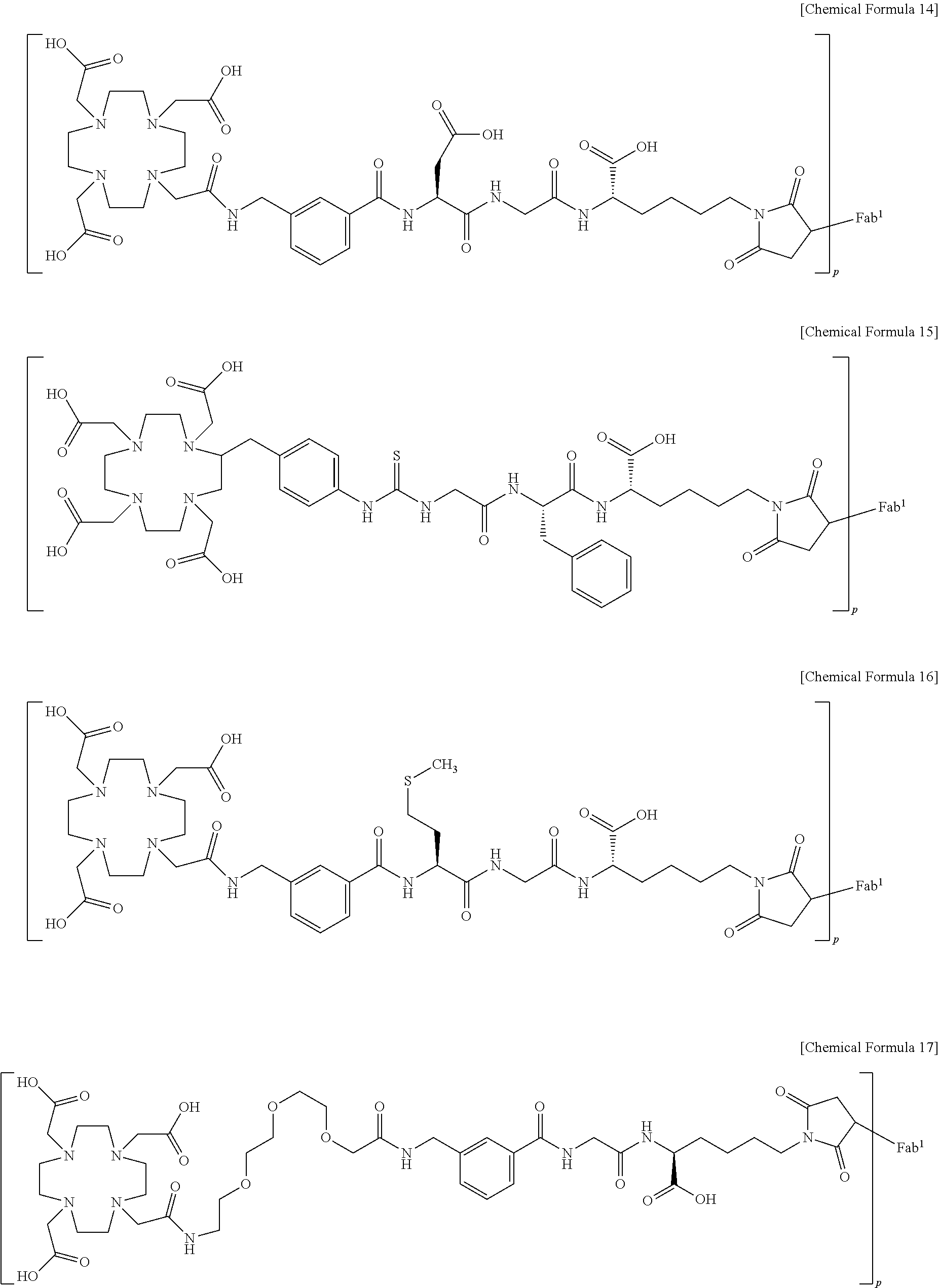
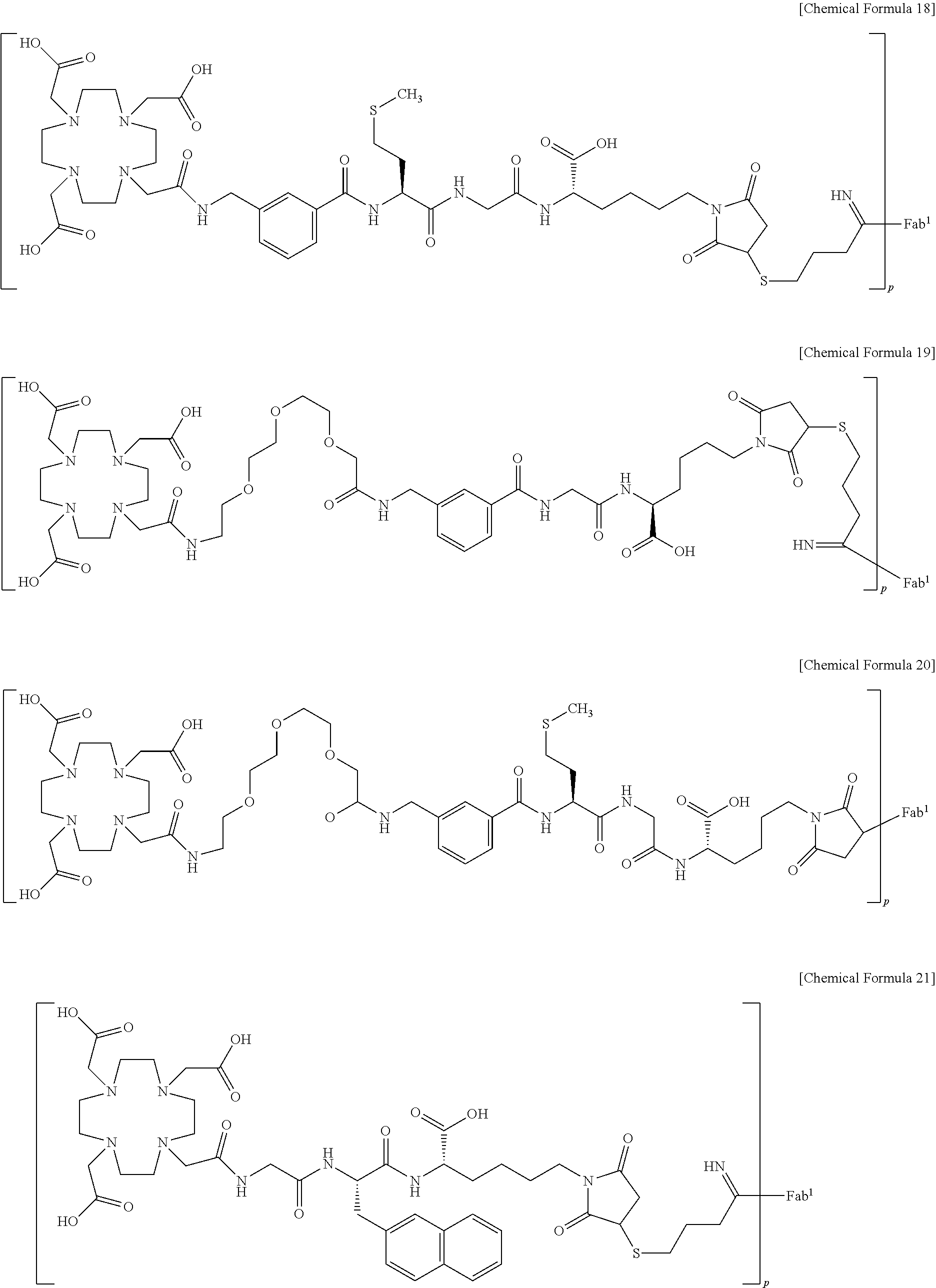





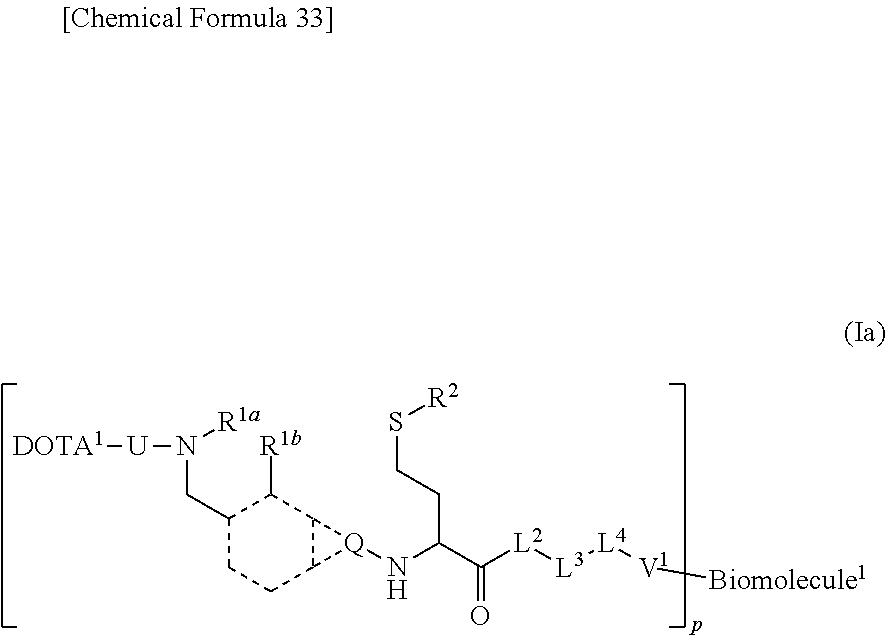
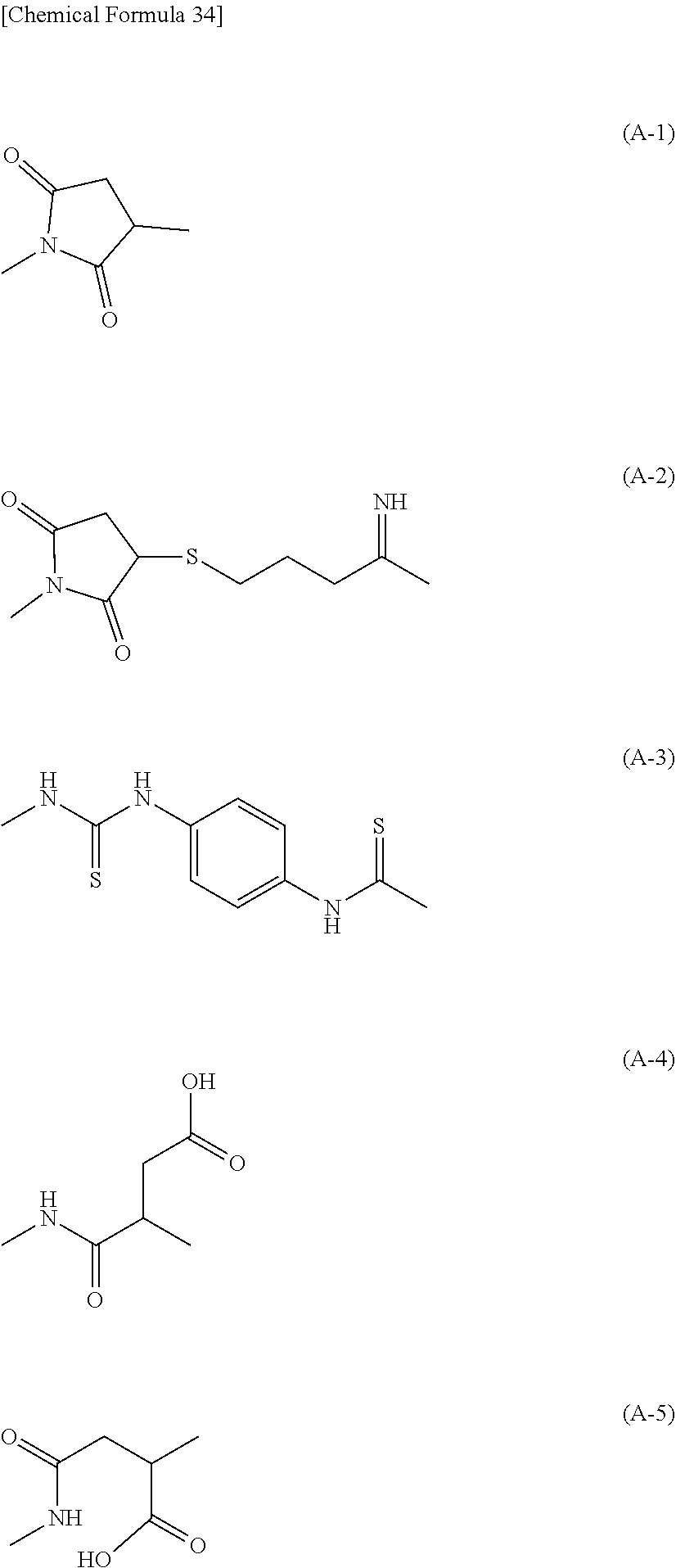

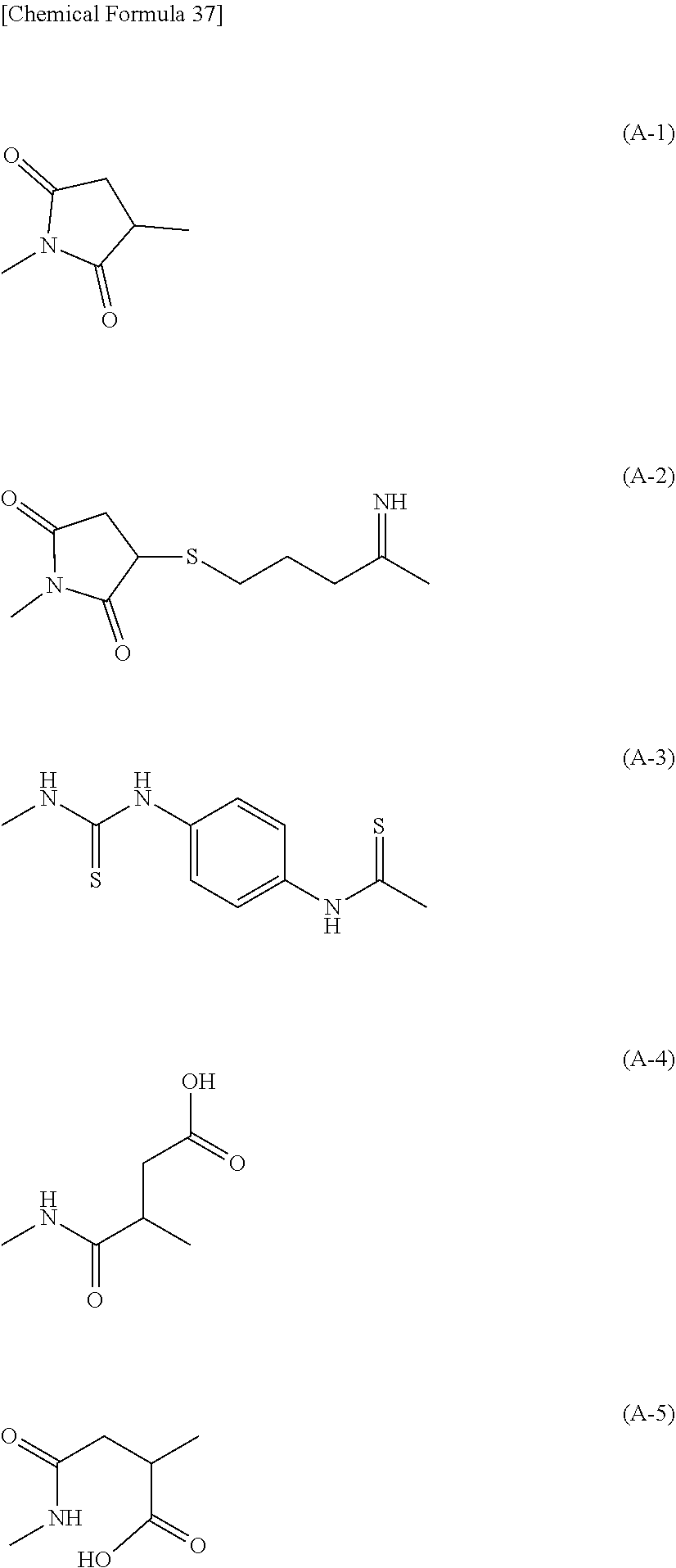

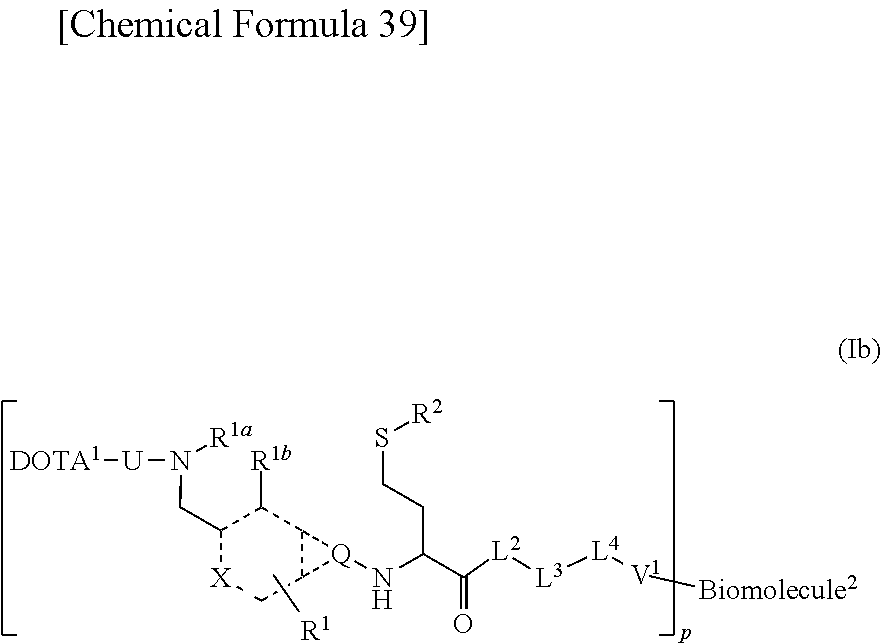
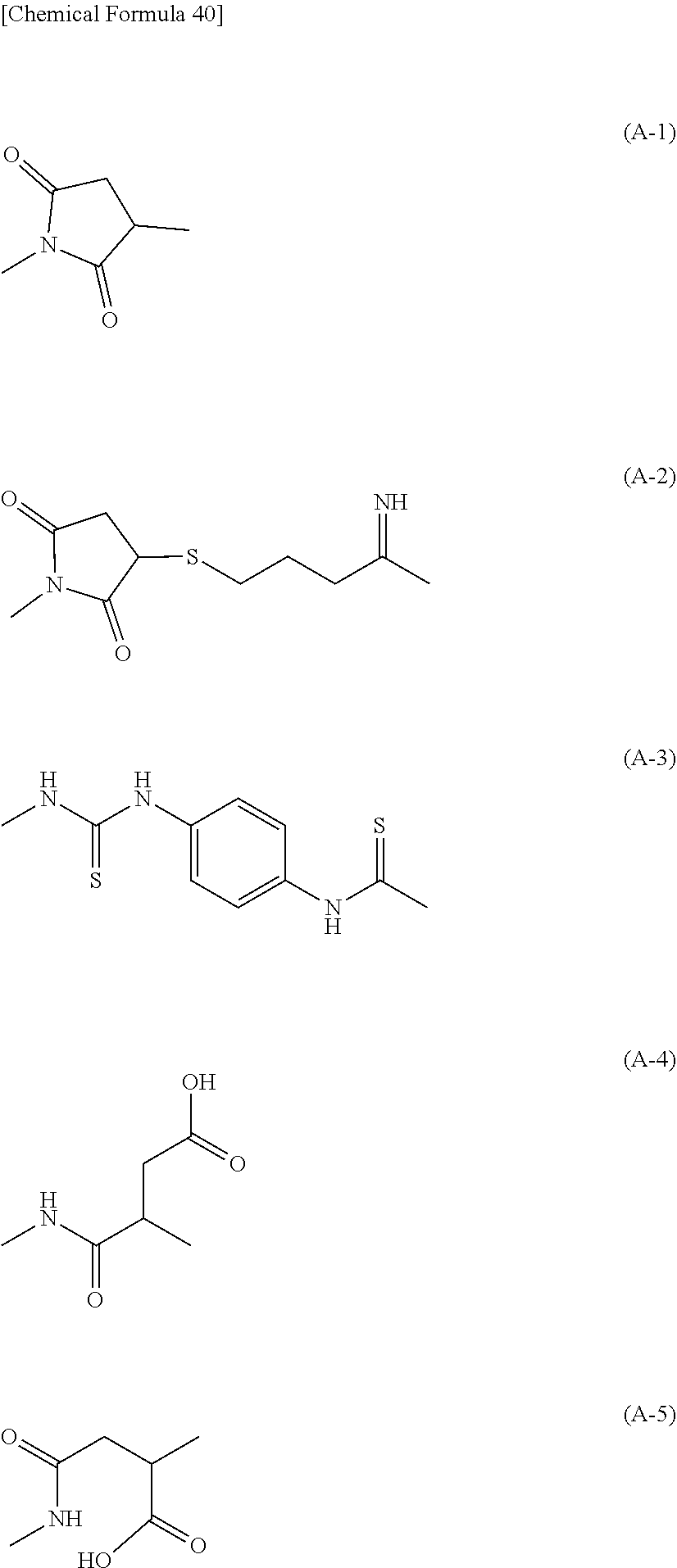
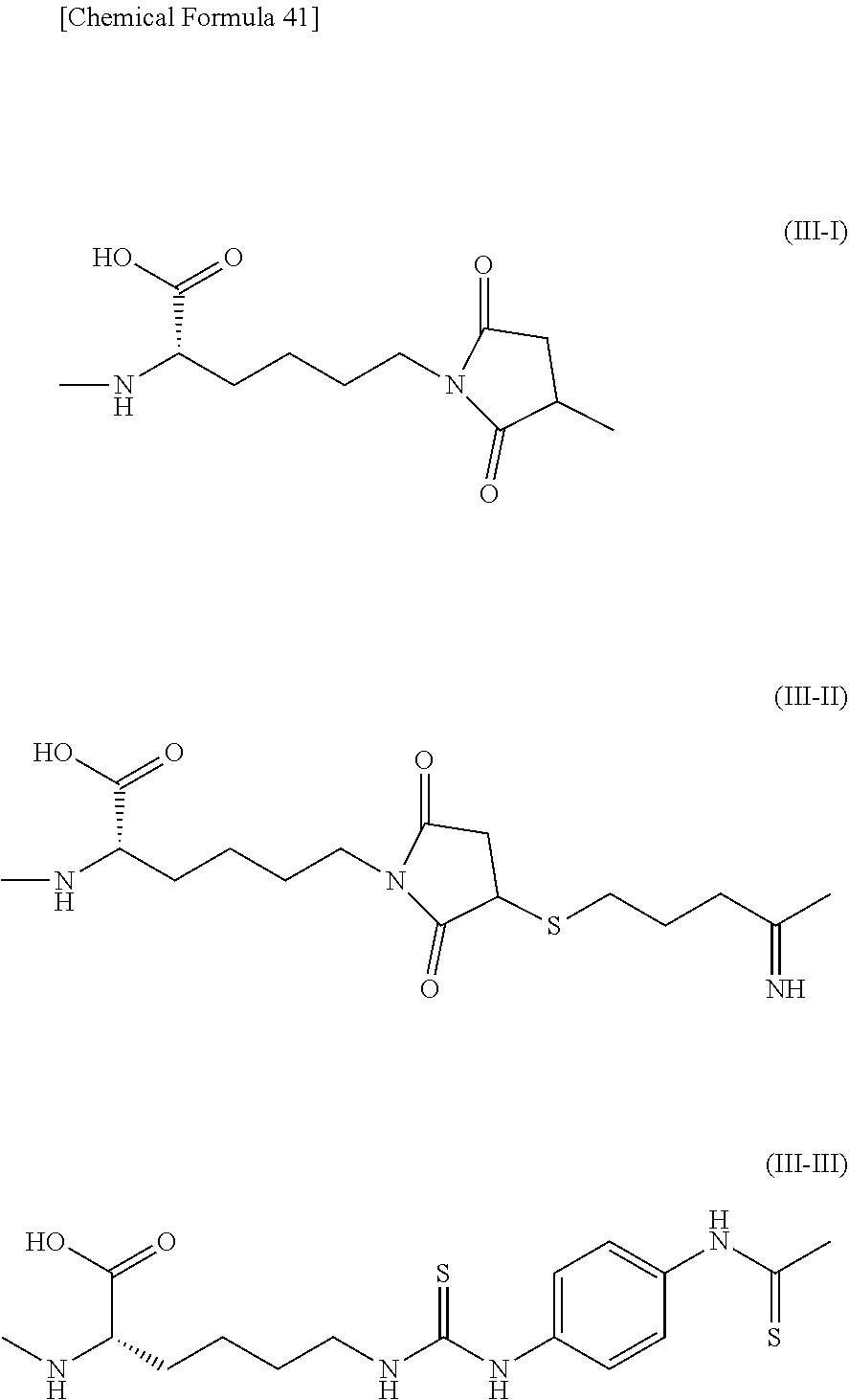

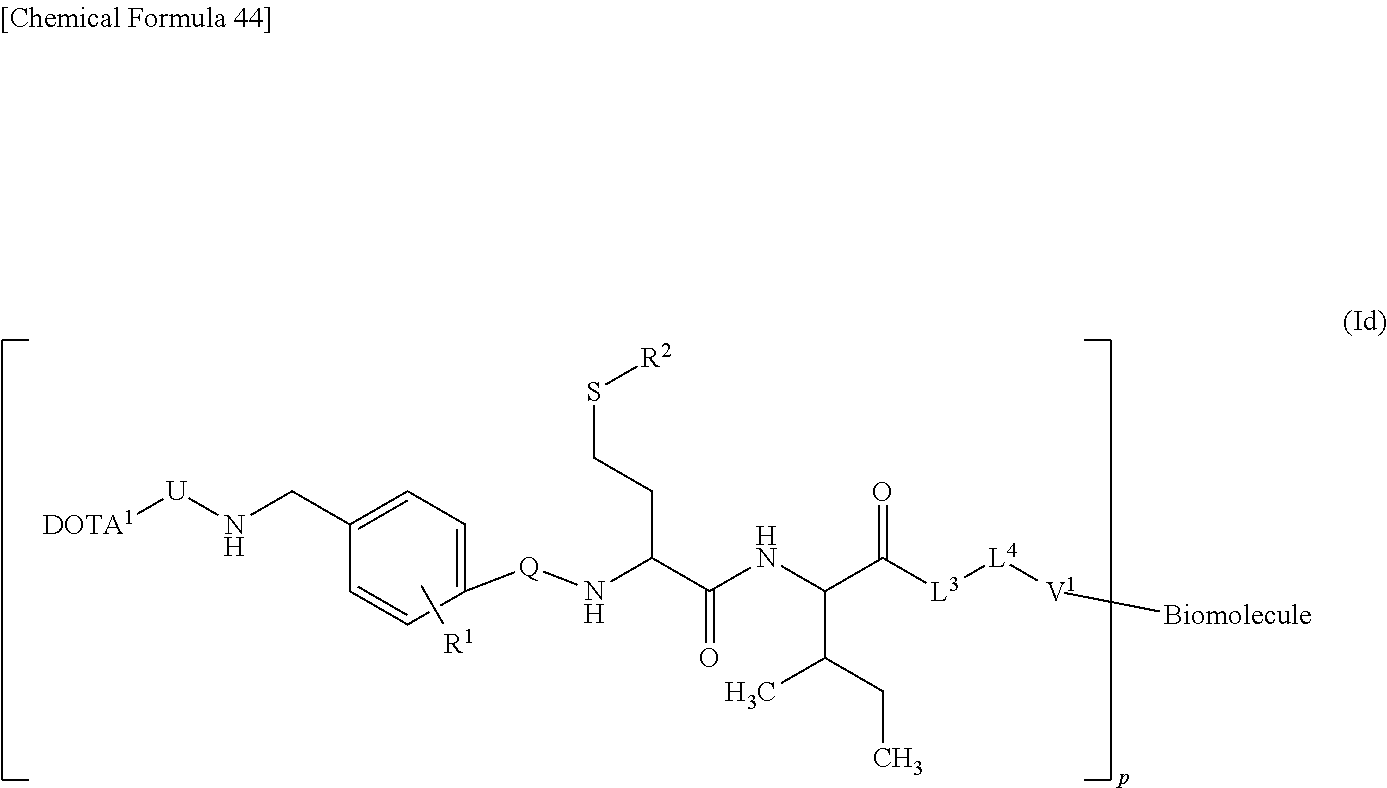
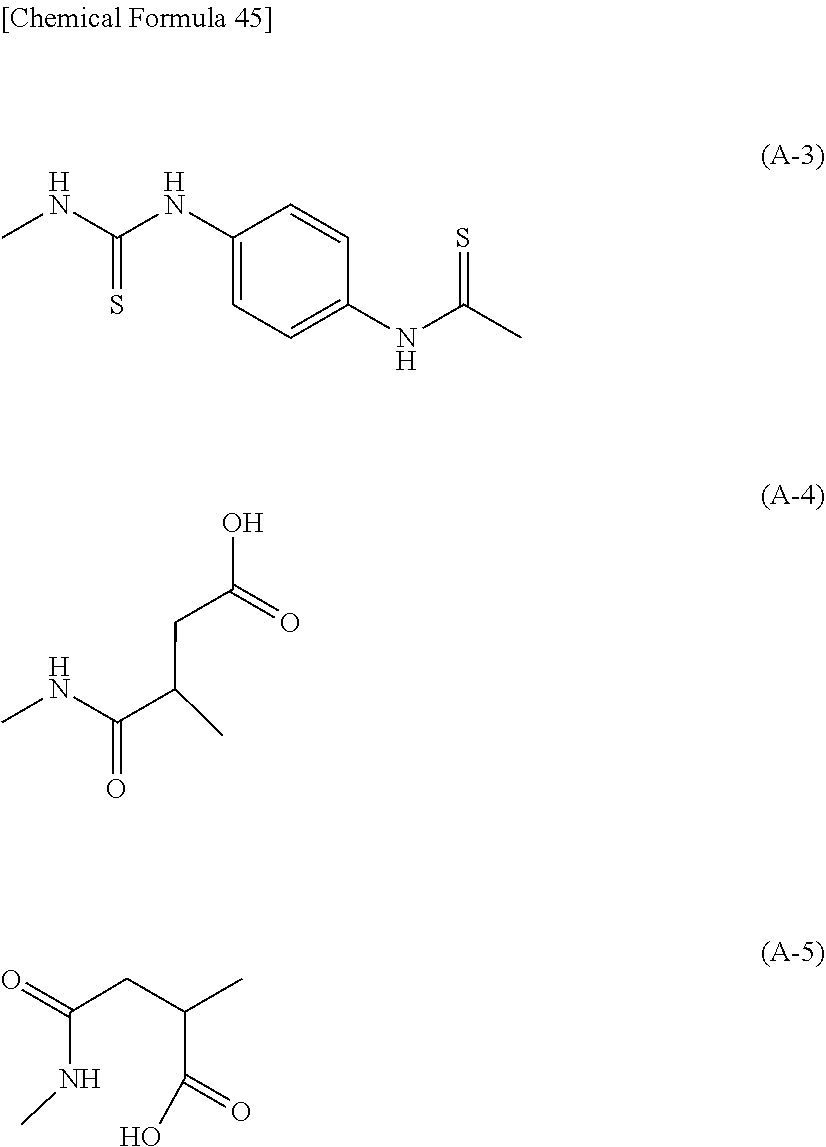





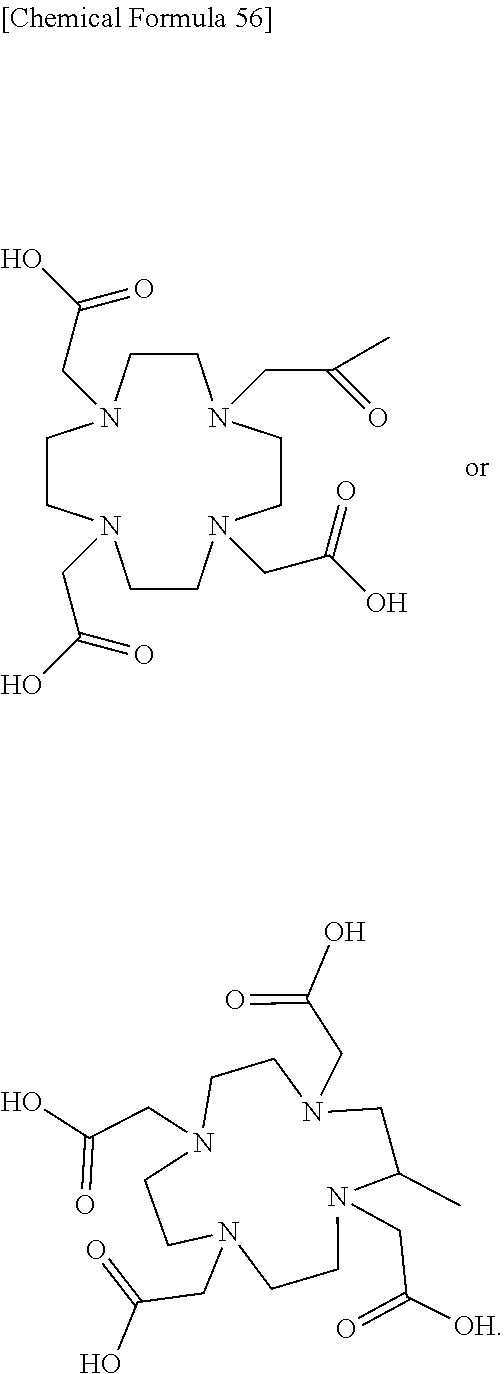
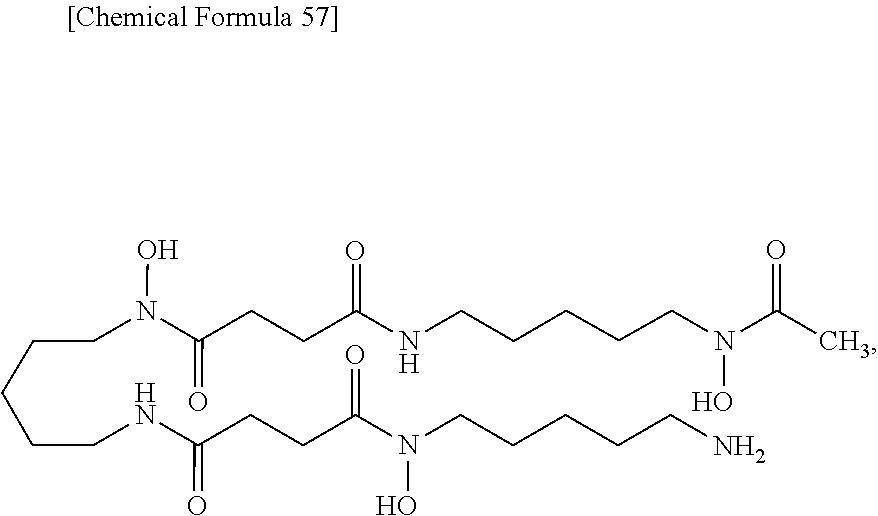









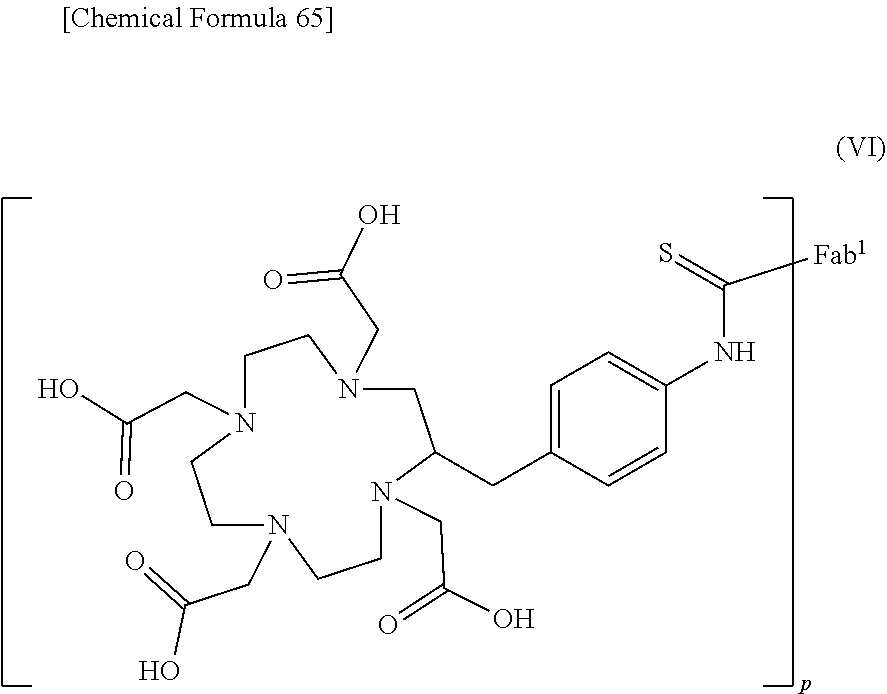

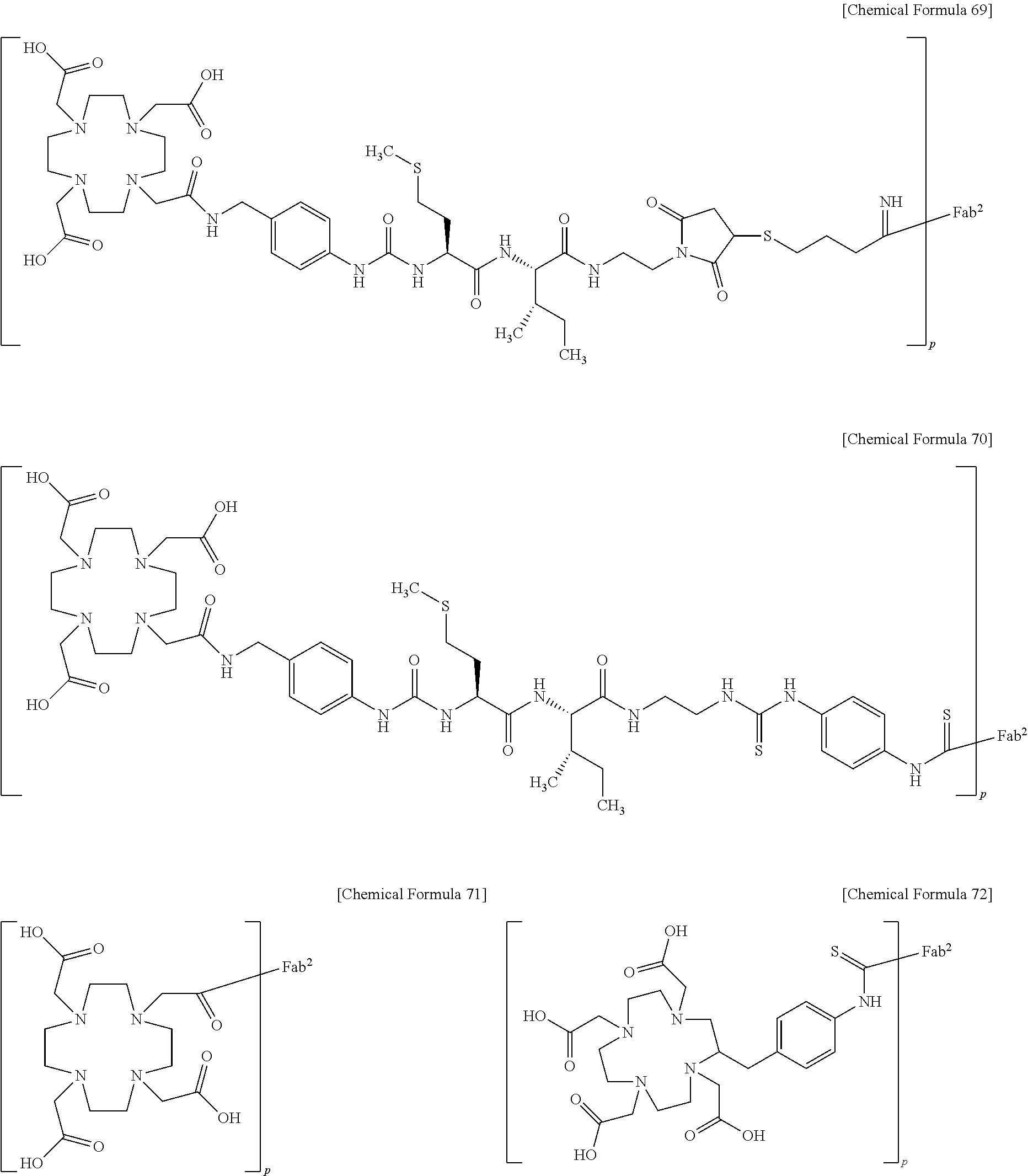
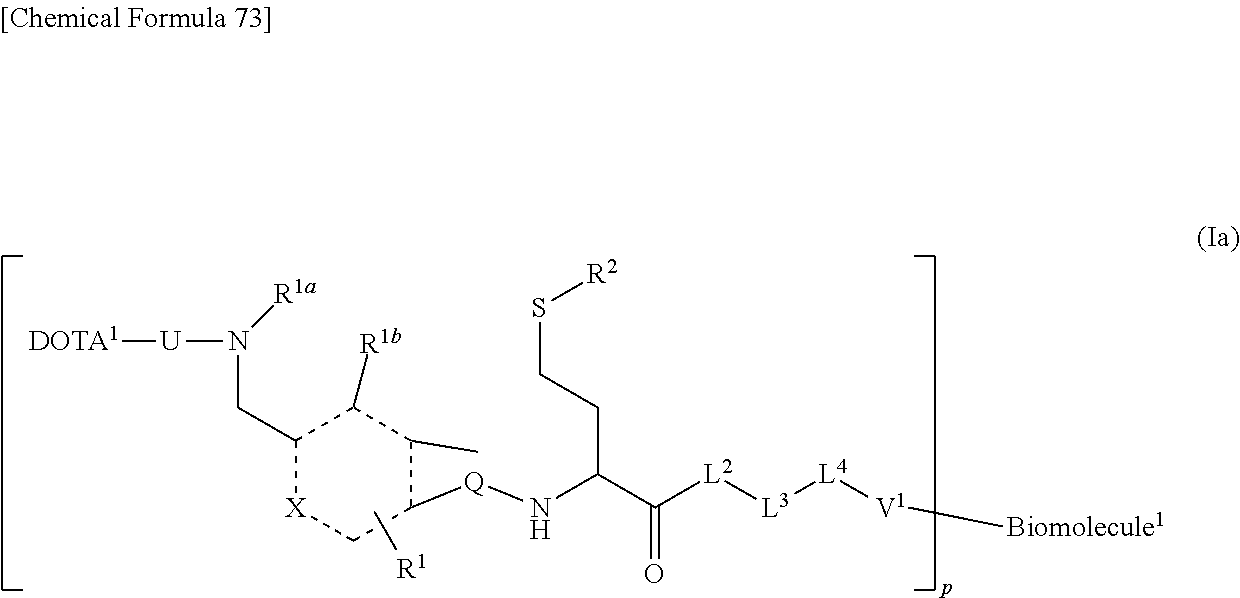








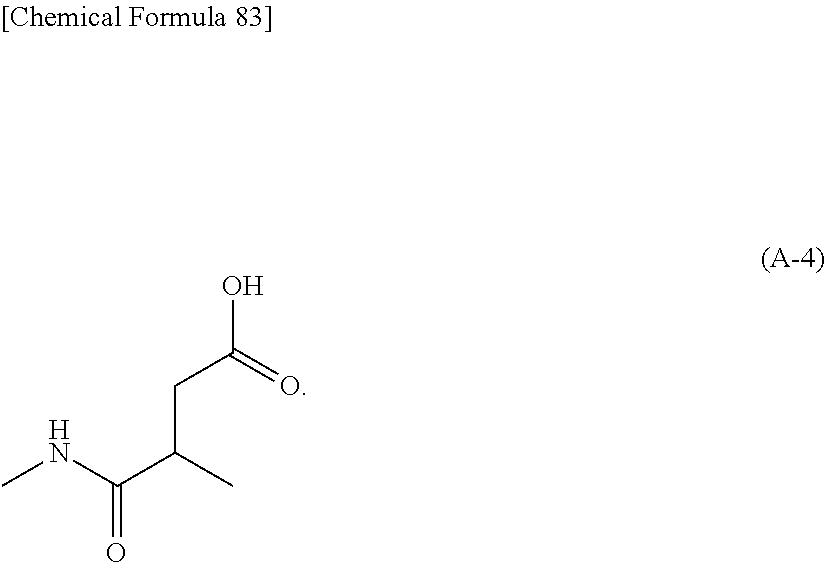

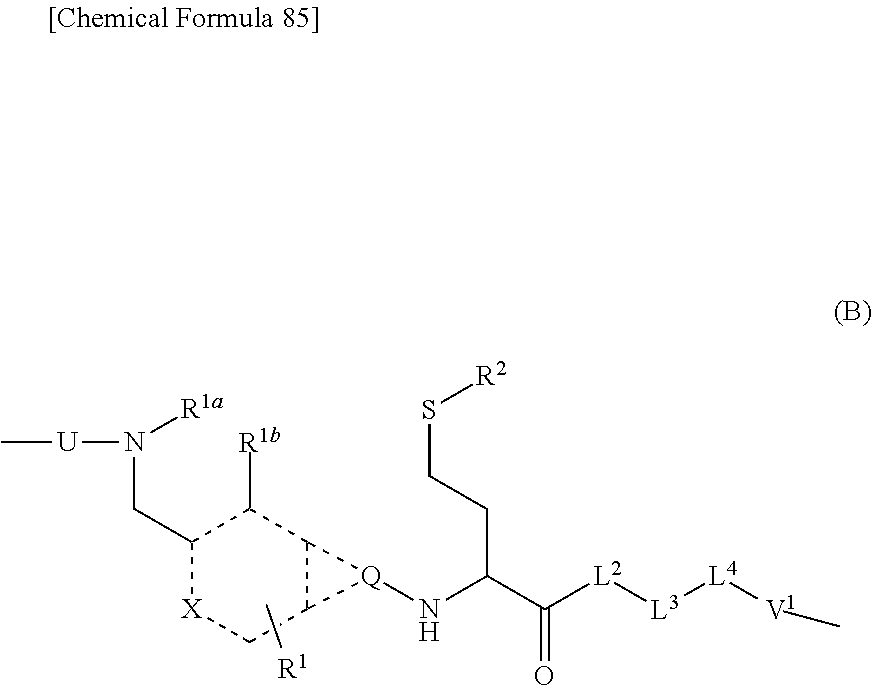
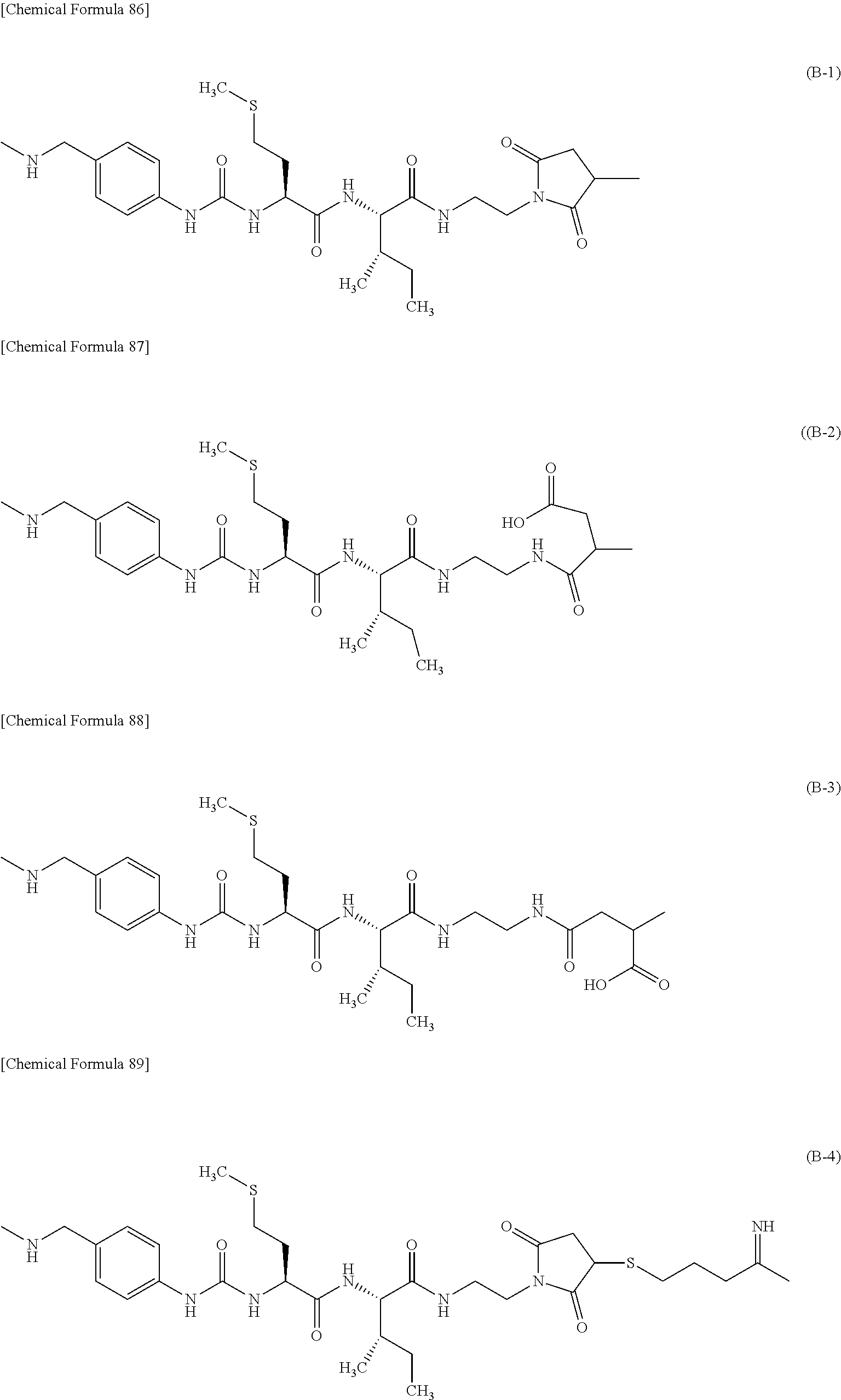





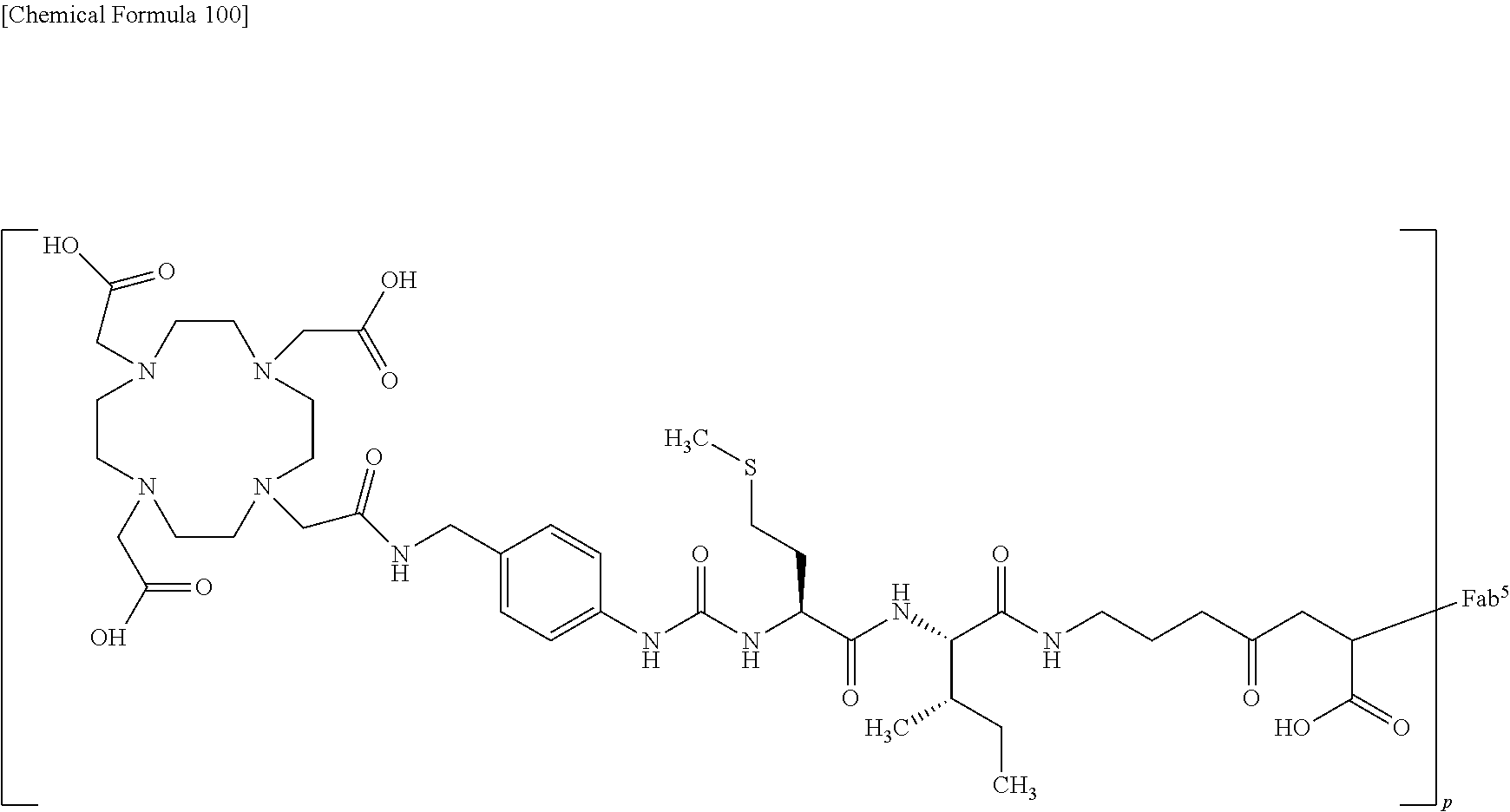

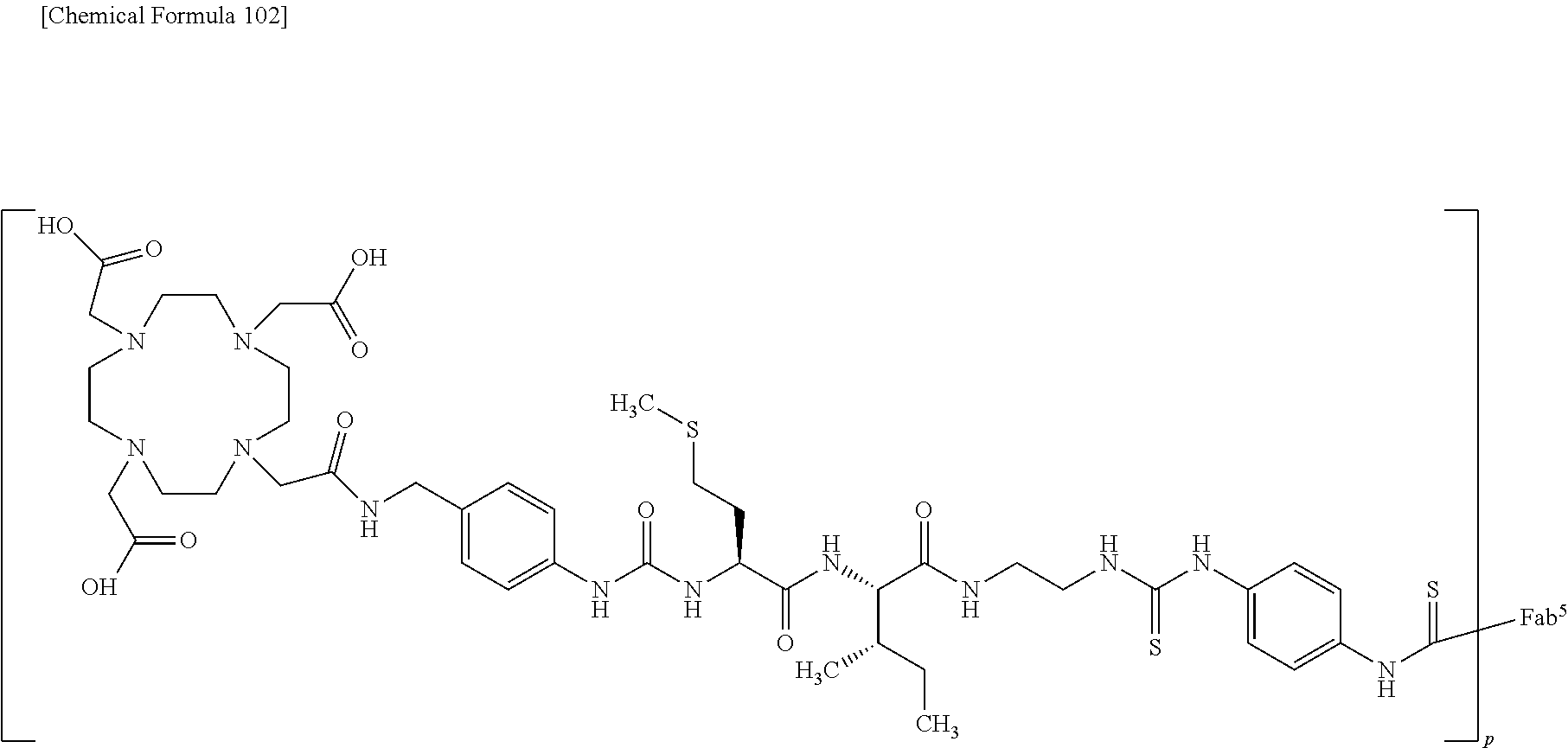
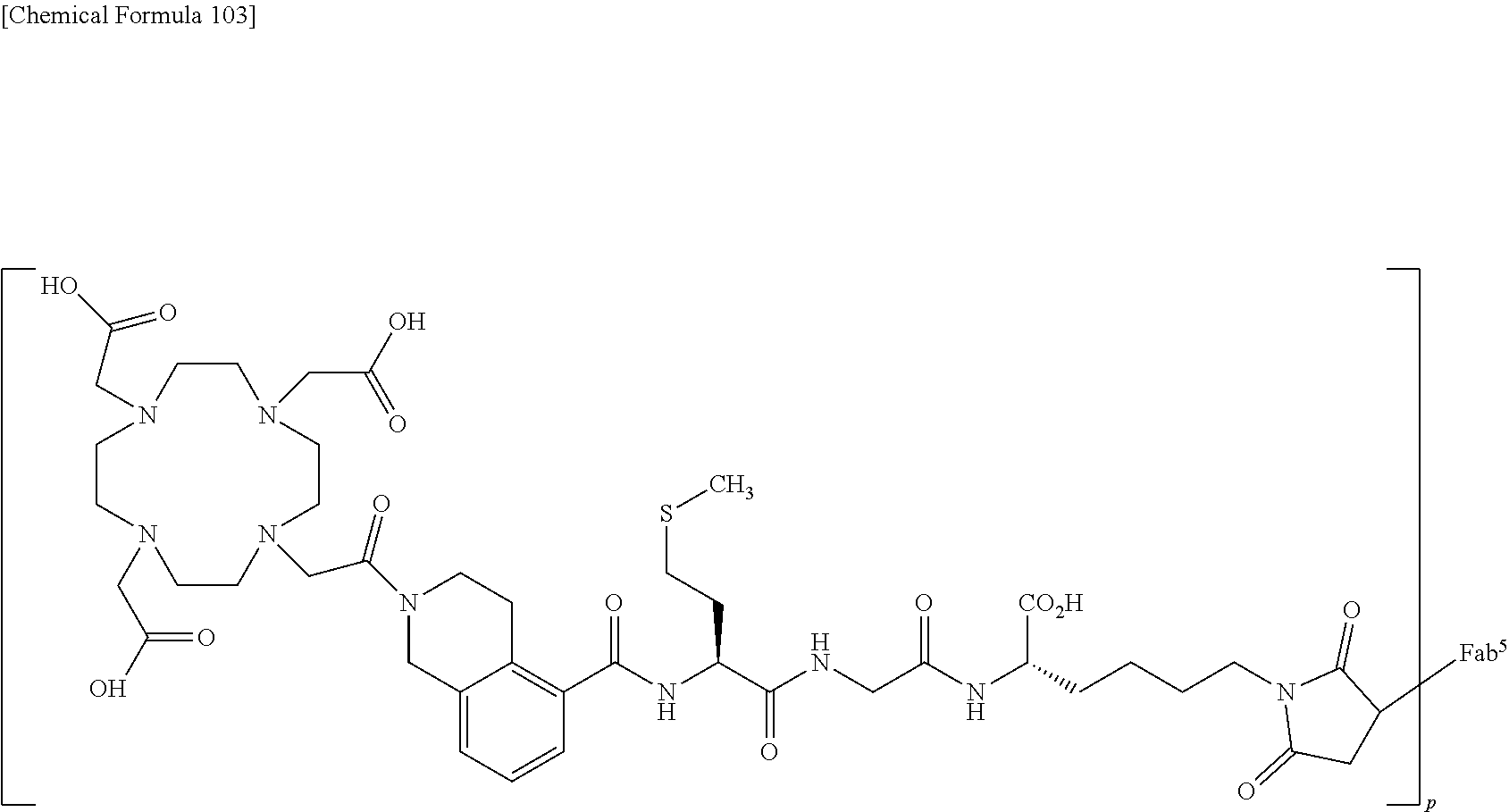



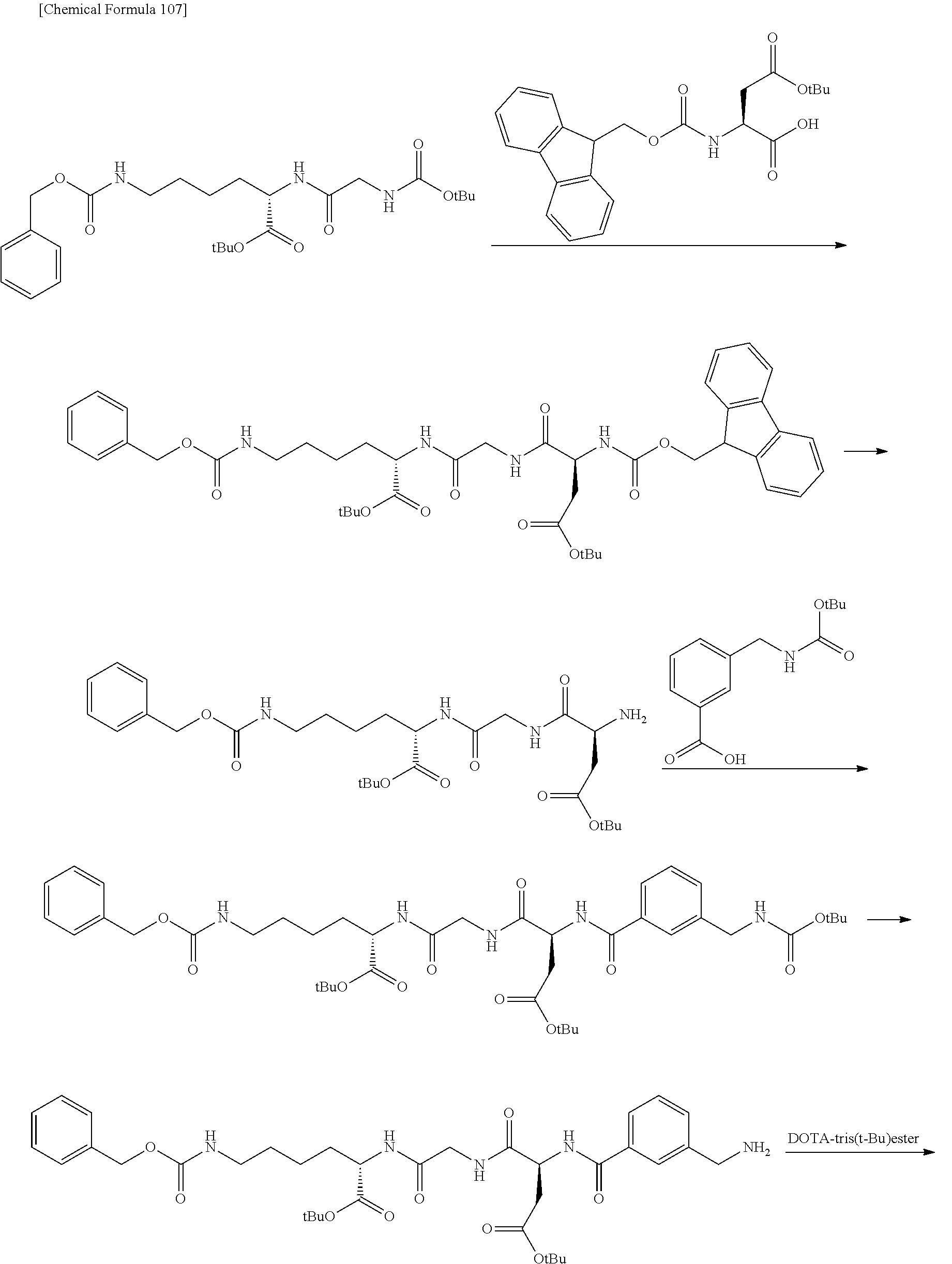
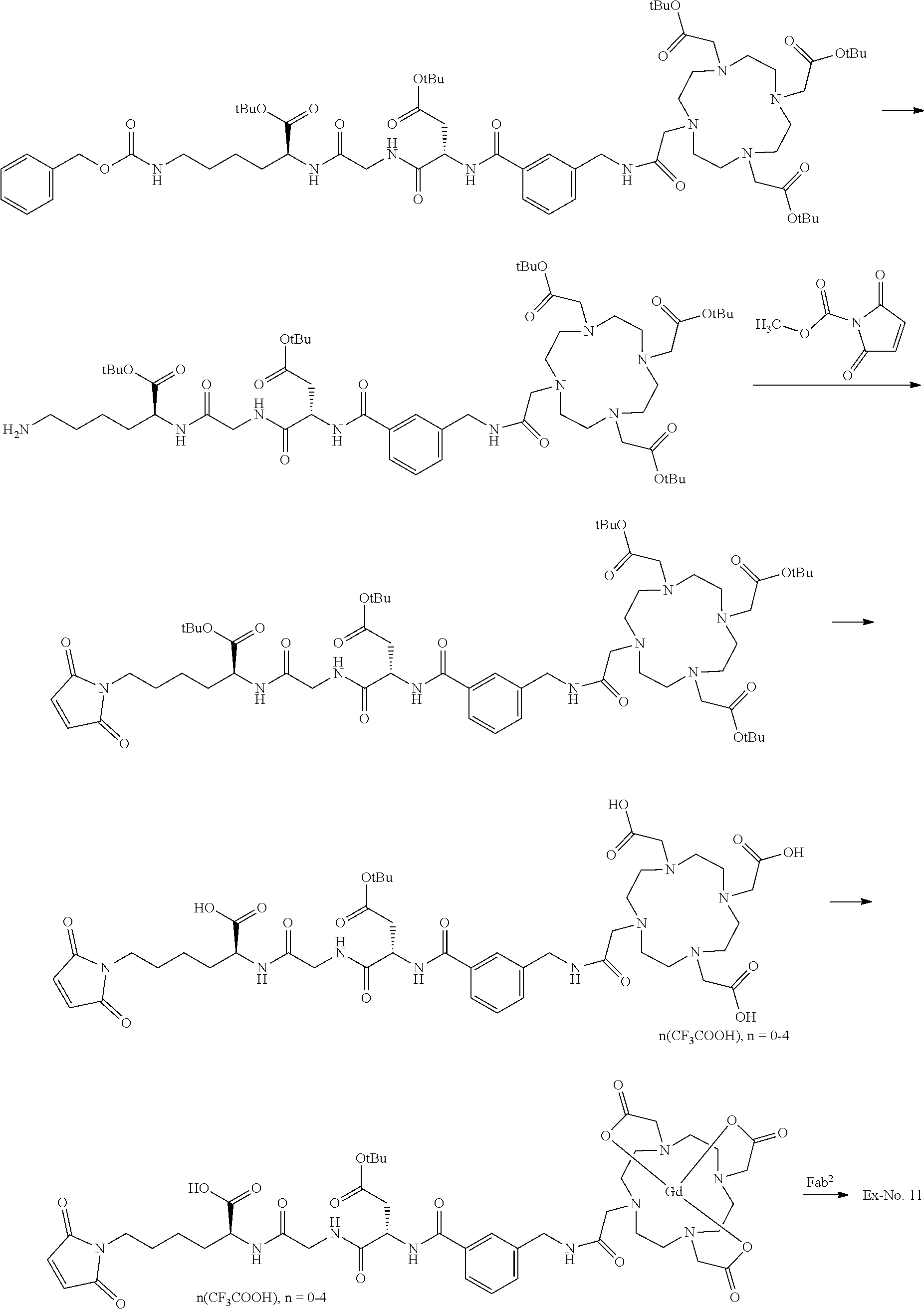




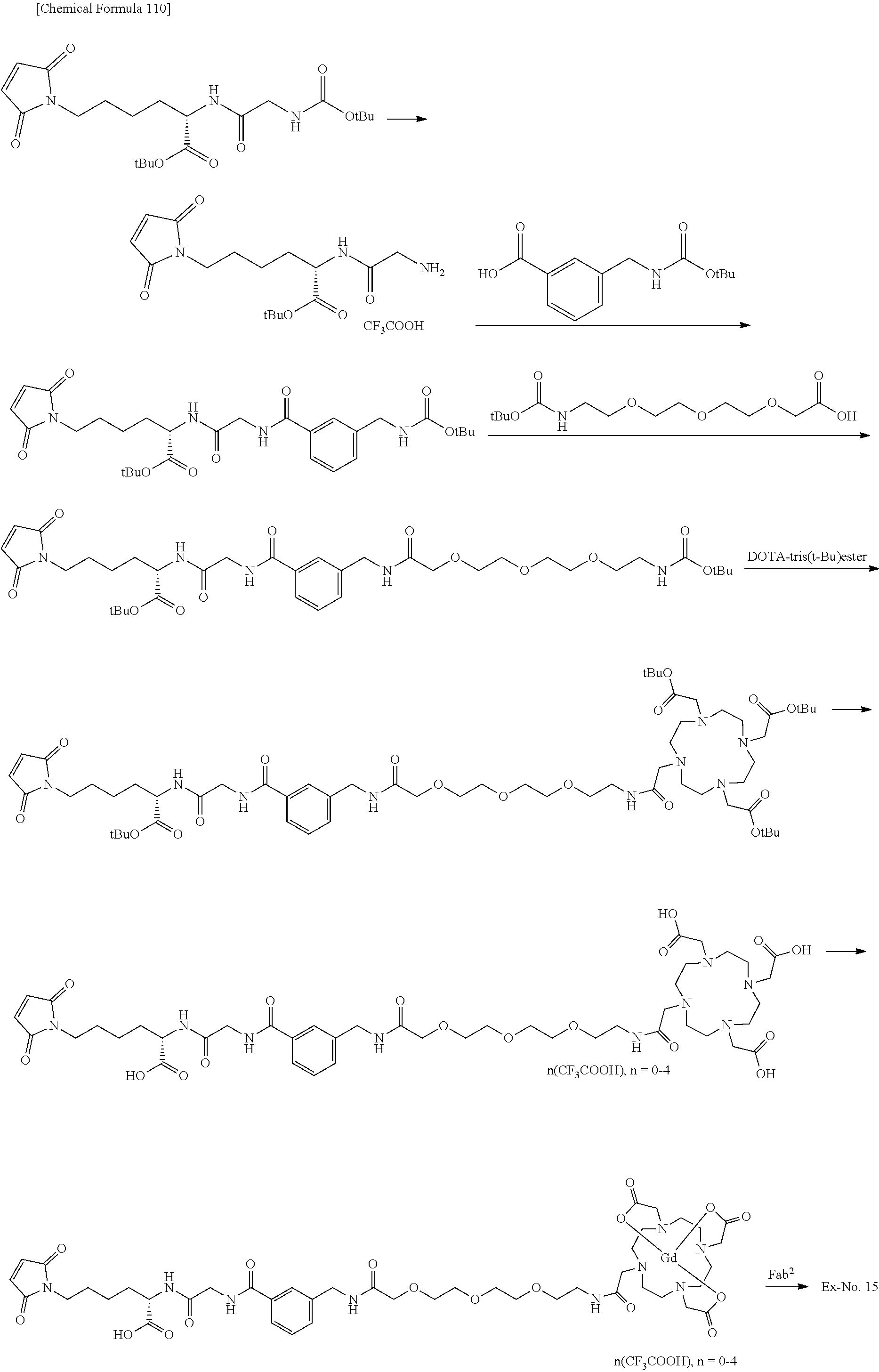
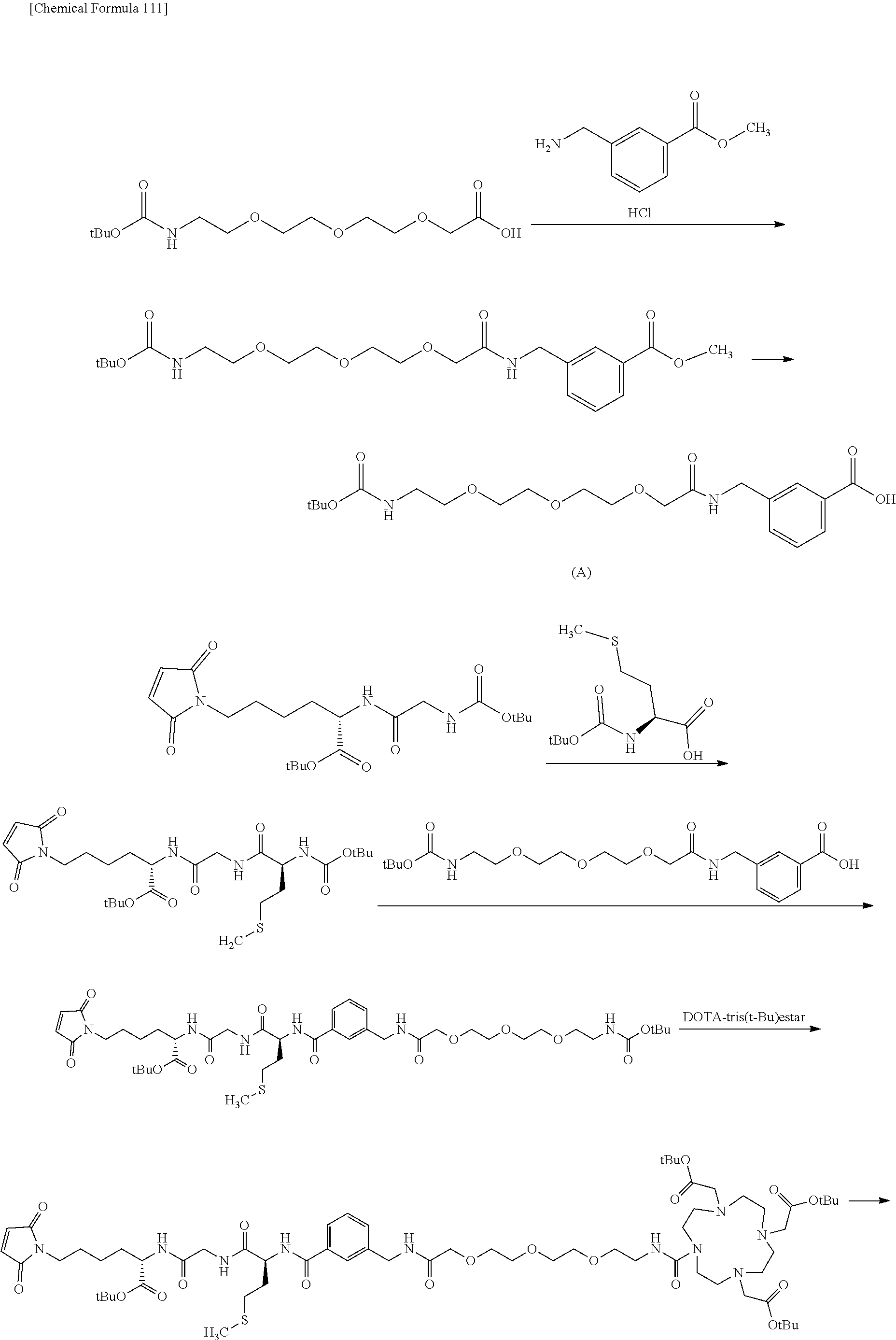
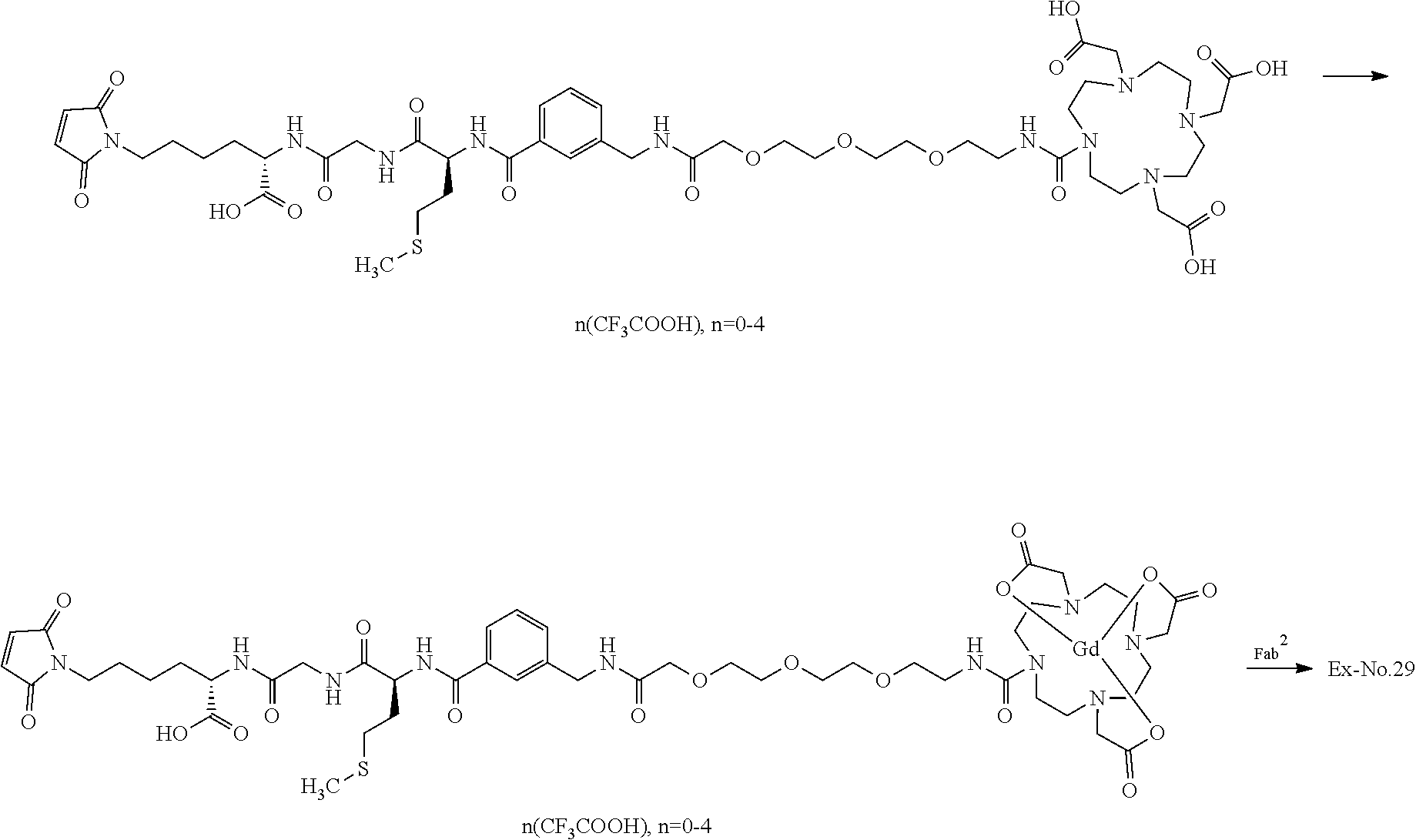



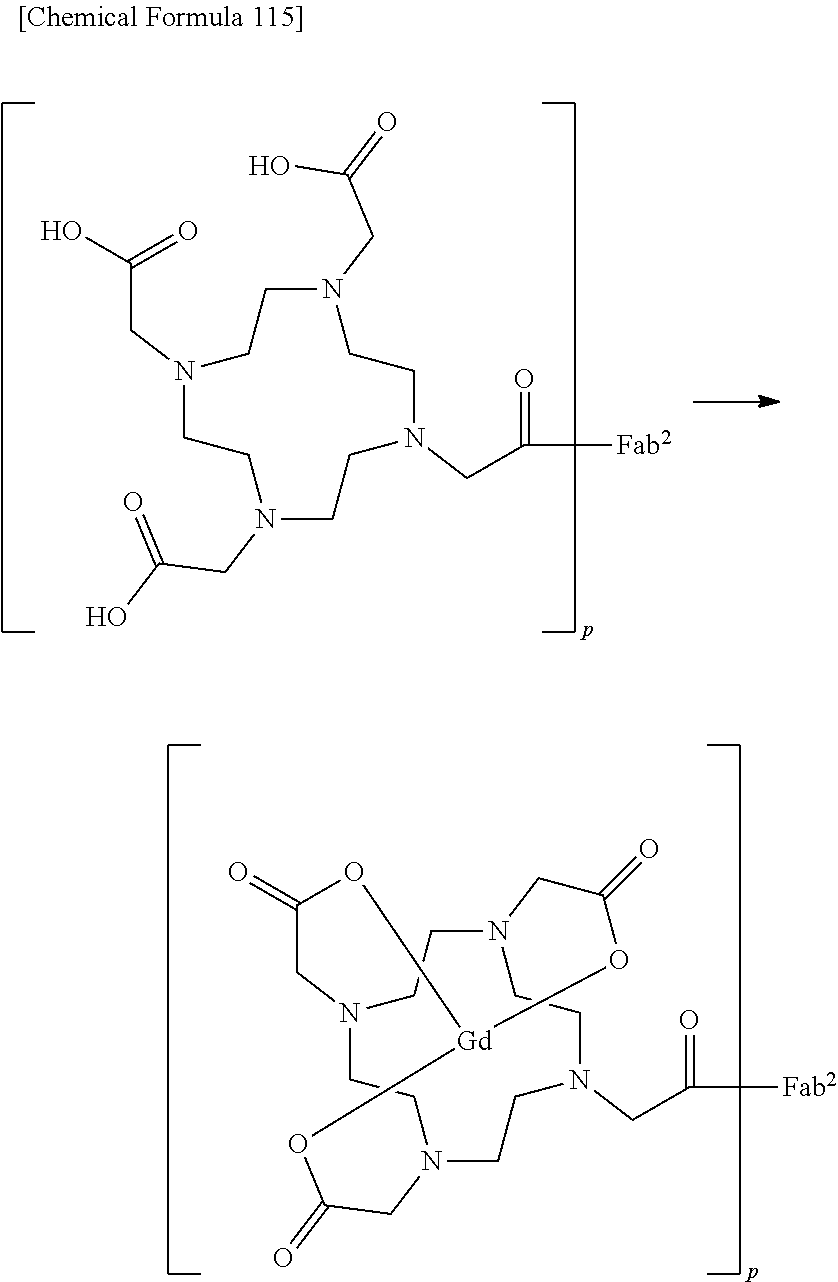





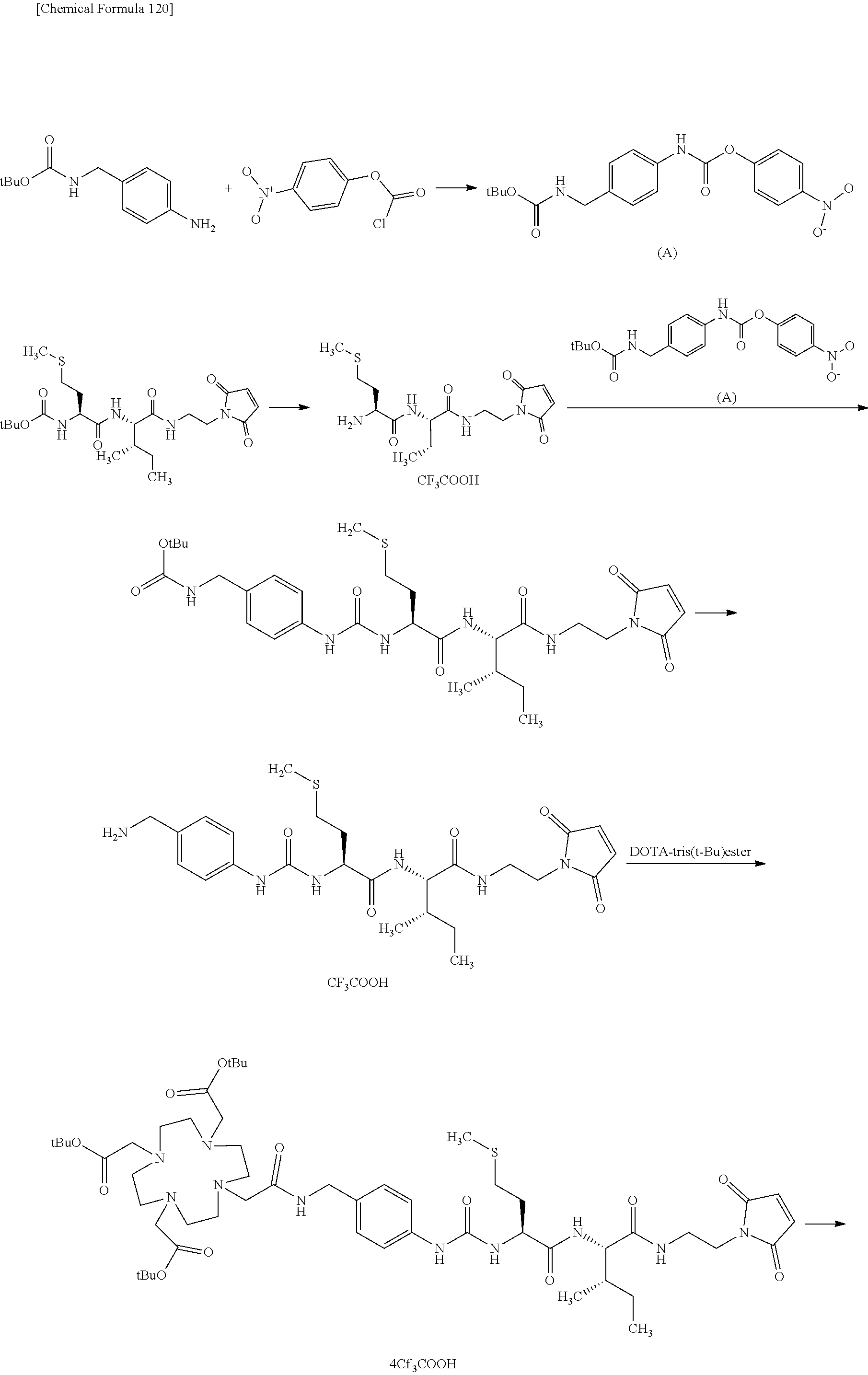
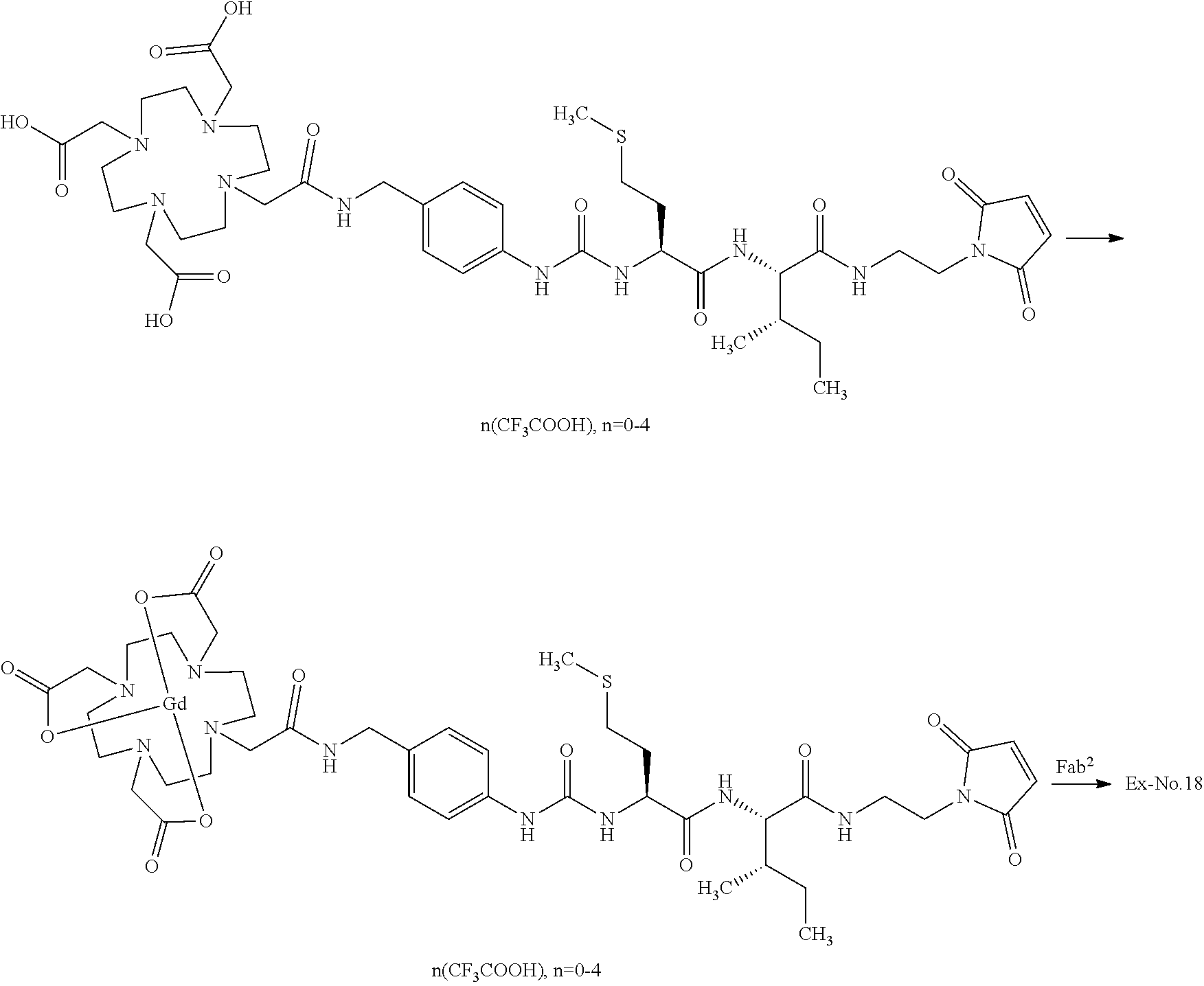









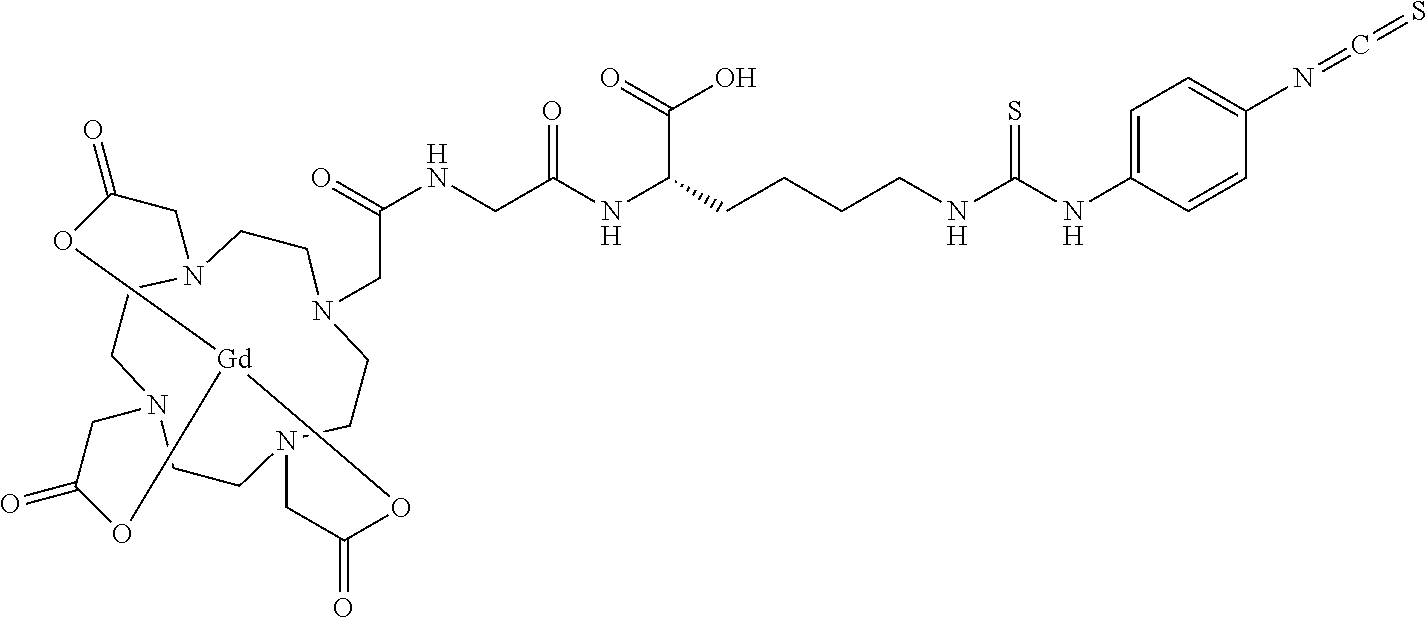







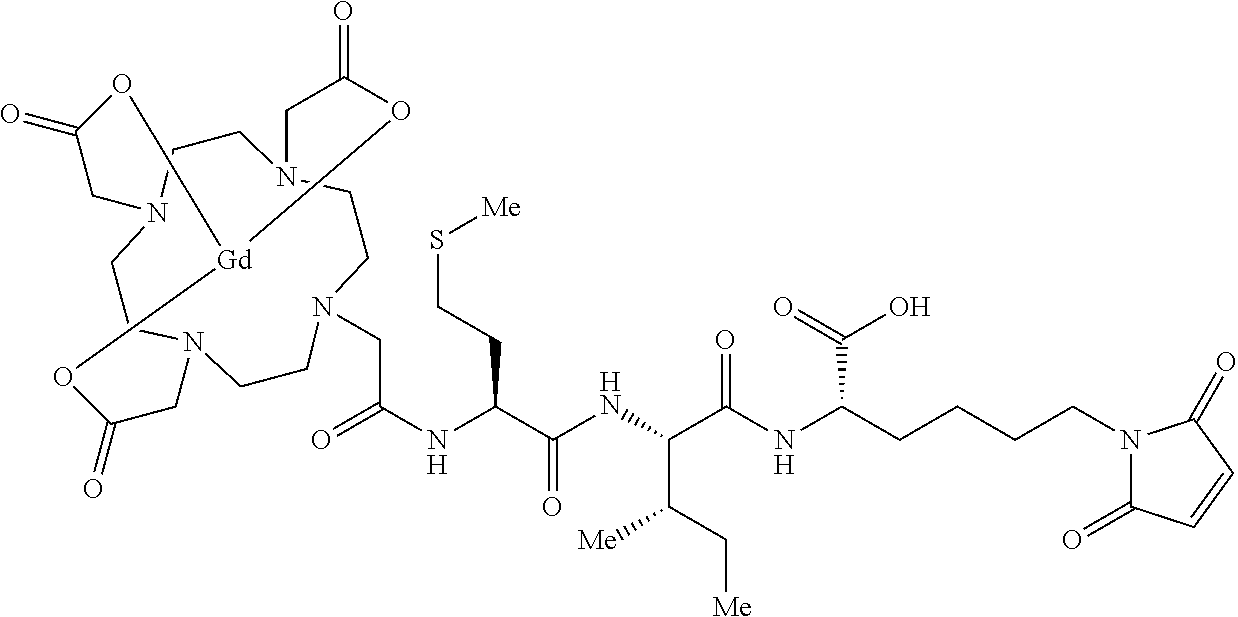
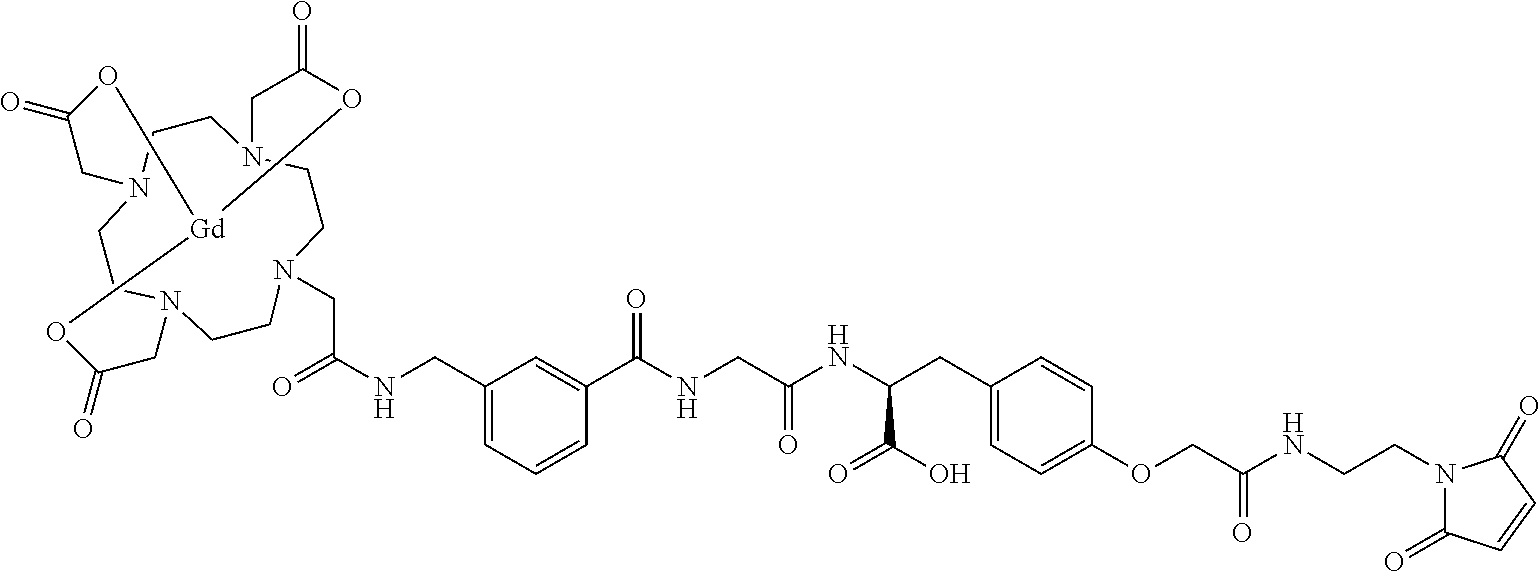



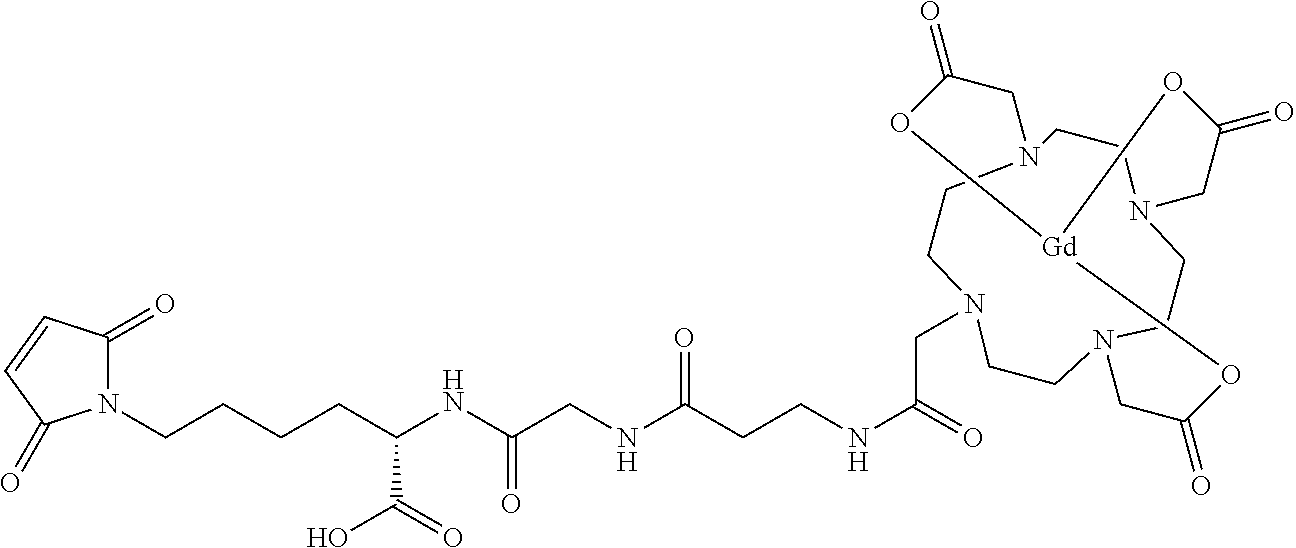
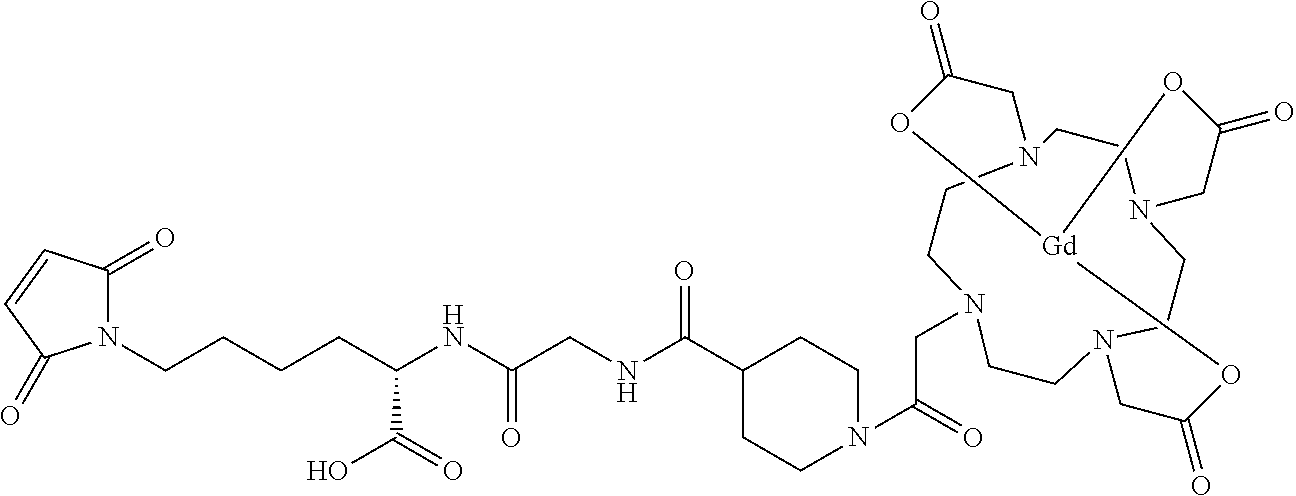

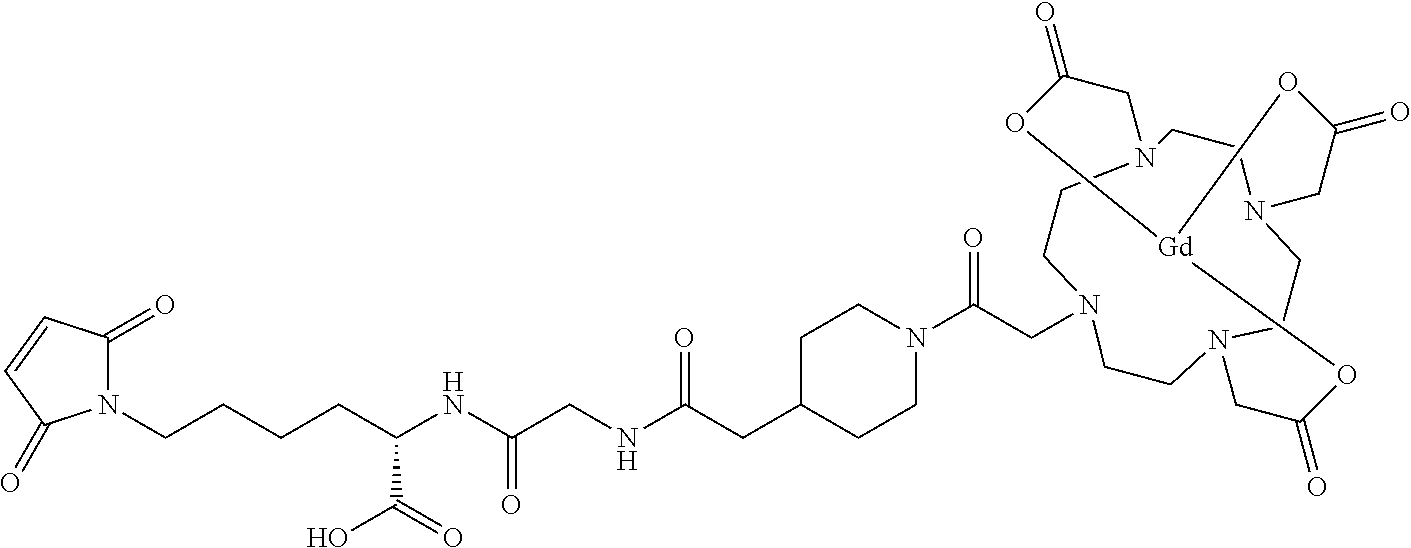
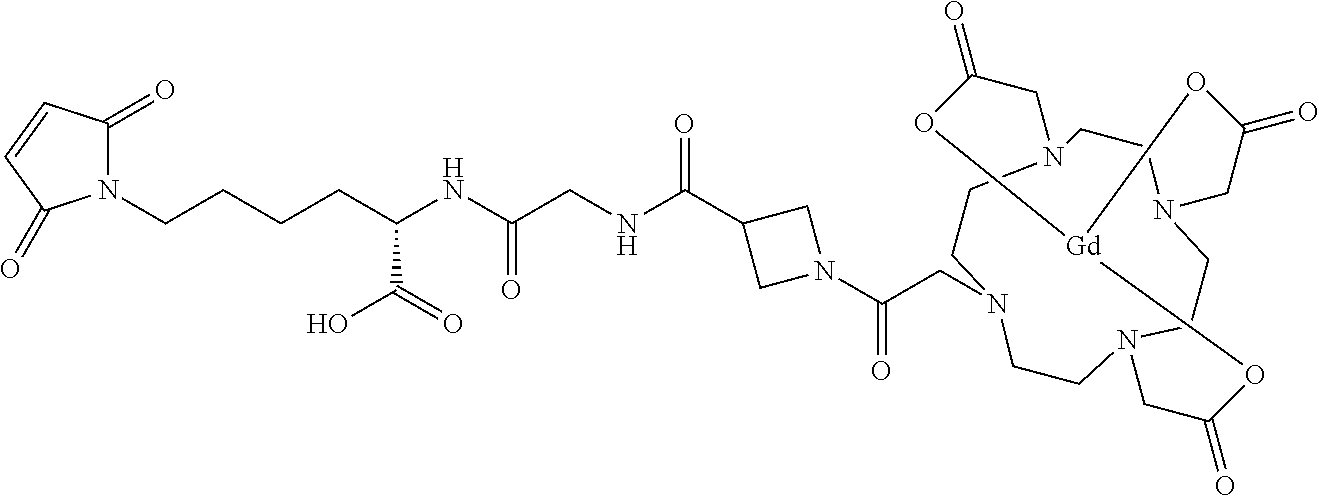
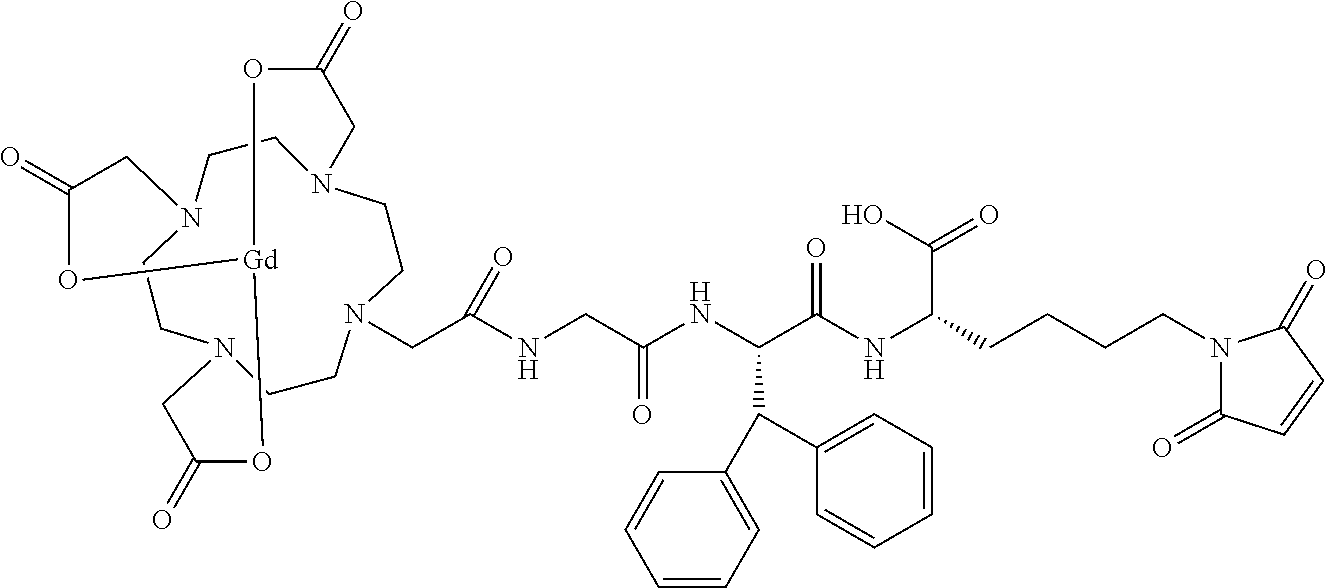
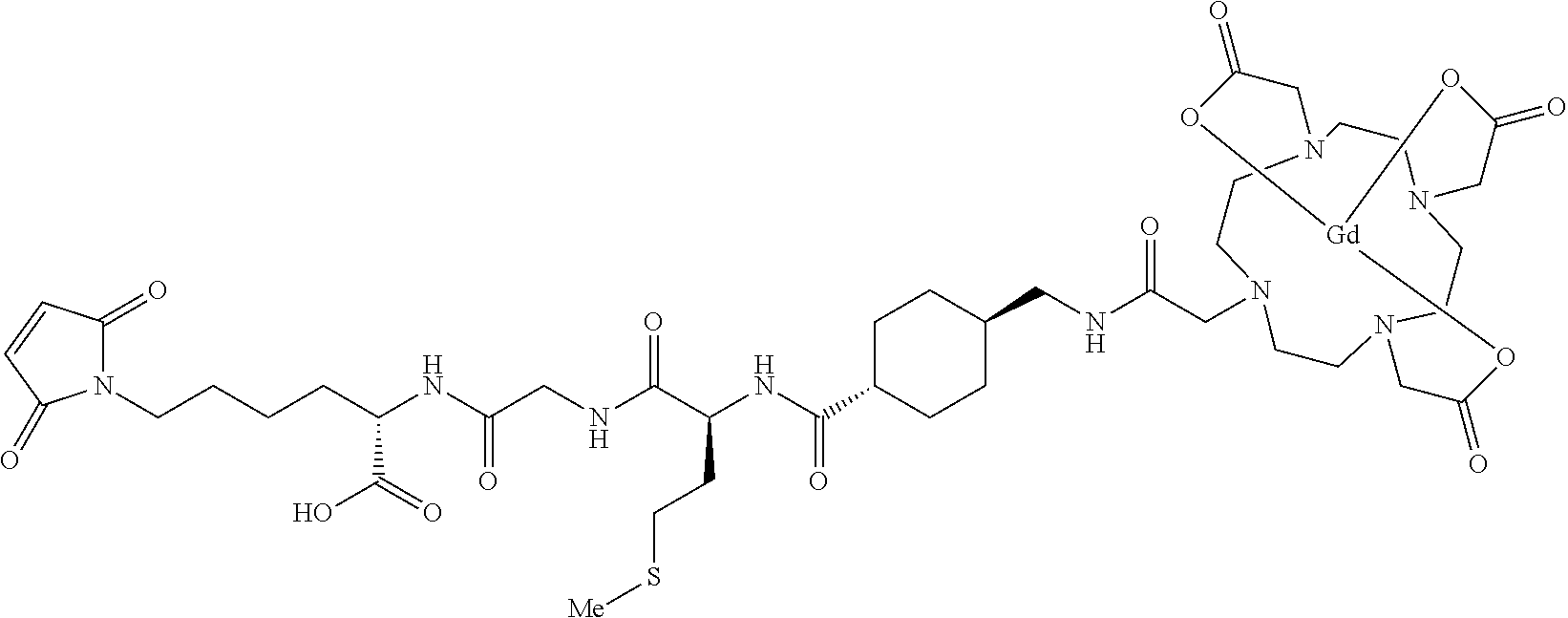





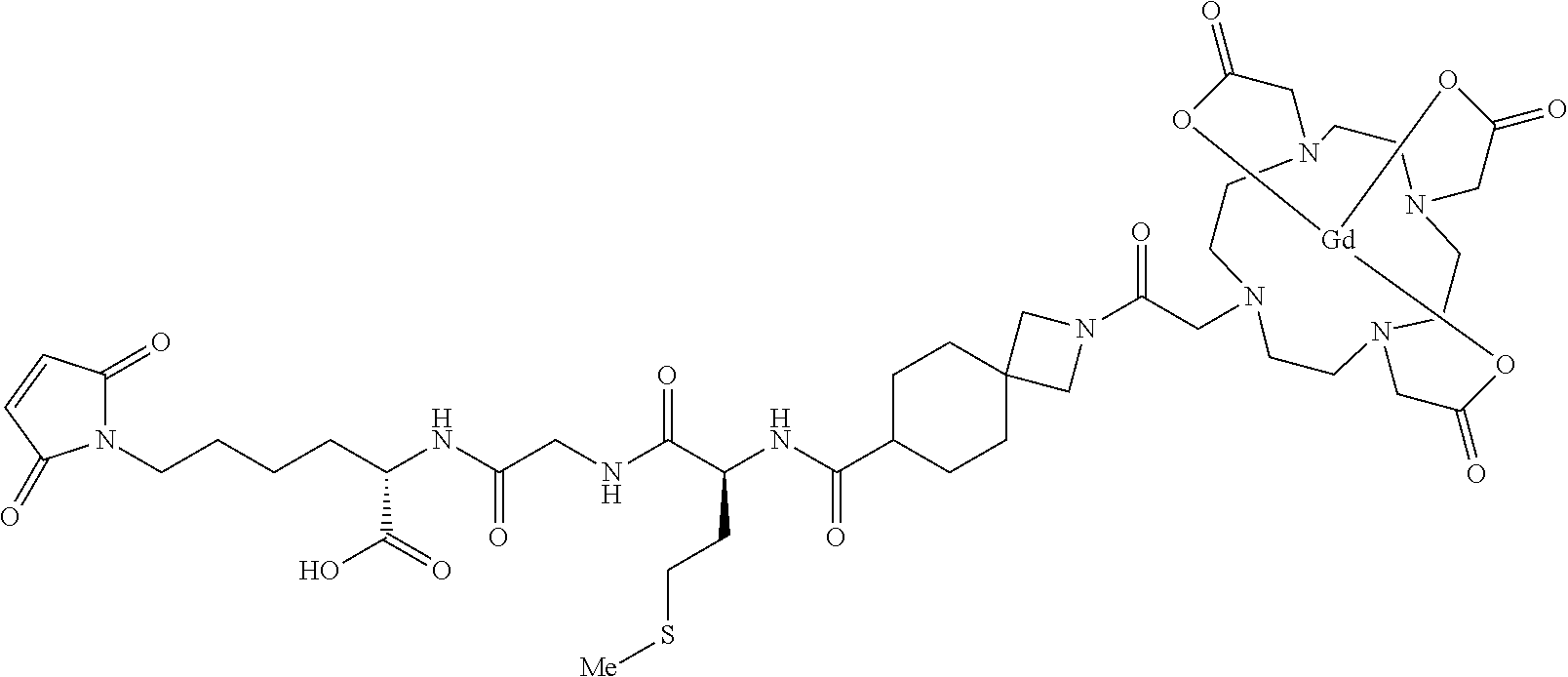
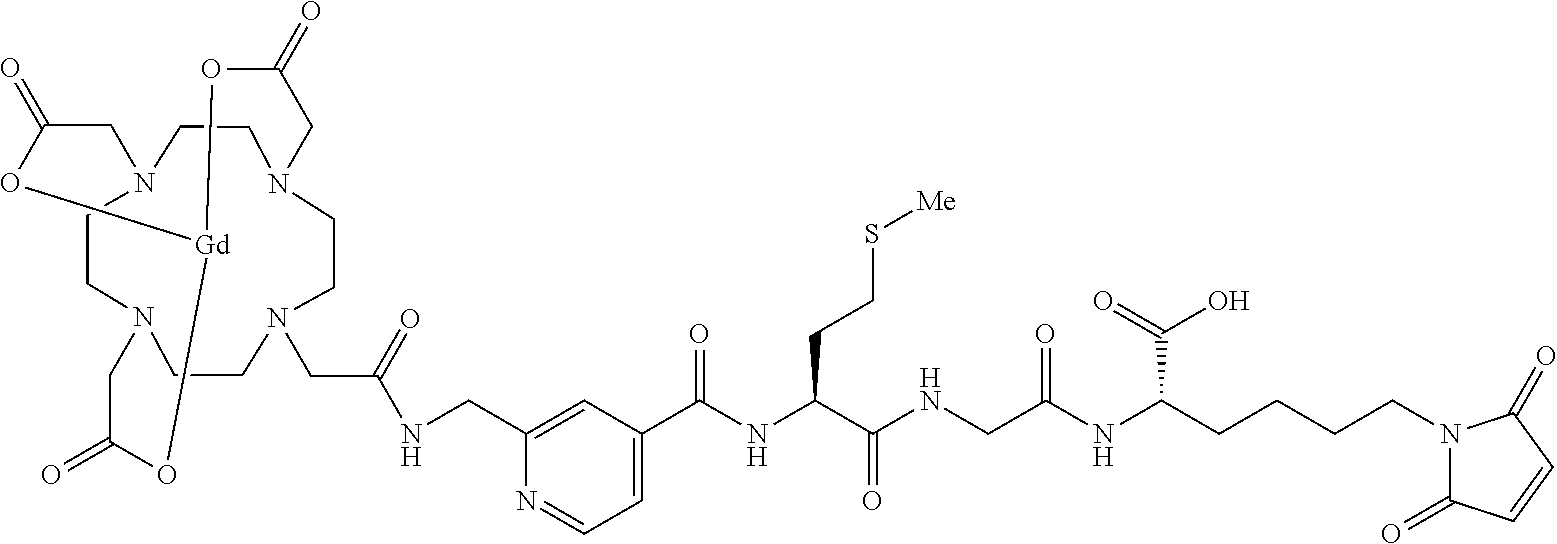






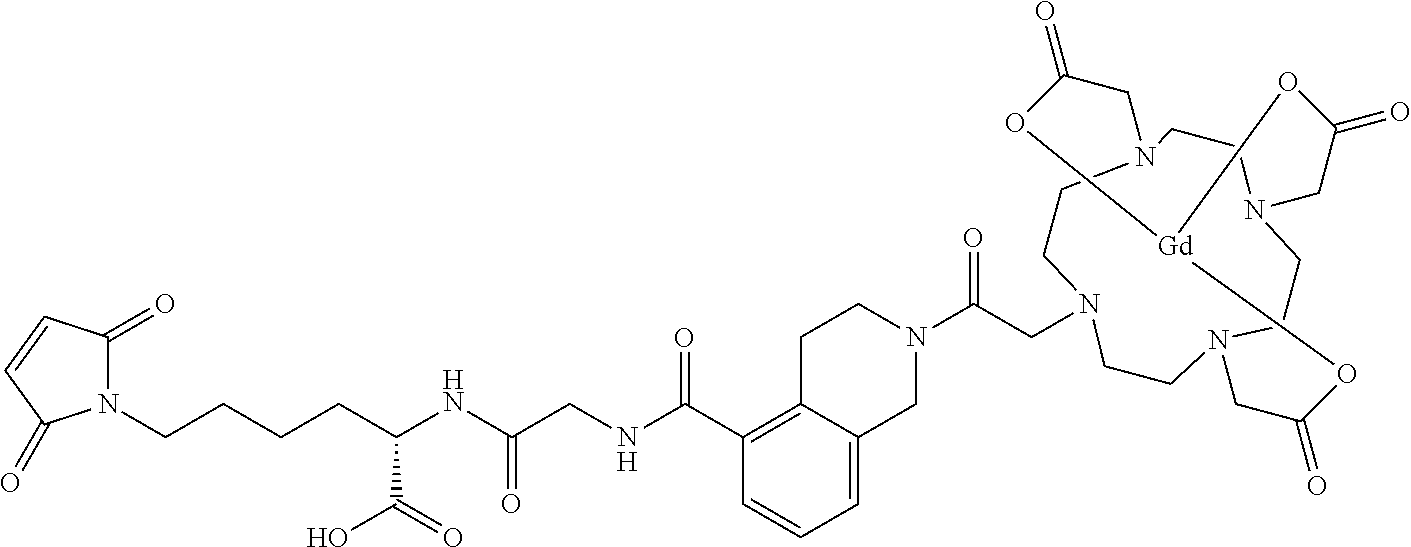
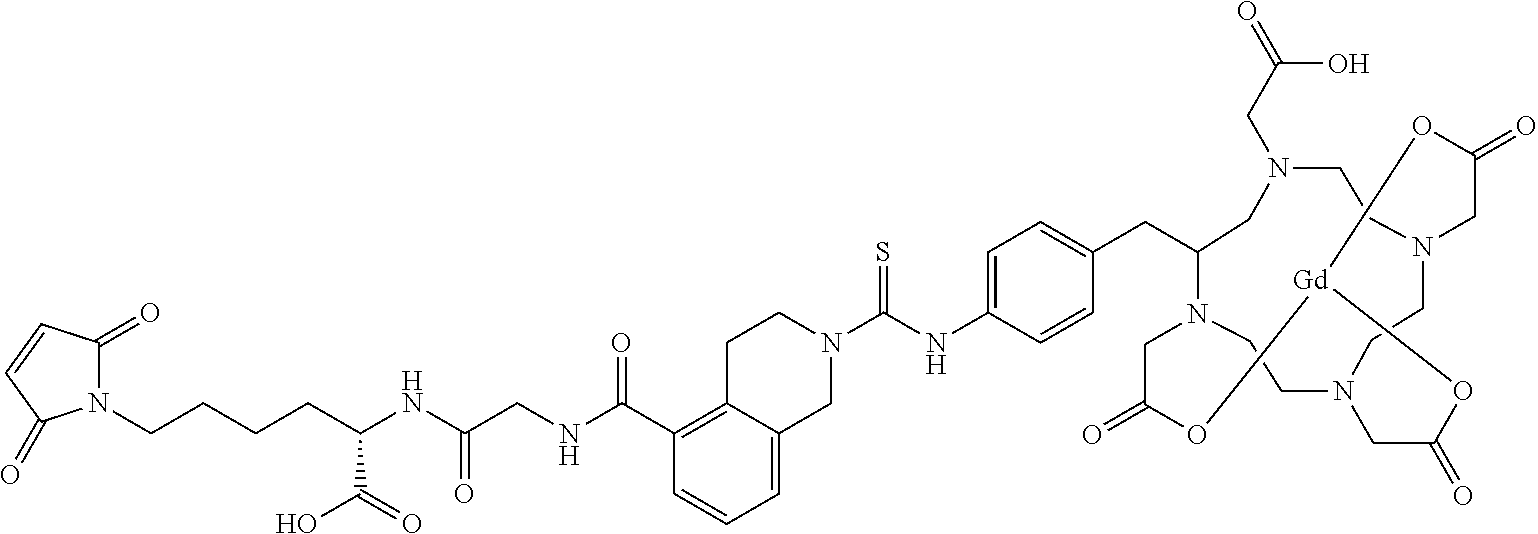

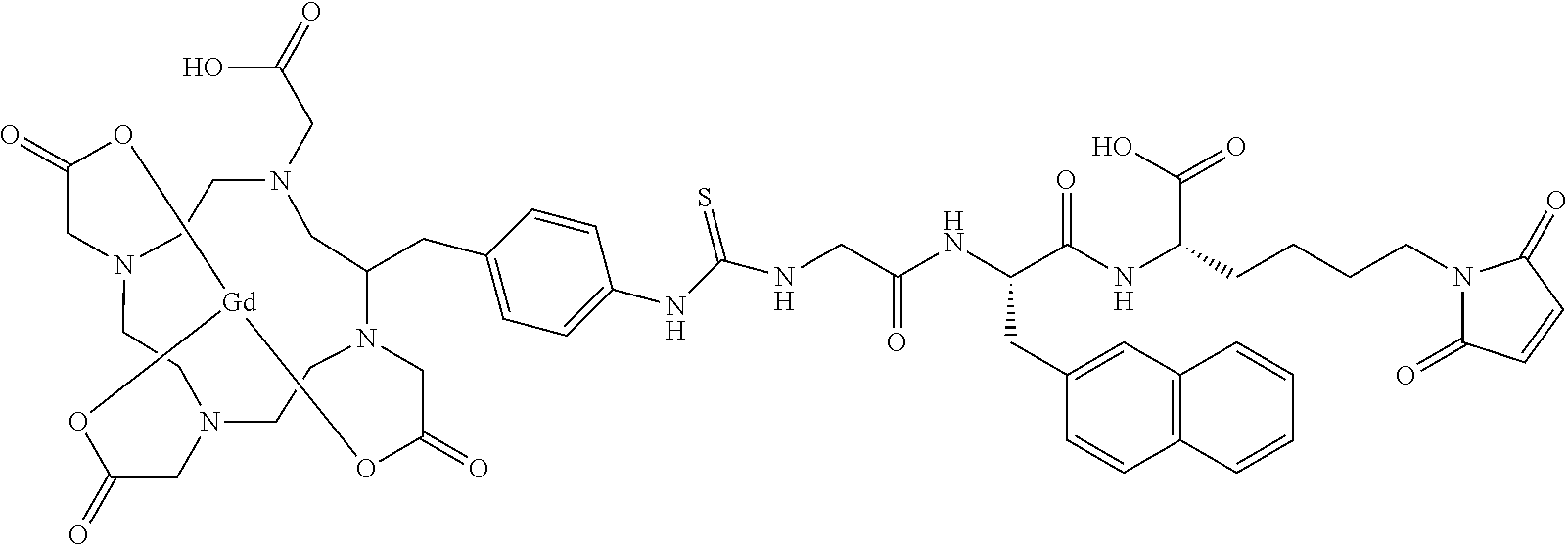
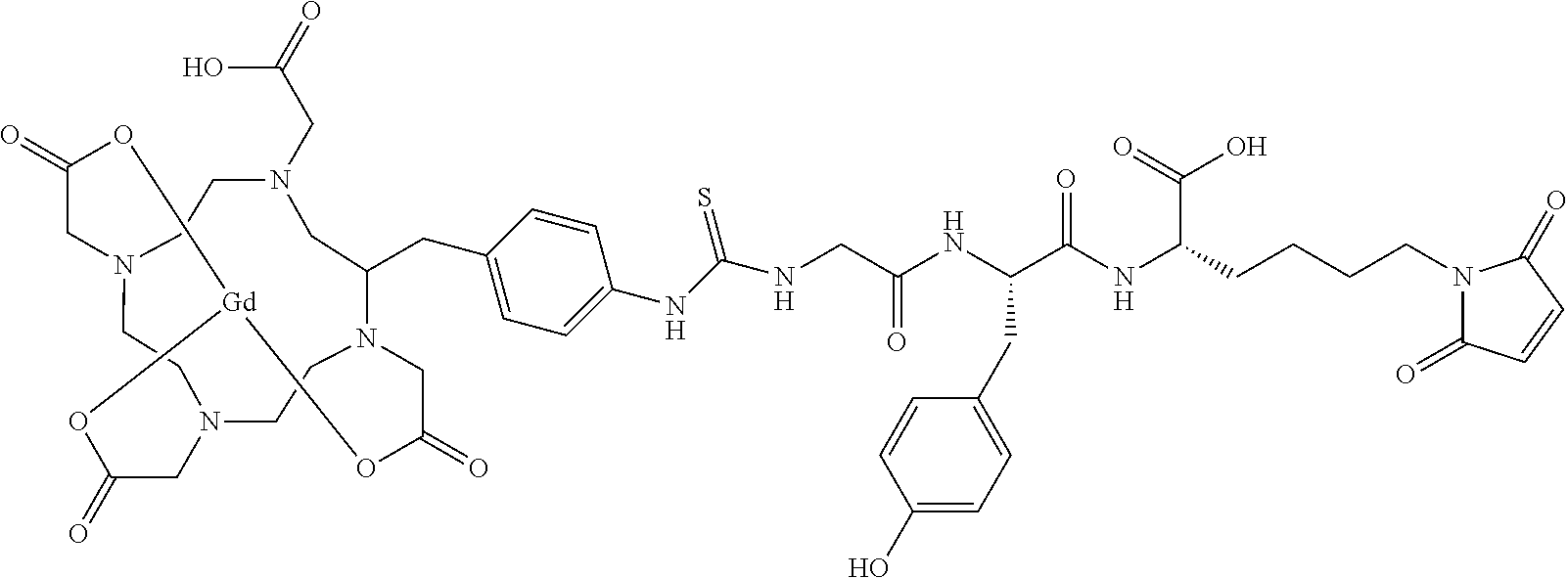
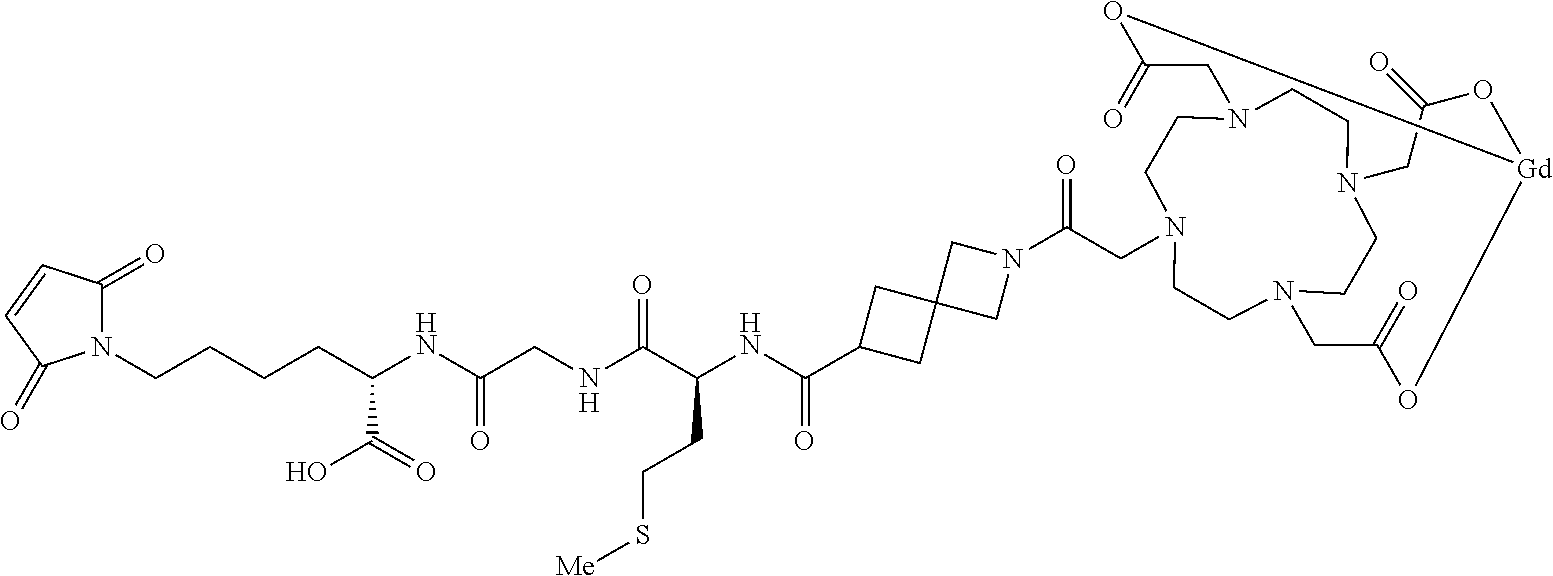



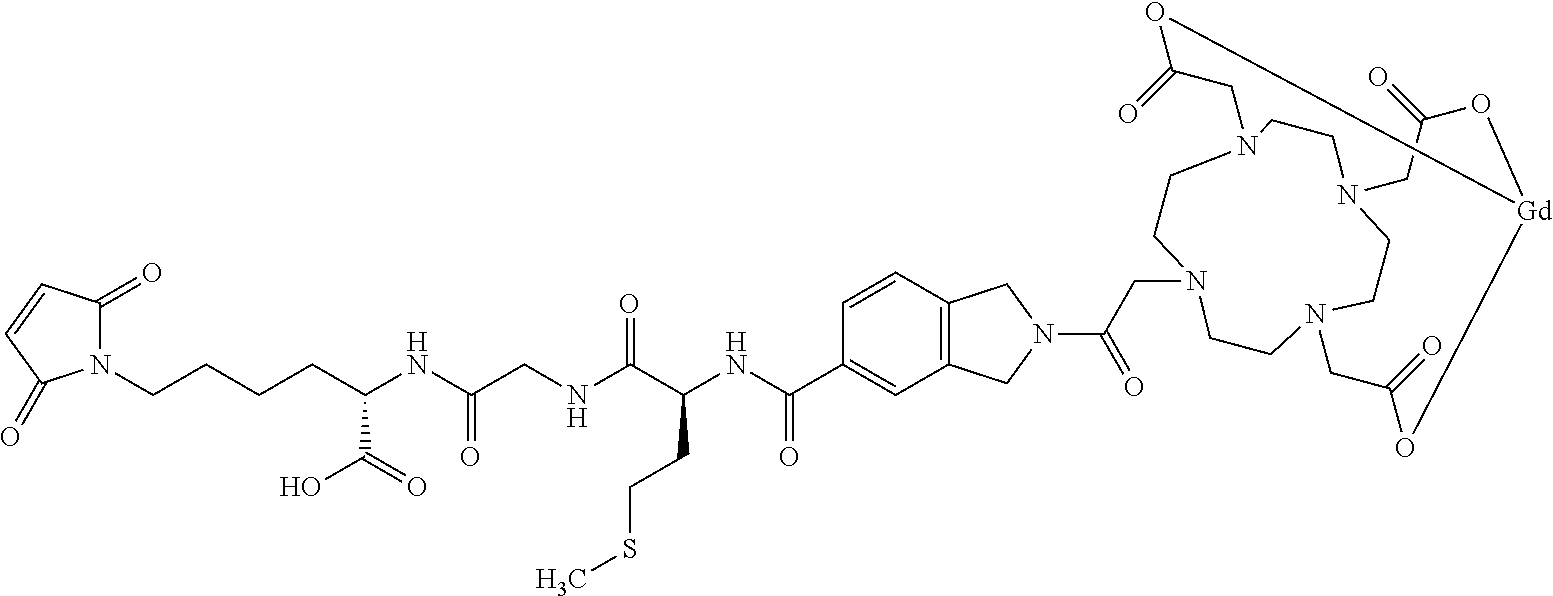






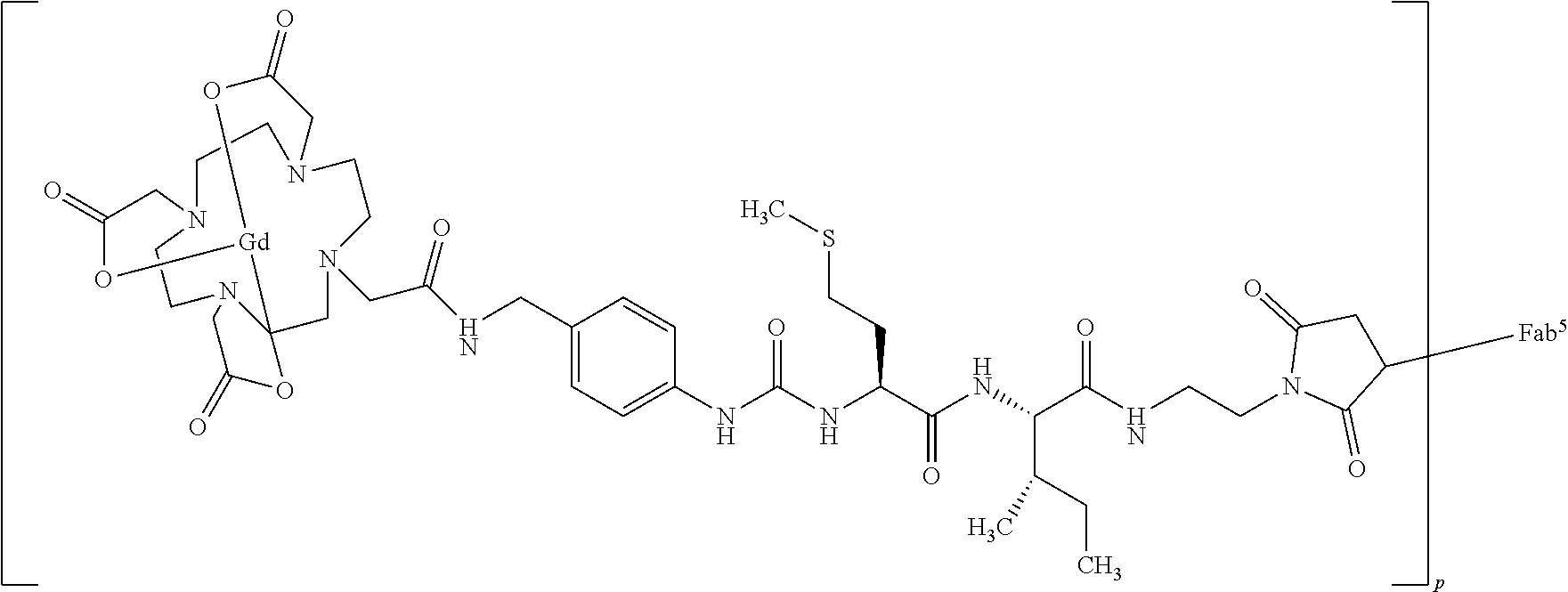











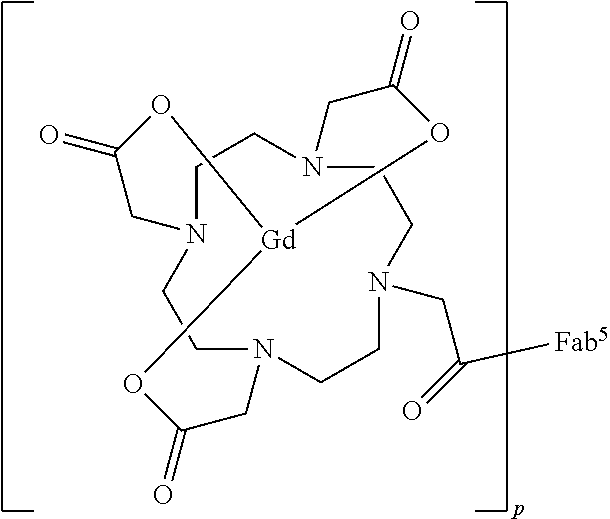




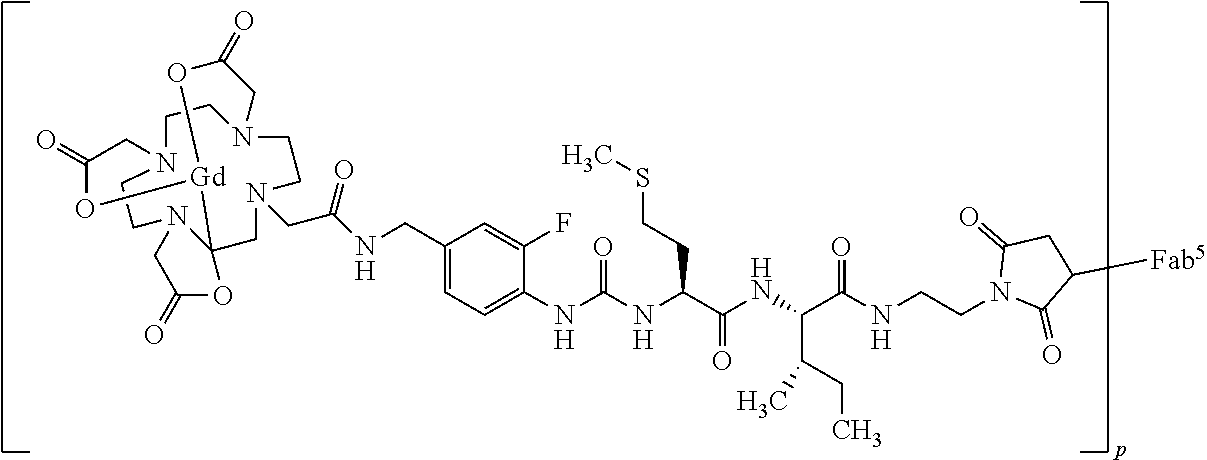

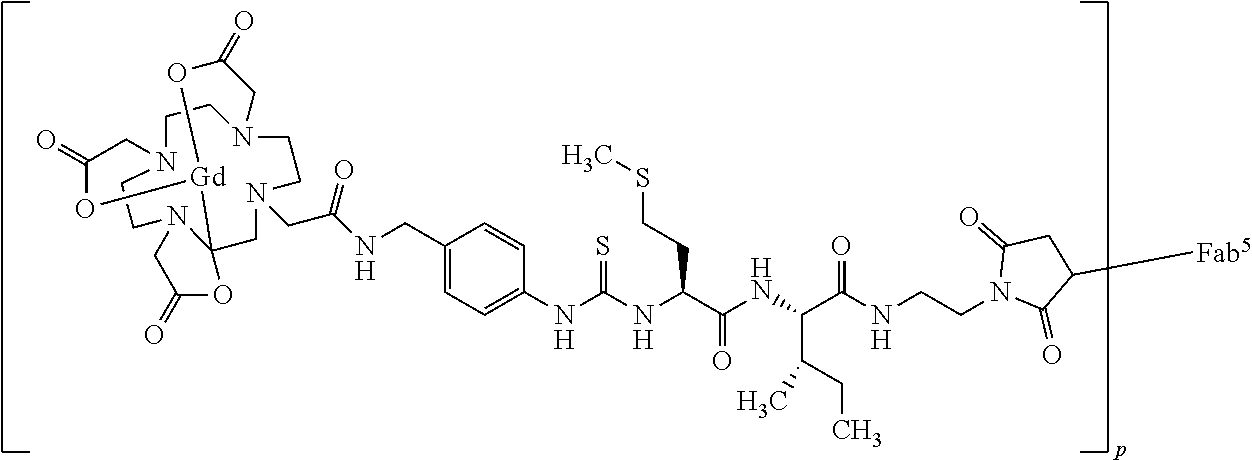




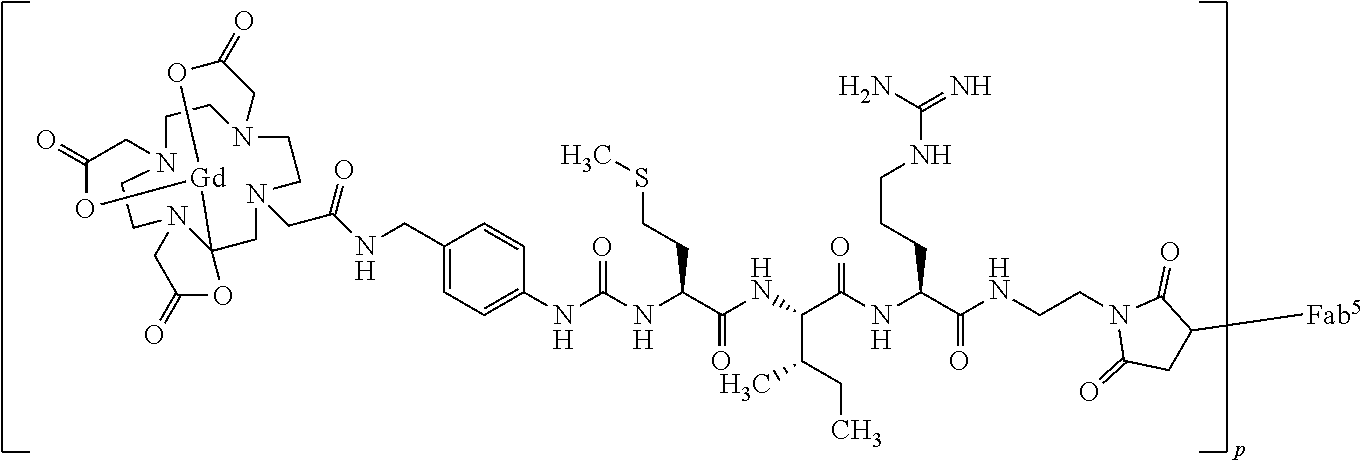








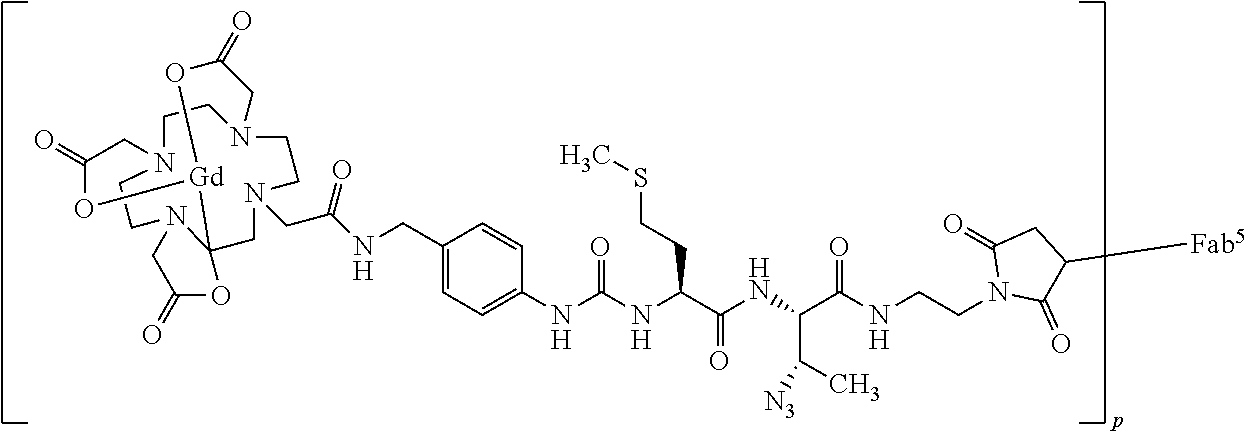





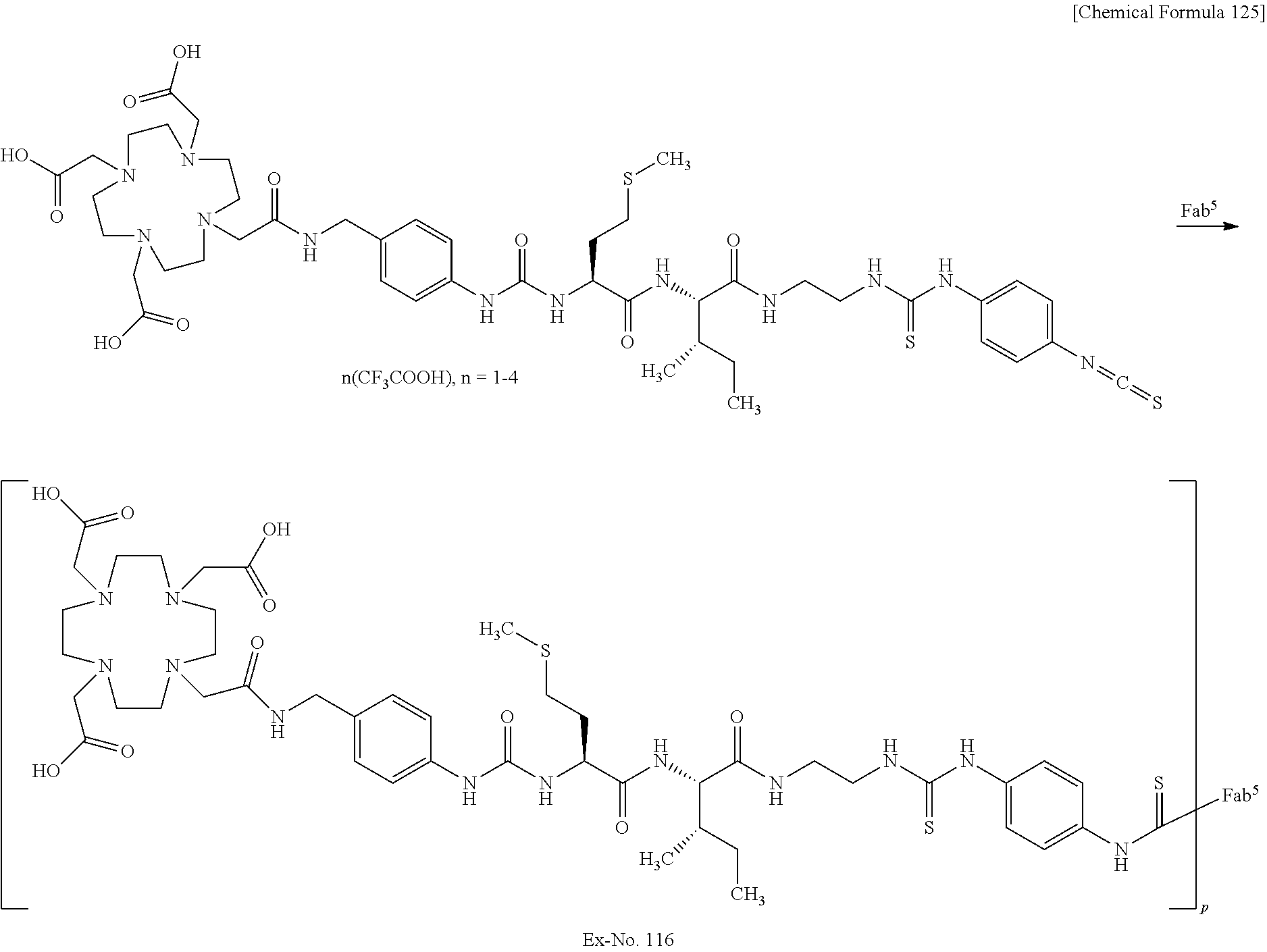




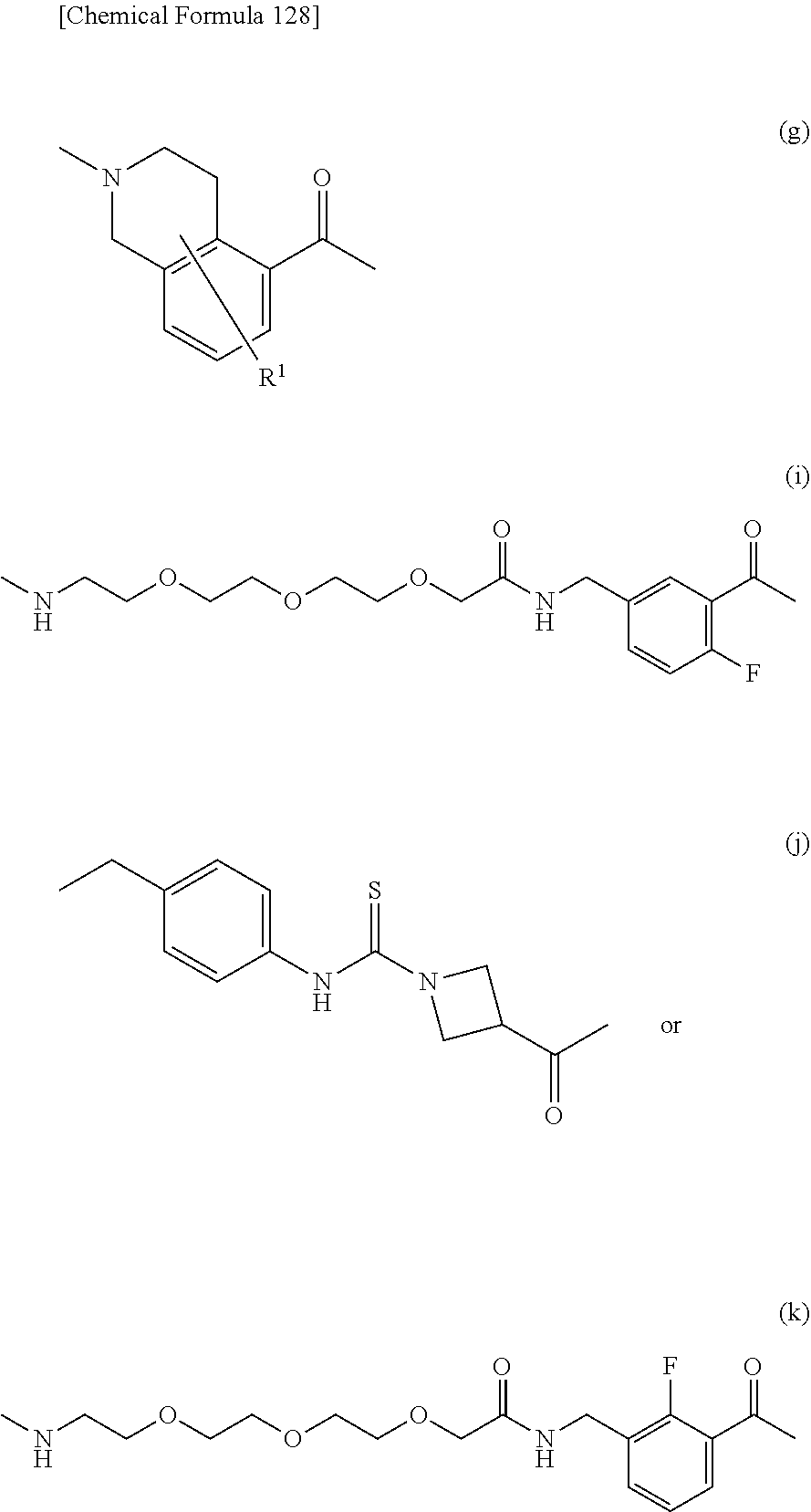



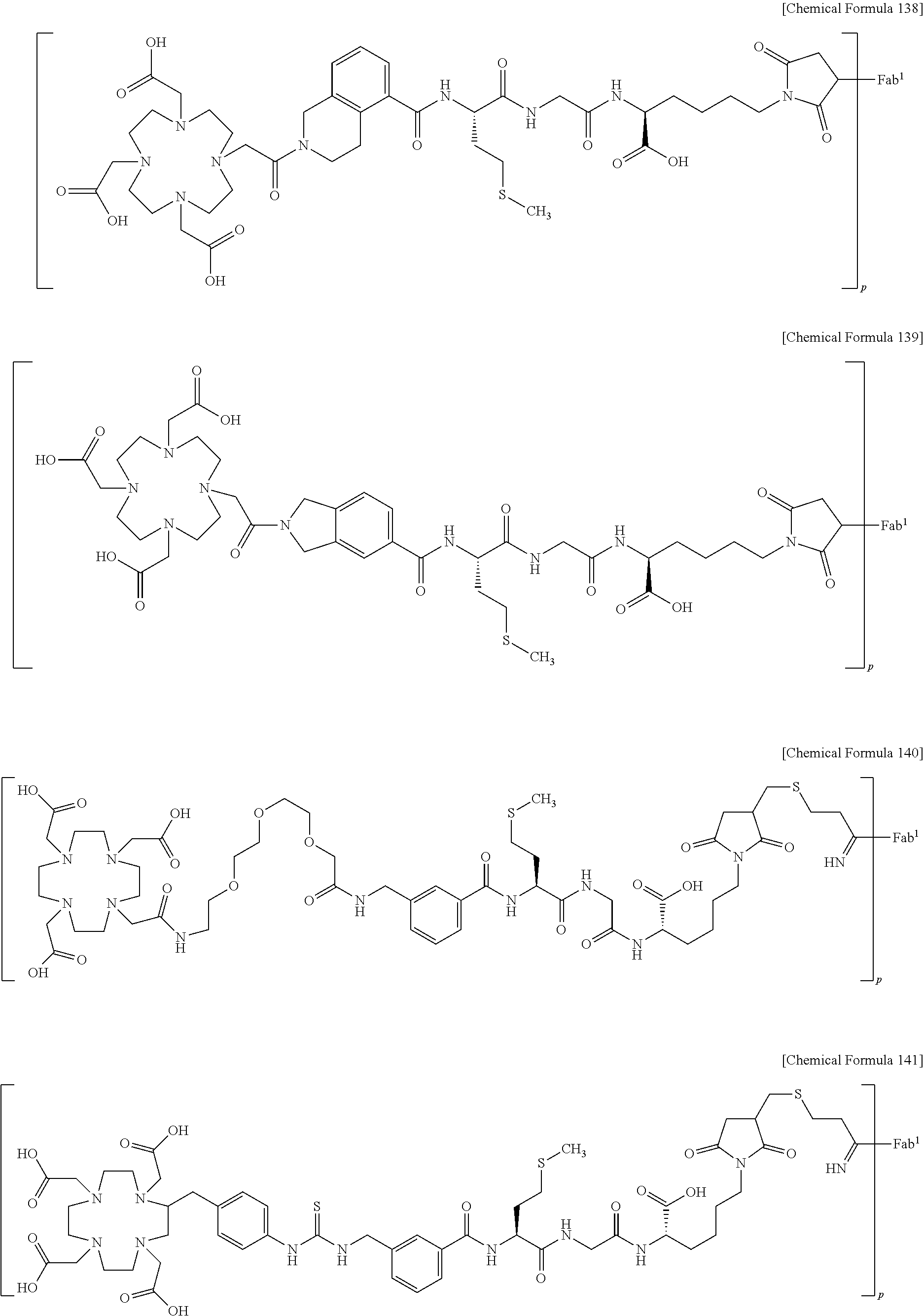

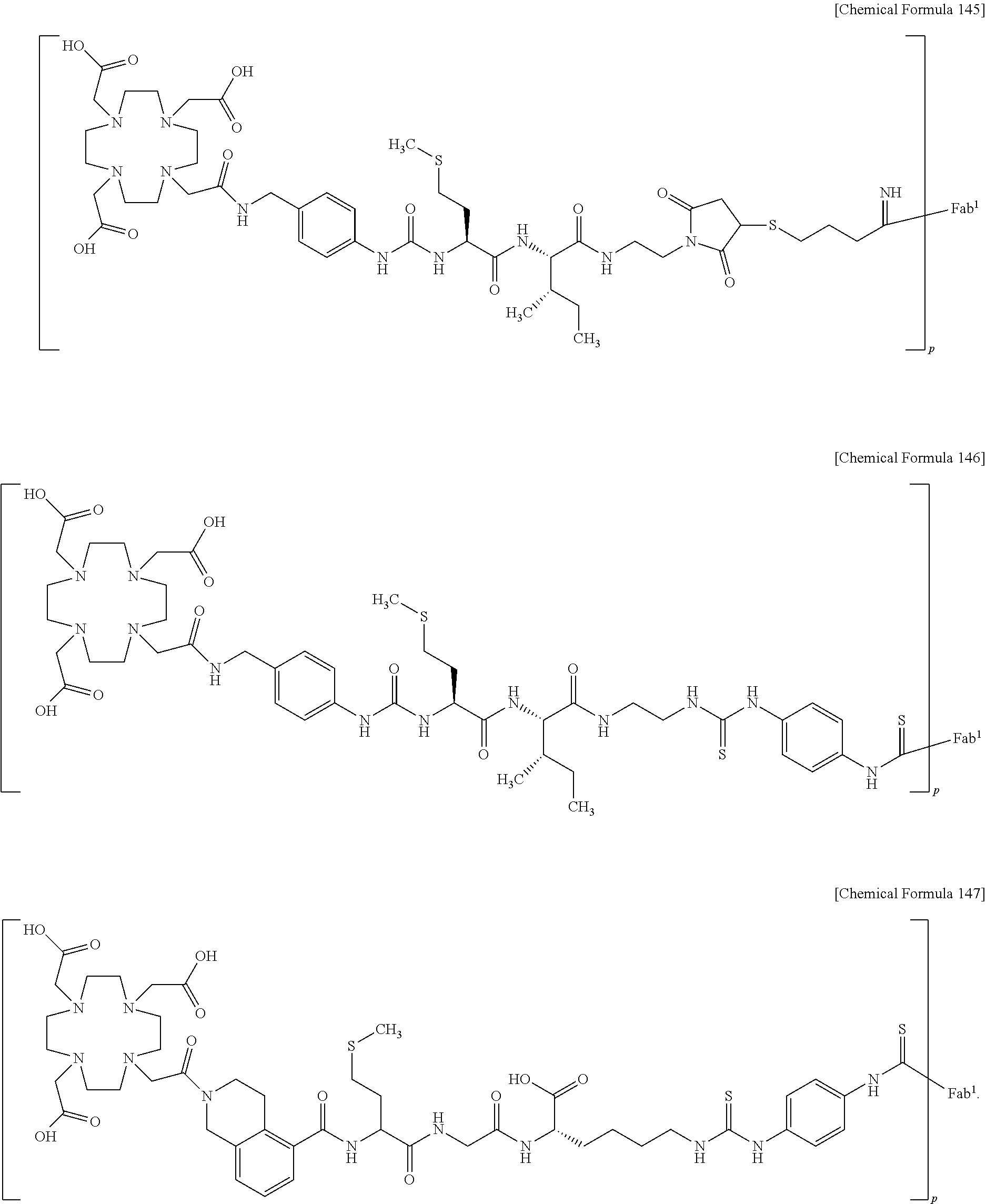

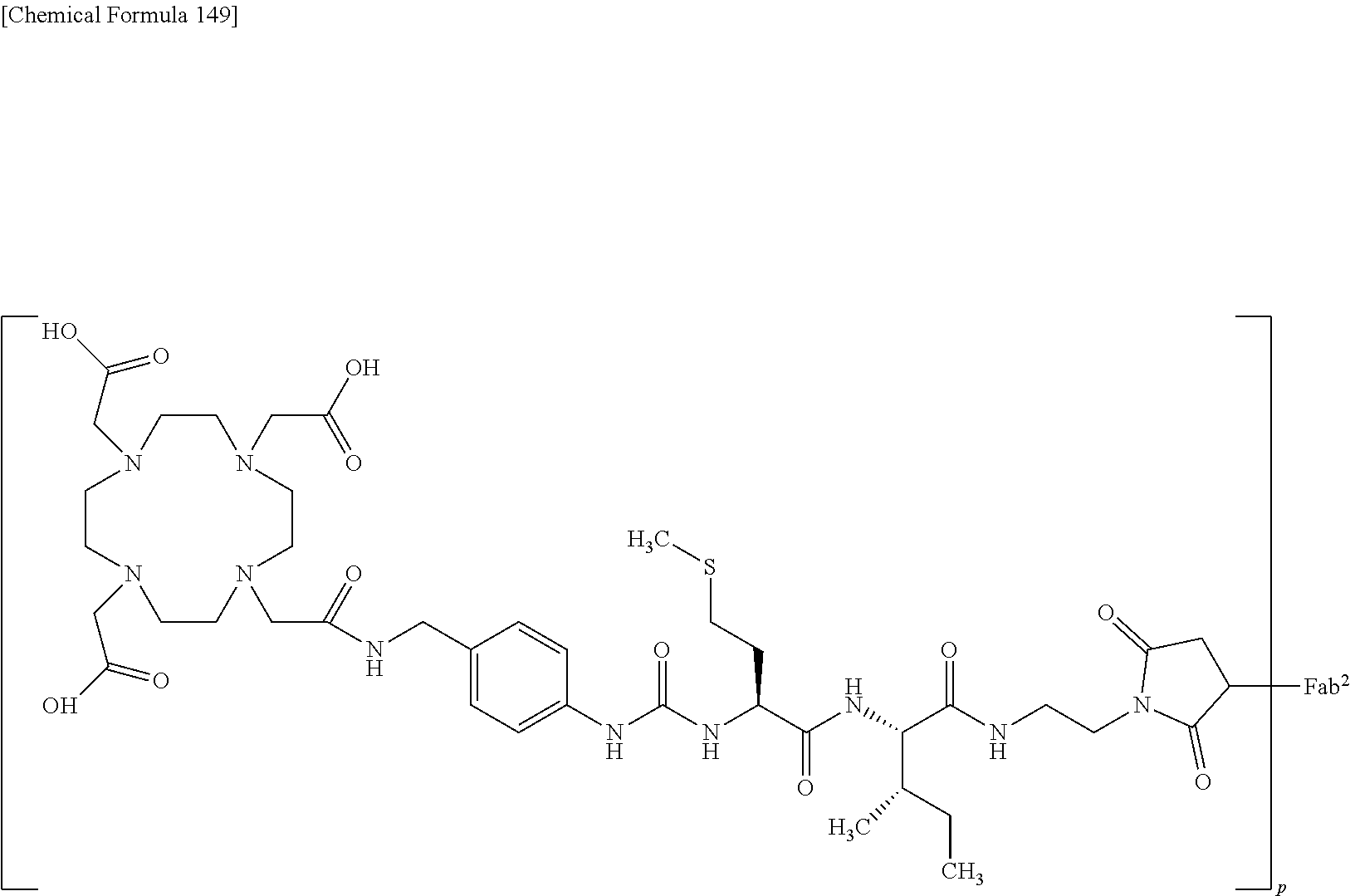

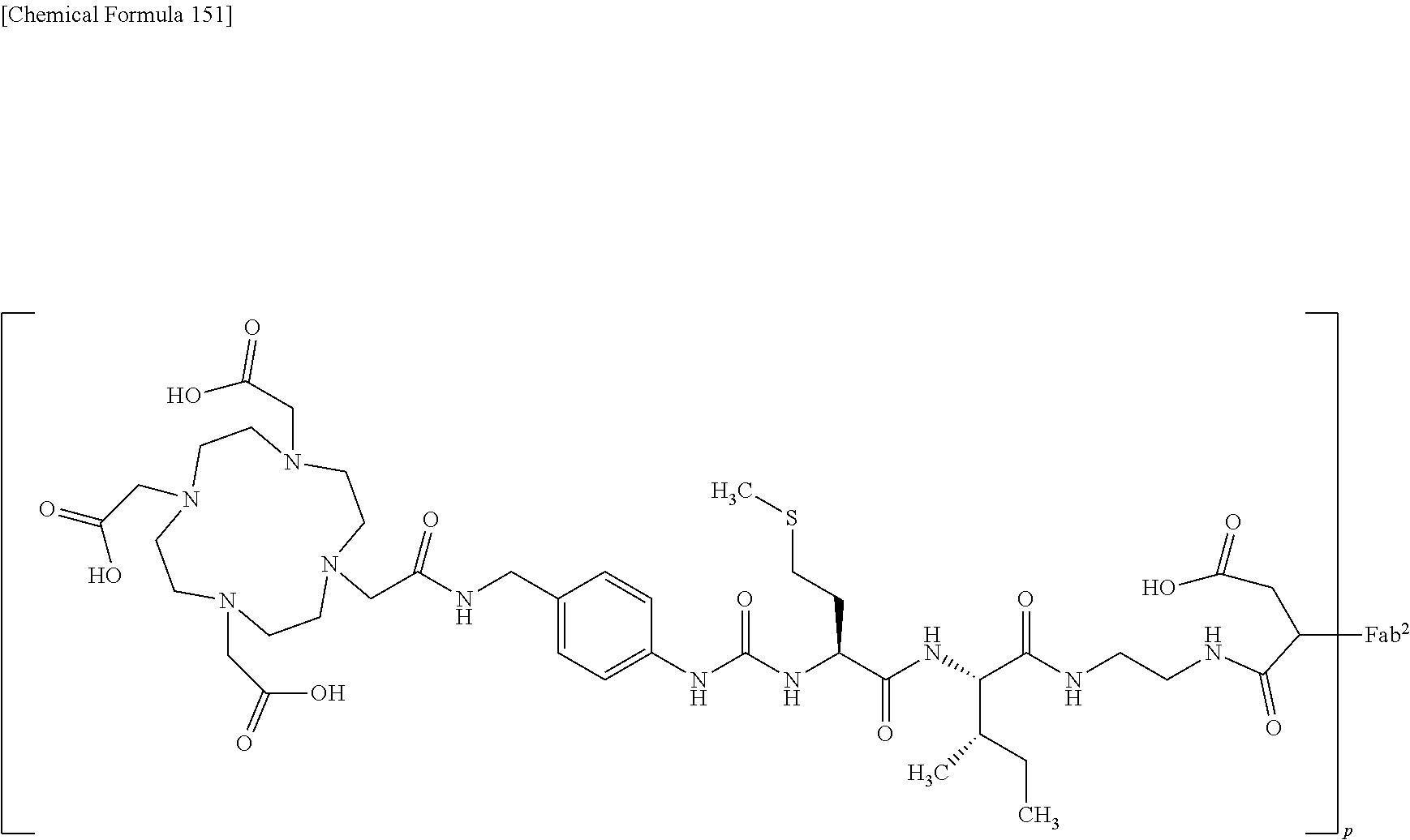
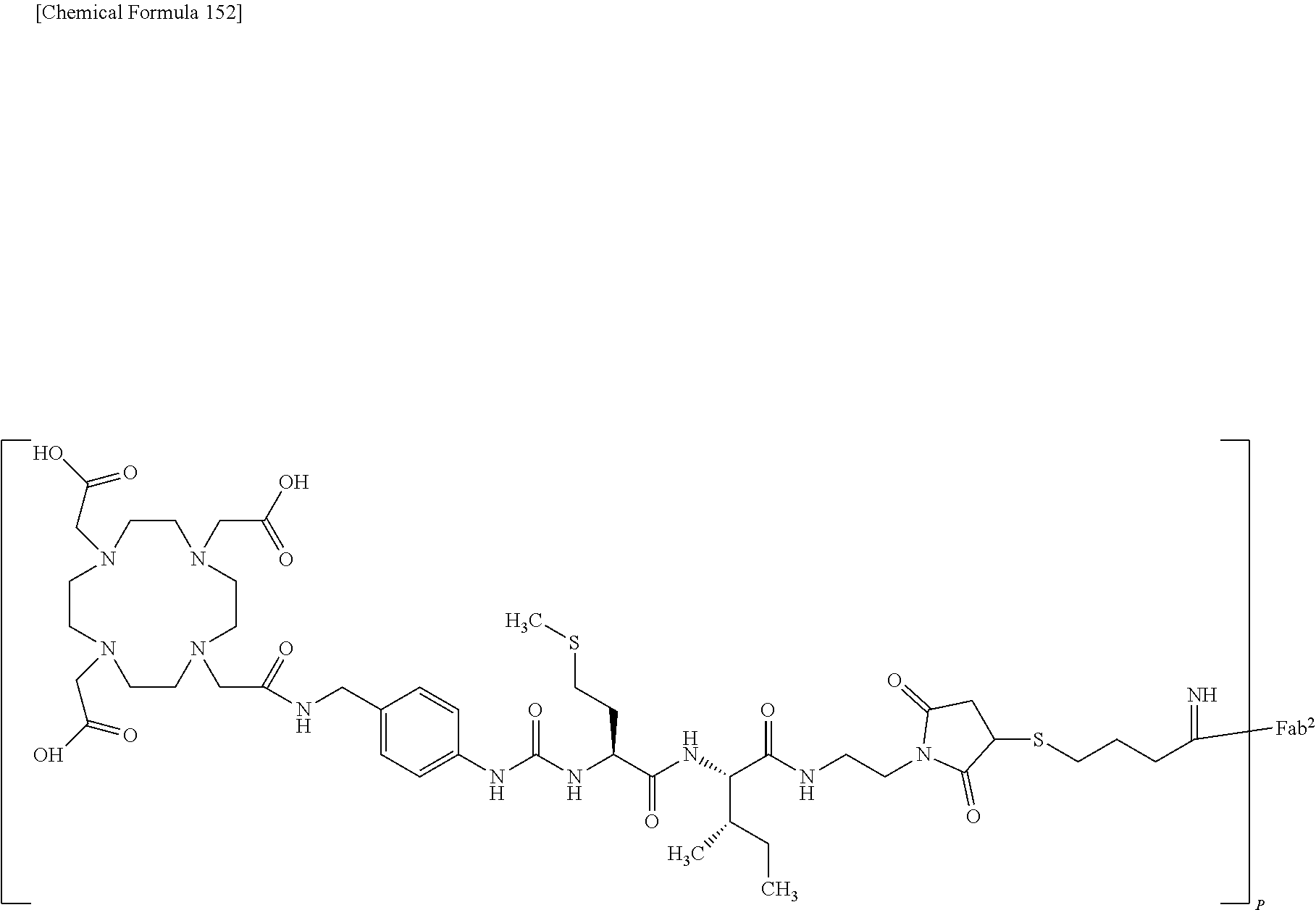
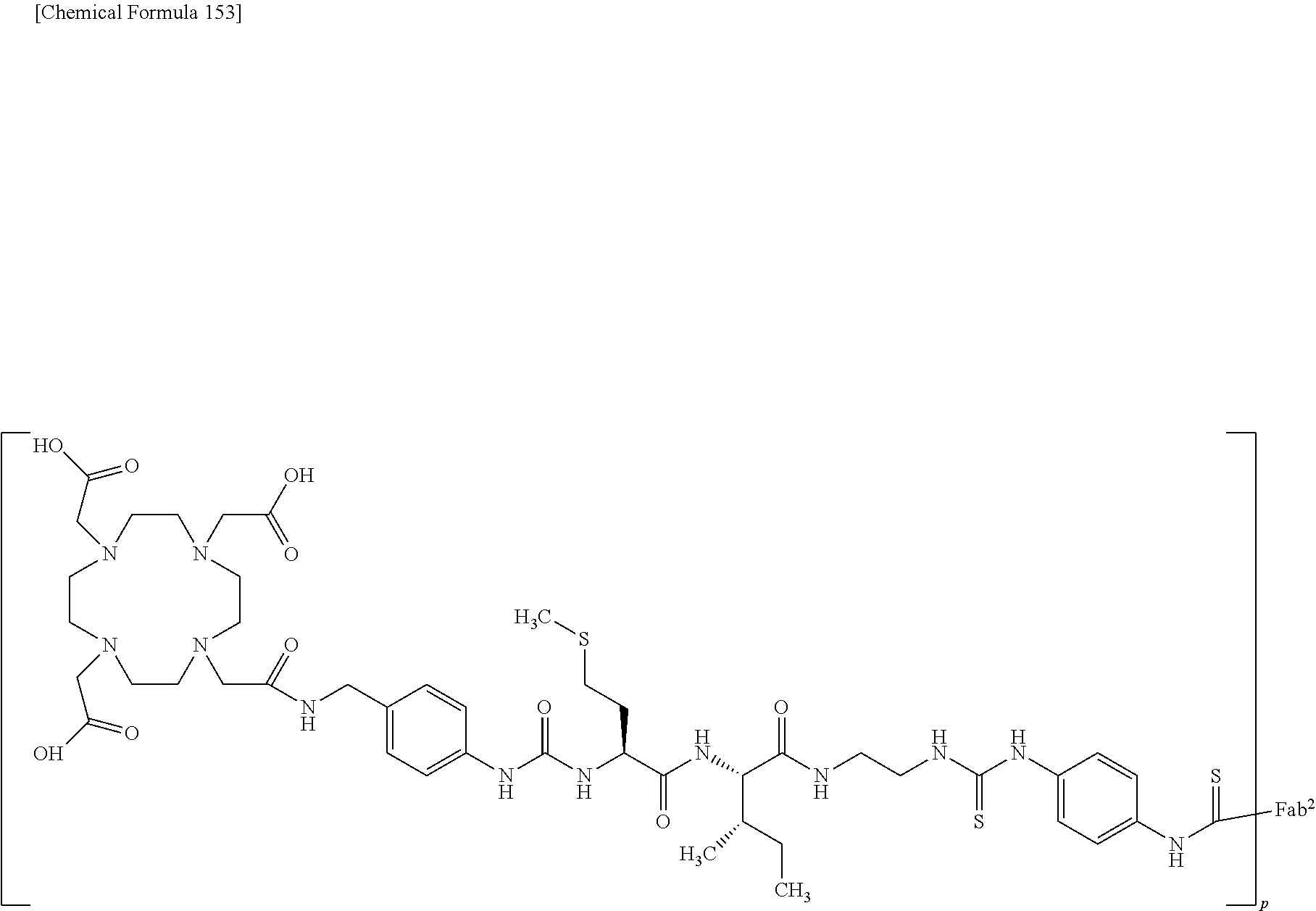


D00001

D00002

D00003
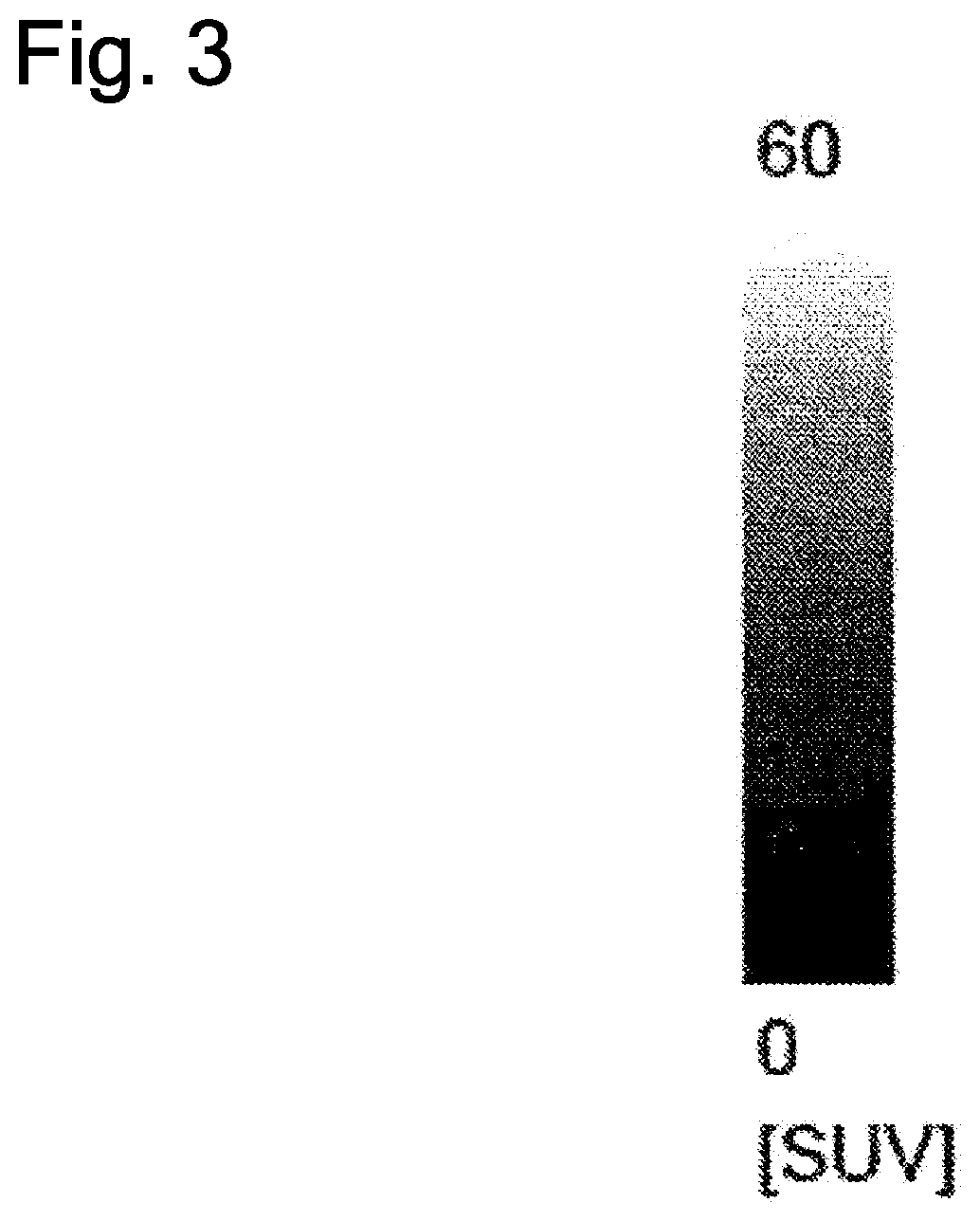
P00001

P00002

S00001
XML
uspto.report is an independent third-party trademark research tool that is not affiliated, endorsed, or sponsored by the United States Patent and Trademark Office (USPTO) or any other governmental organization. The information provided by uspto.report is based on publicly available data at the time of writing and is intended for informational purposes only.
While we strive to provide accurate and up-to-date information, we do not guarantee the accuracy, completeness, reliability, or suitability of the information displayed on this site. The use of this site is at your own risk. Any reliance you place on such information is therefore strictly at your own risk.
All official trademark data, including owner information, should be verified by visiting the official USPTO website at www.uspto.gov. This site is not intended to replace professional legal advice and should not be used as a substitute for consulting with a legal professional who is knowledgeable about trademark law.